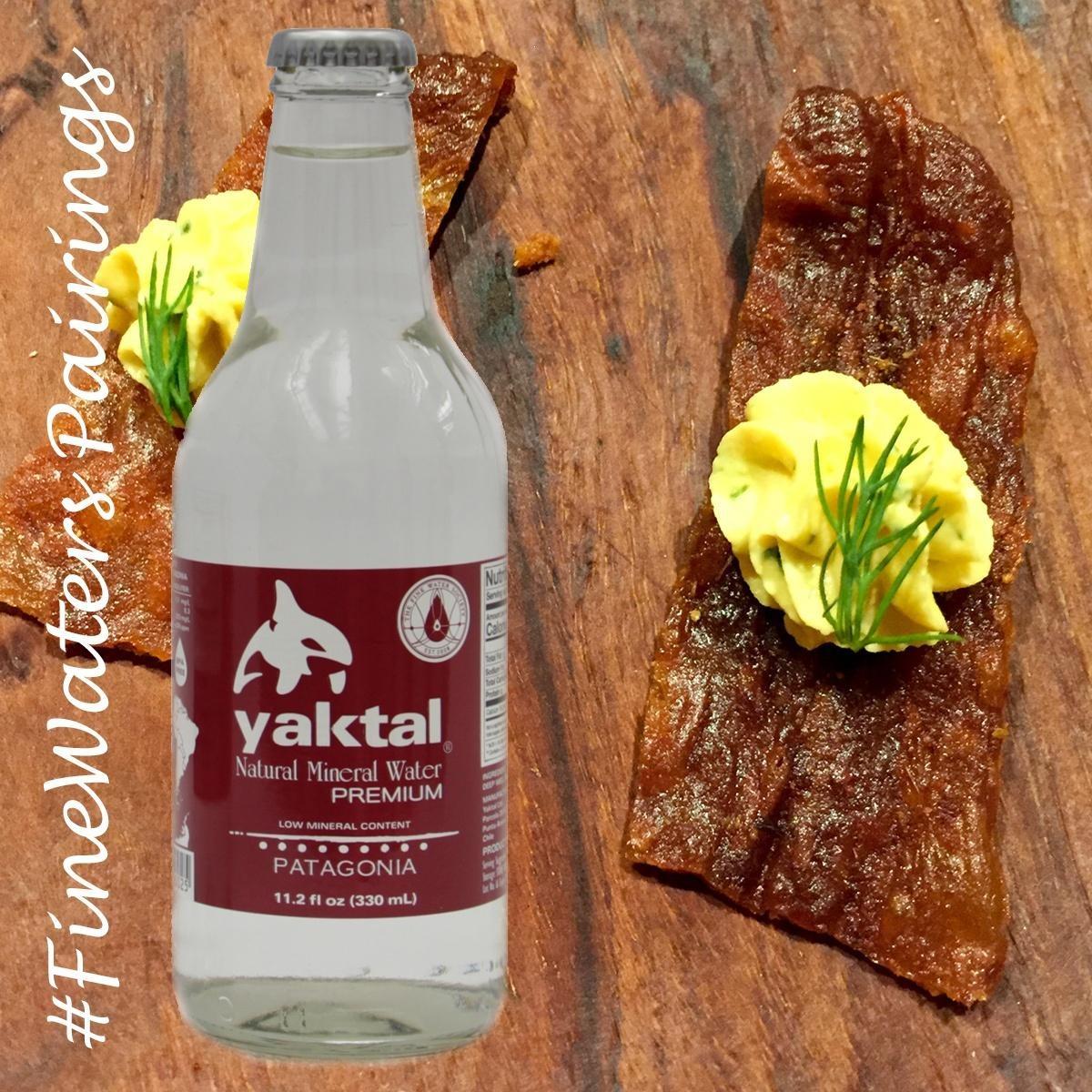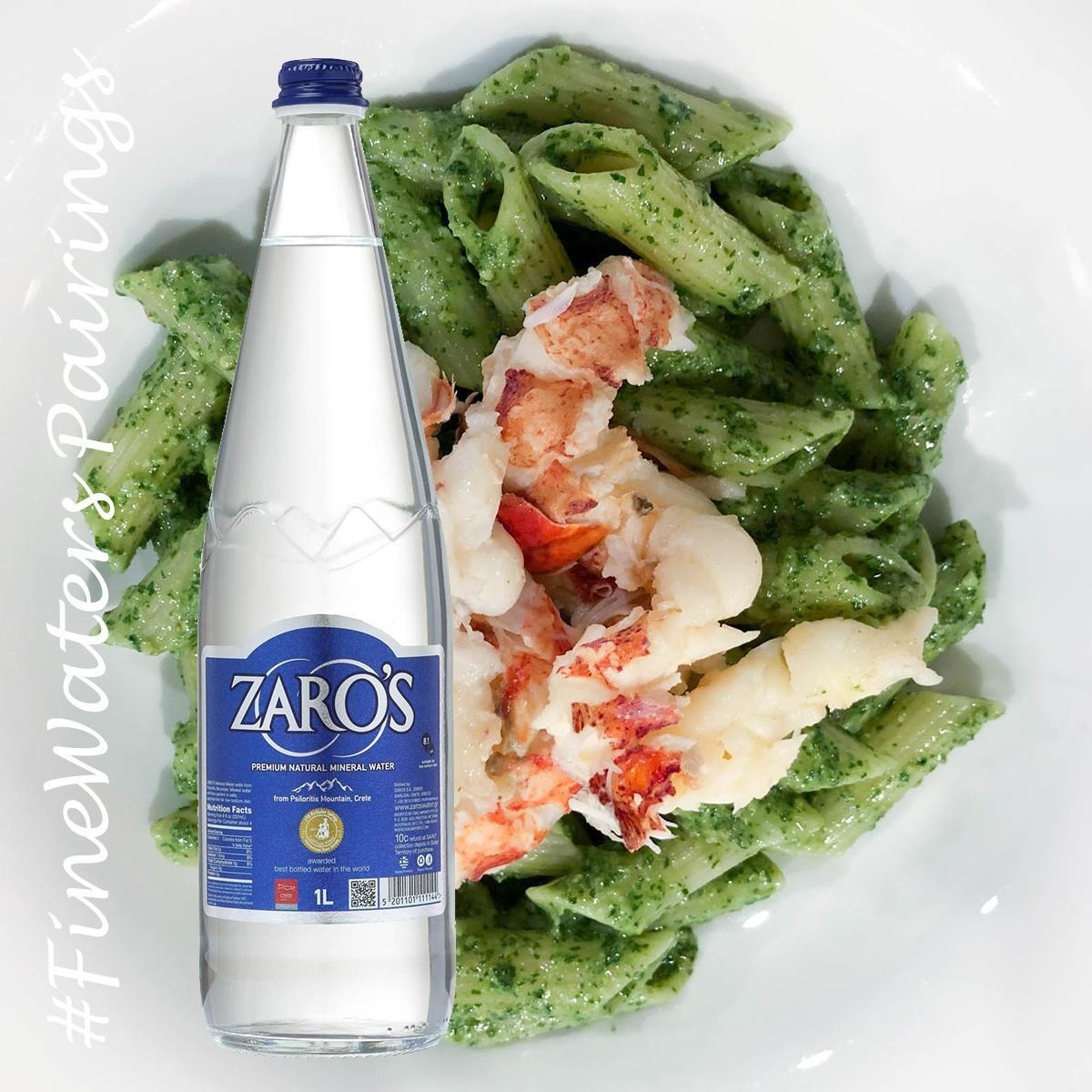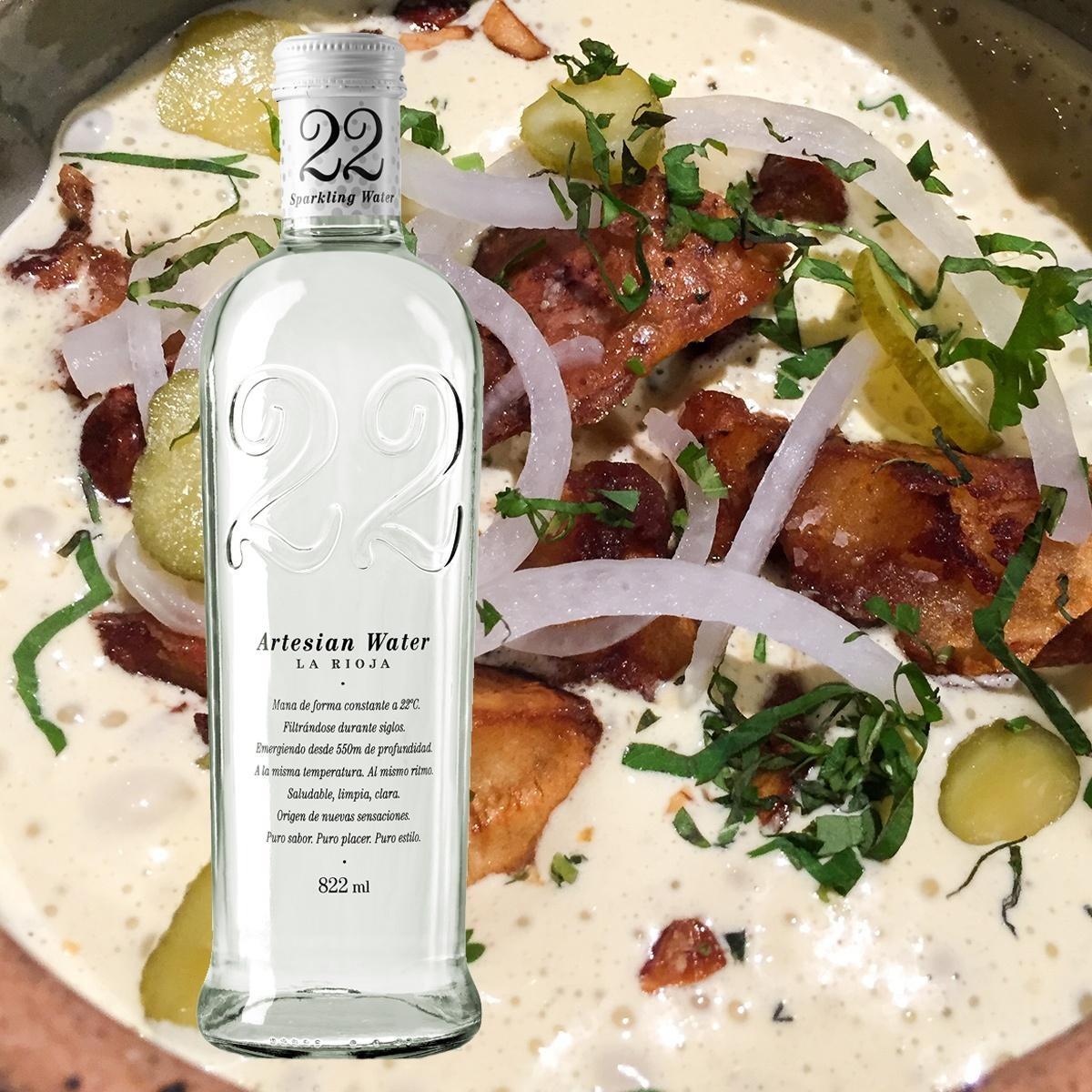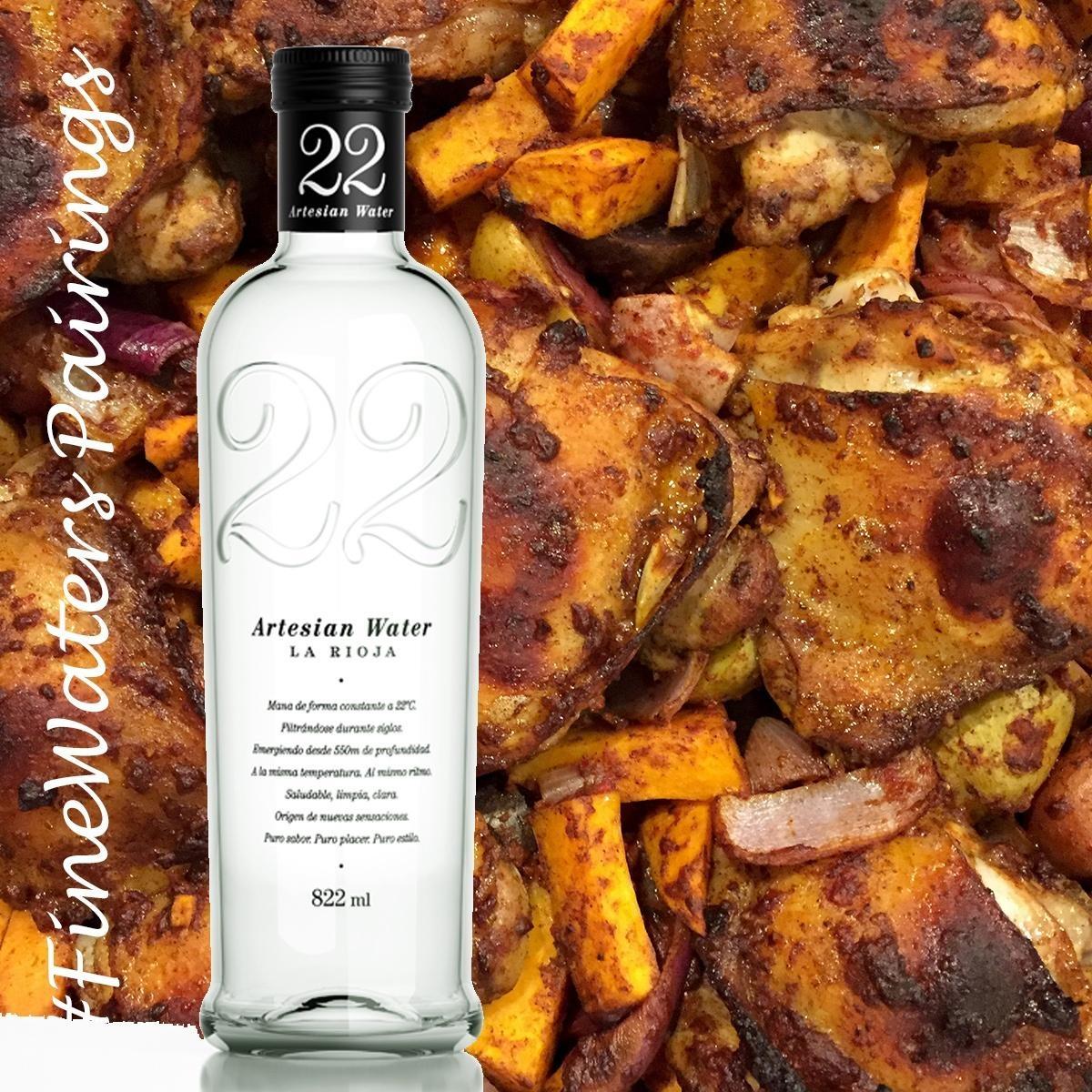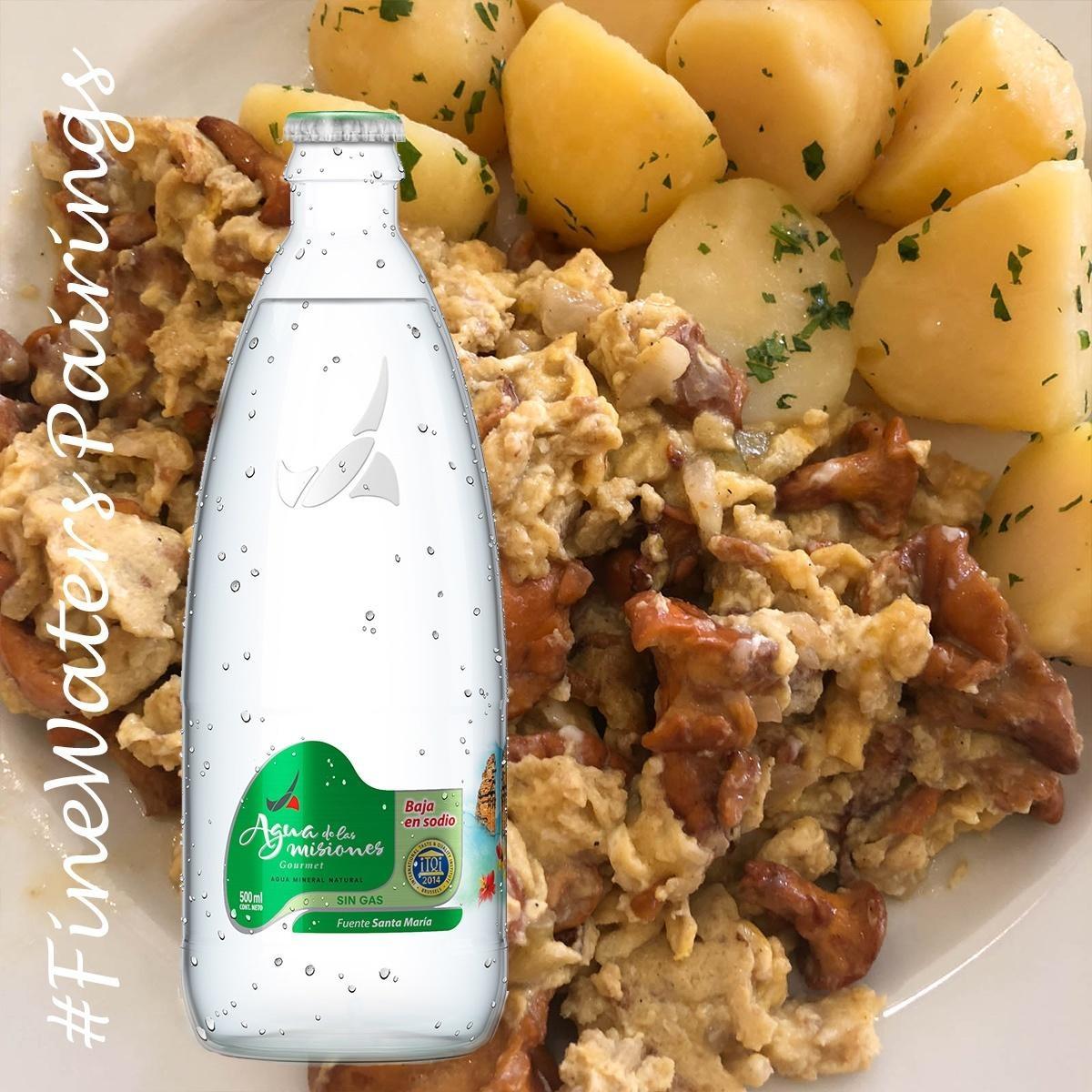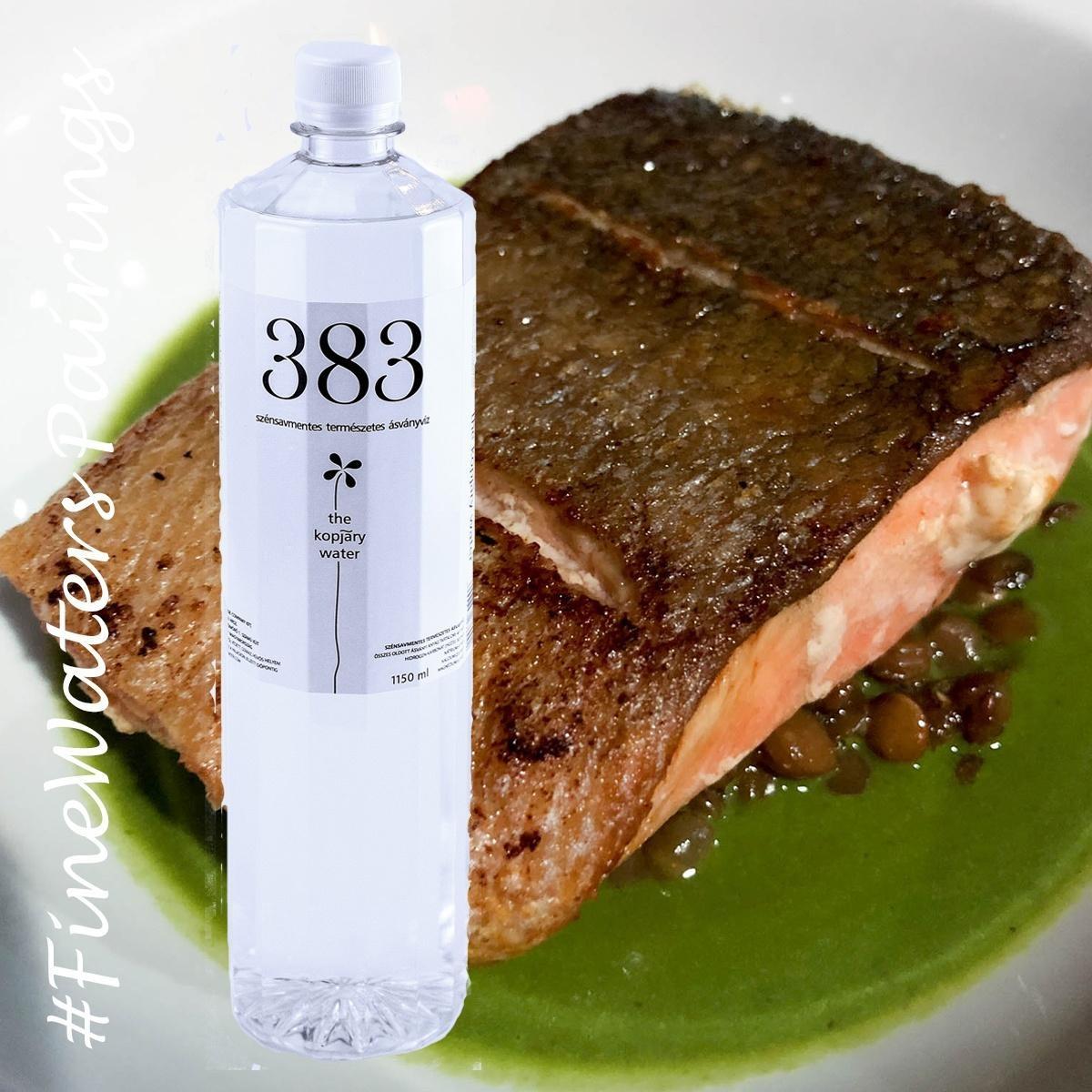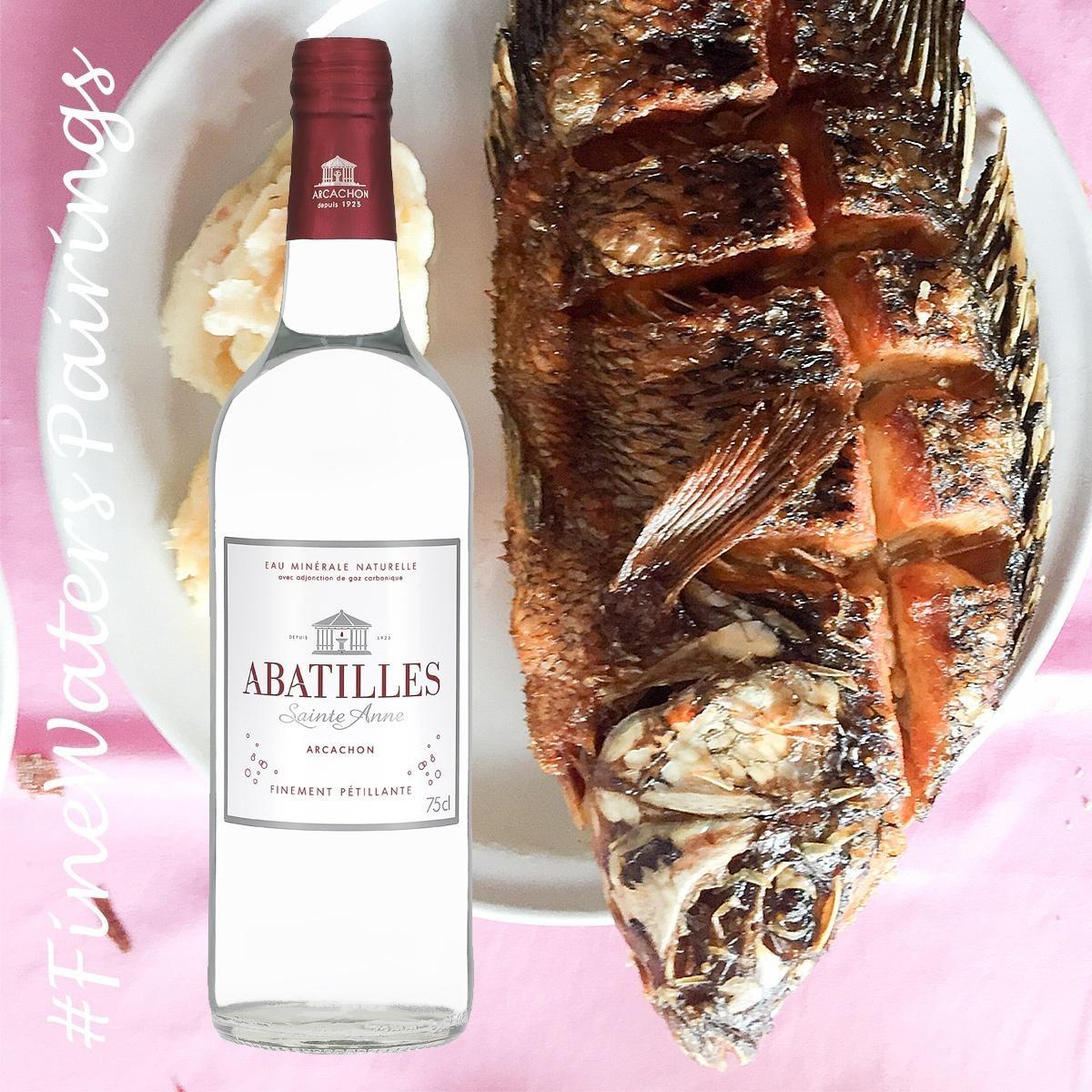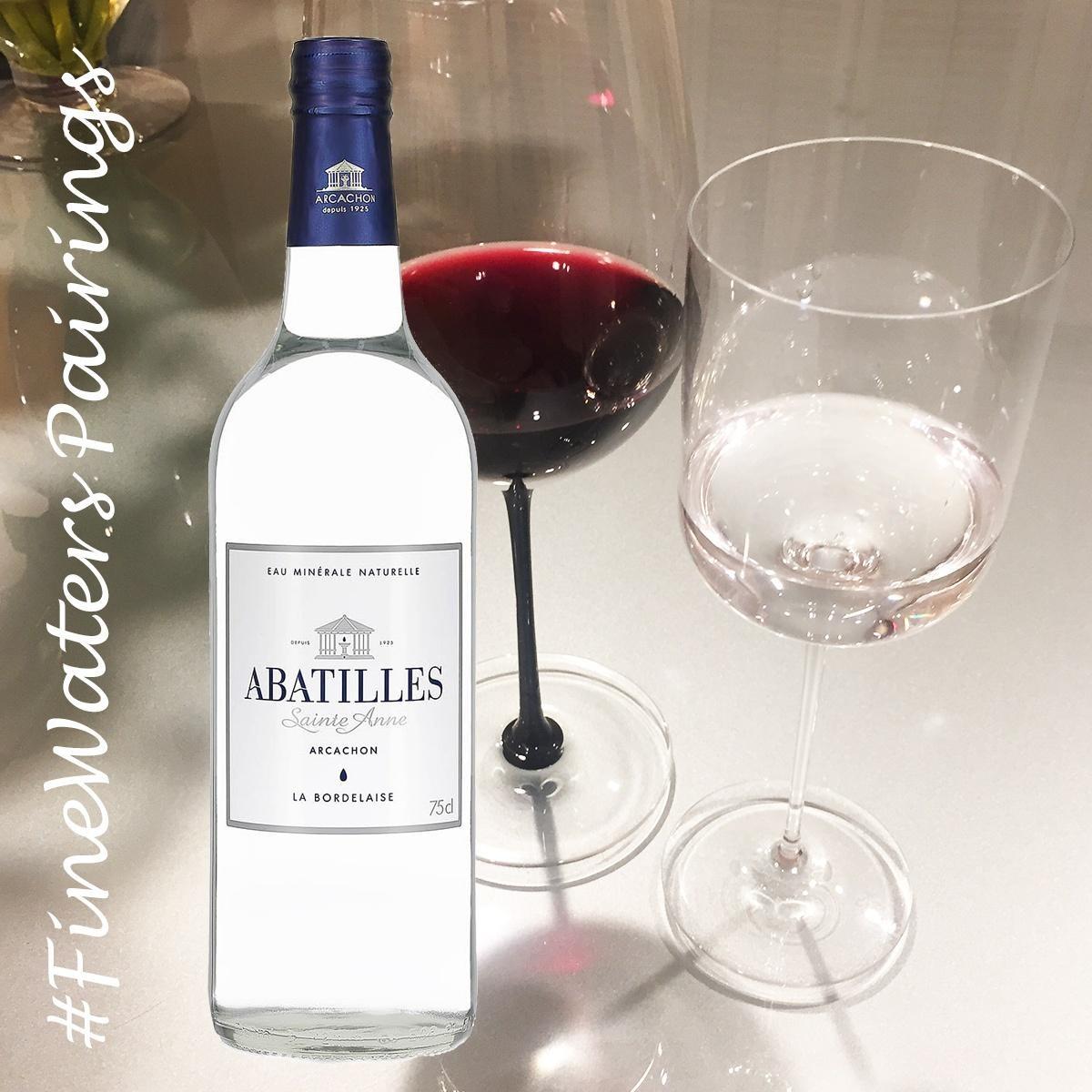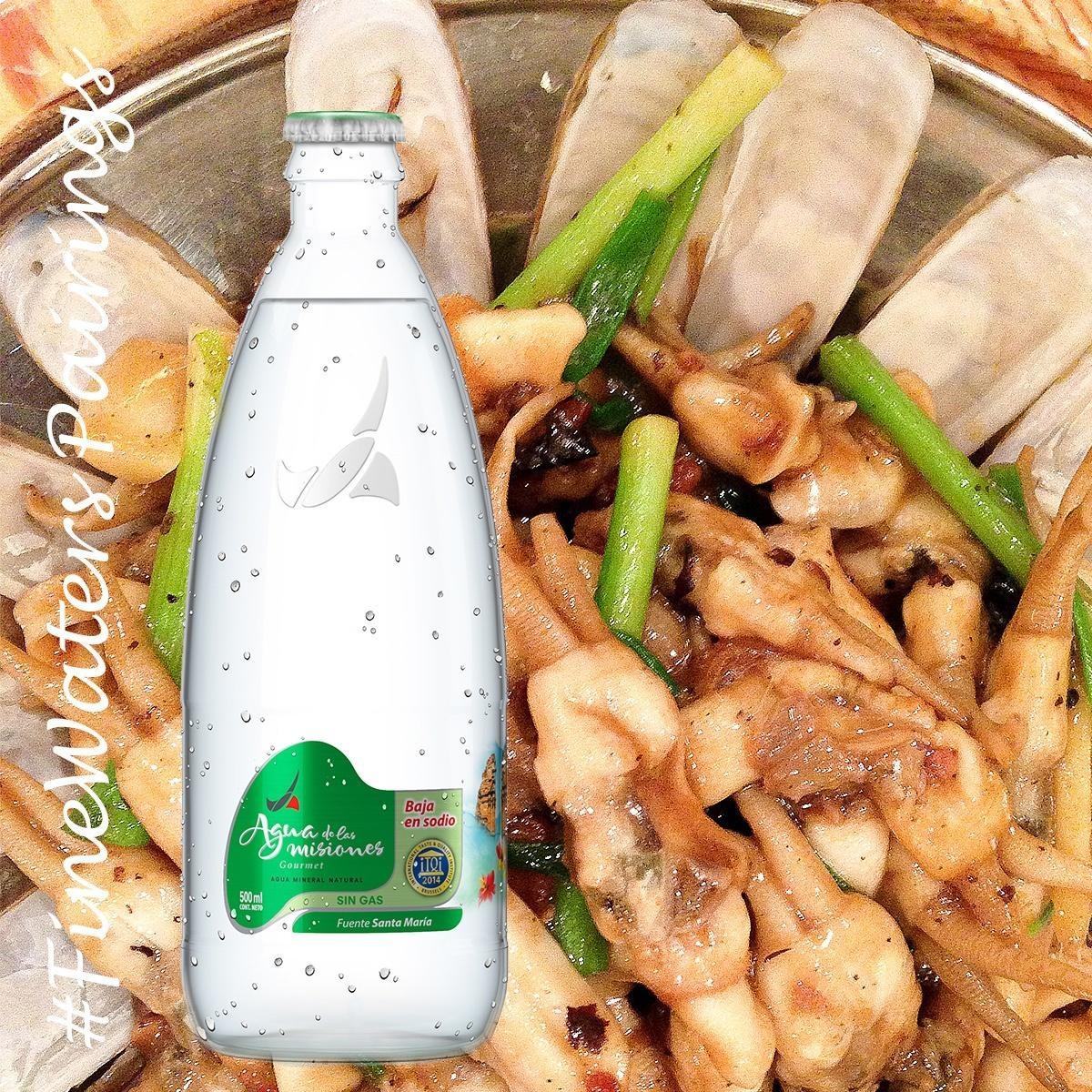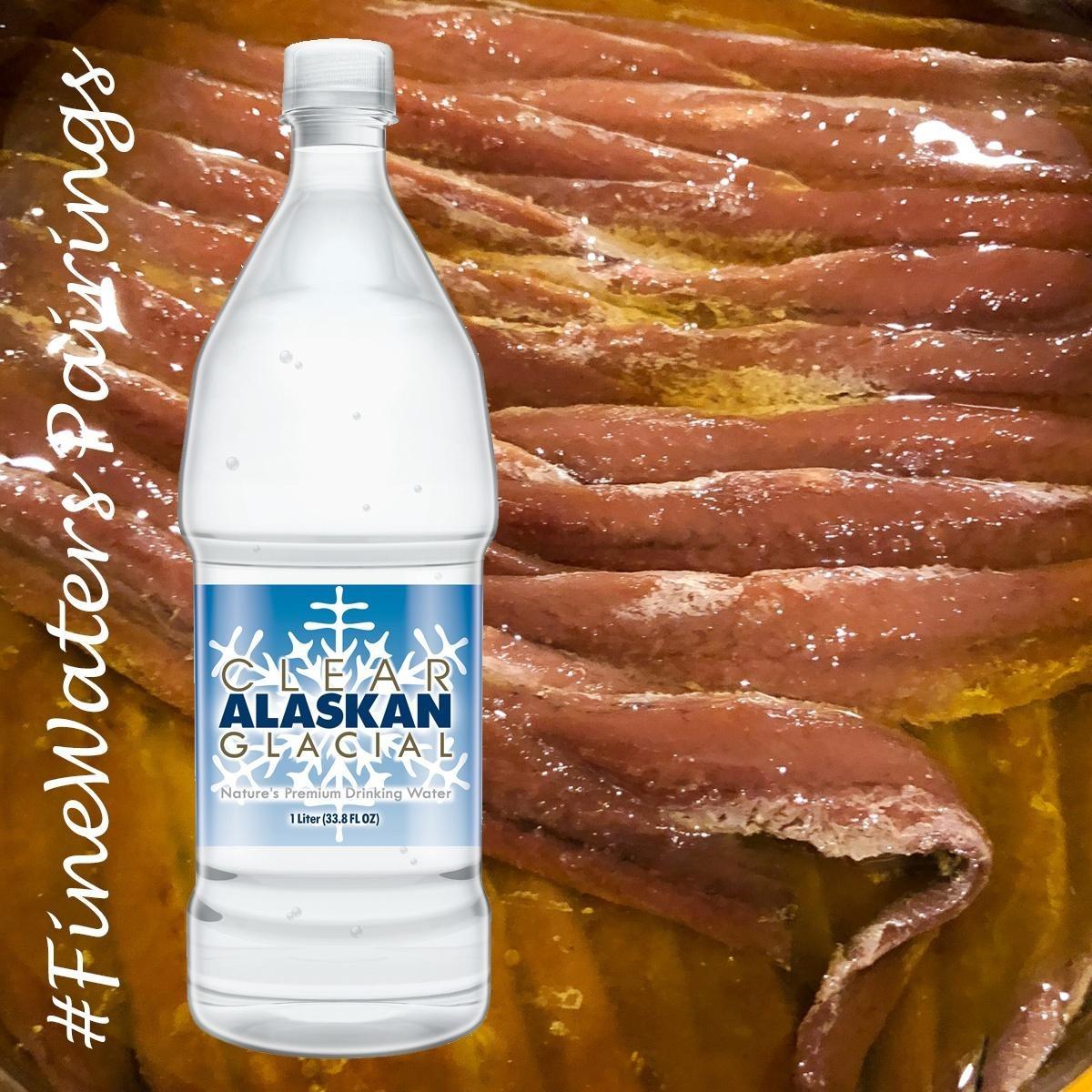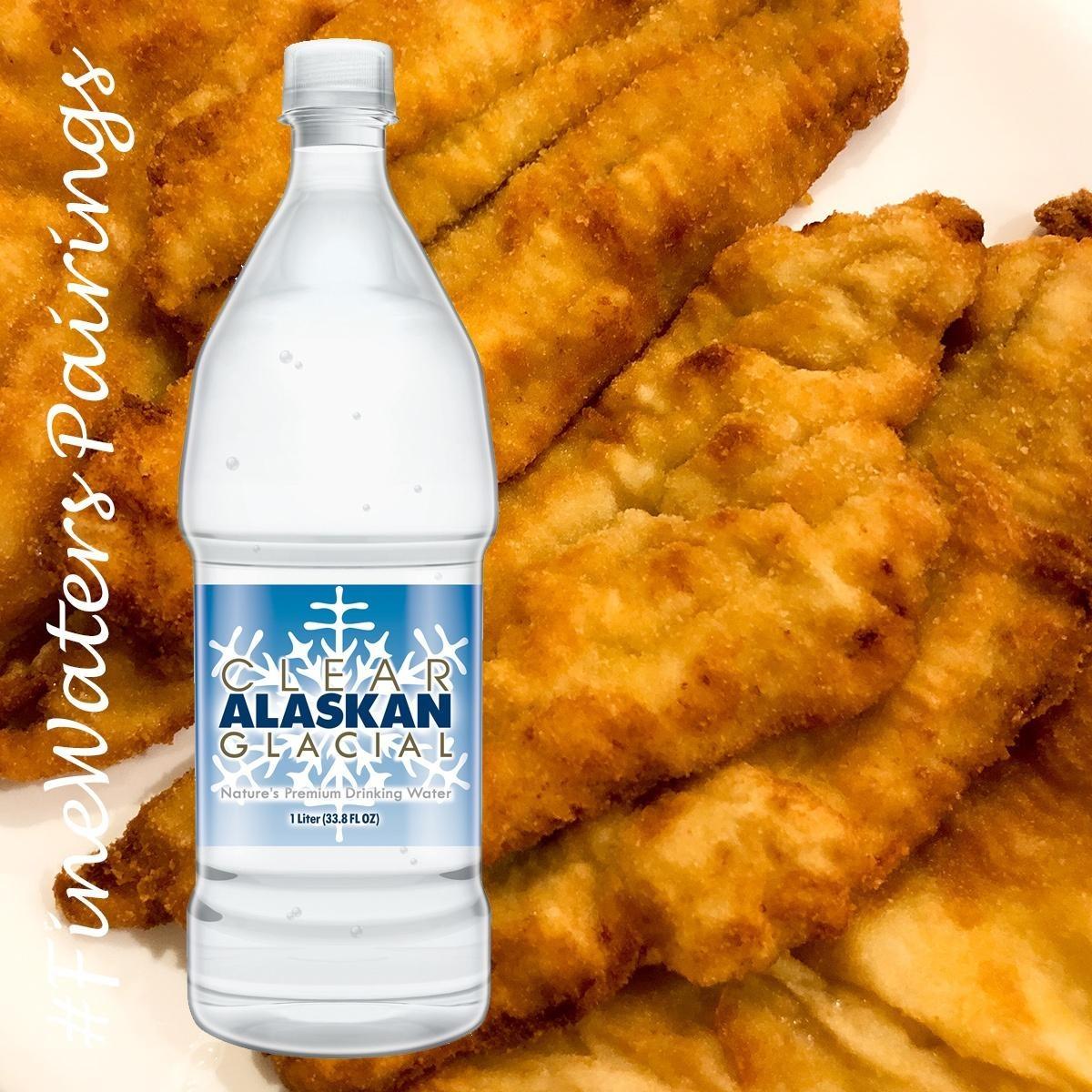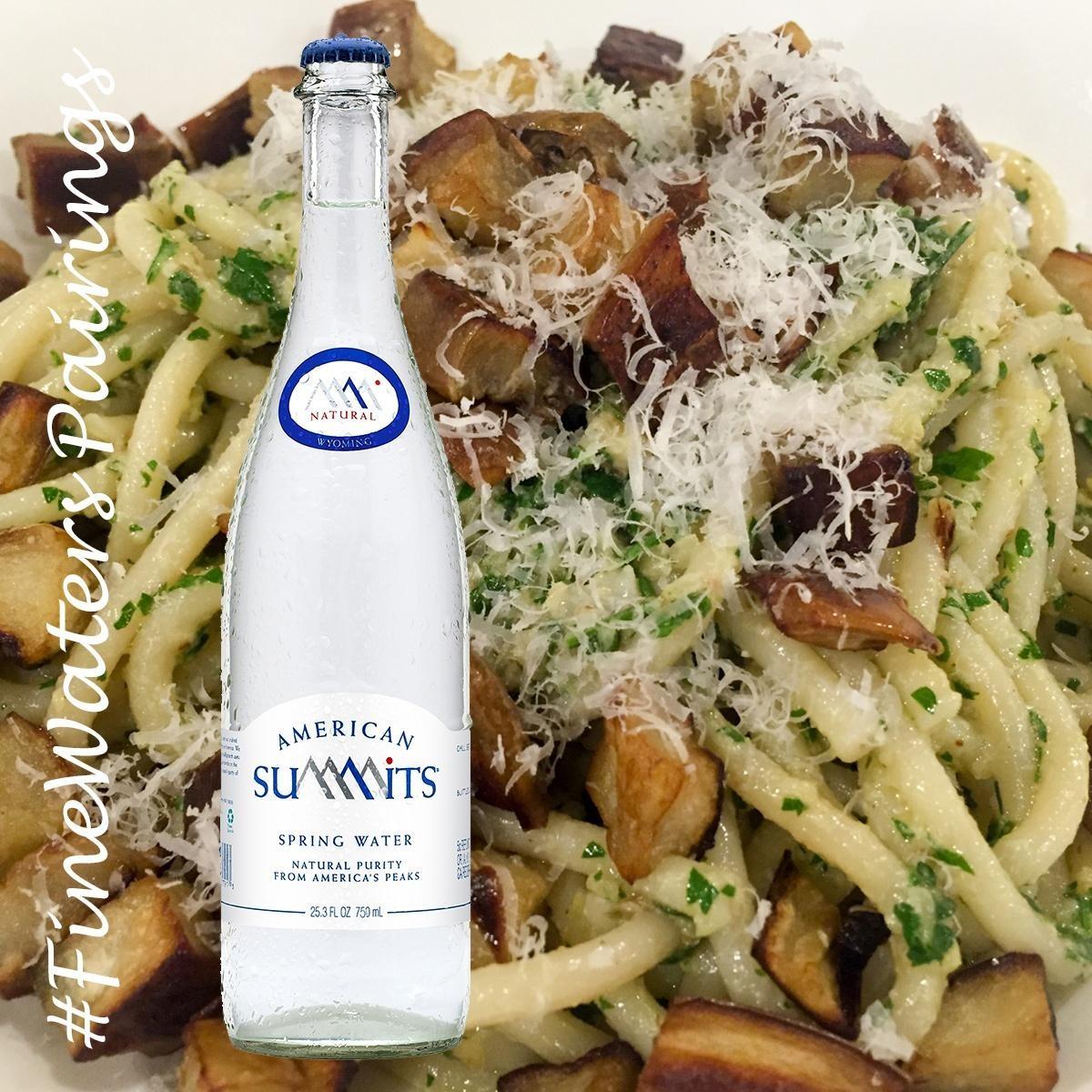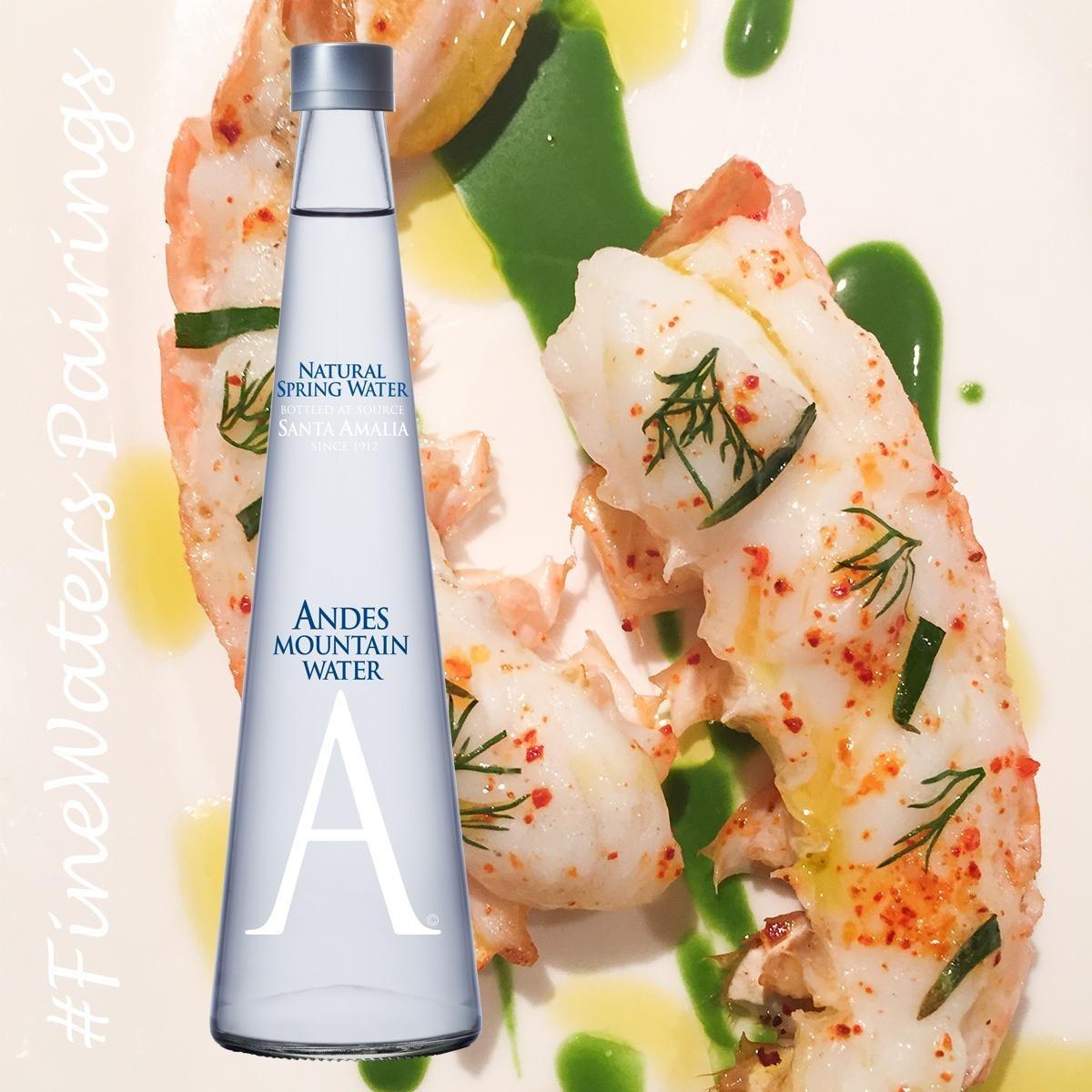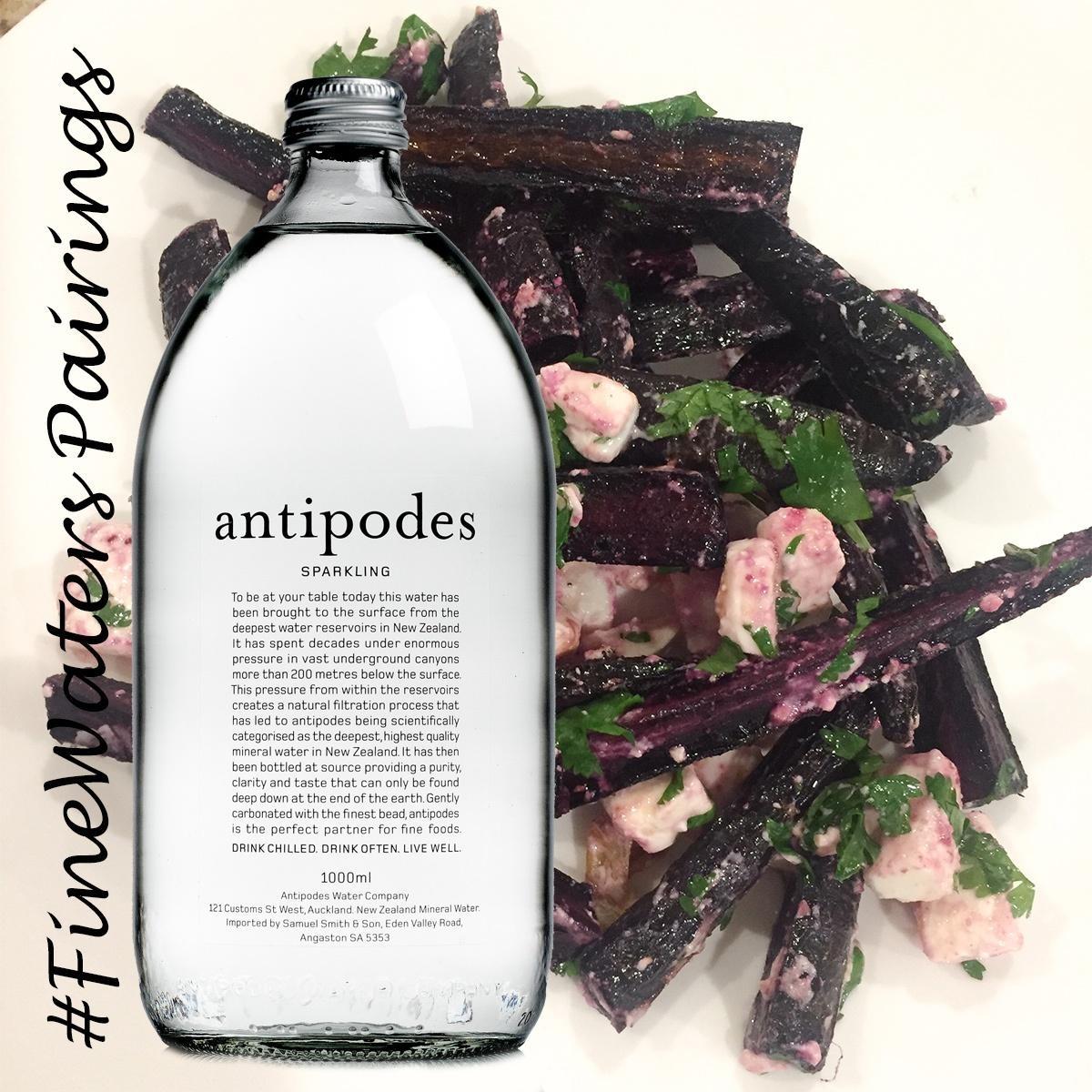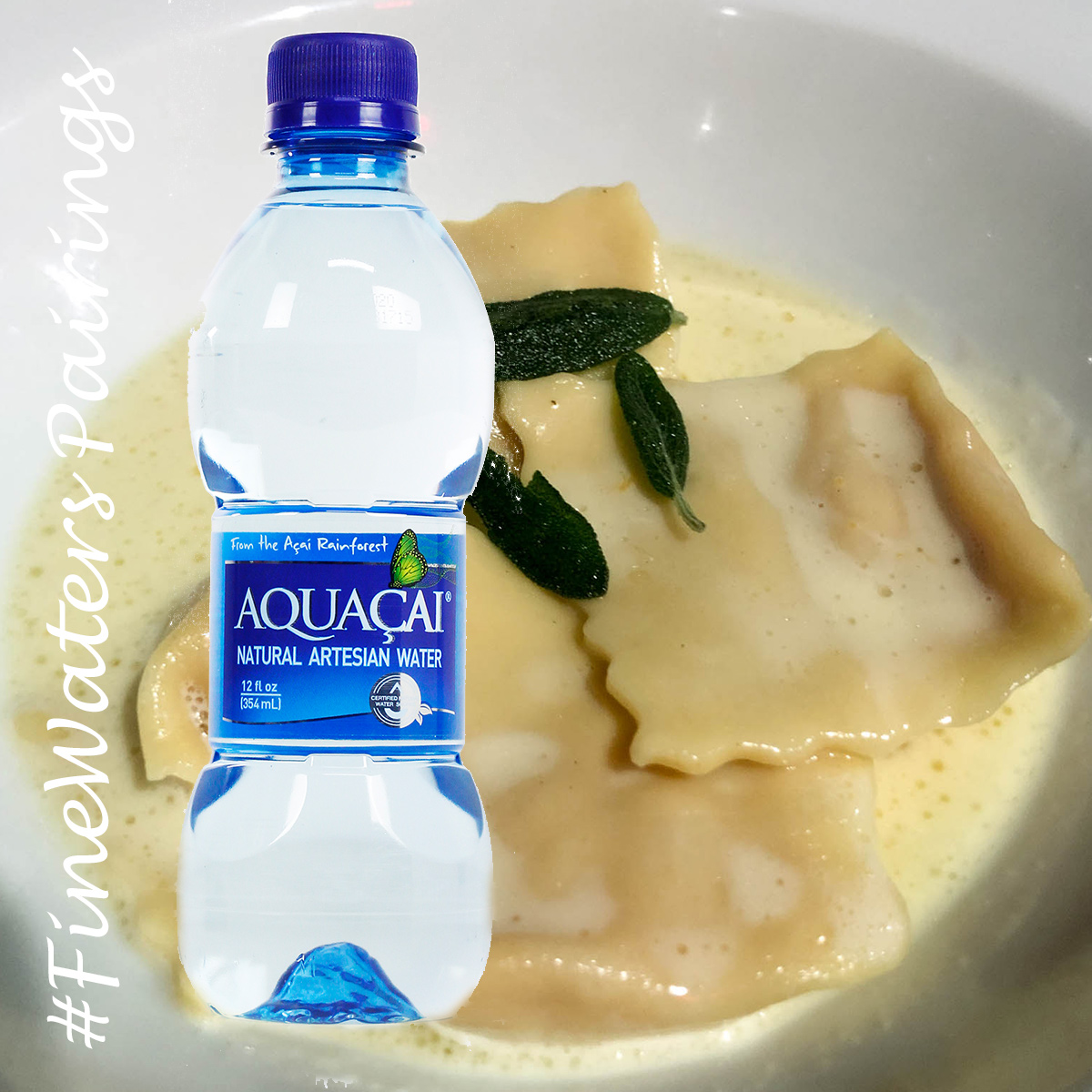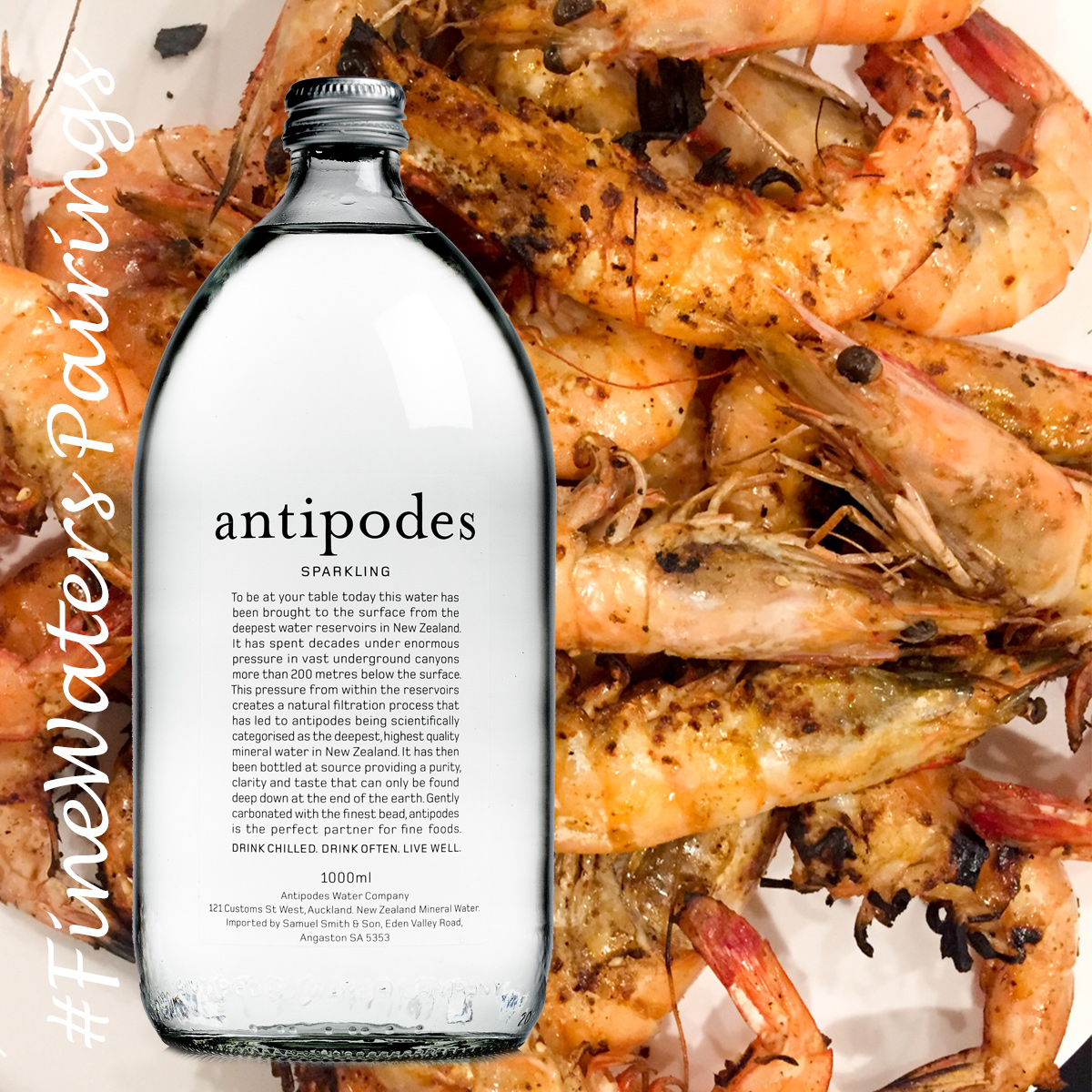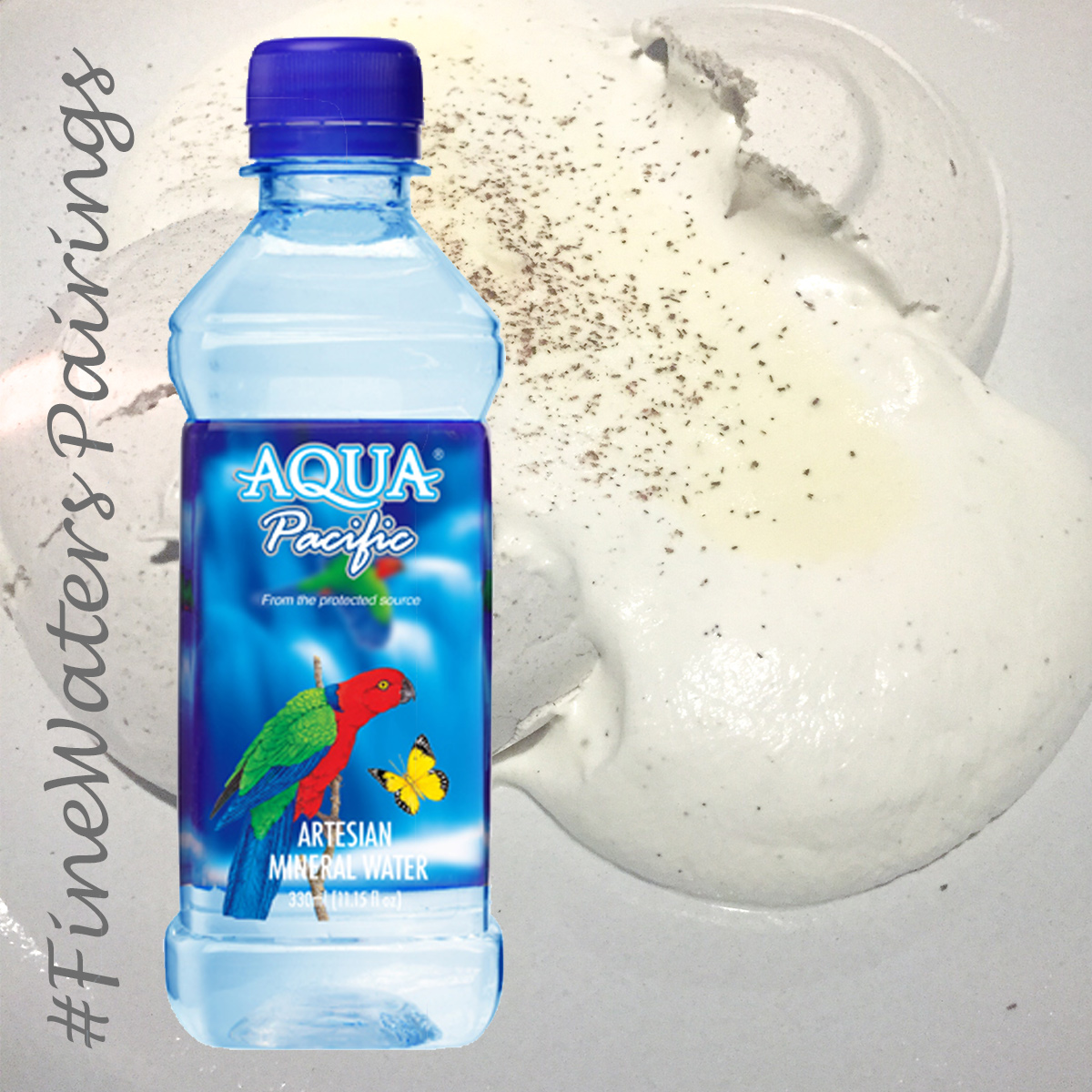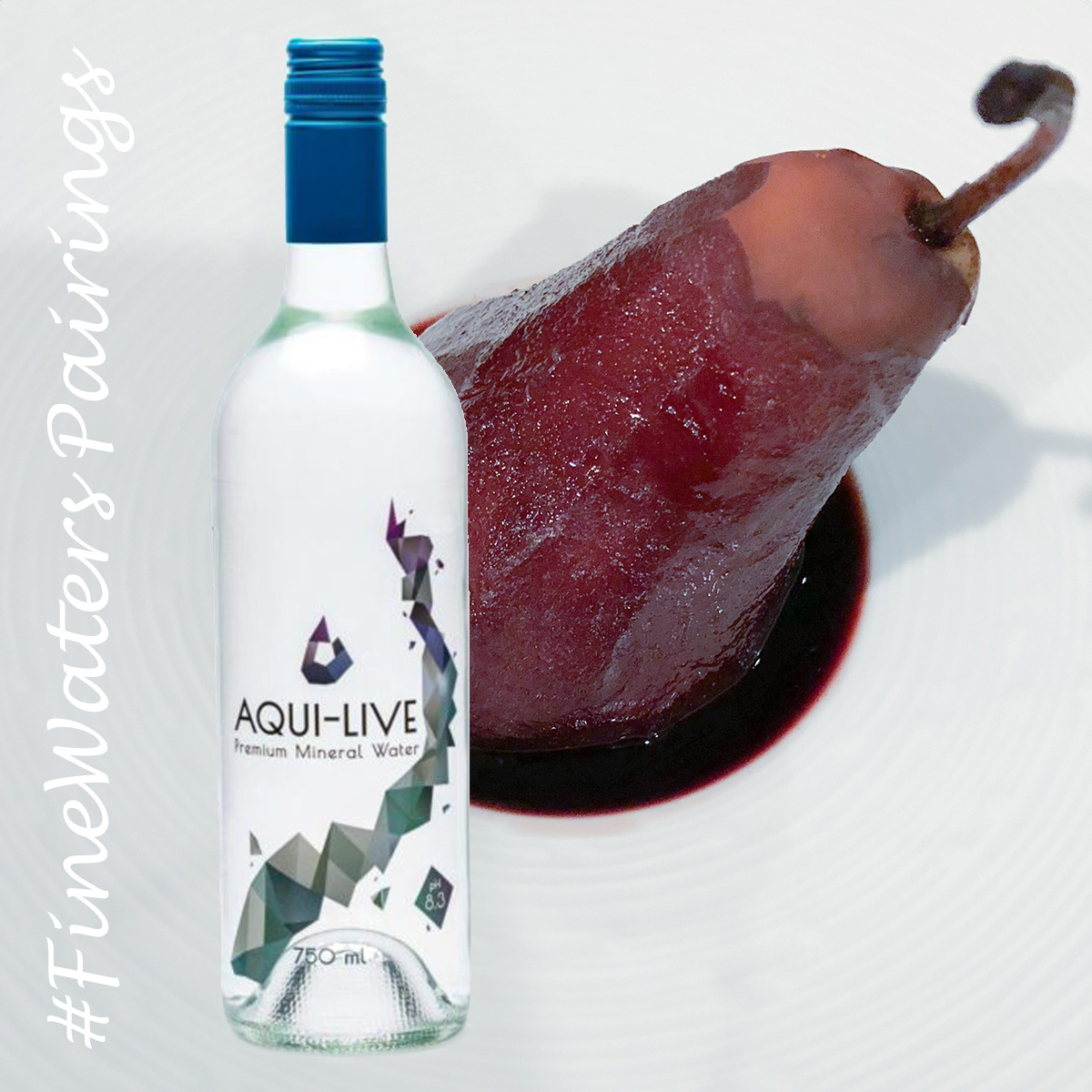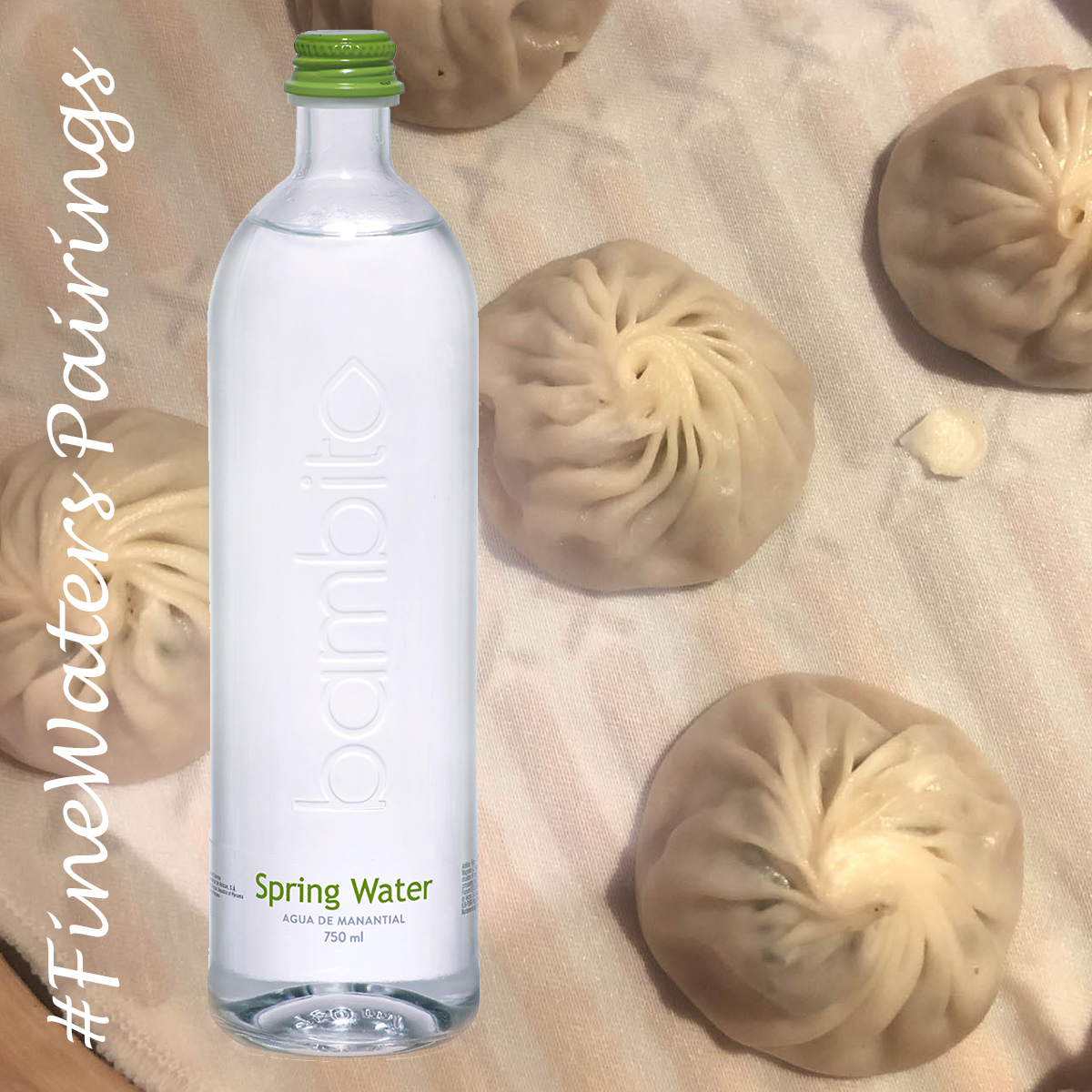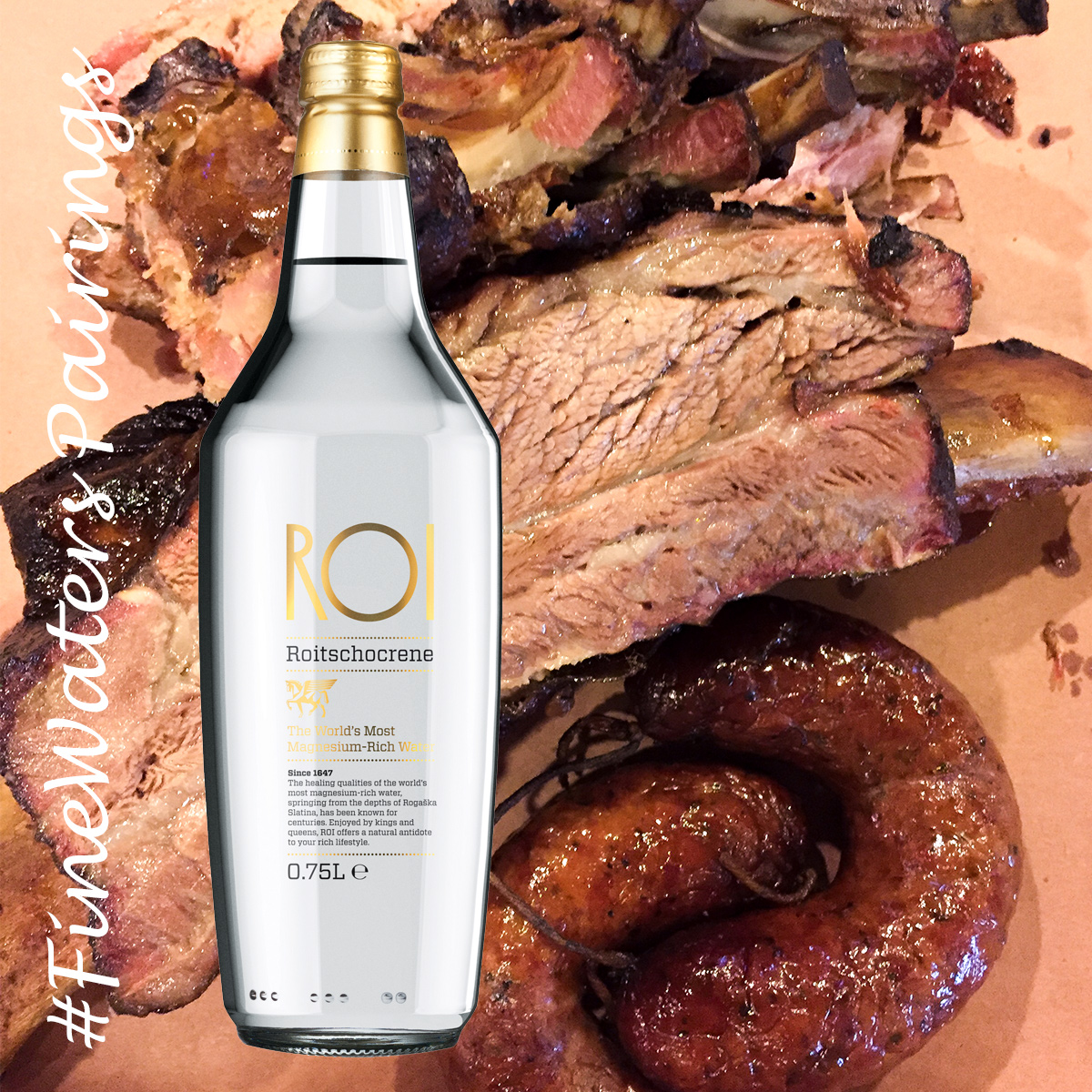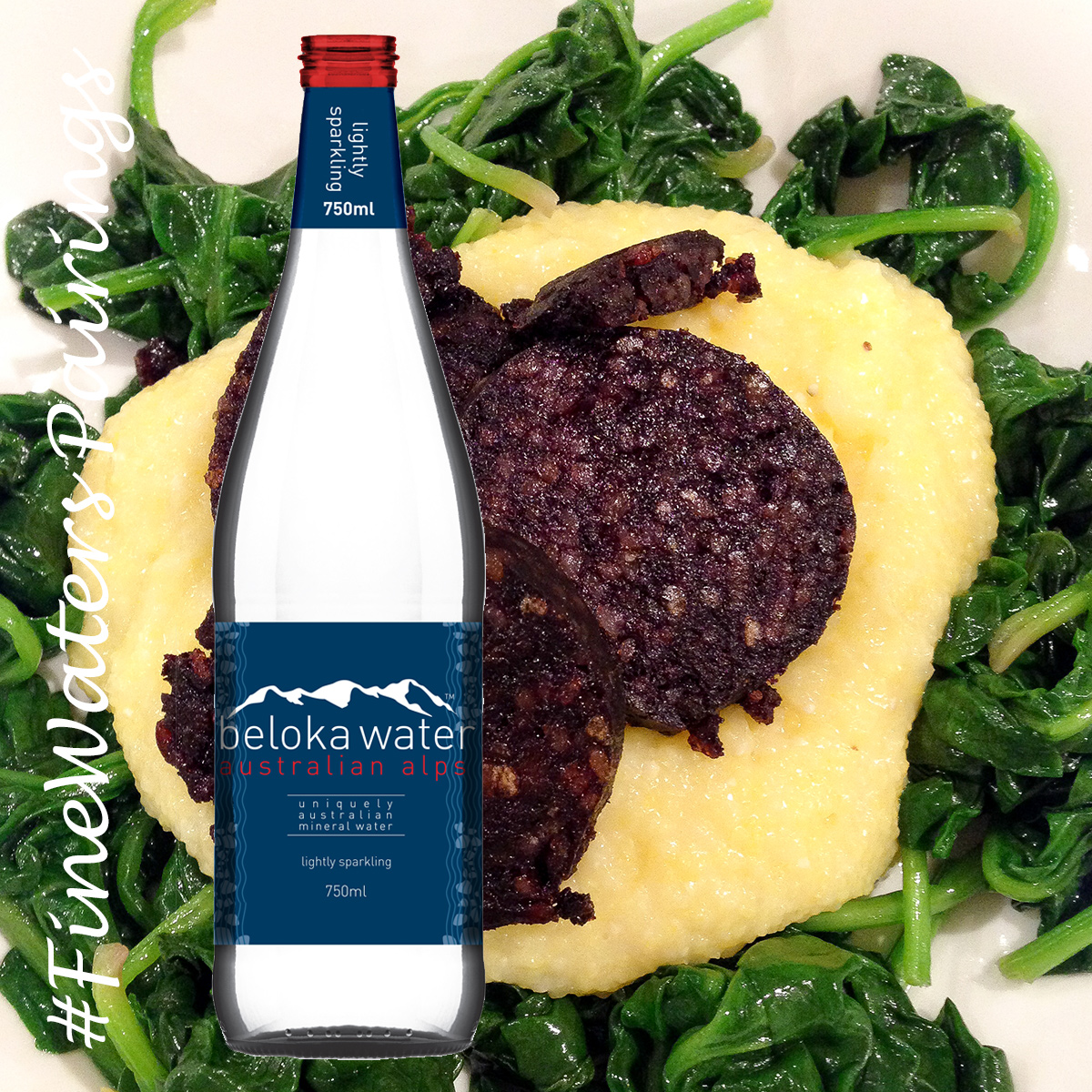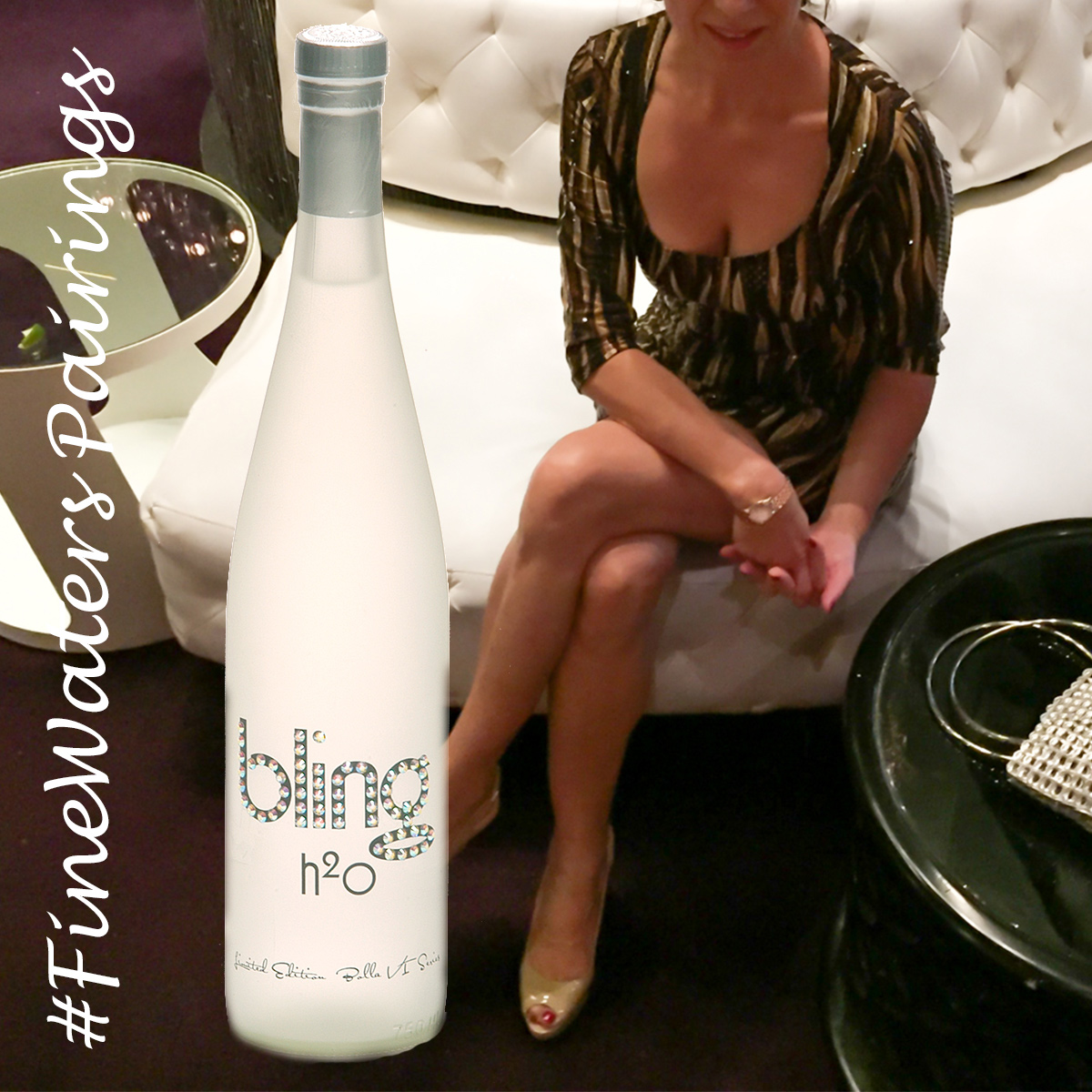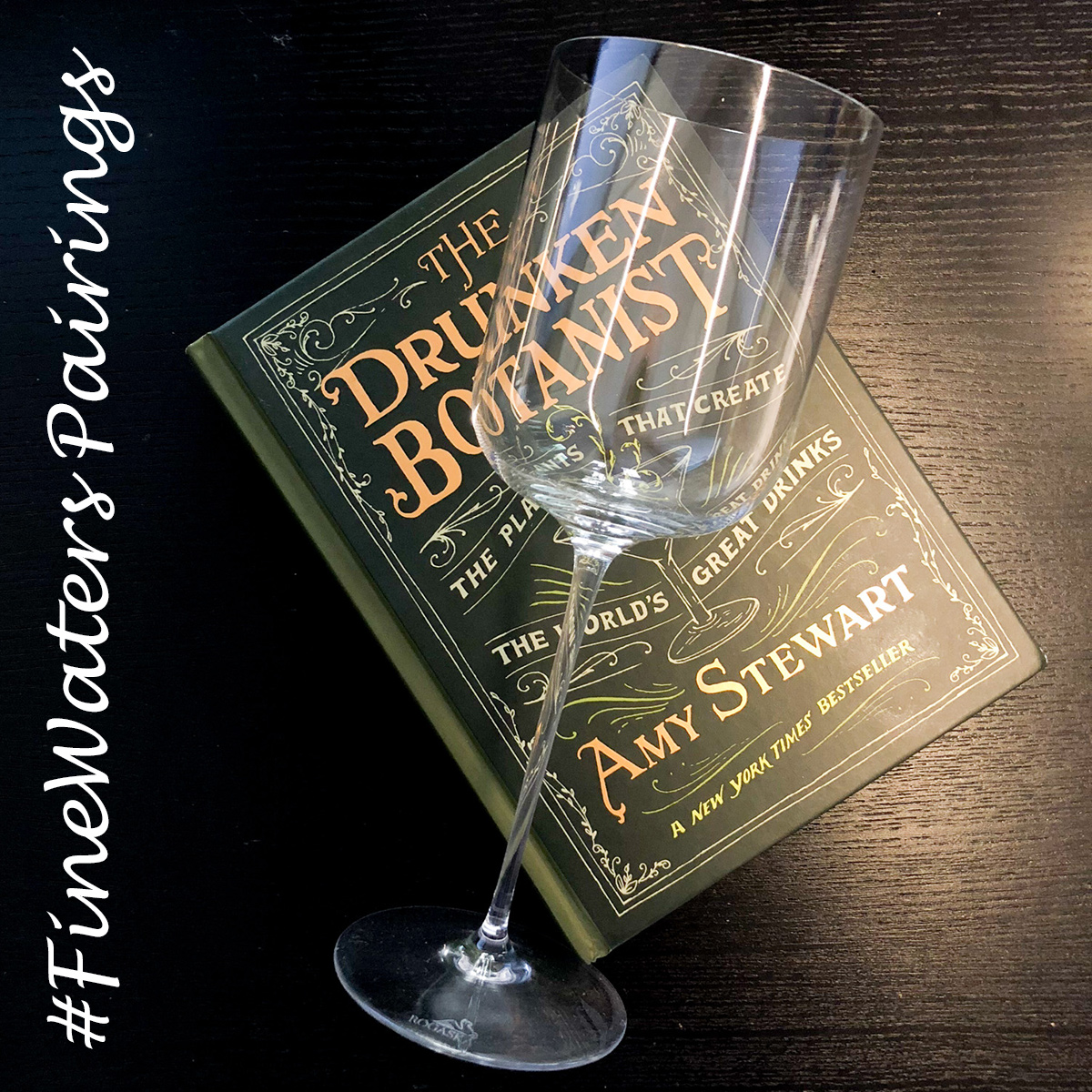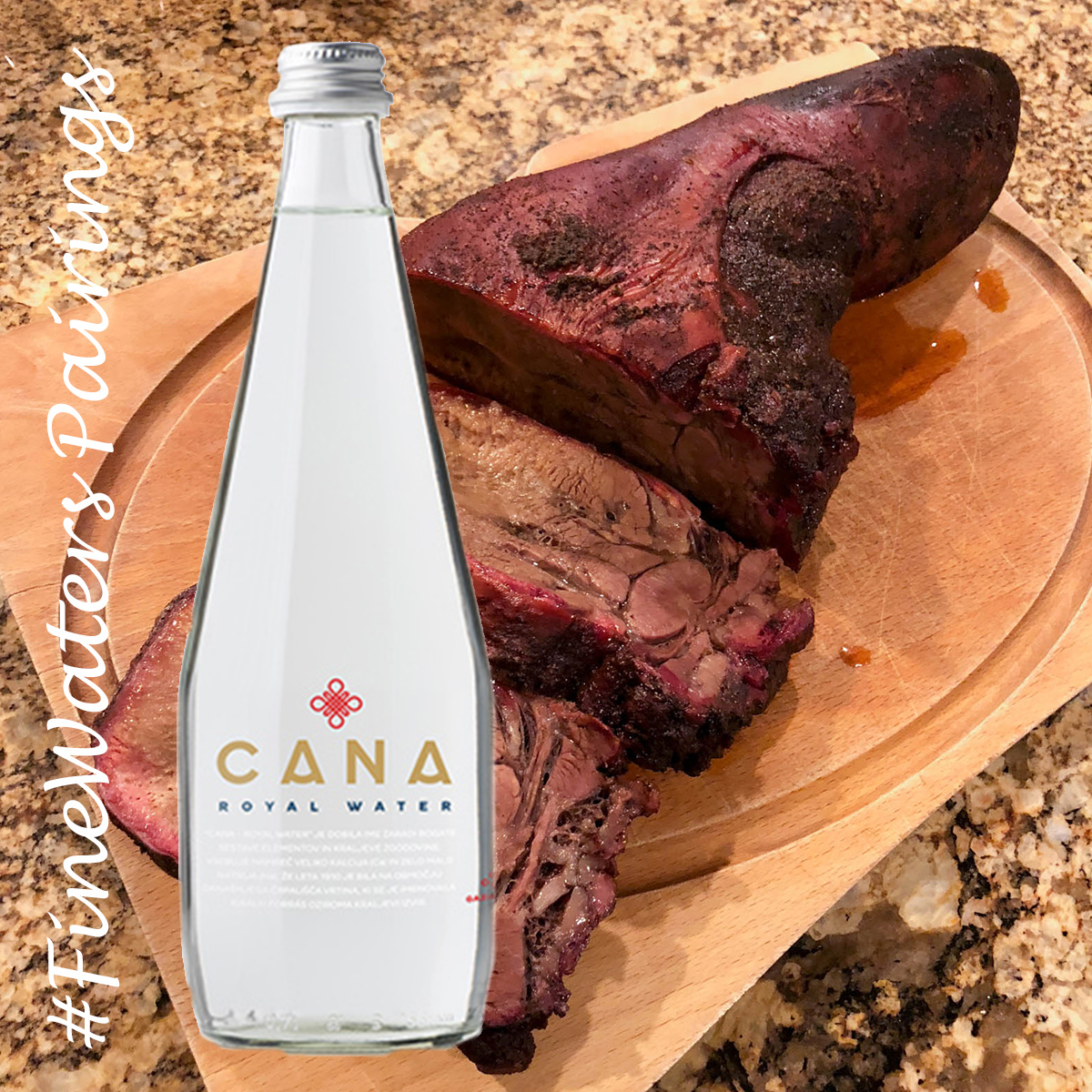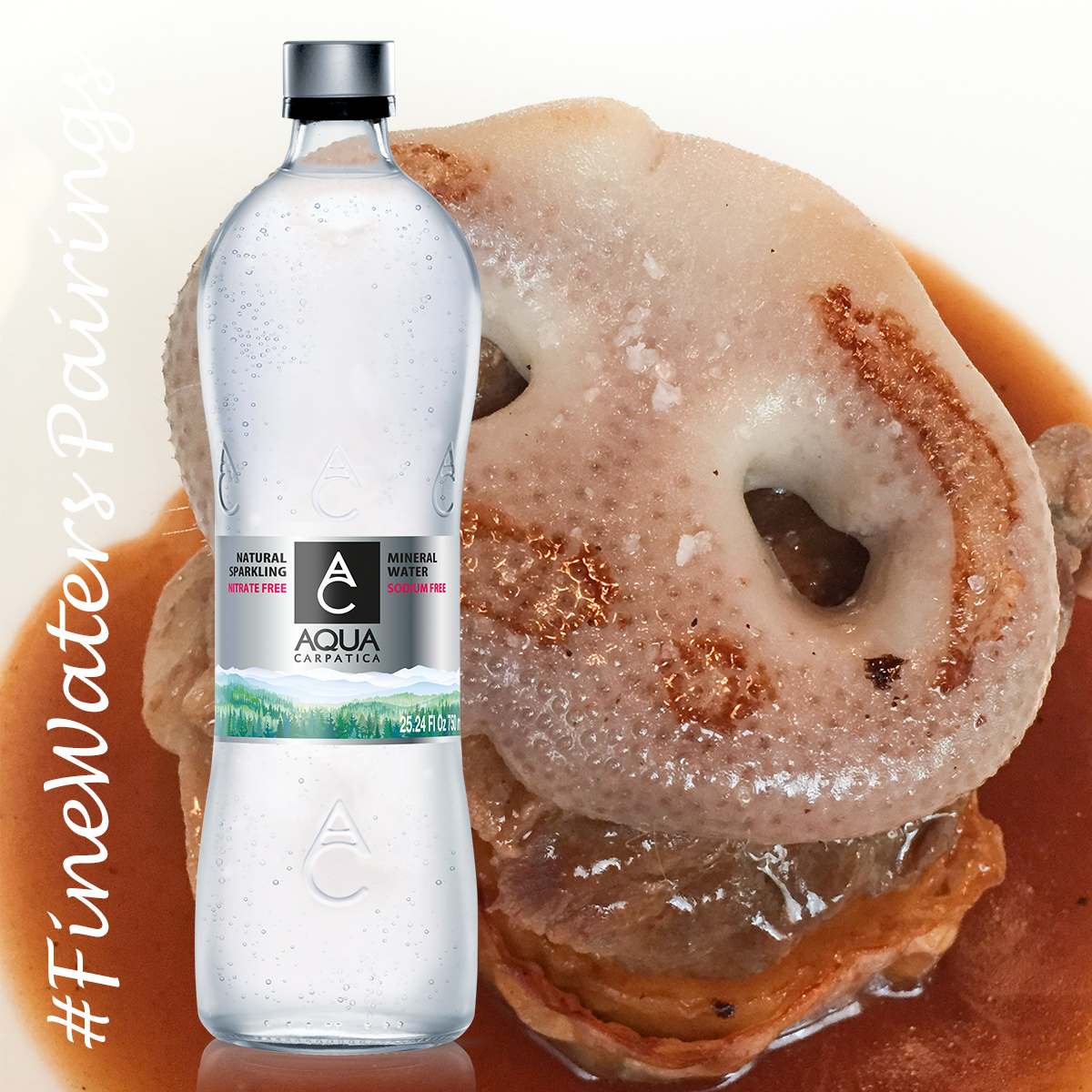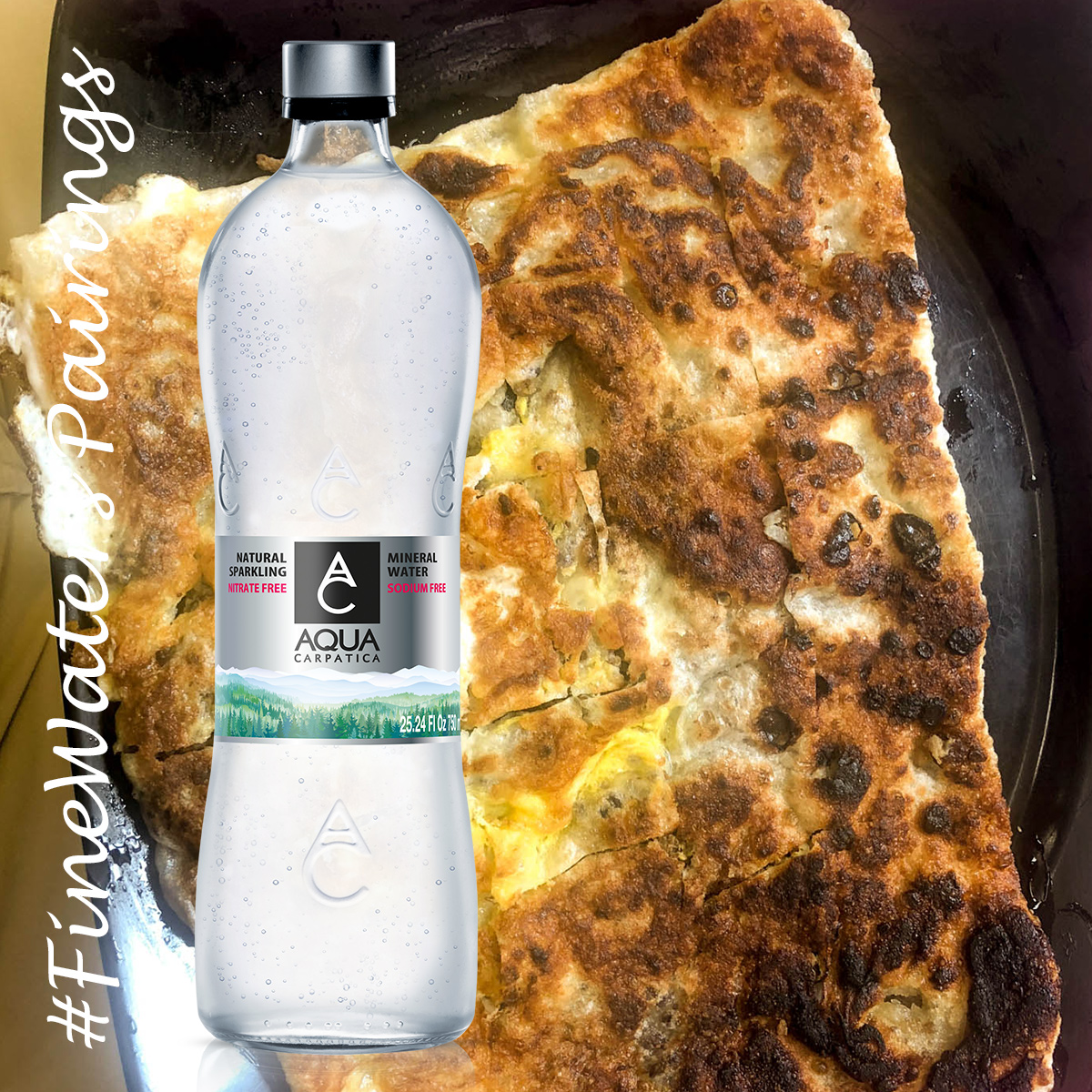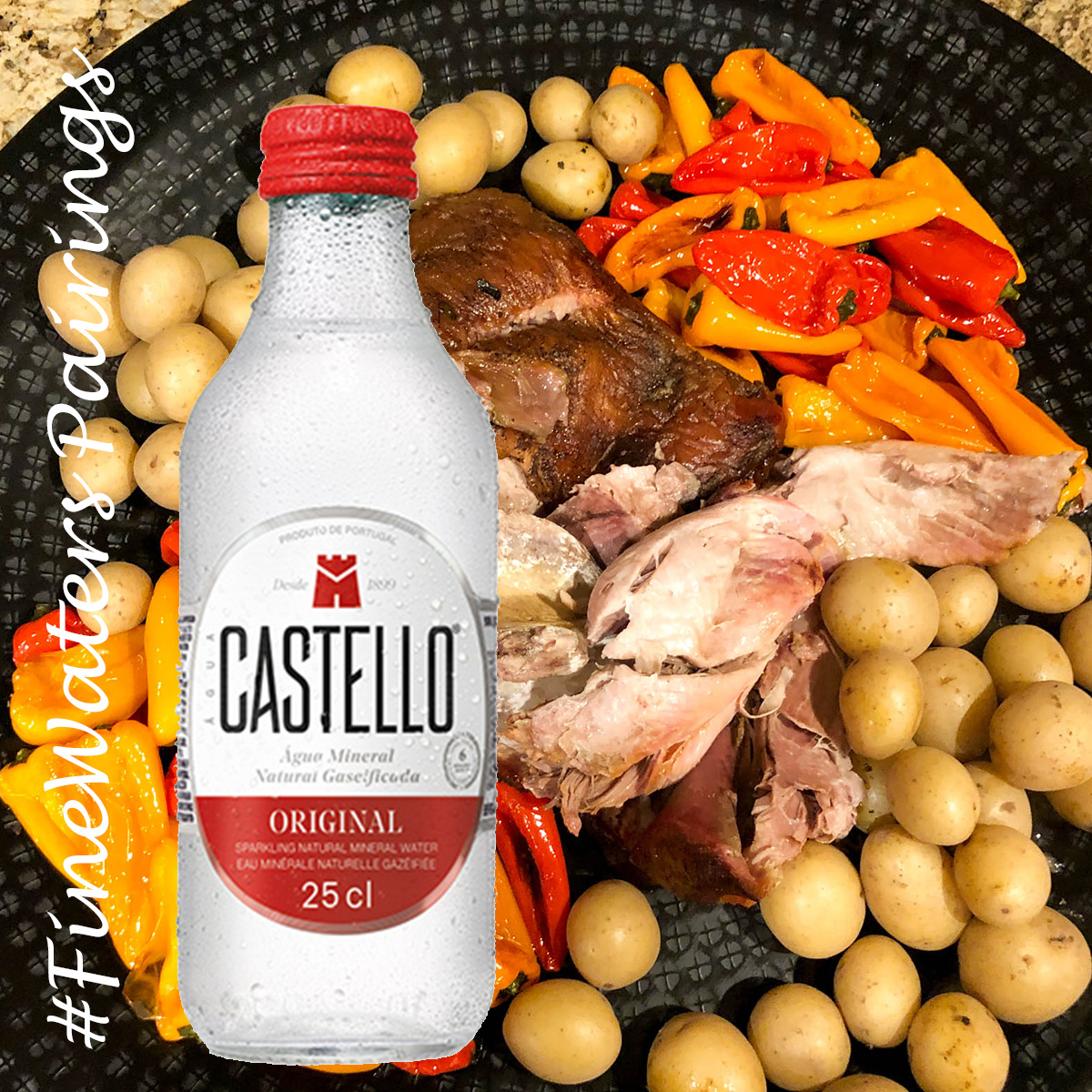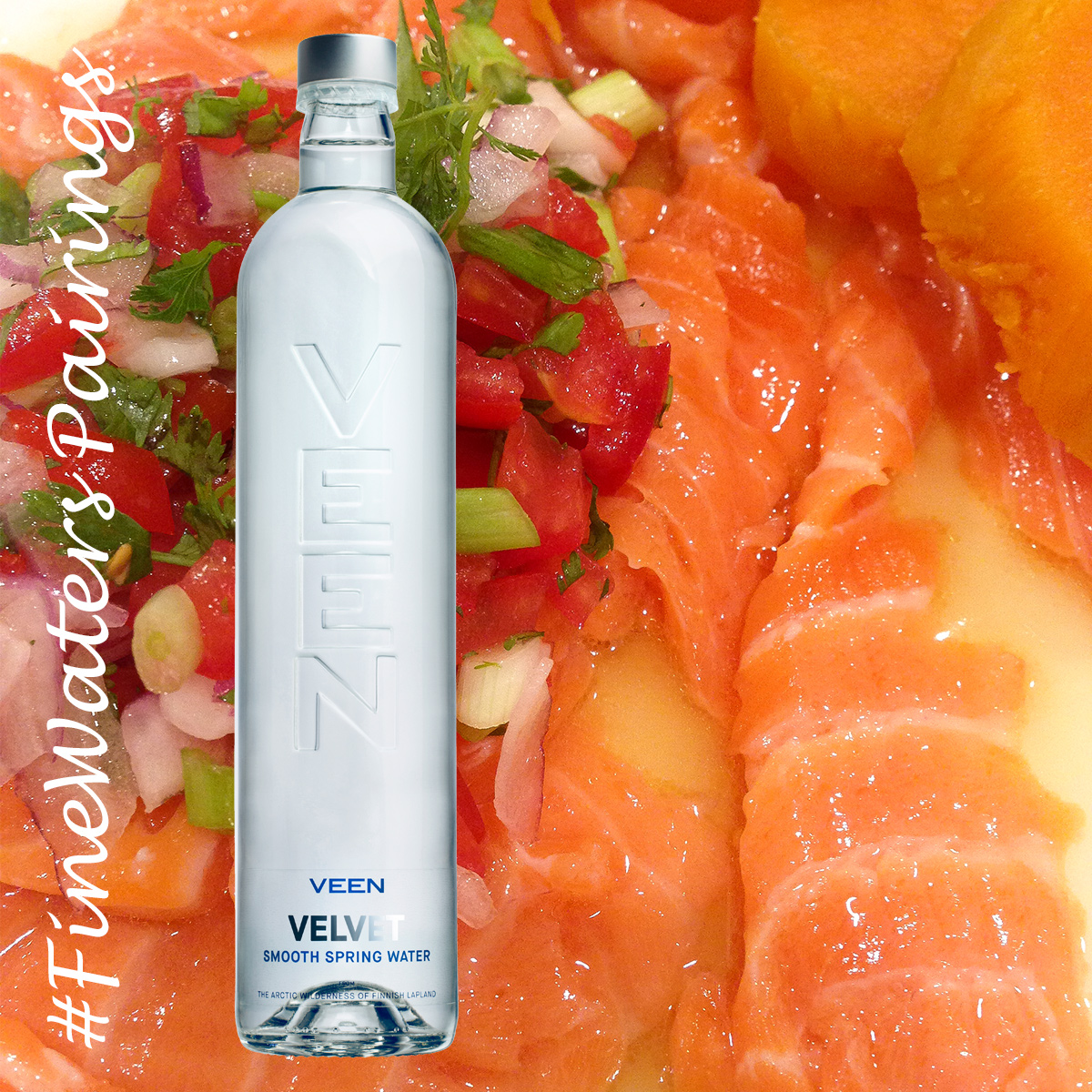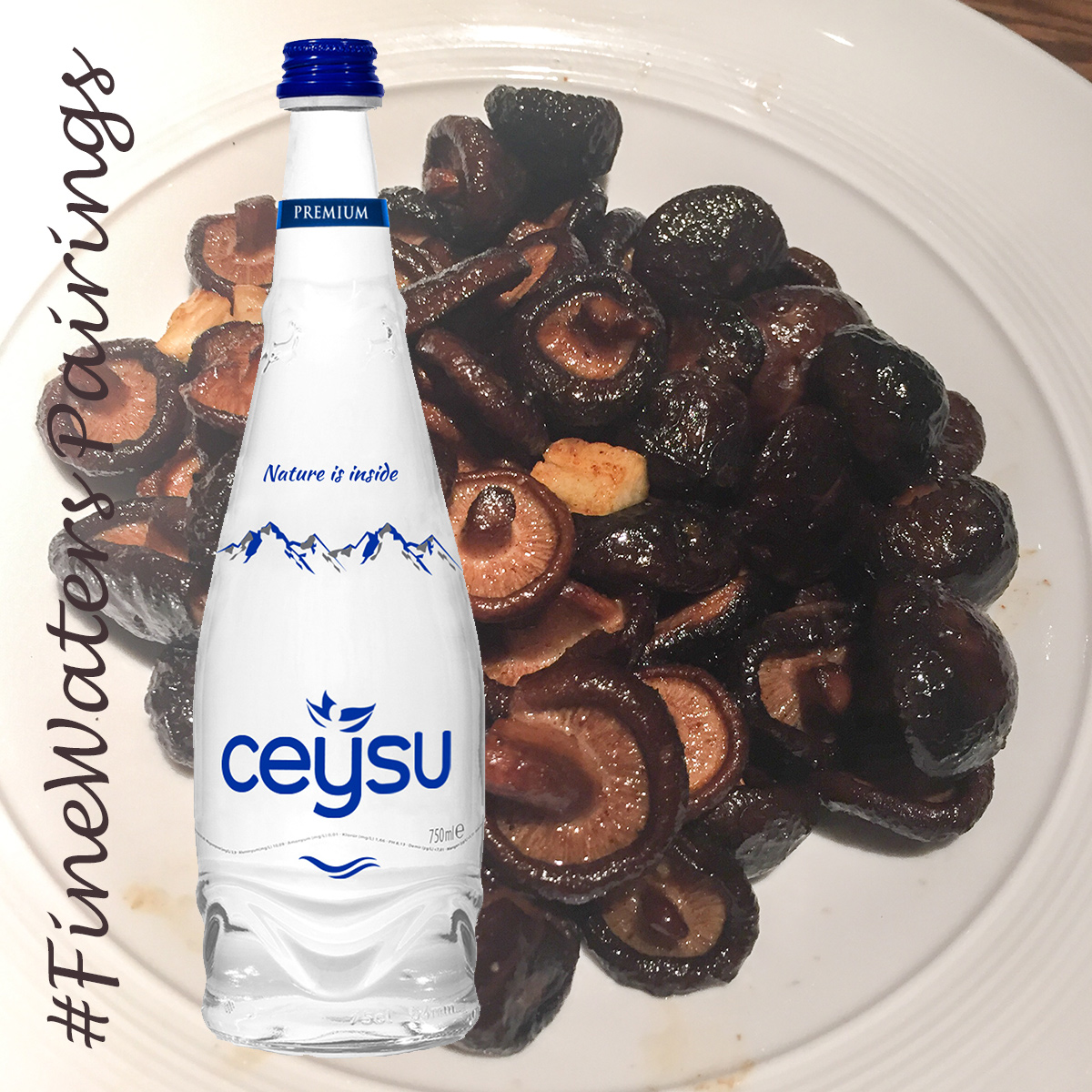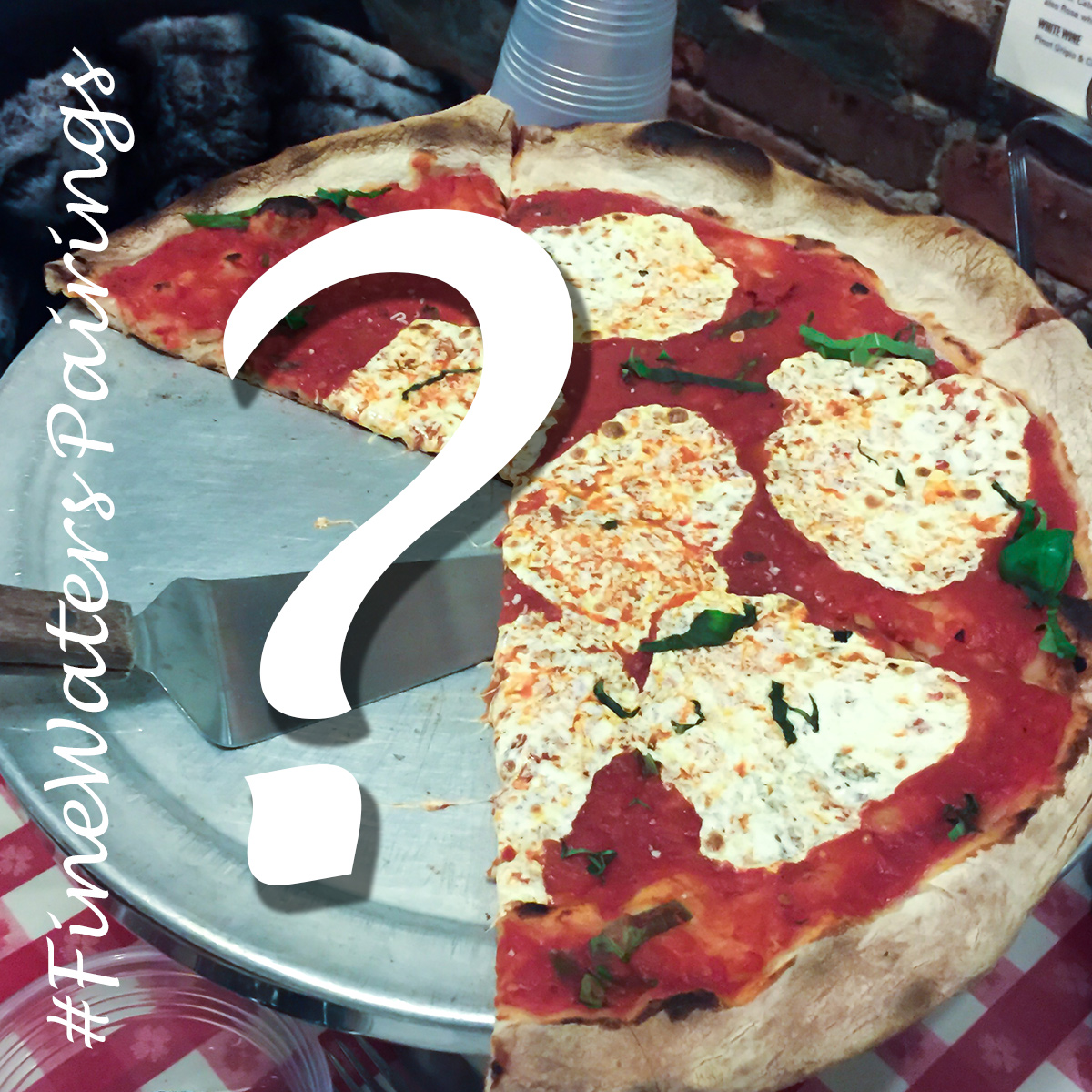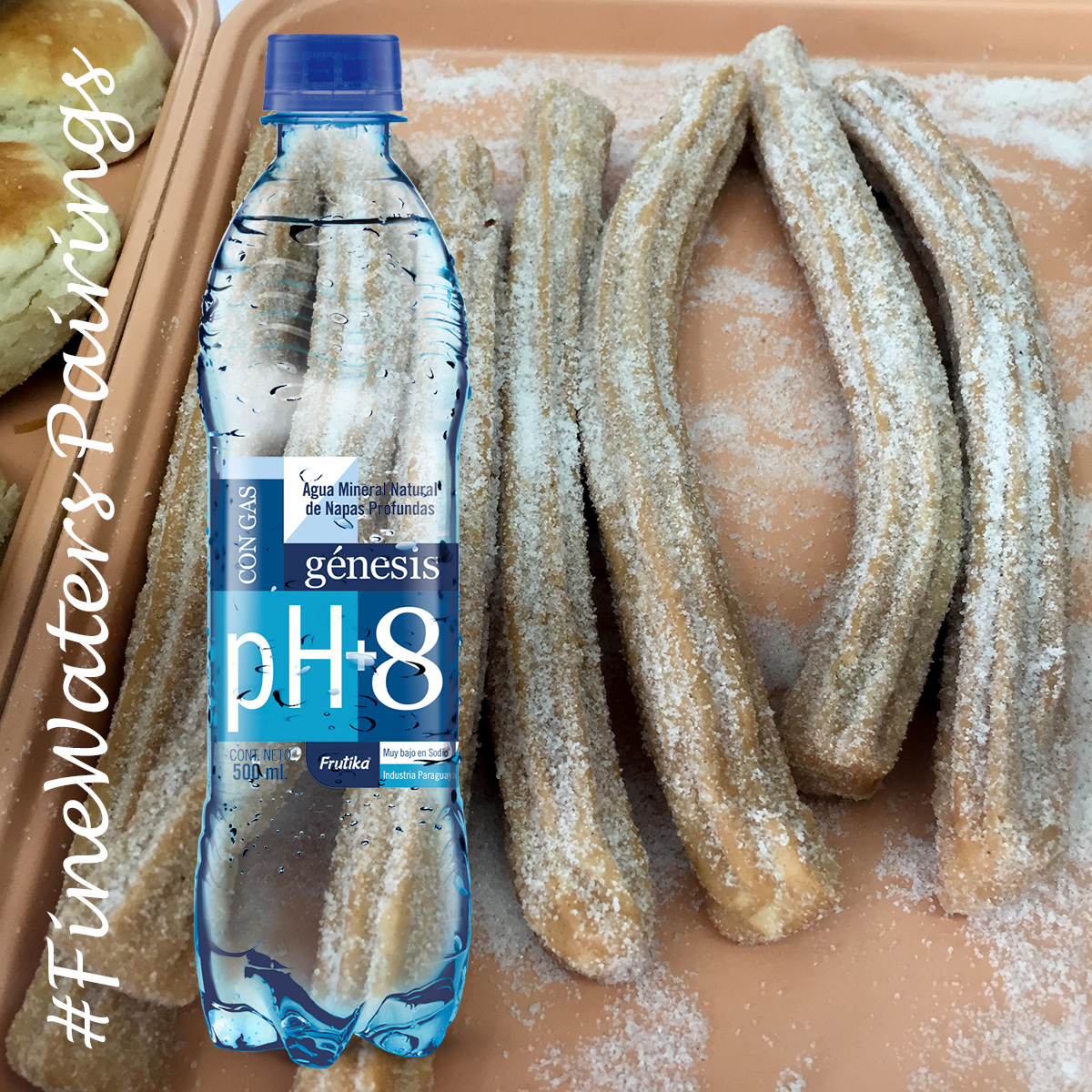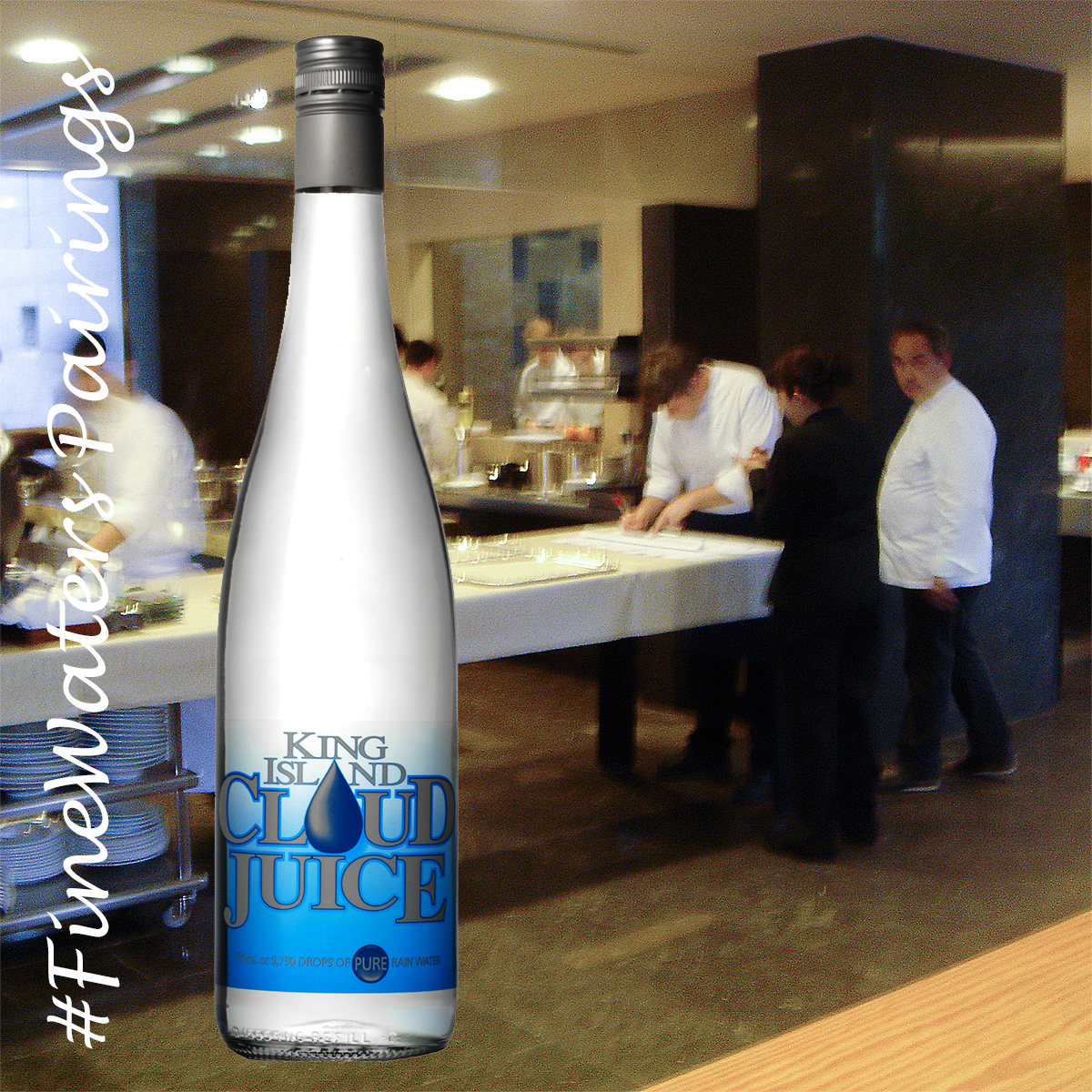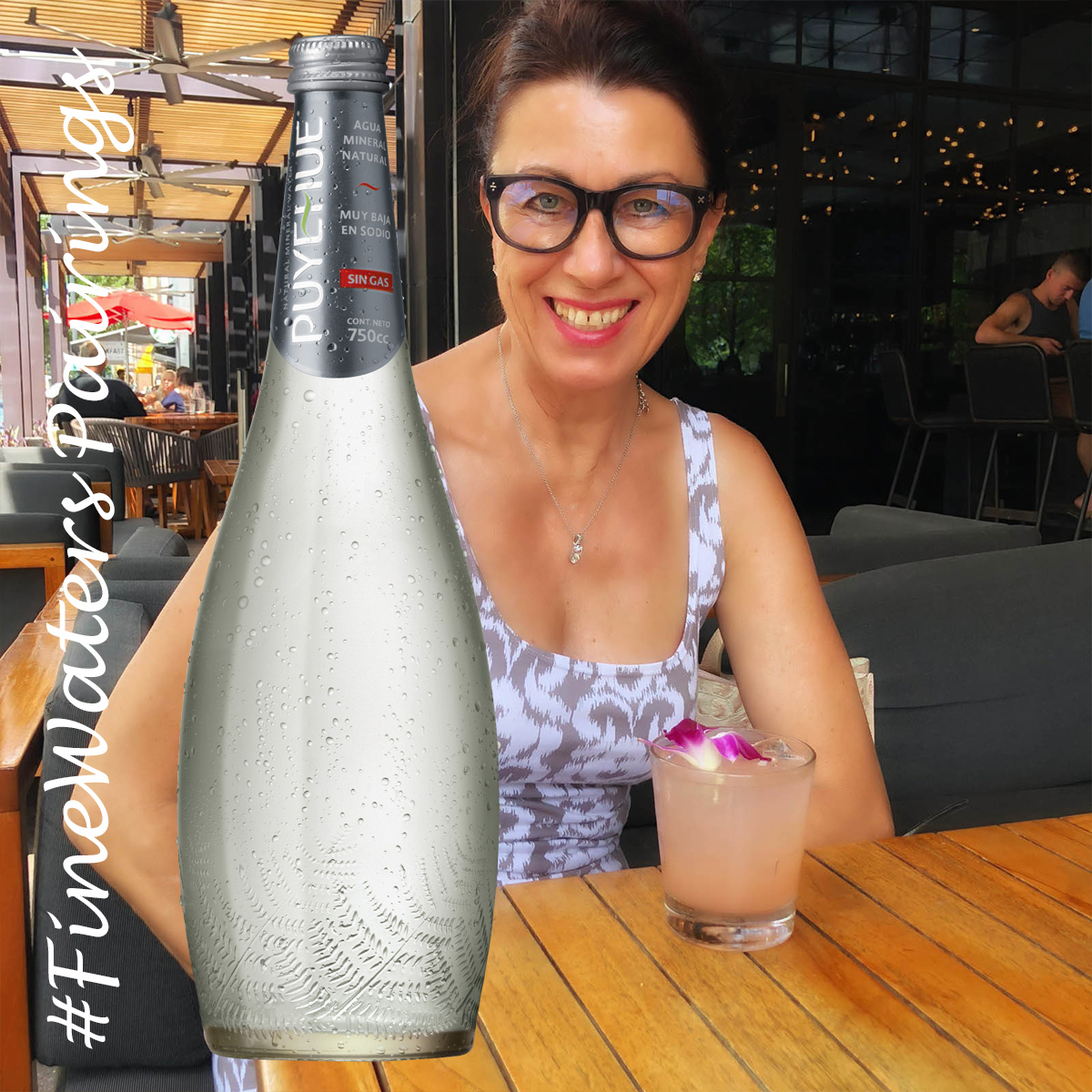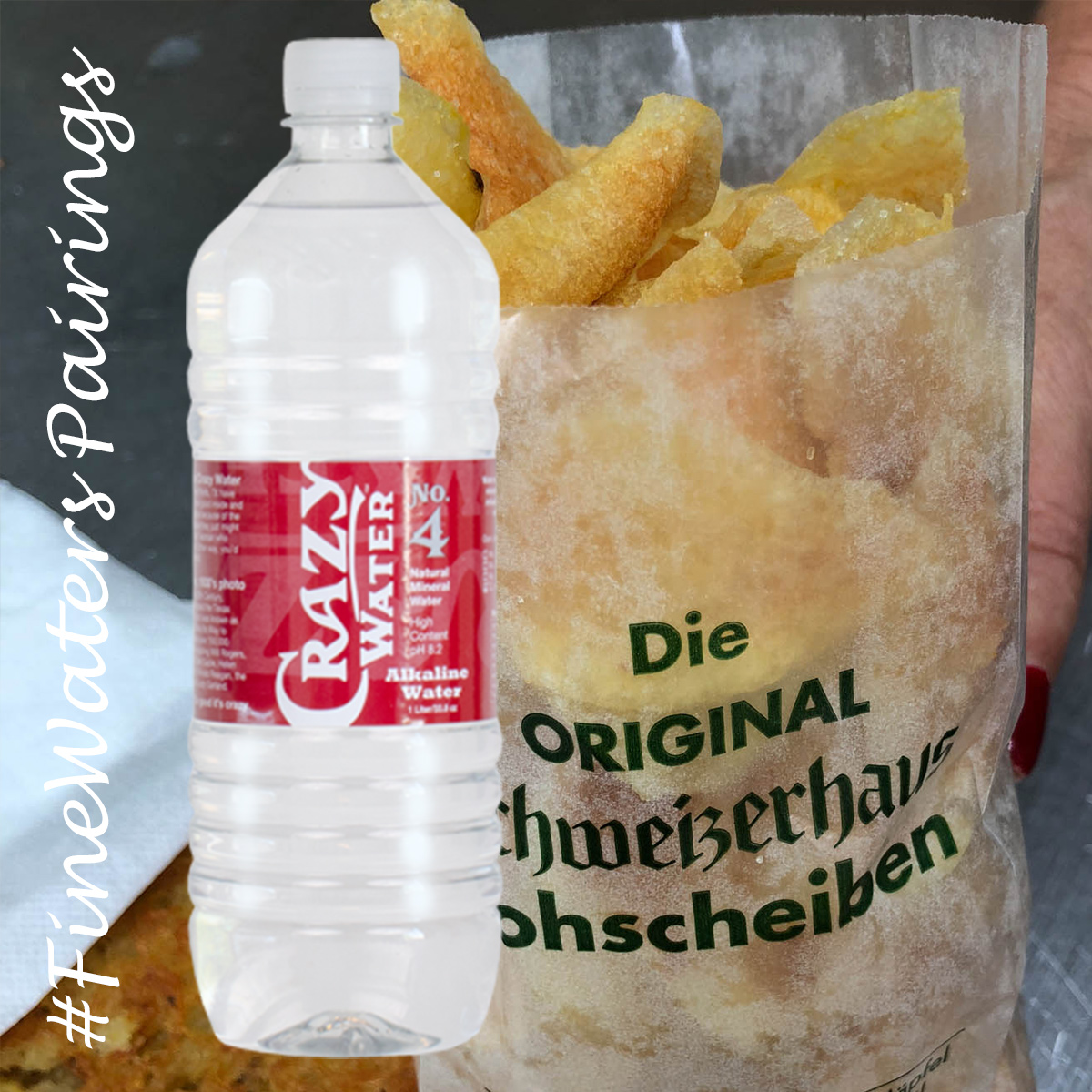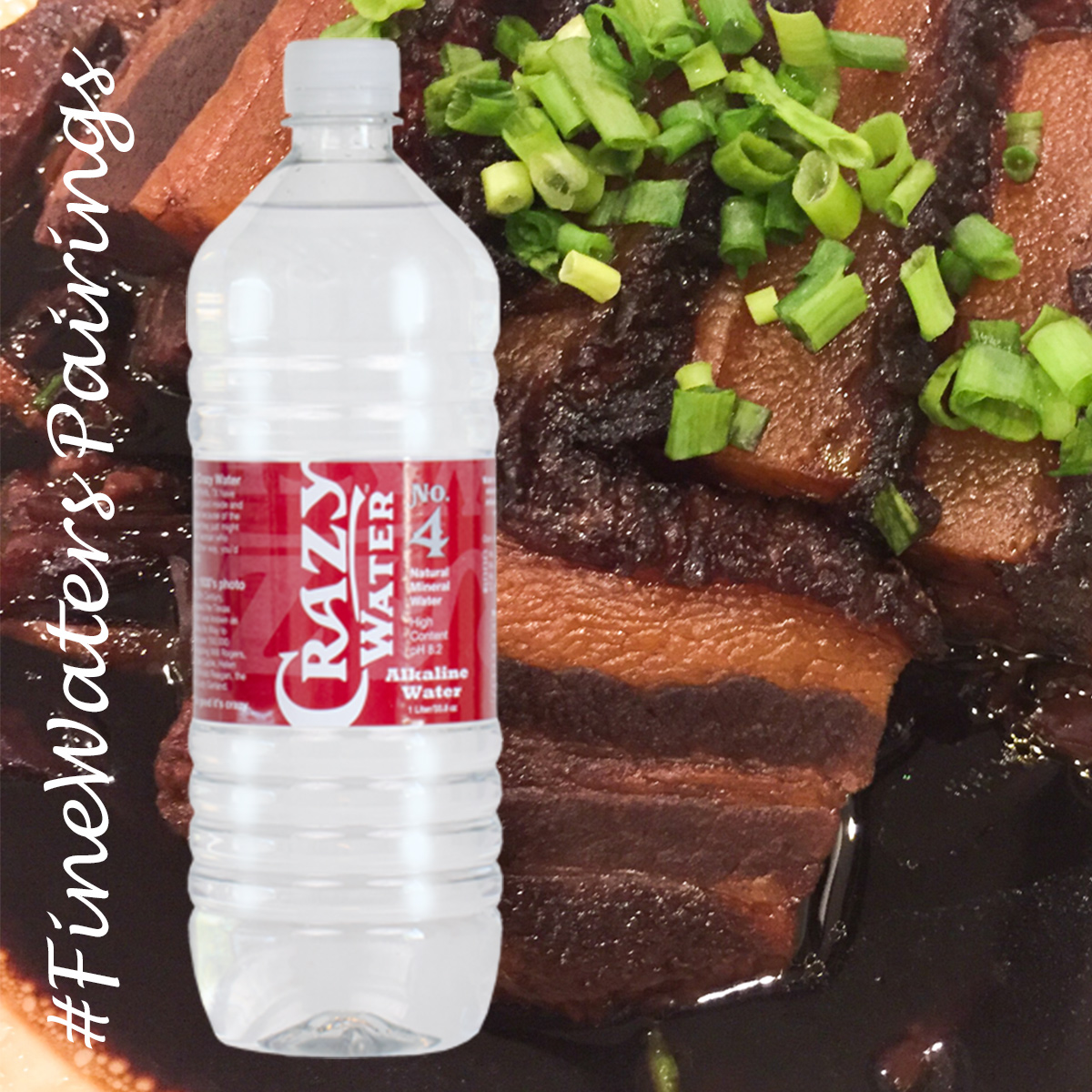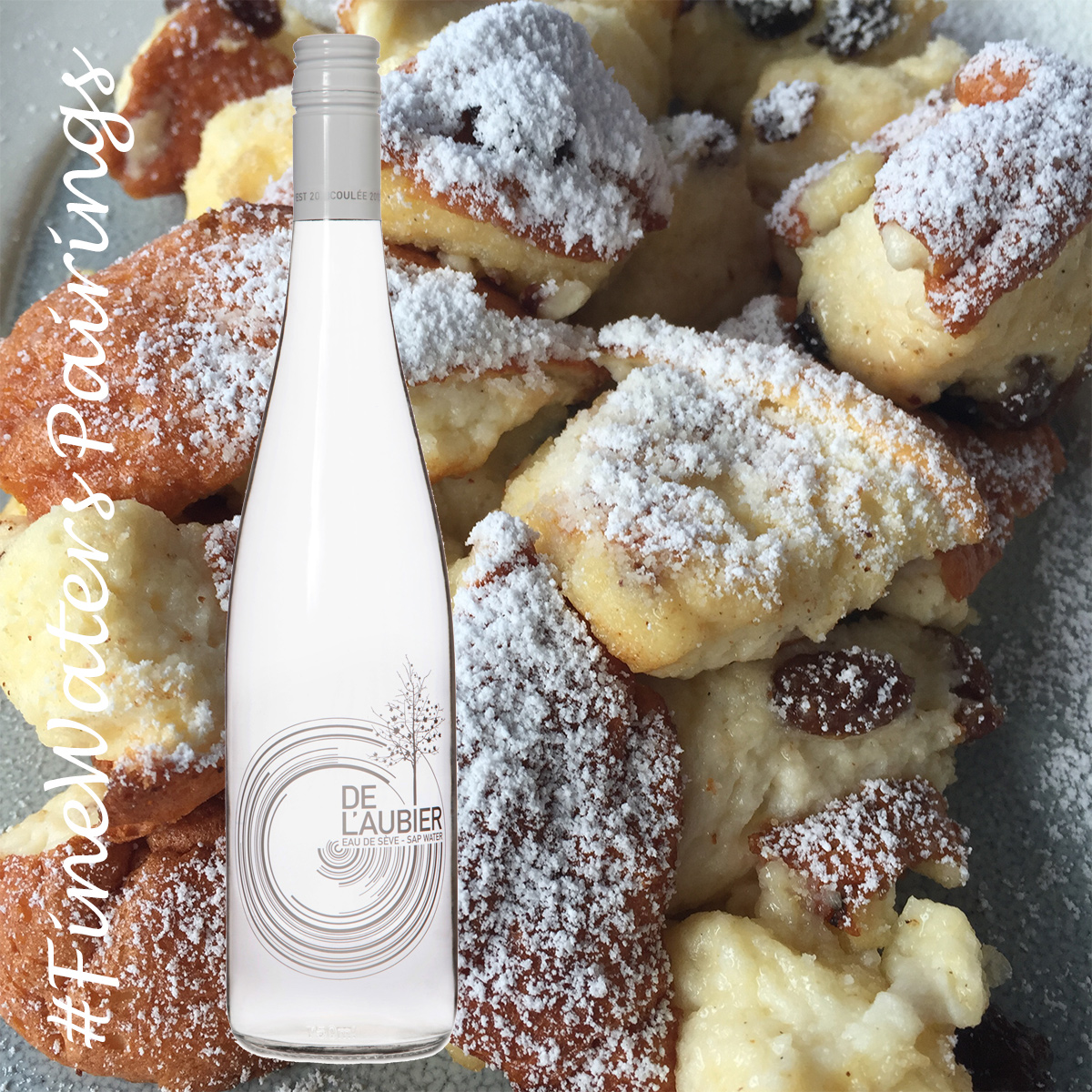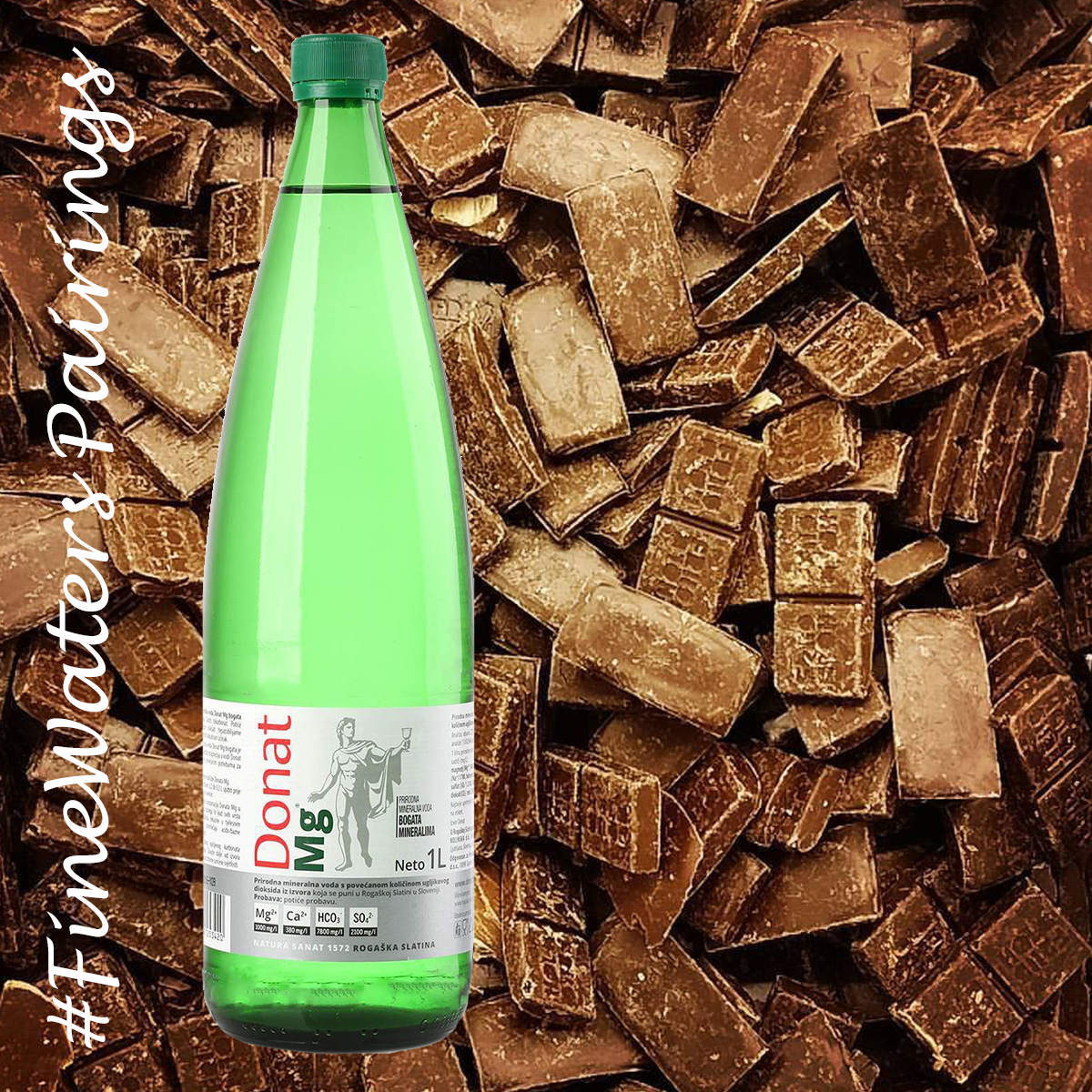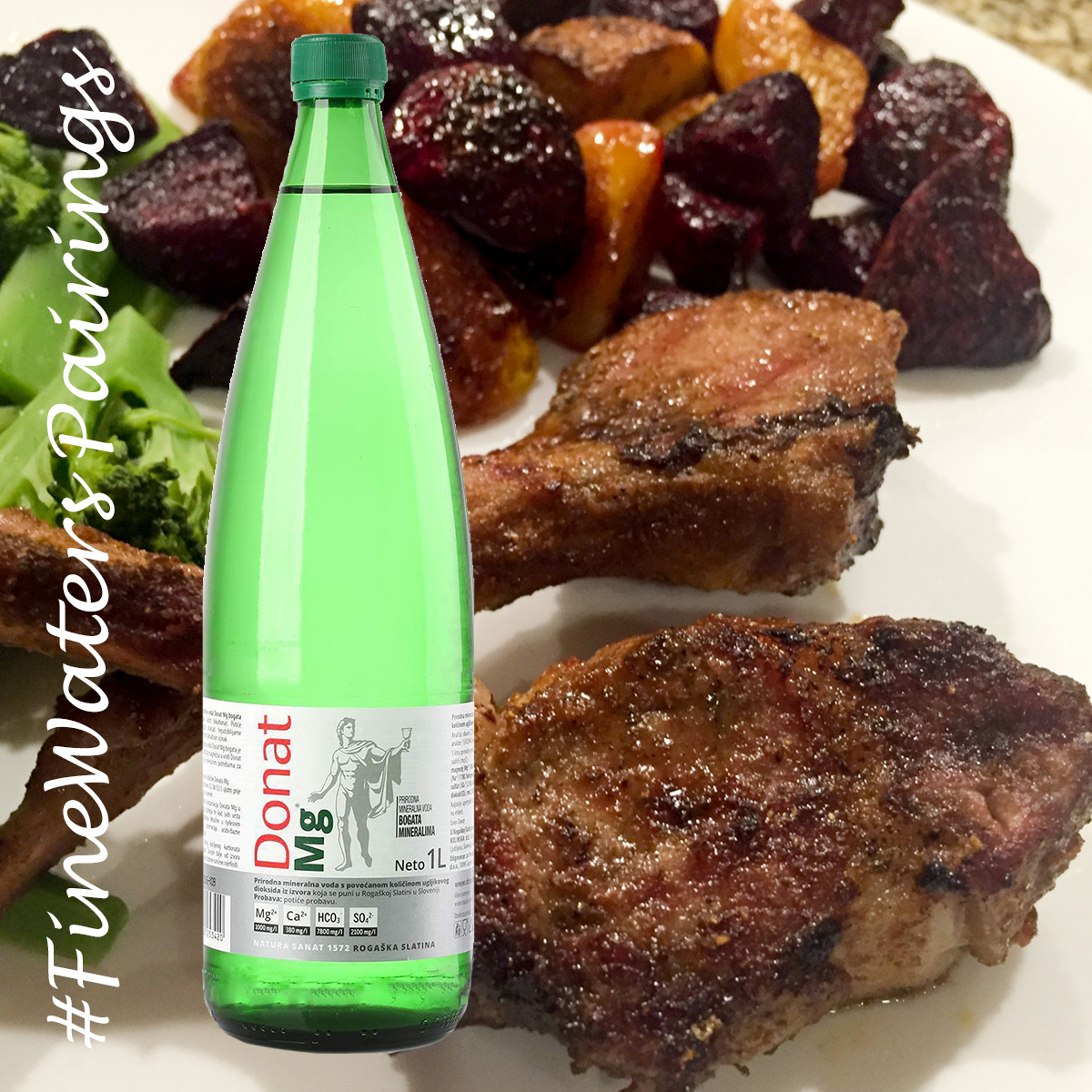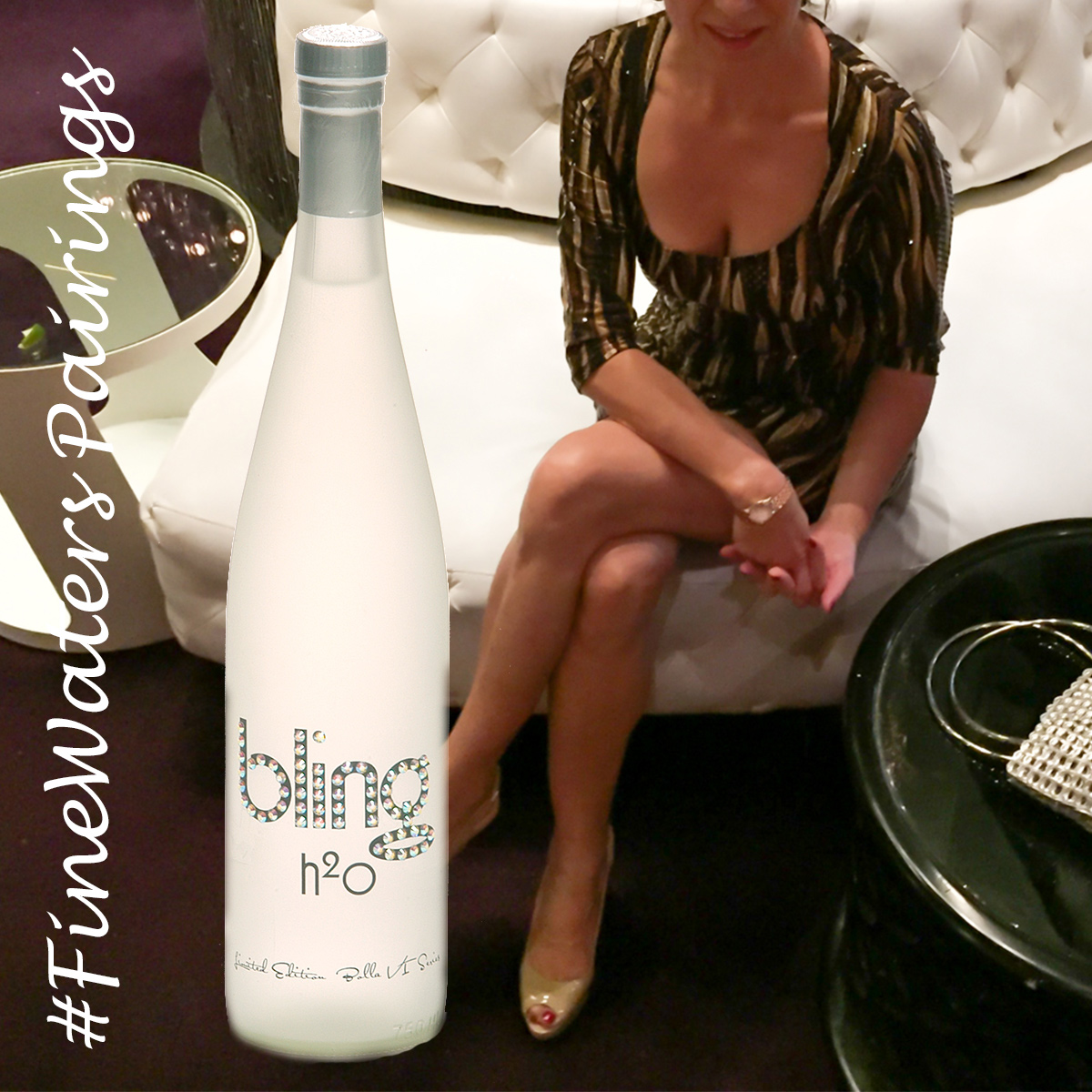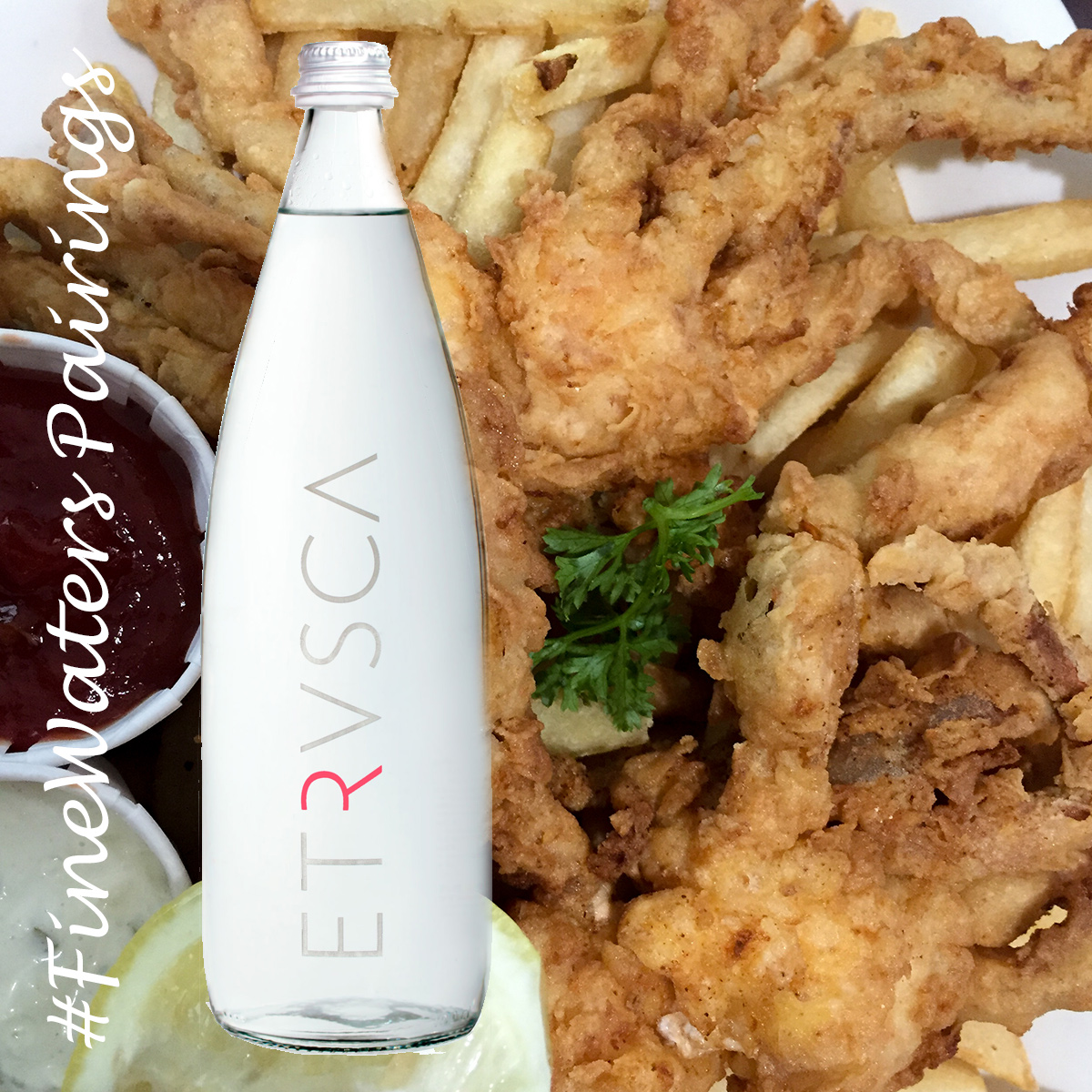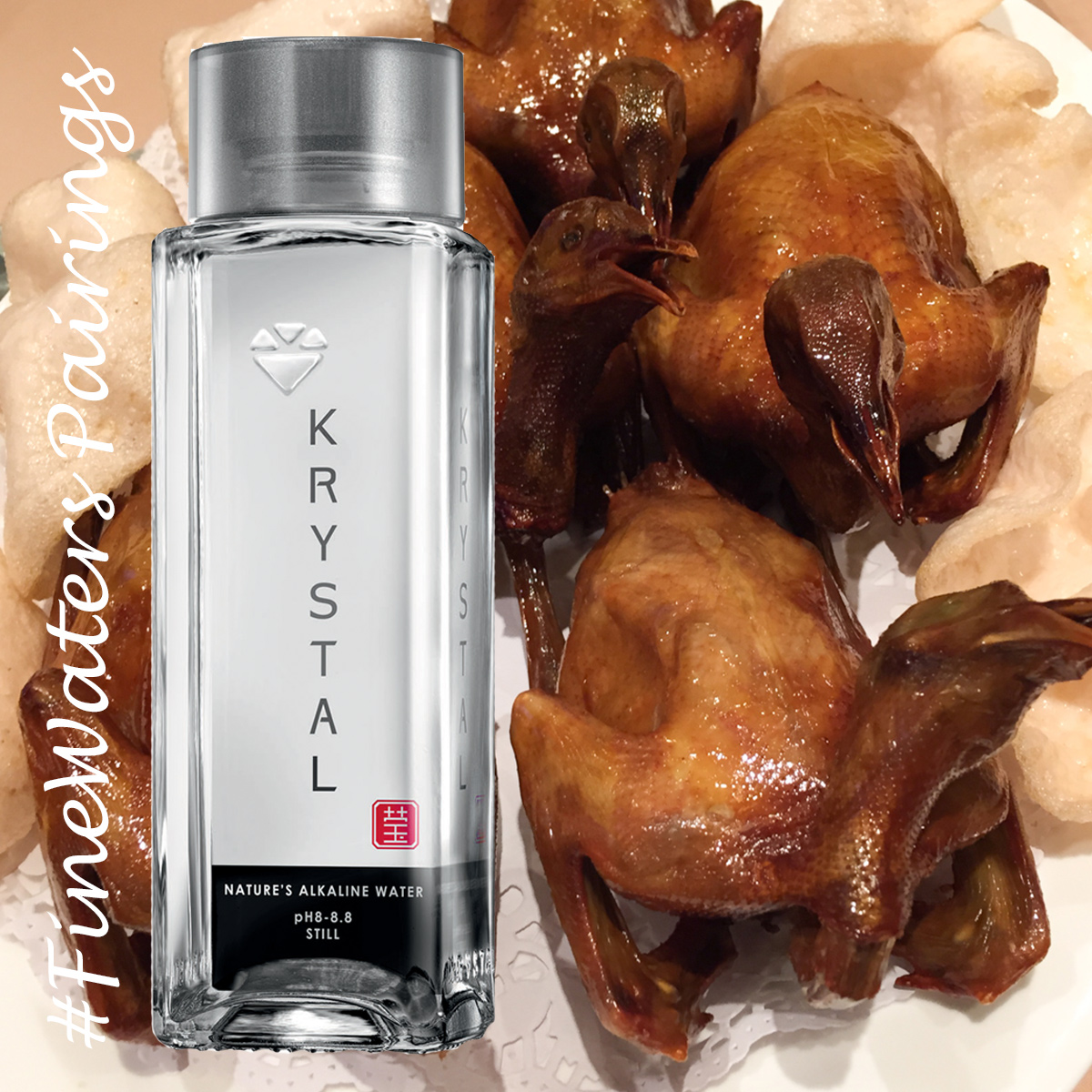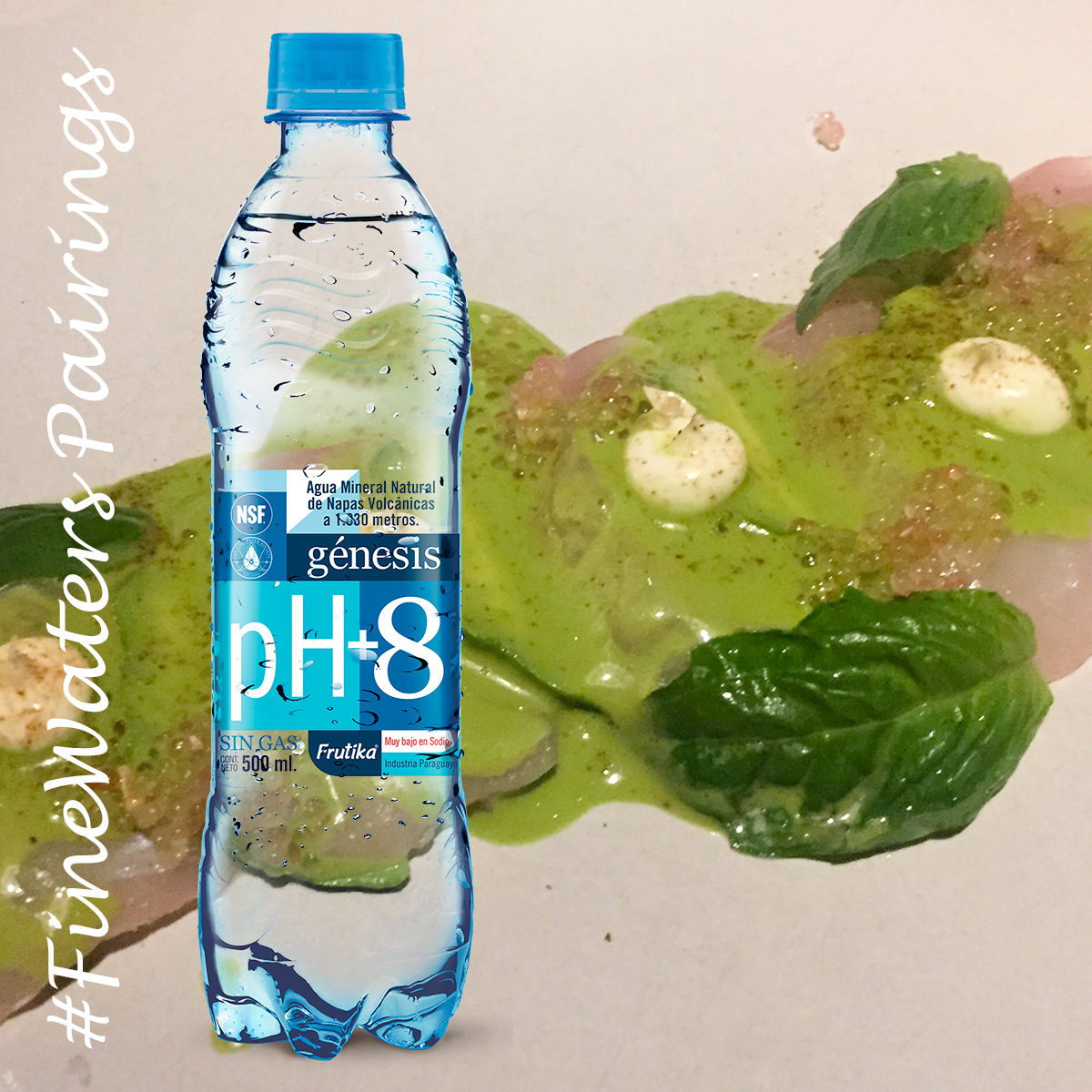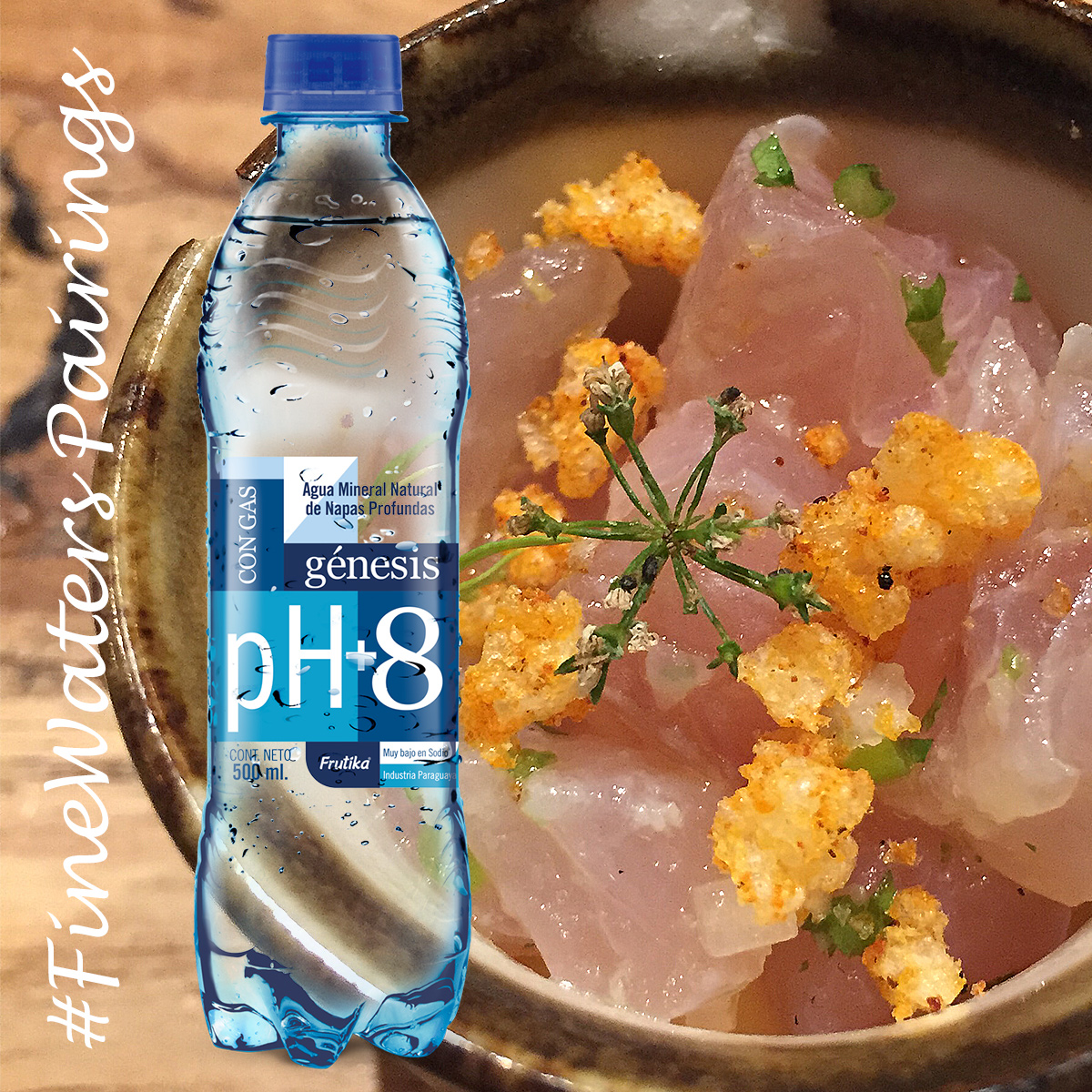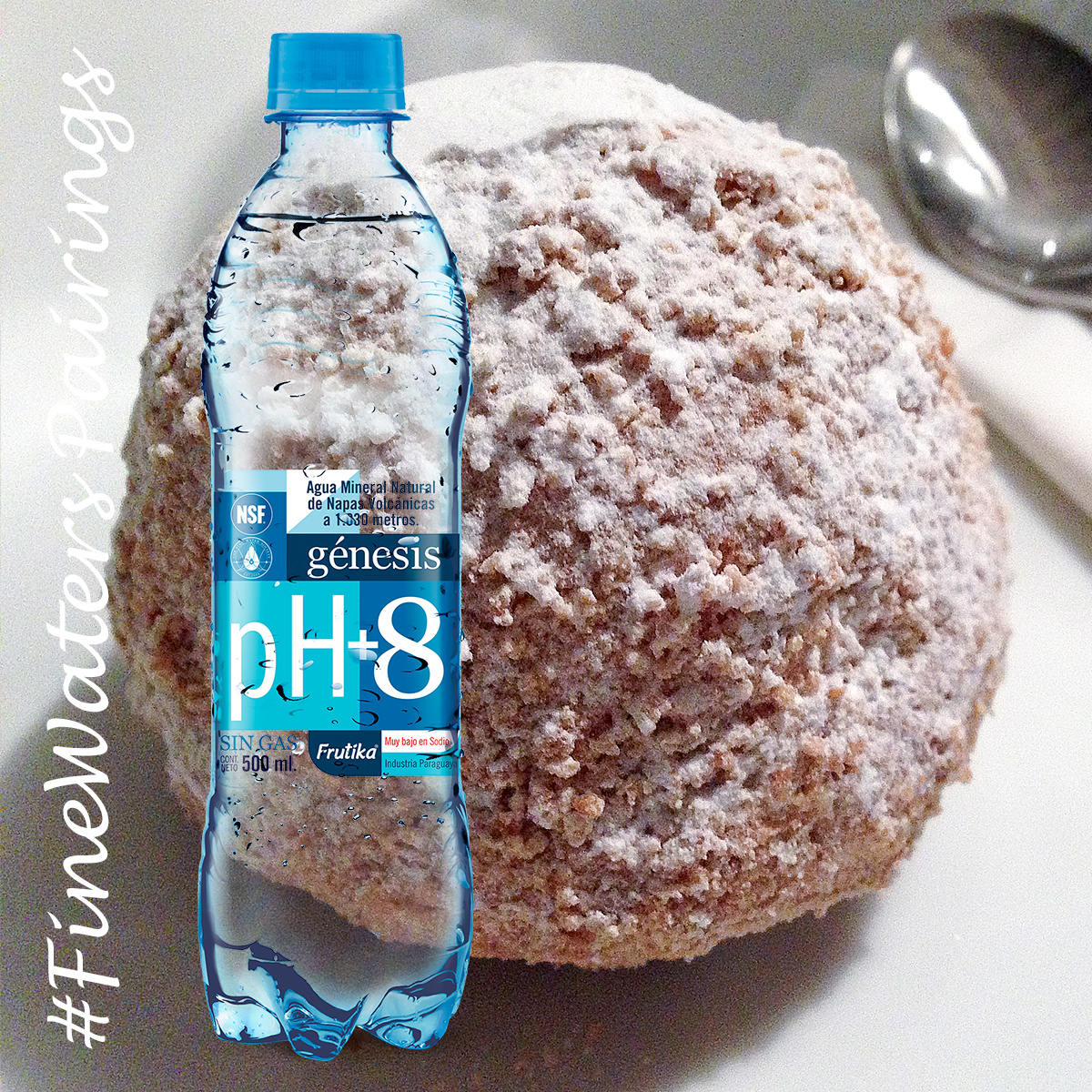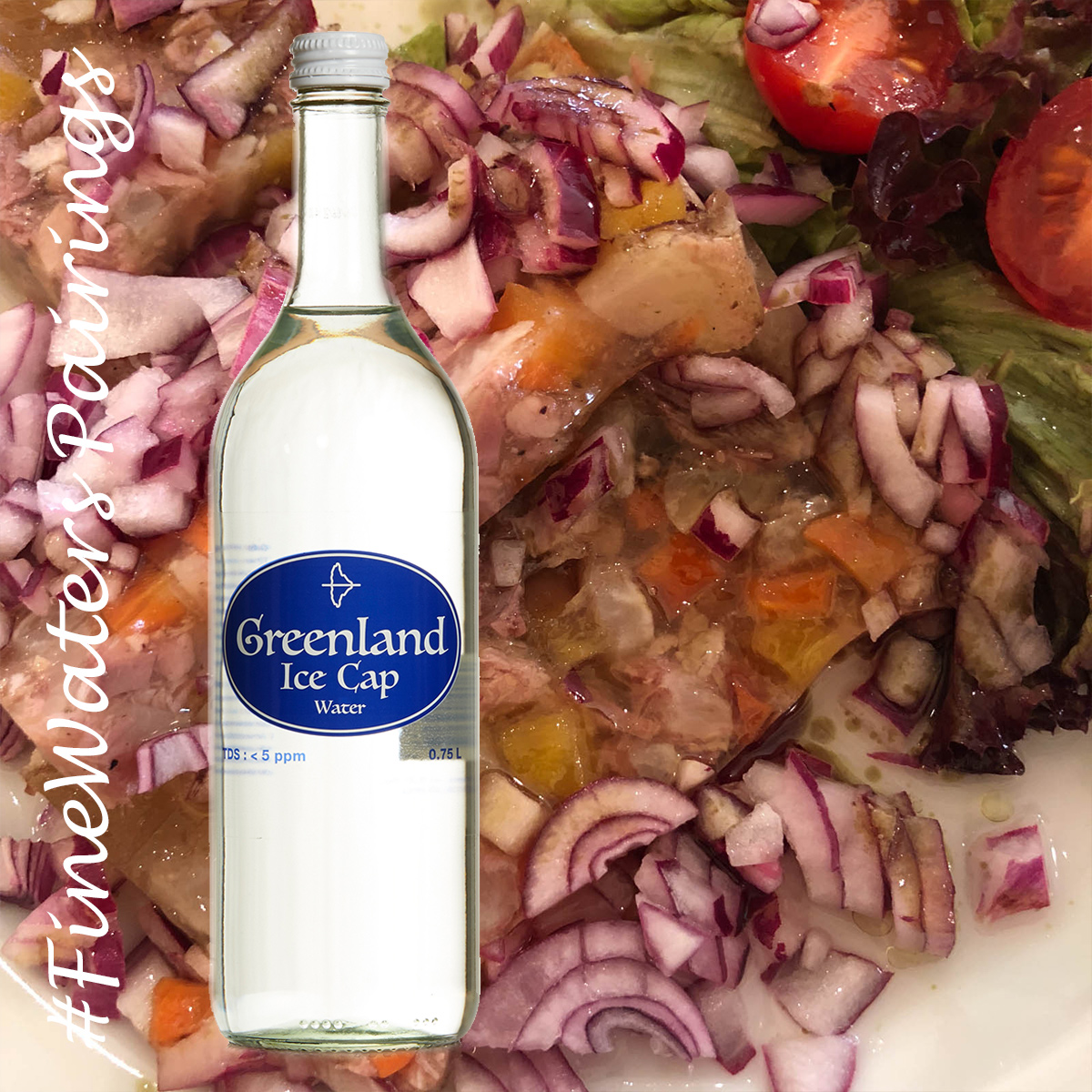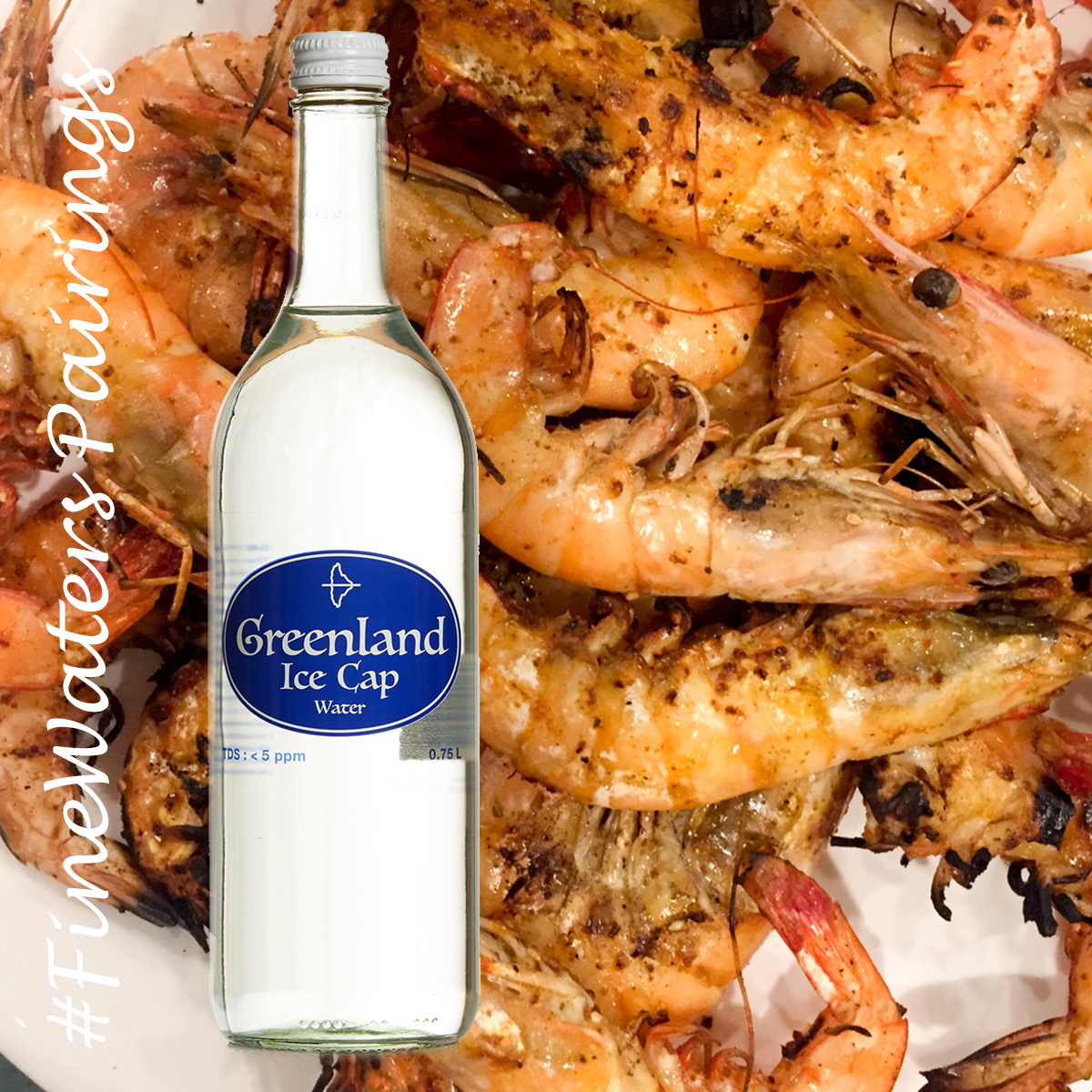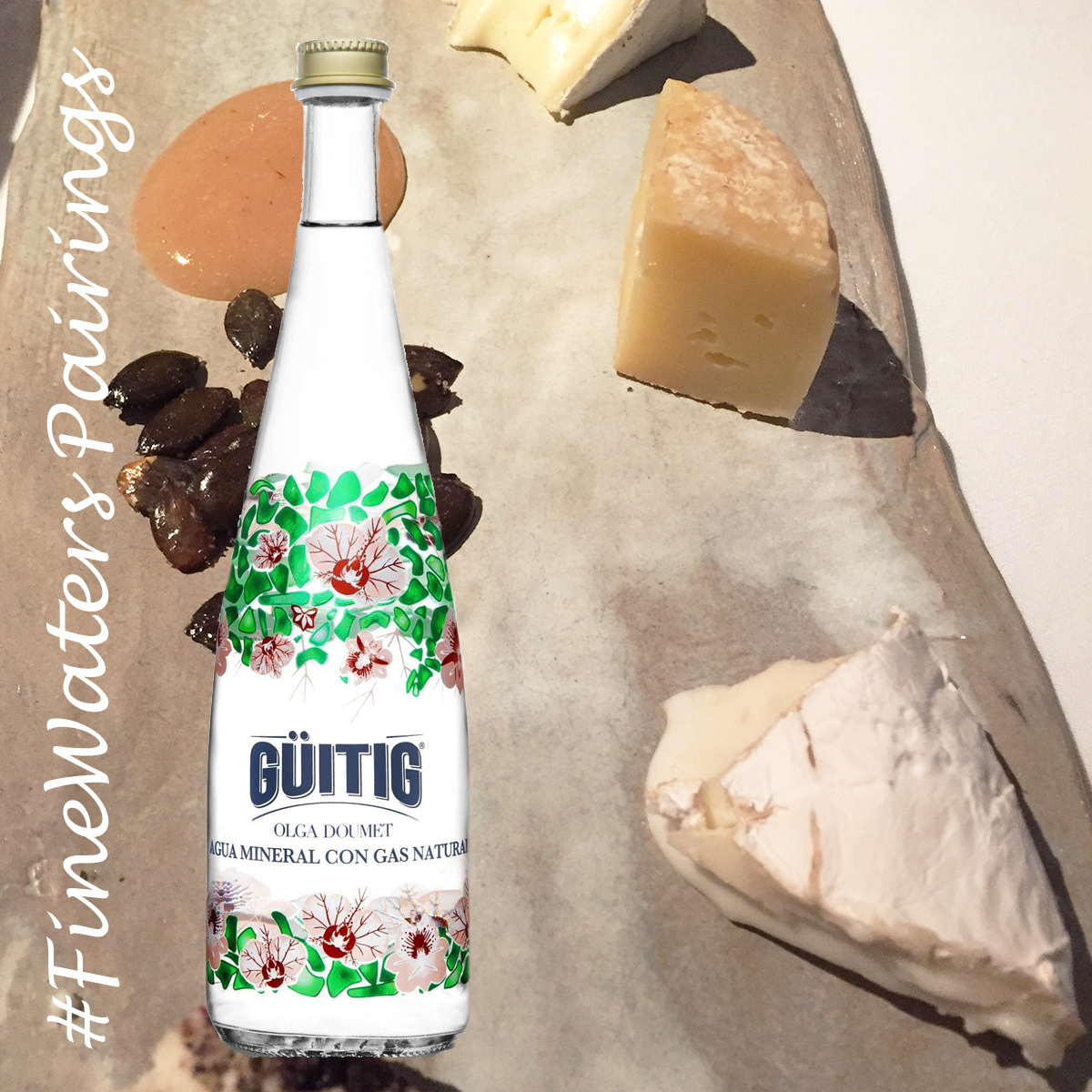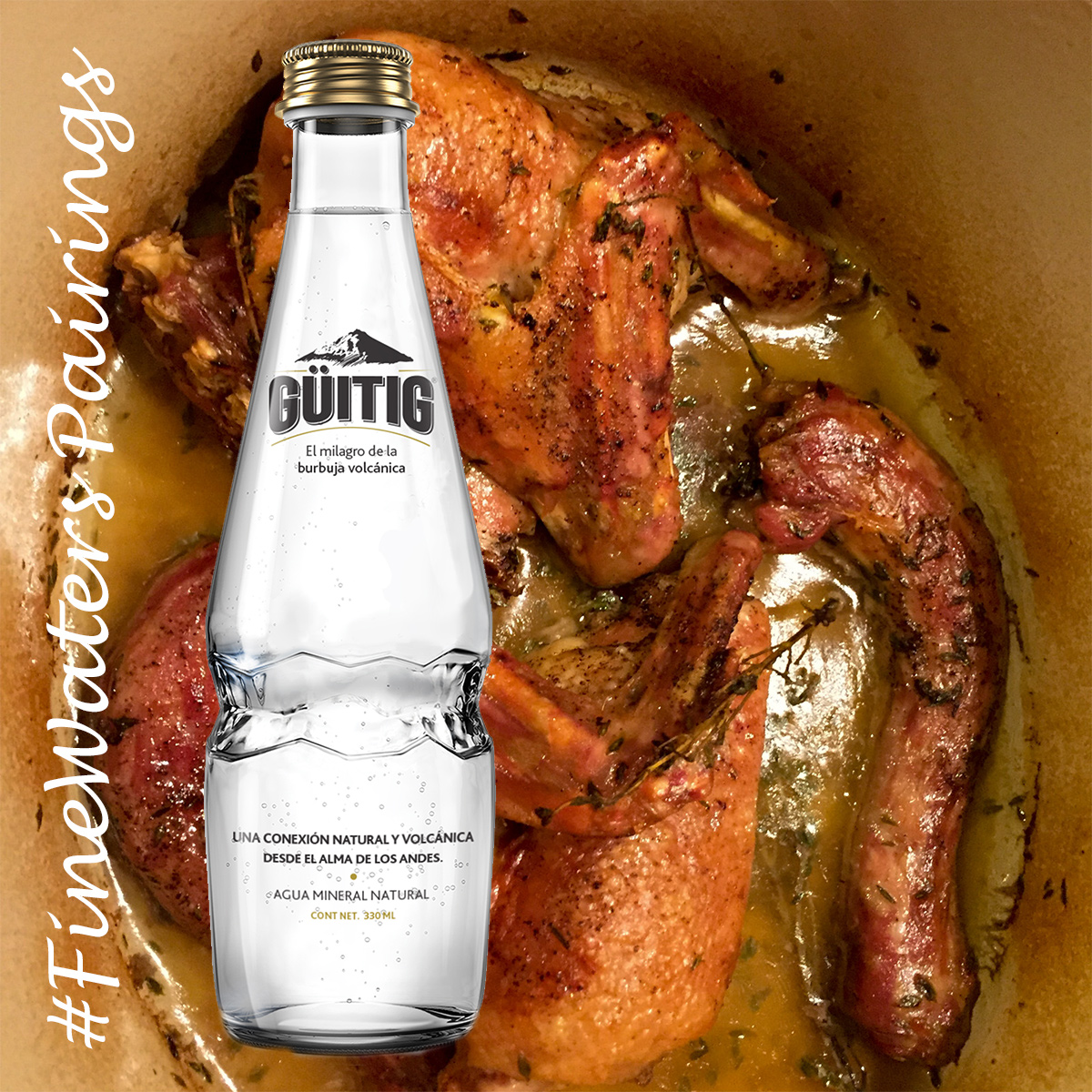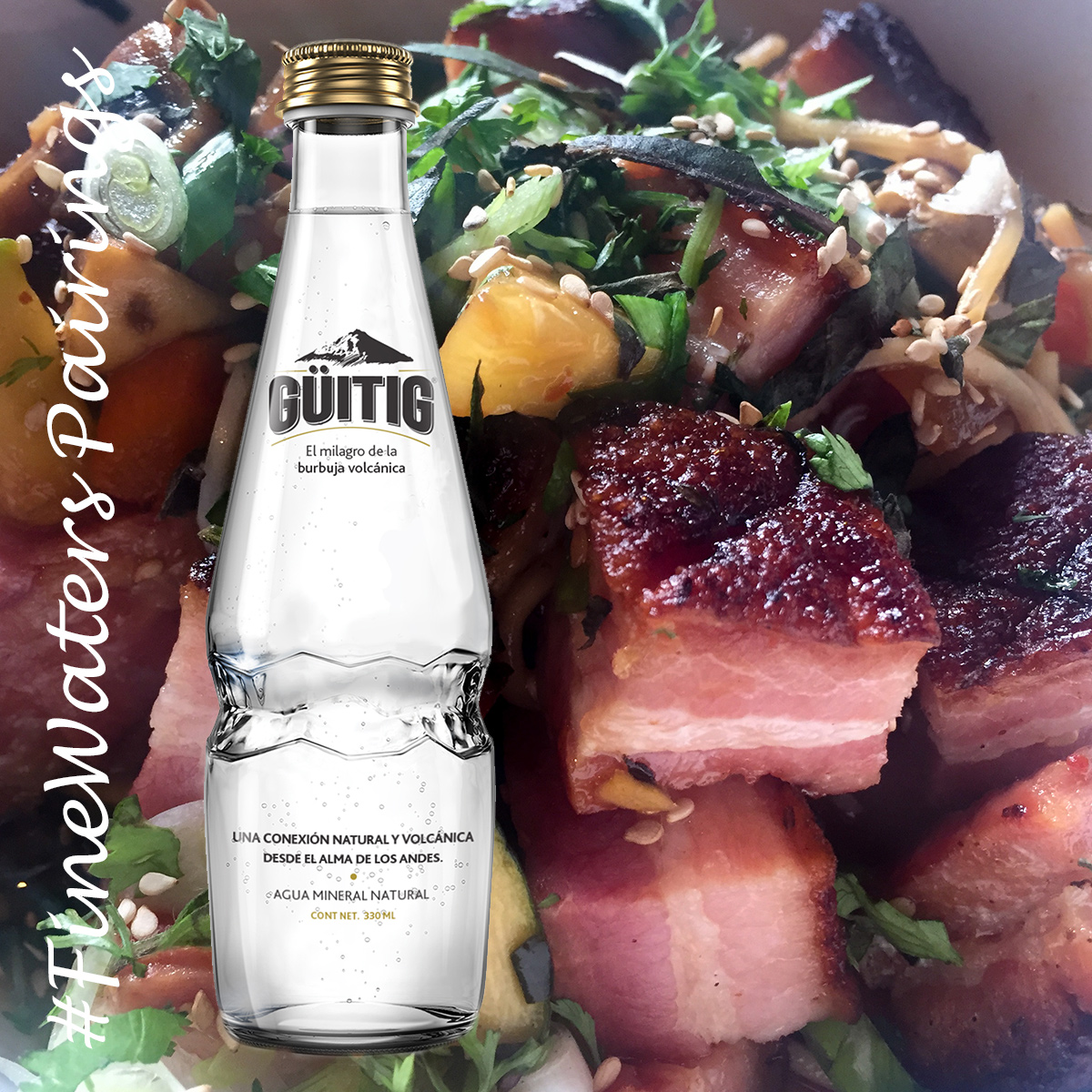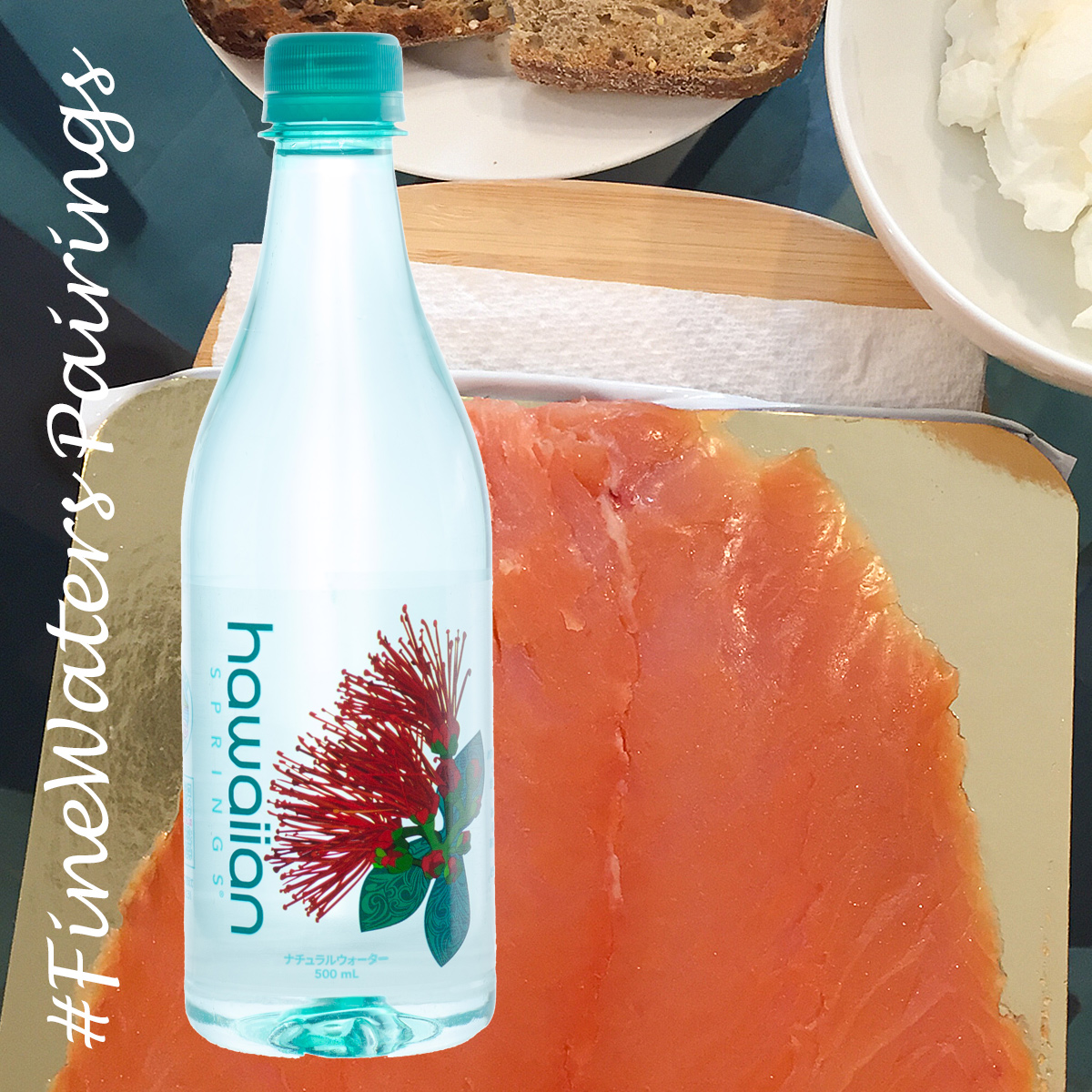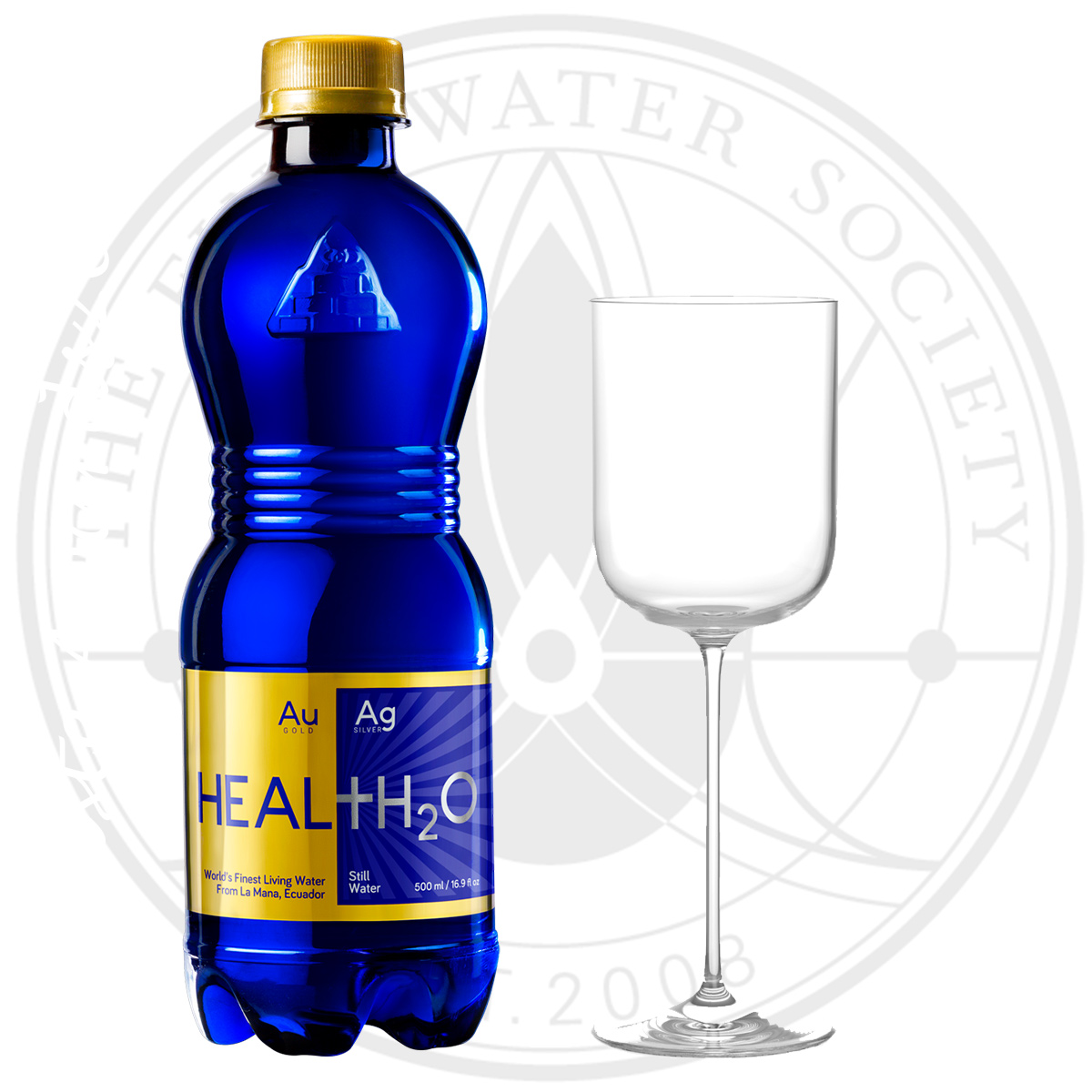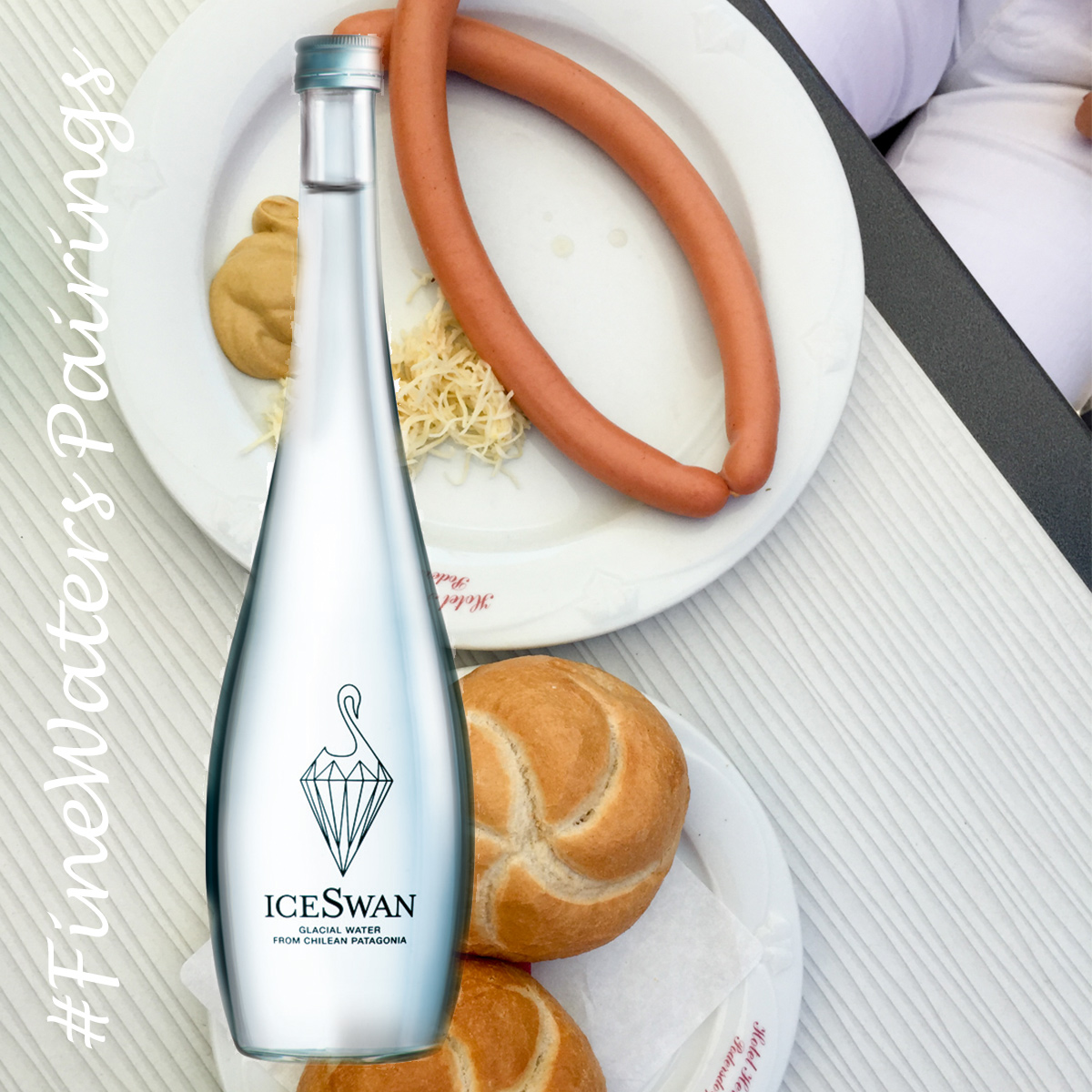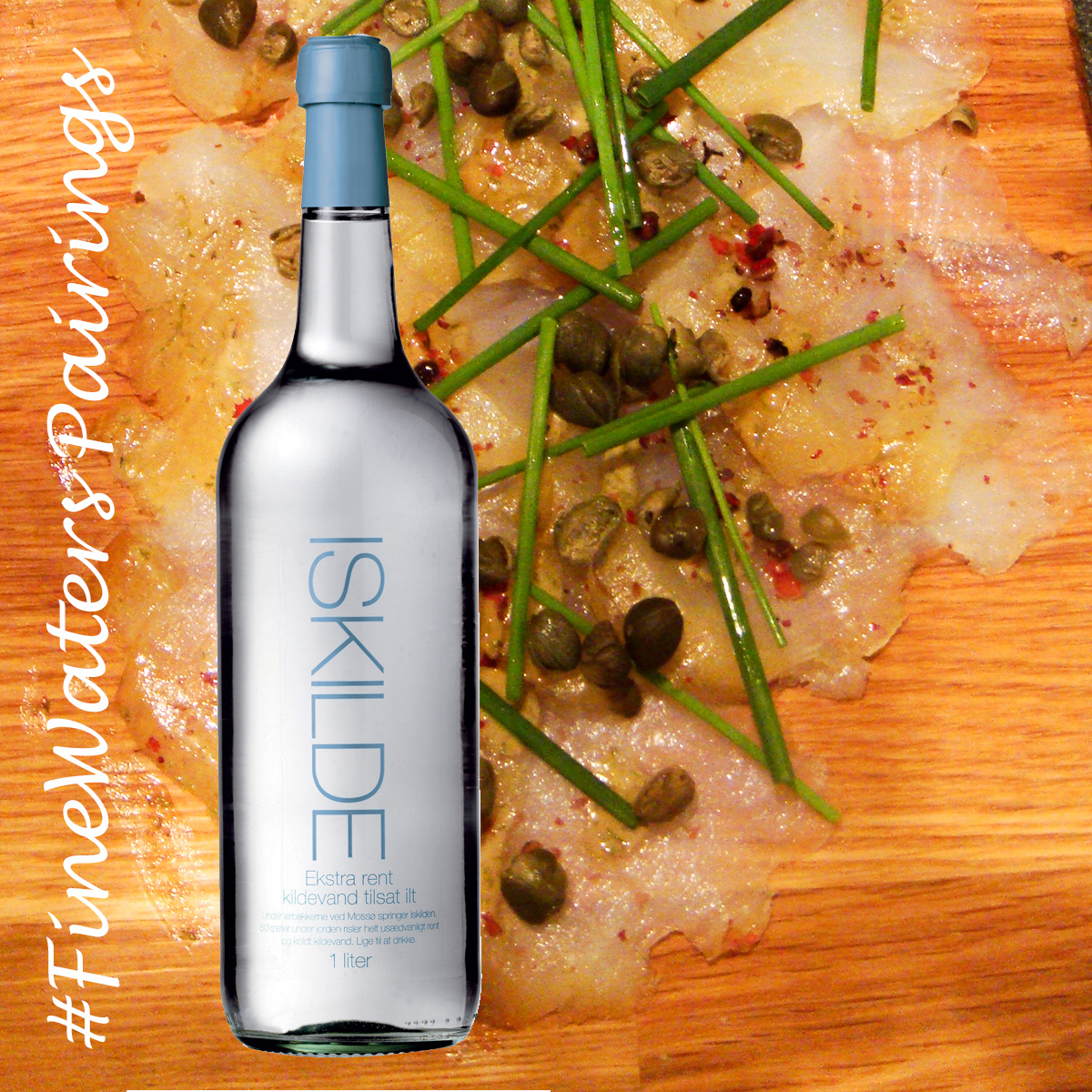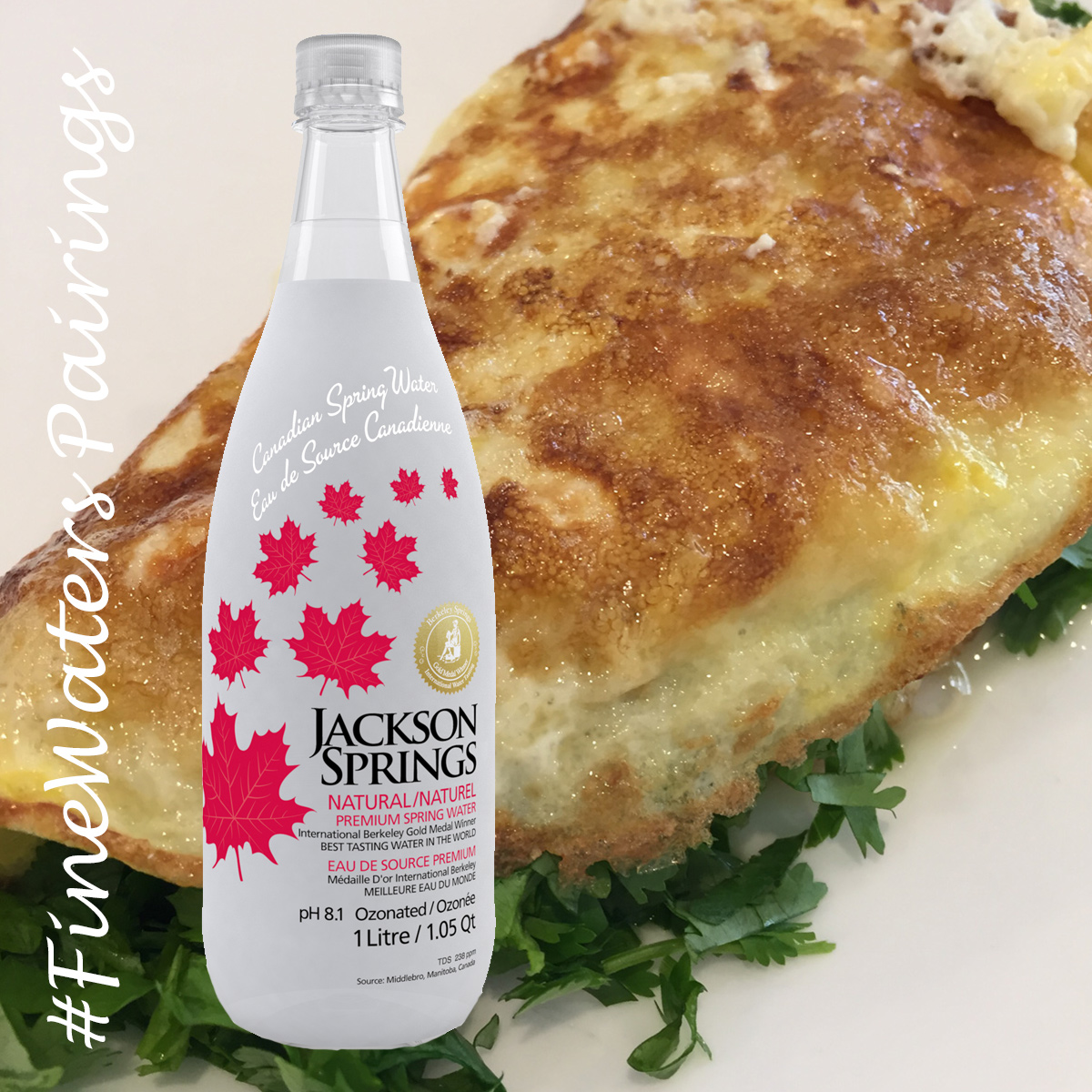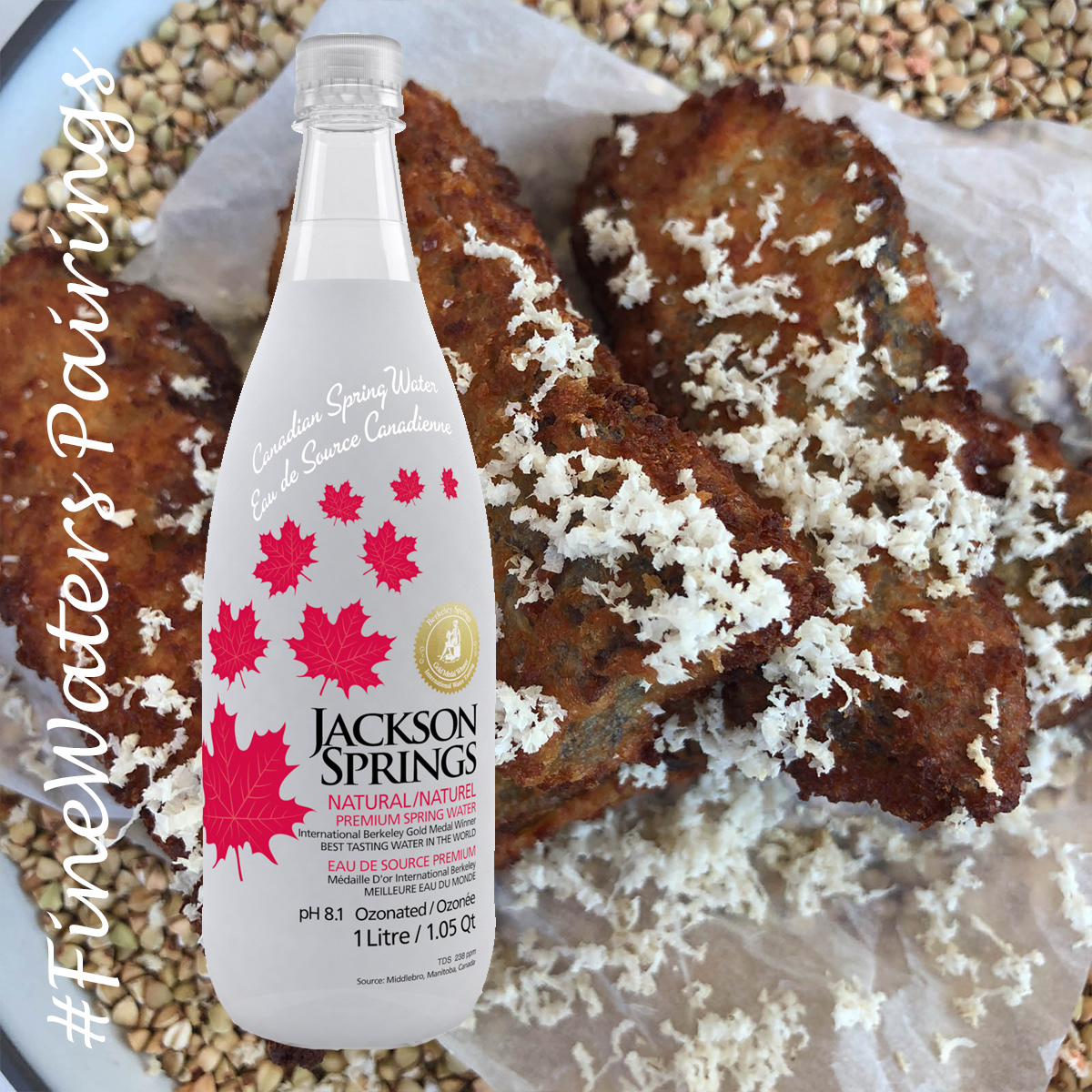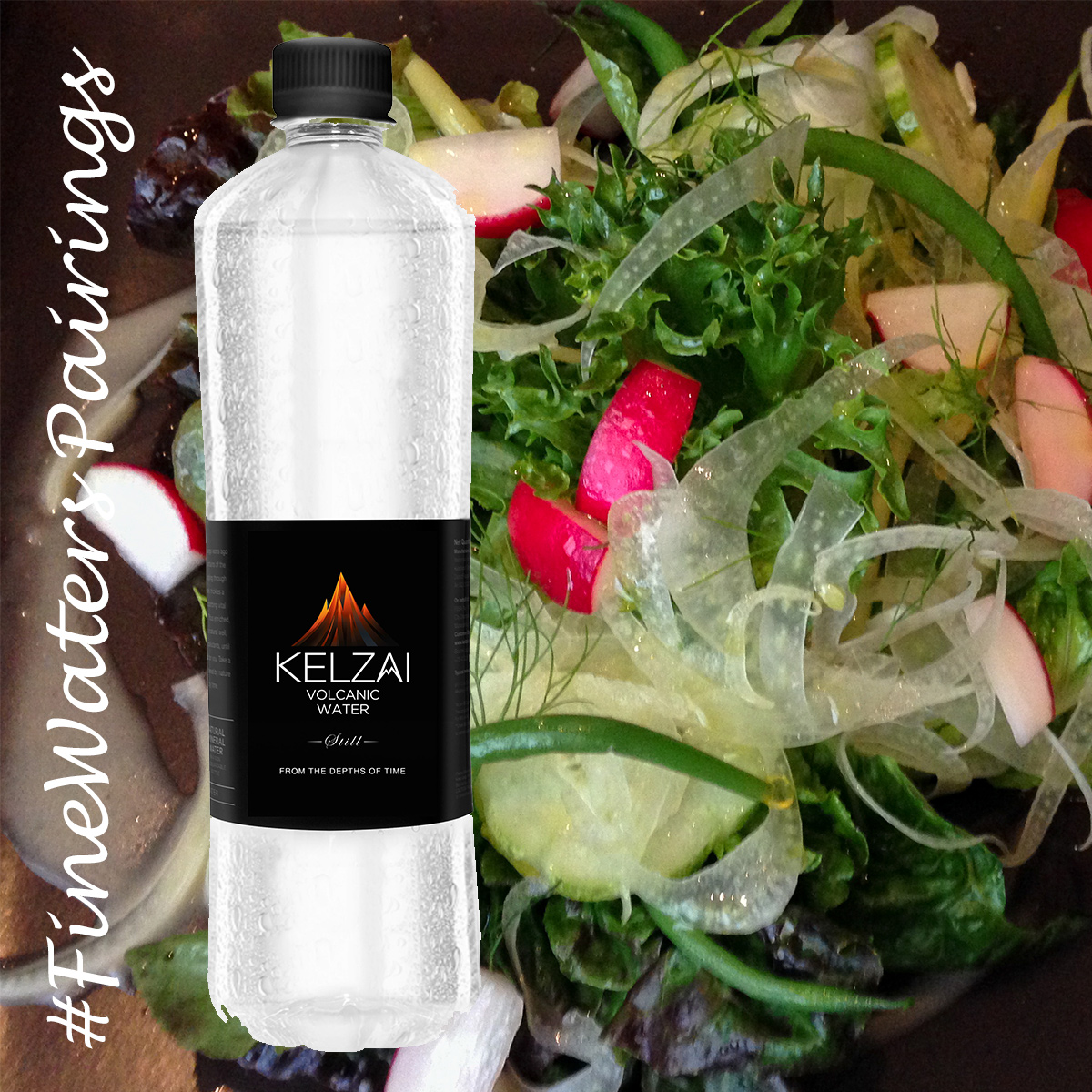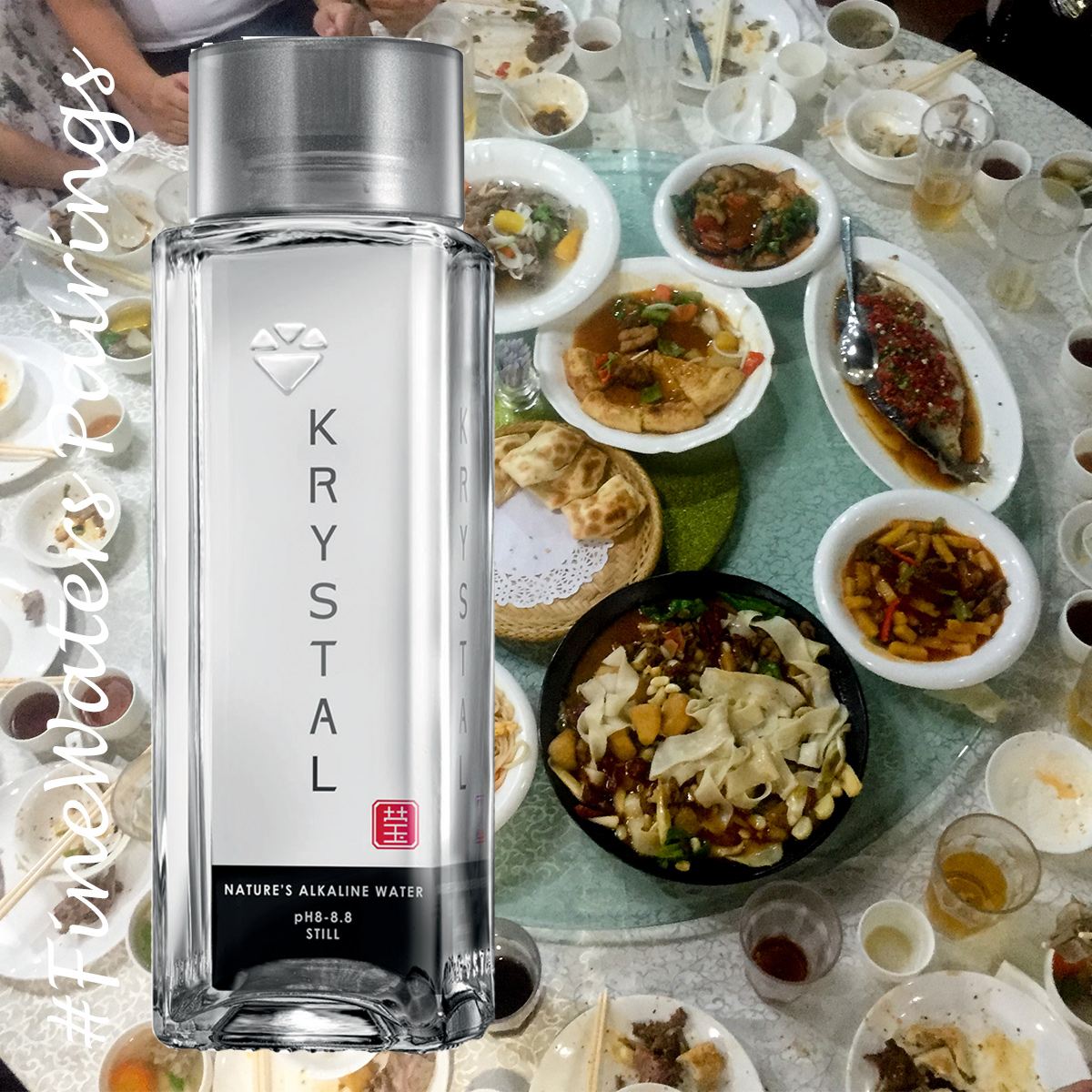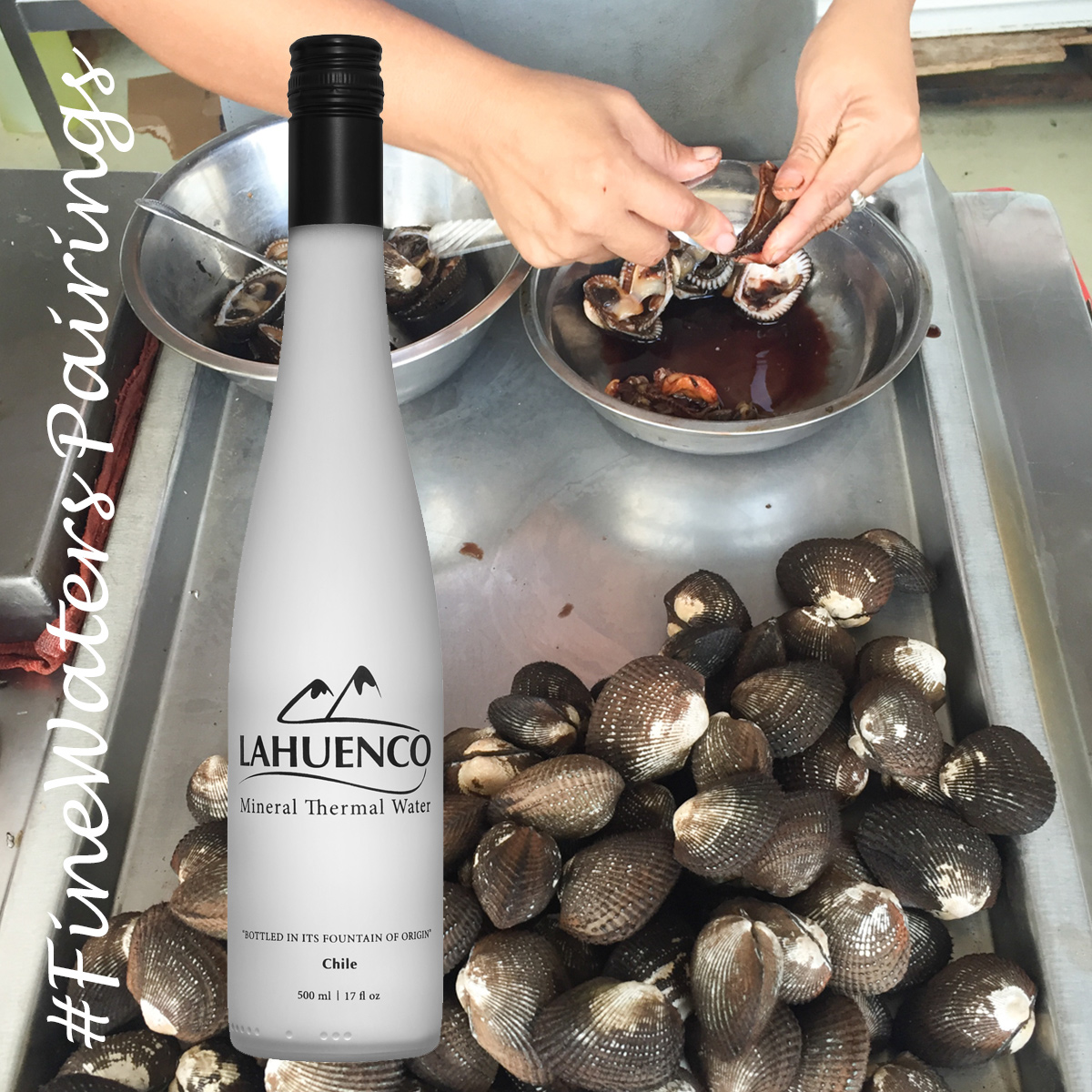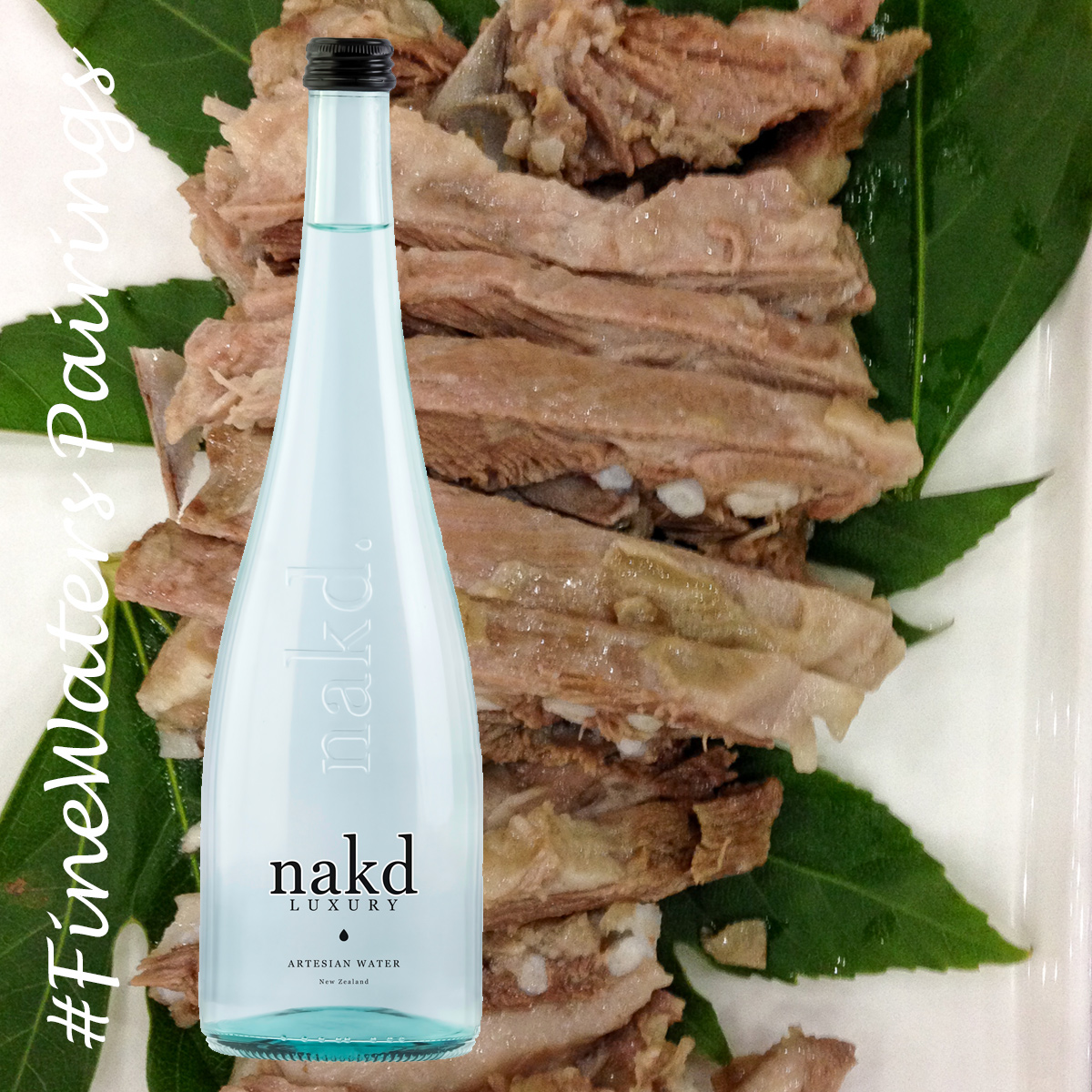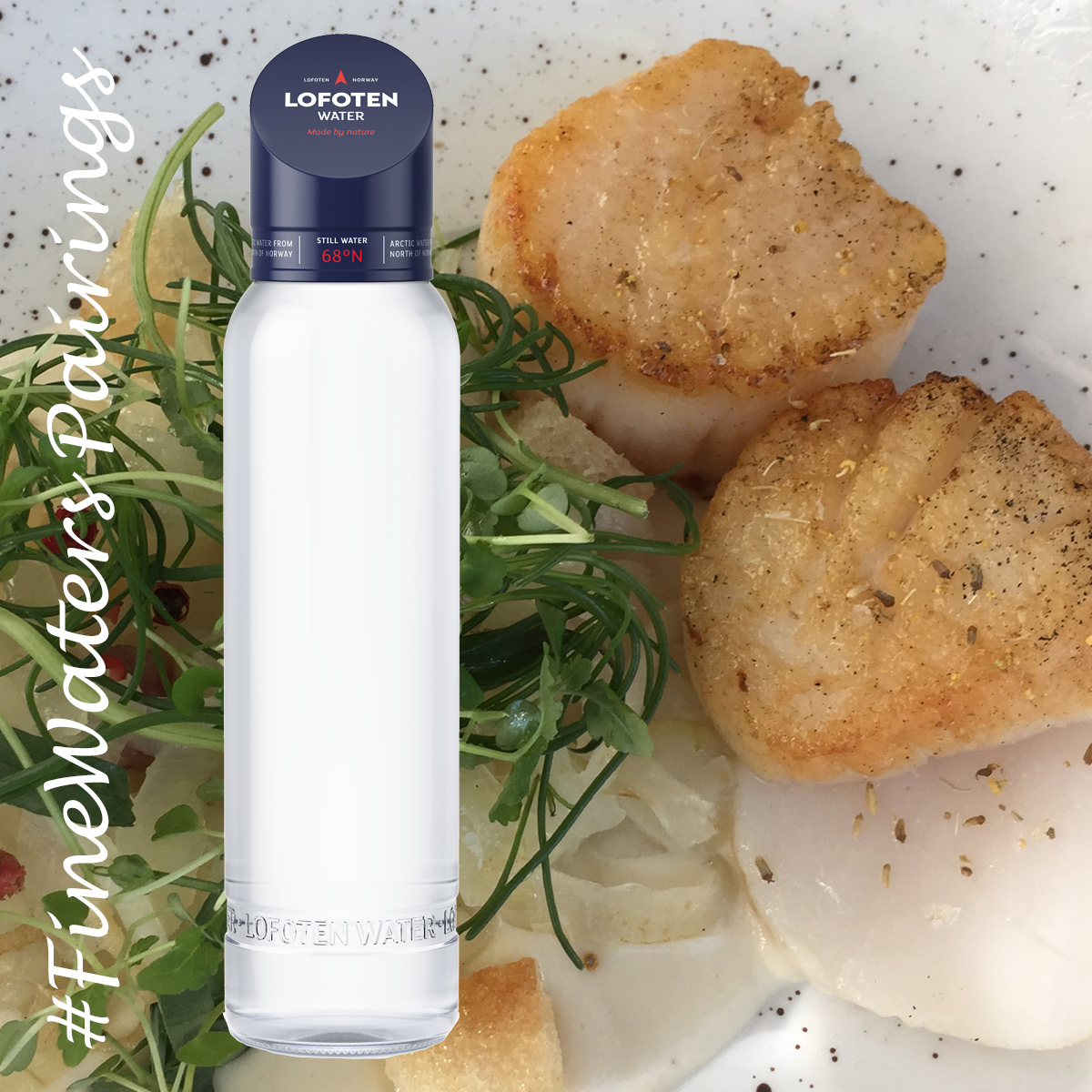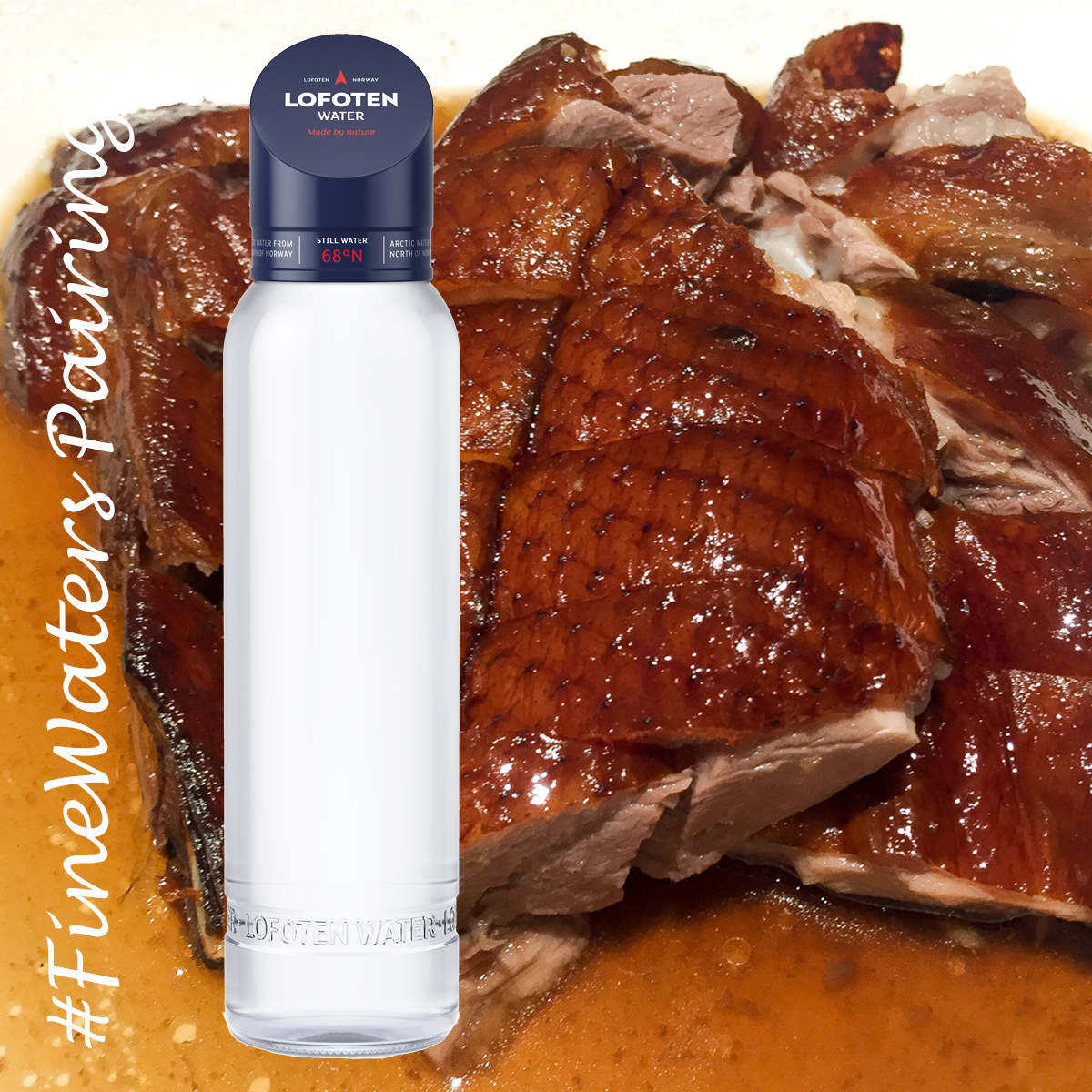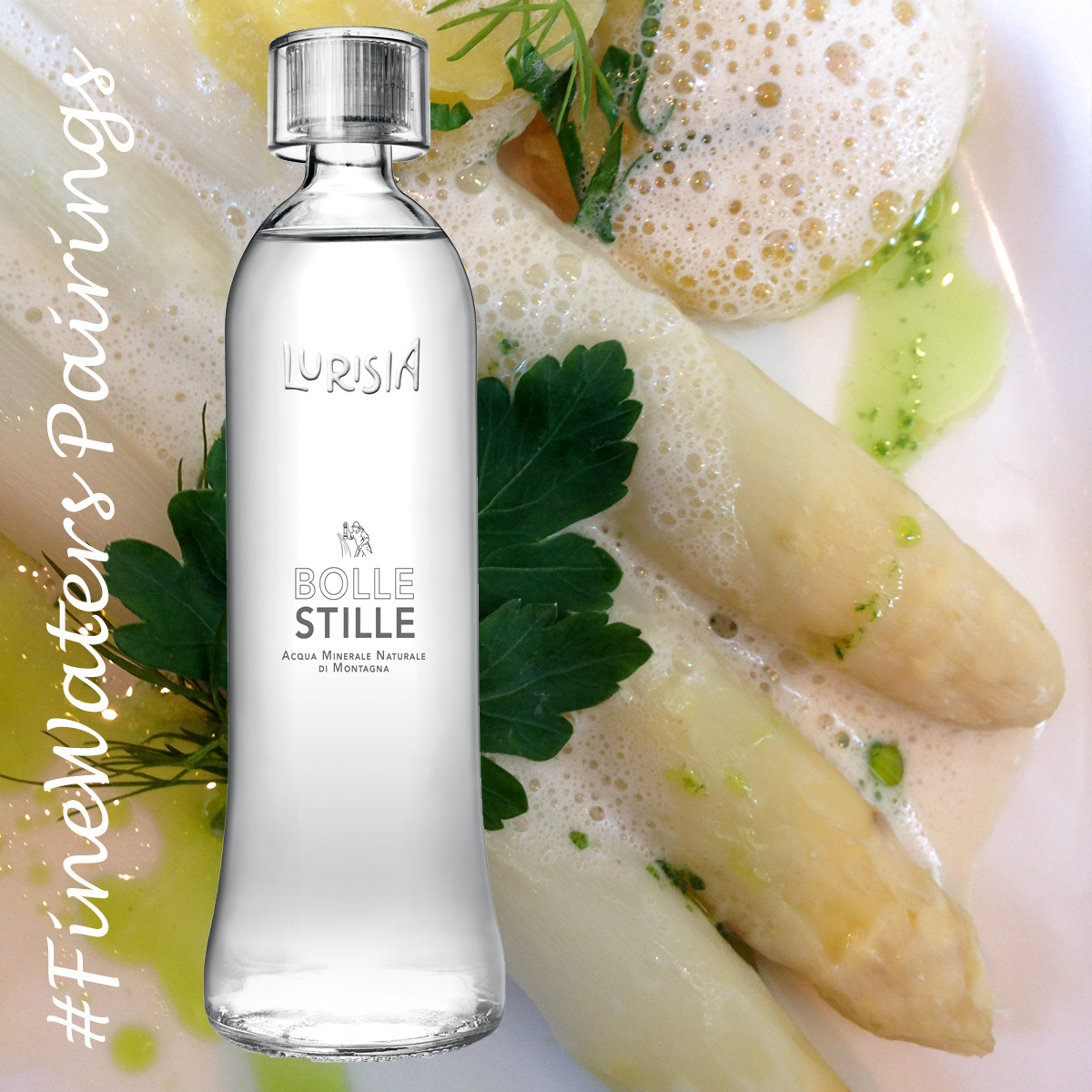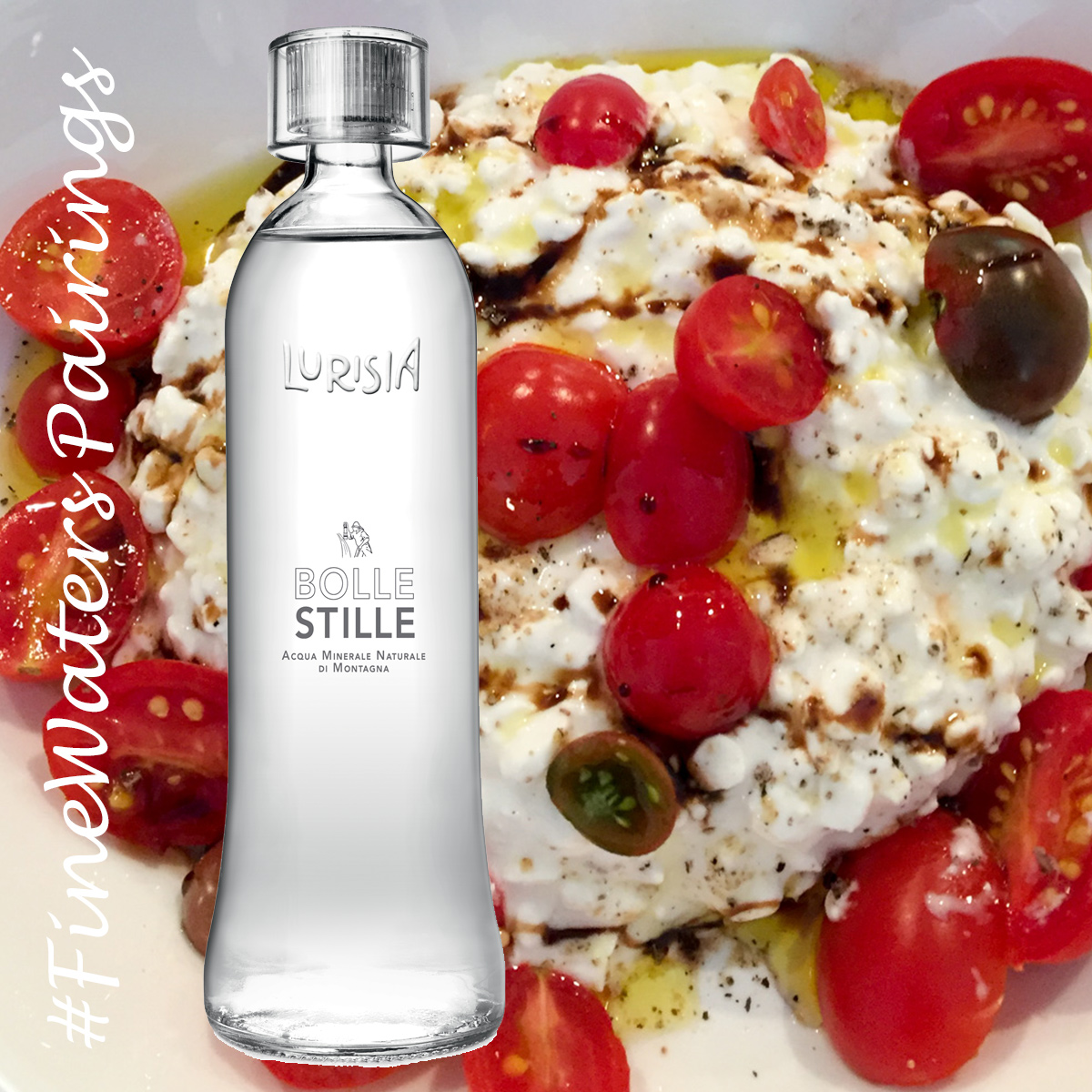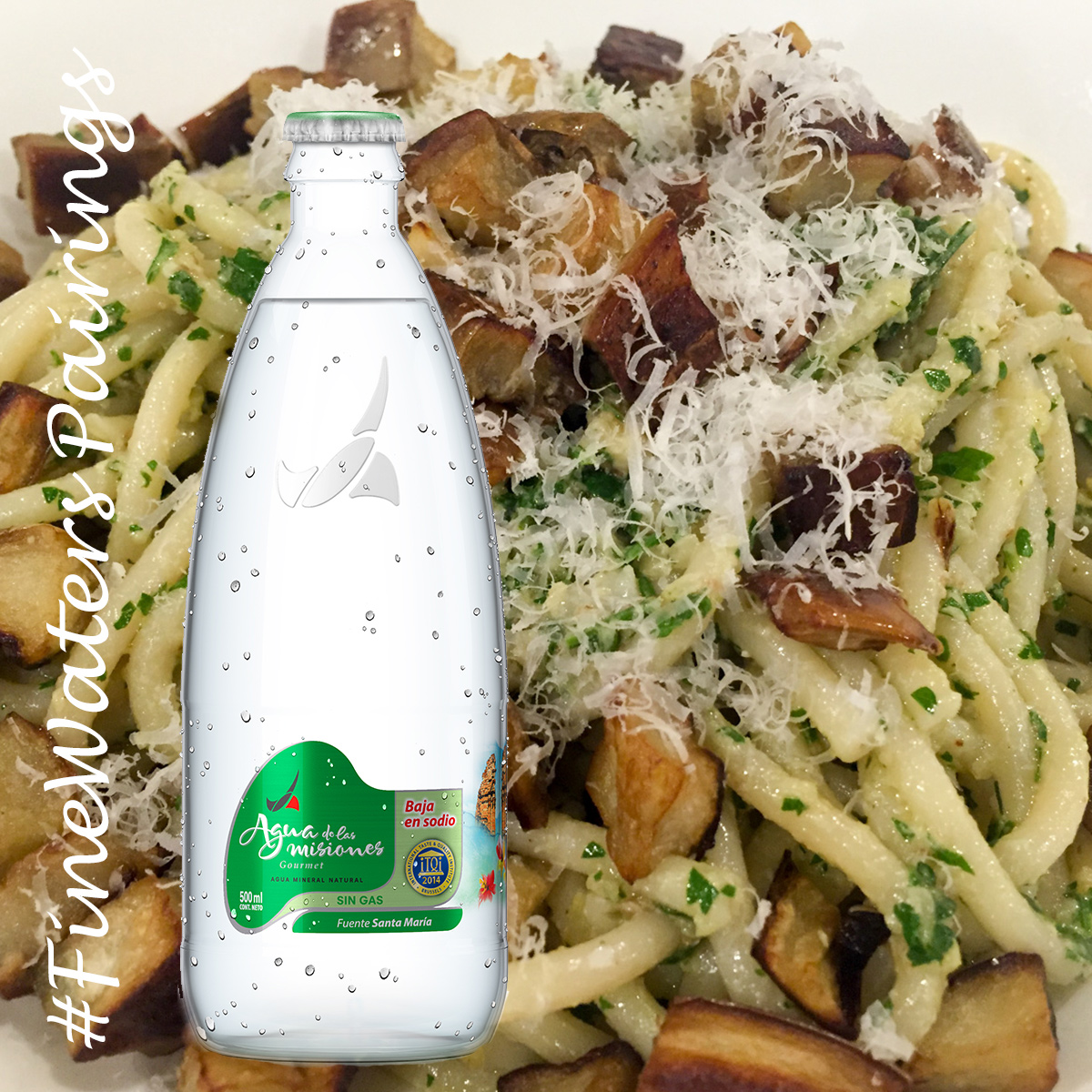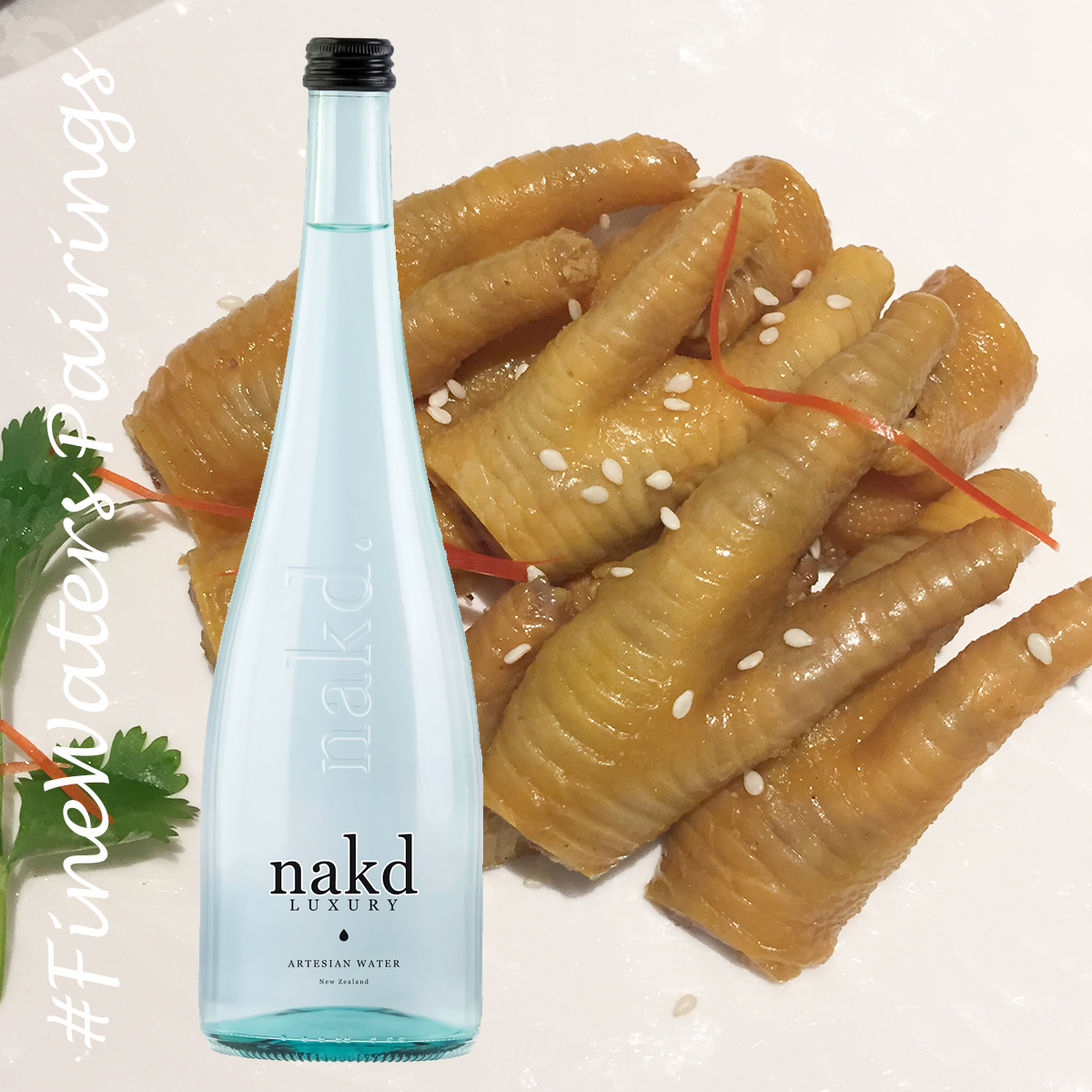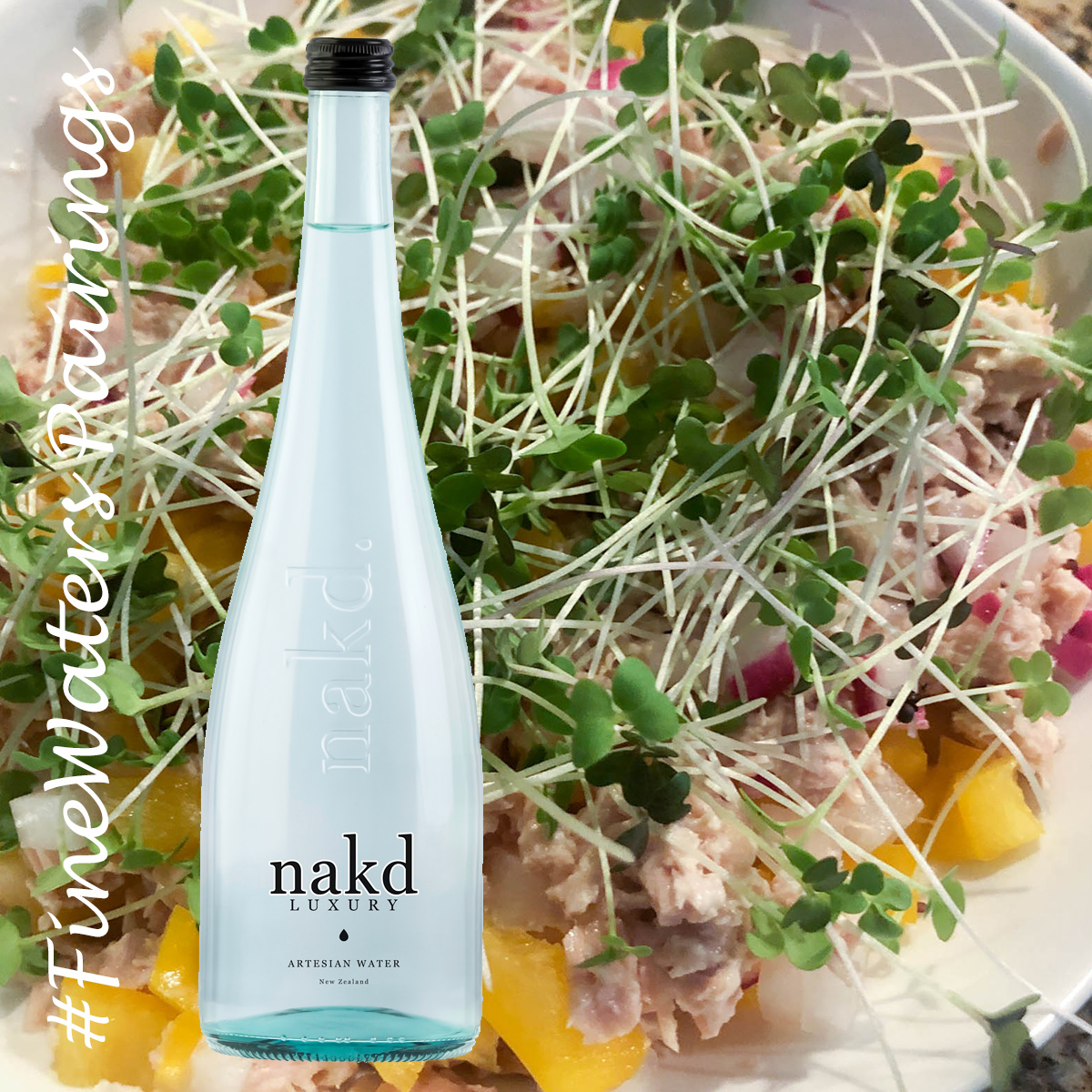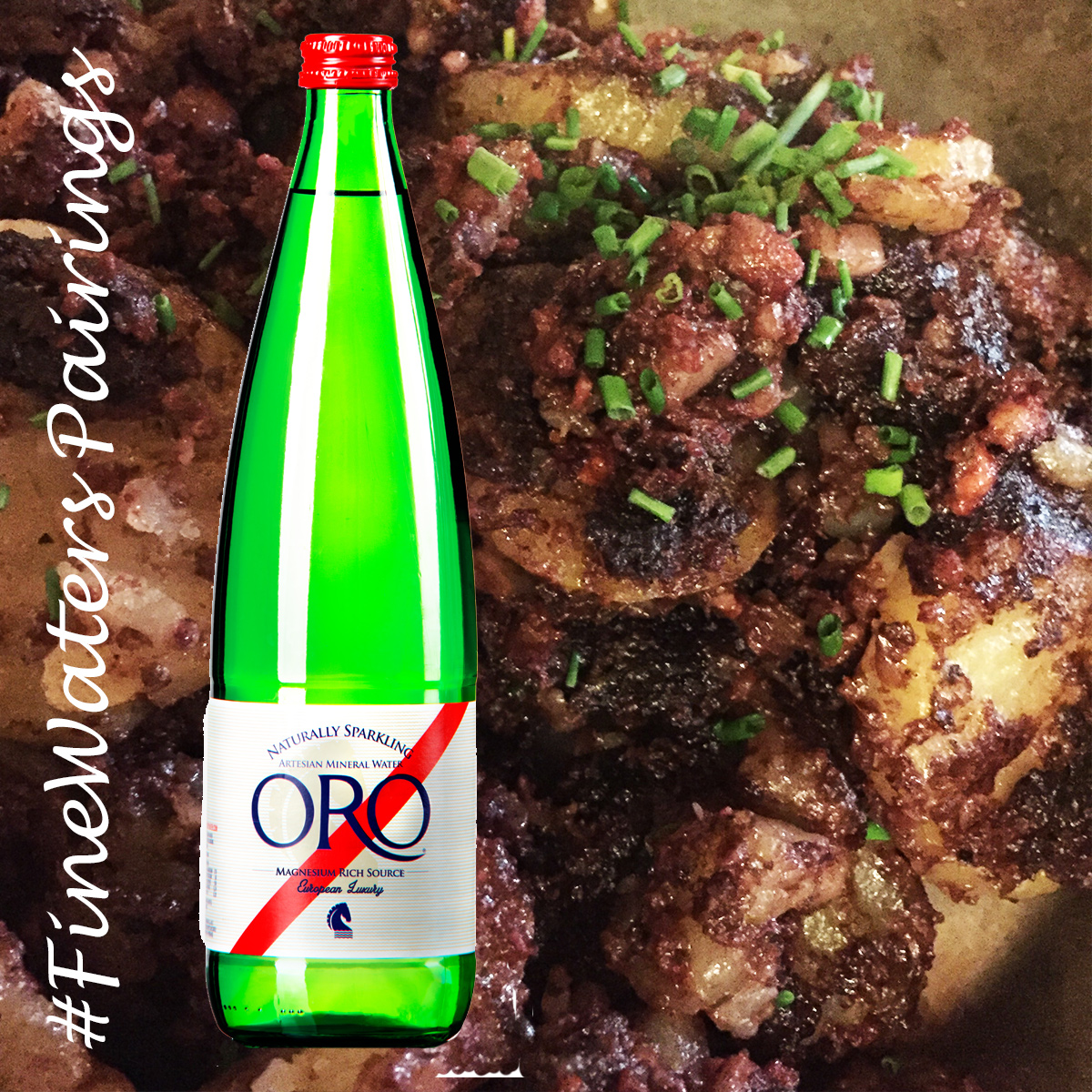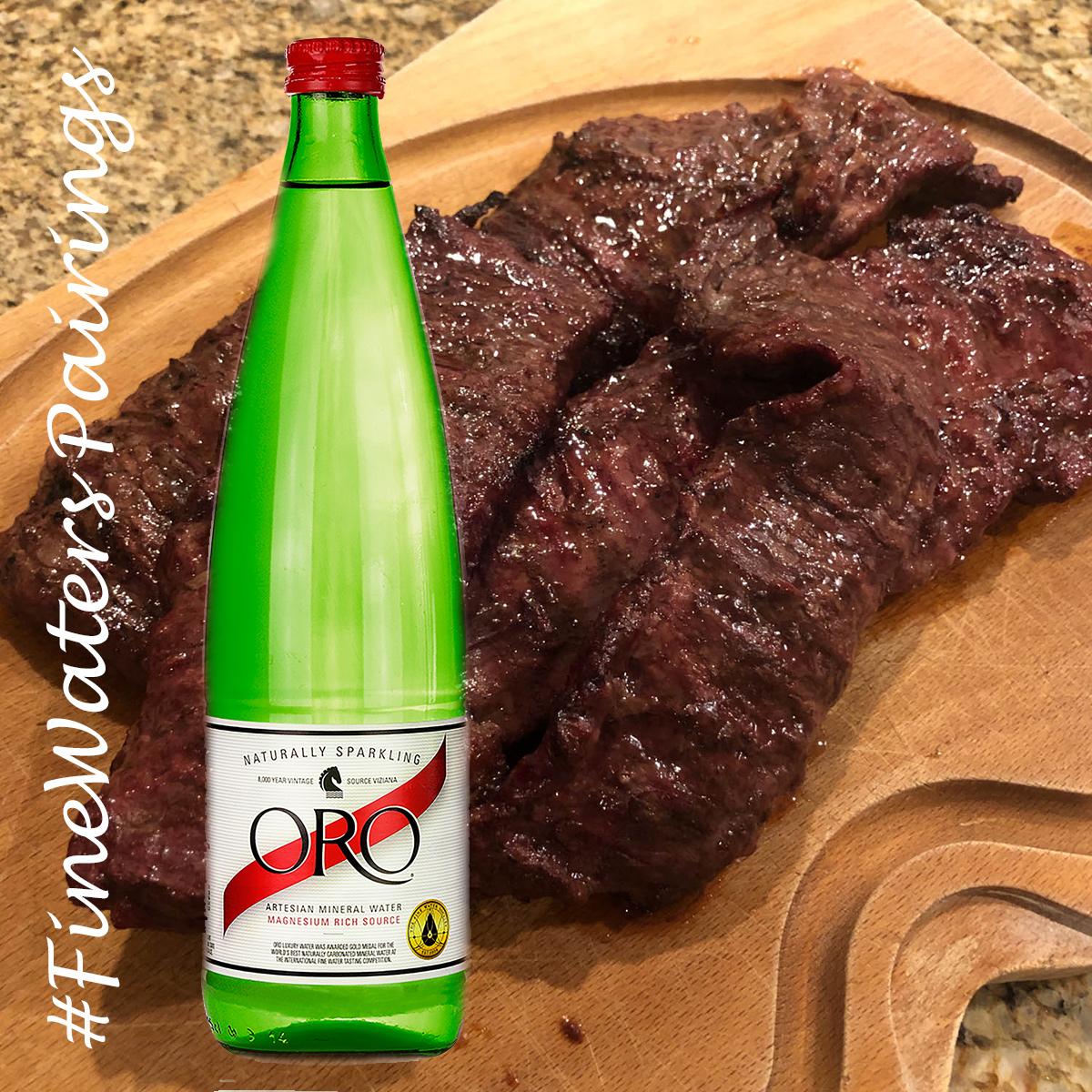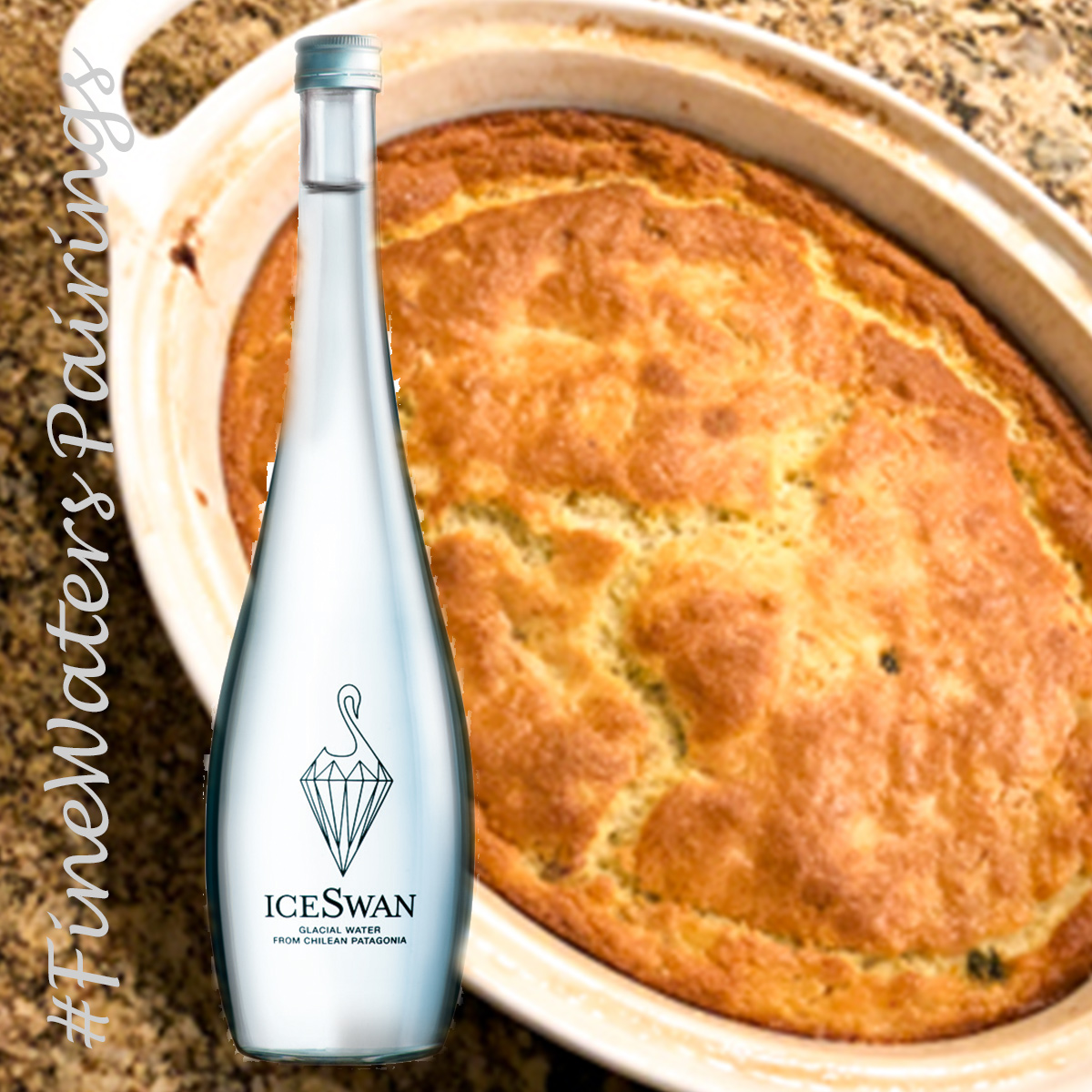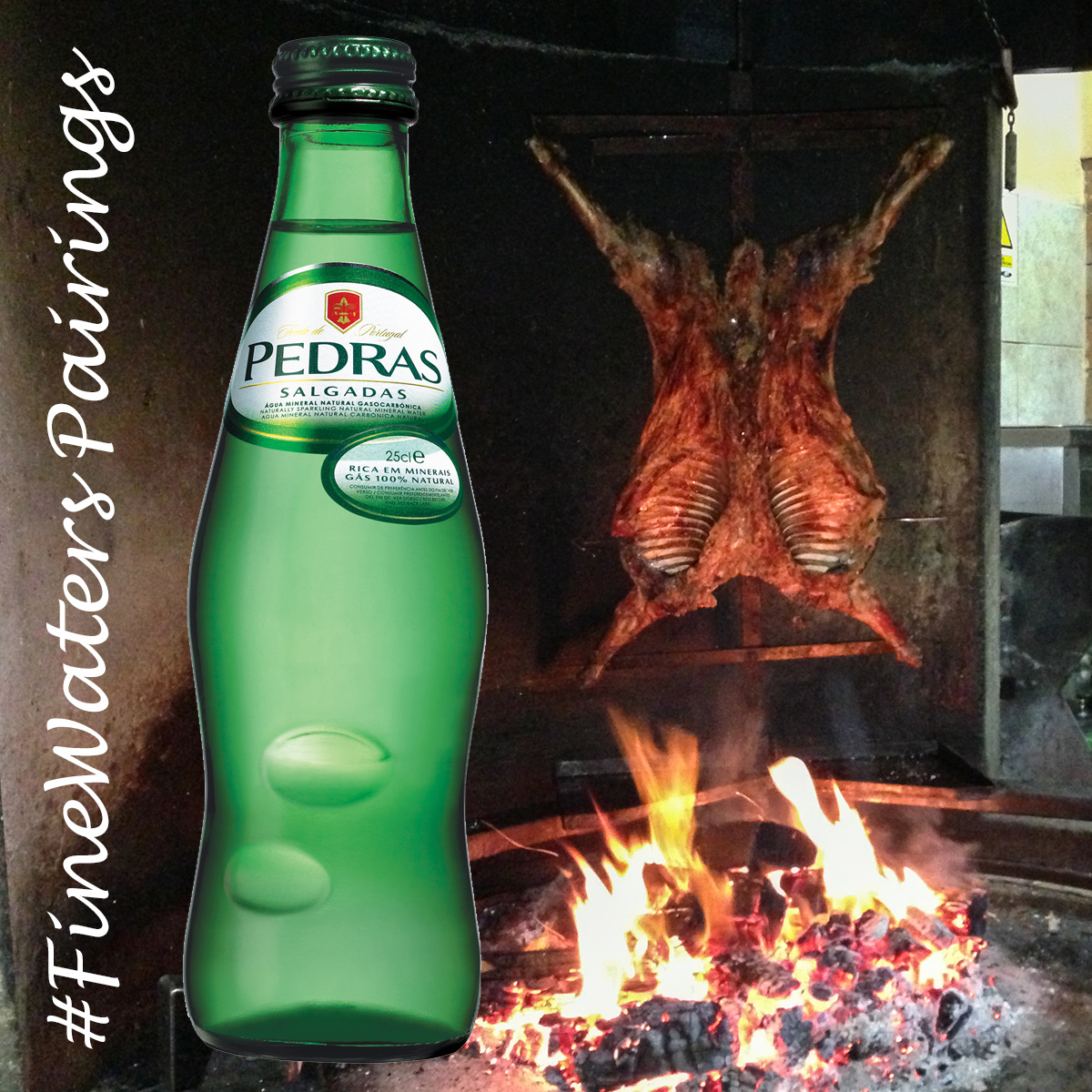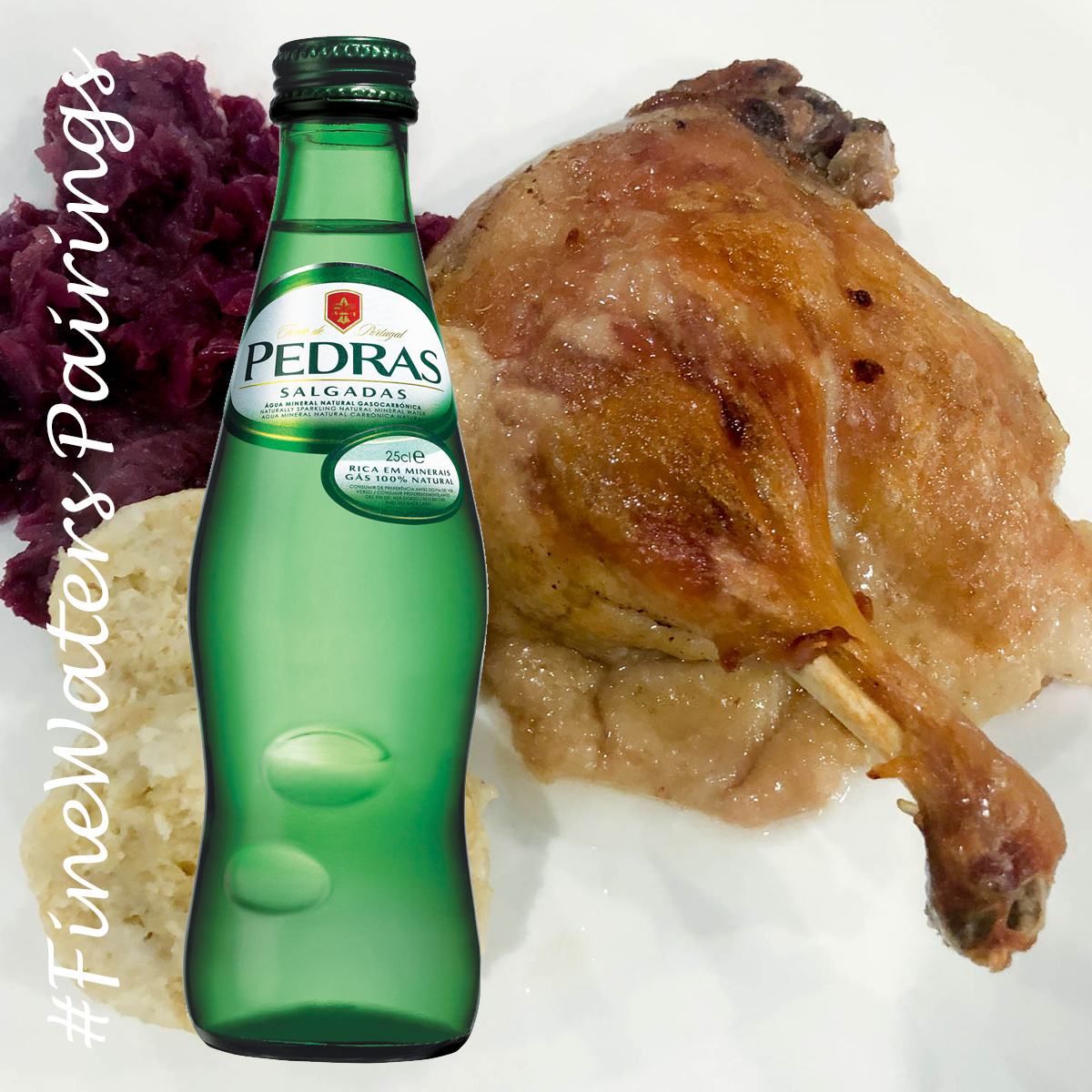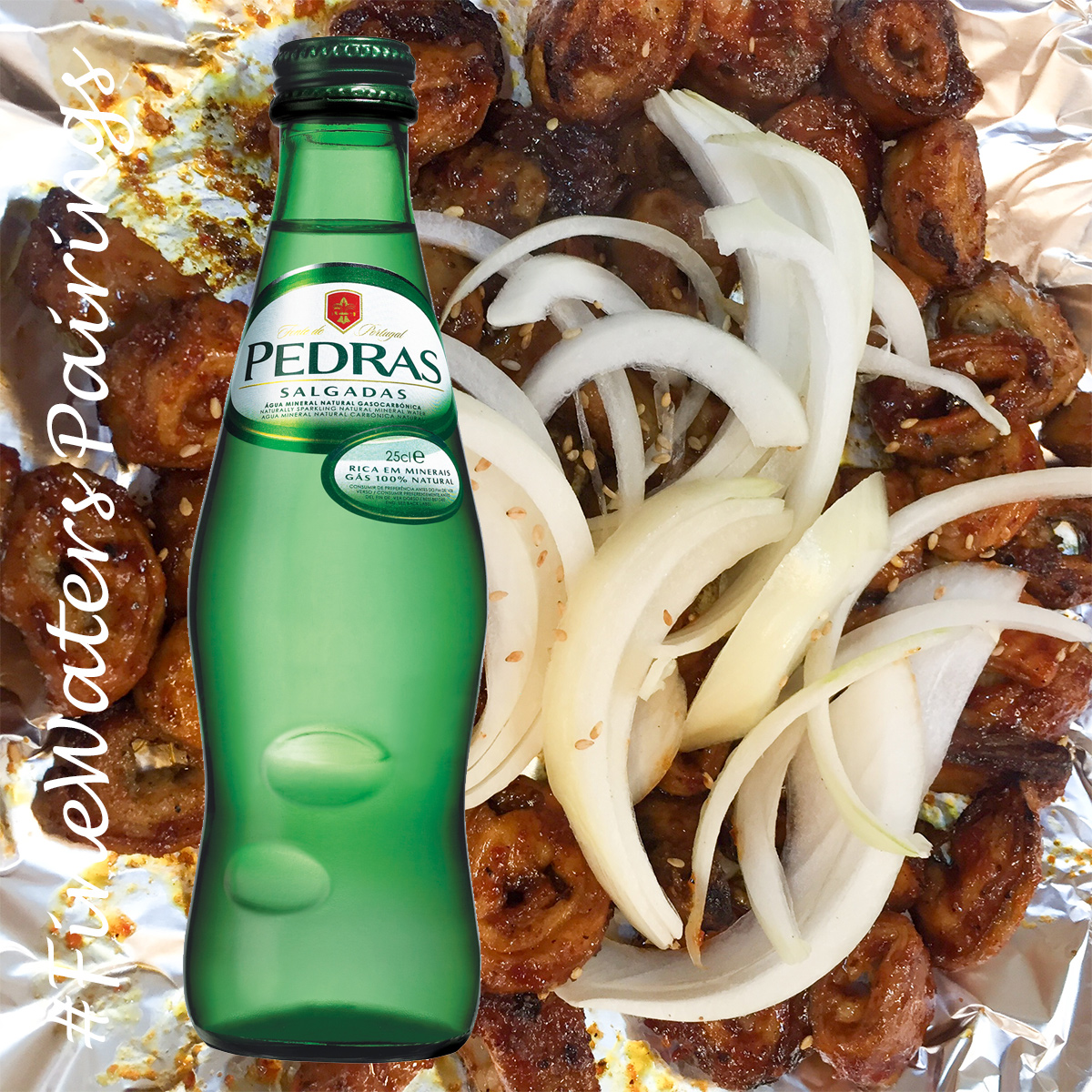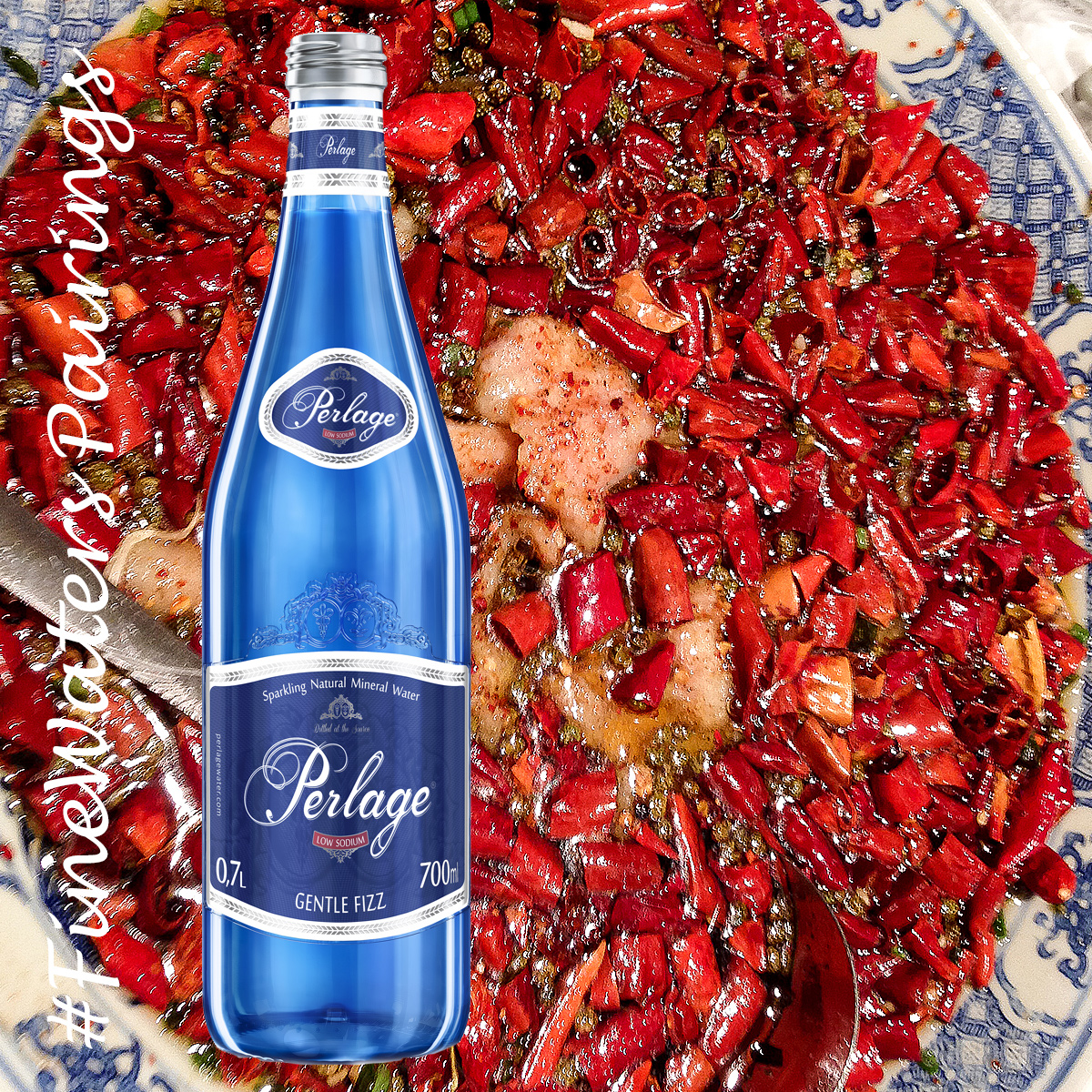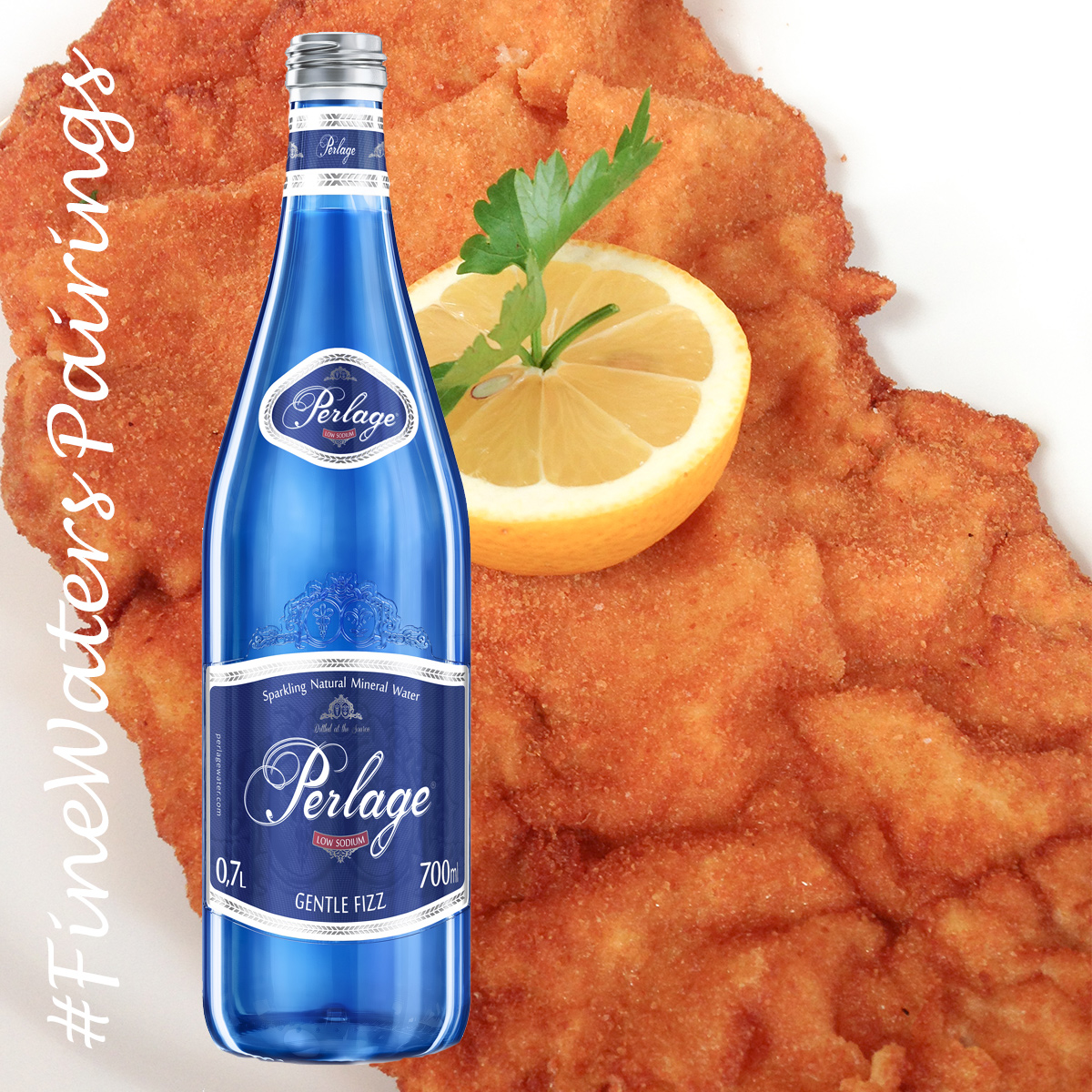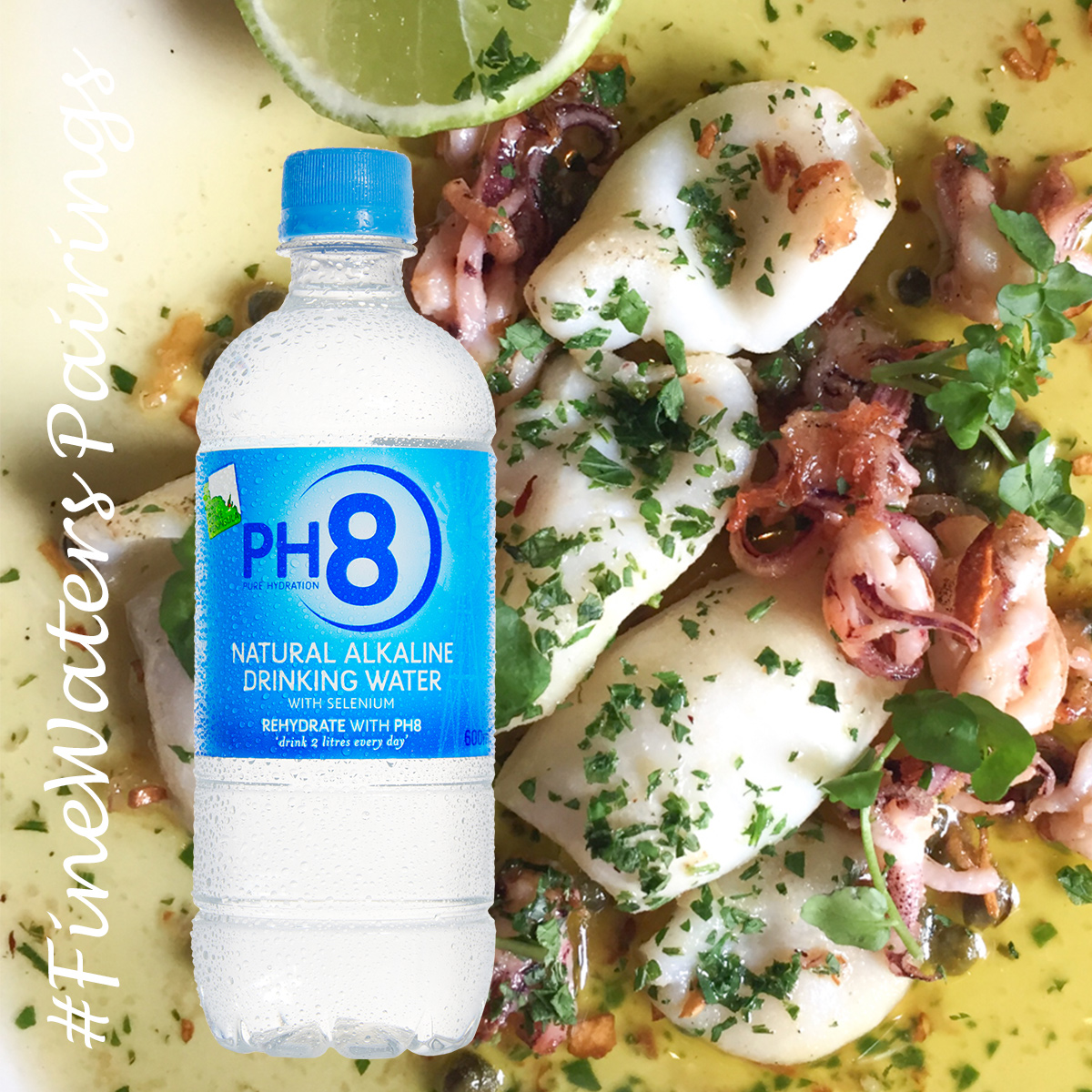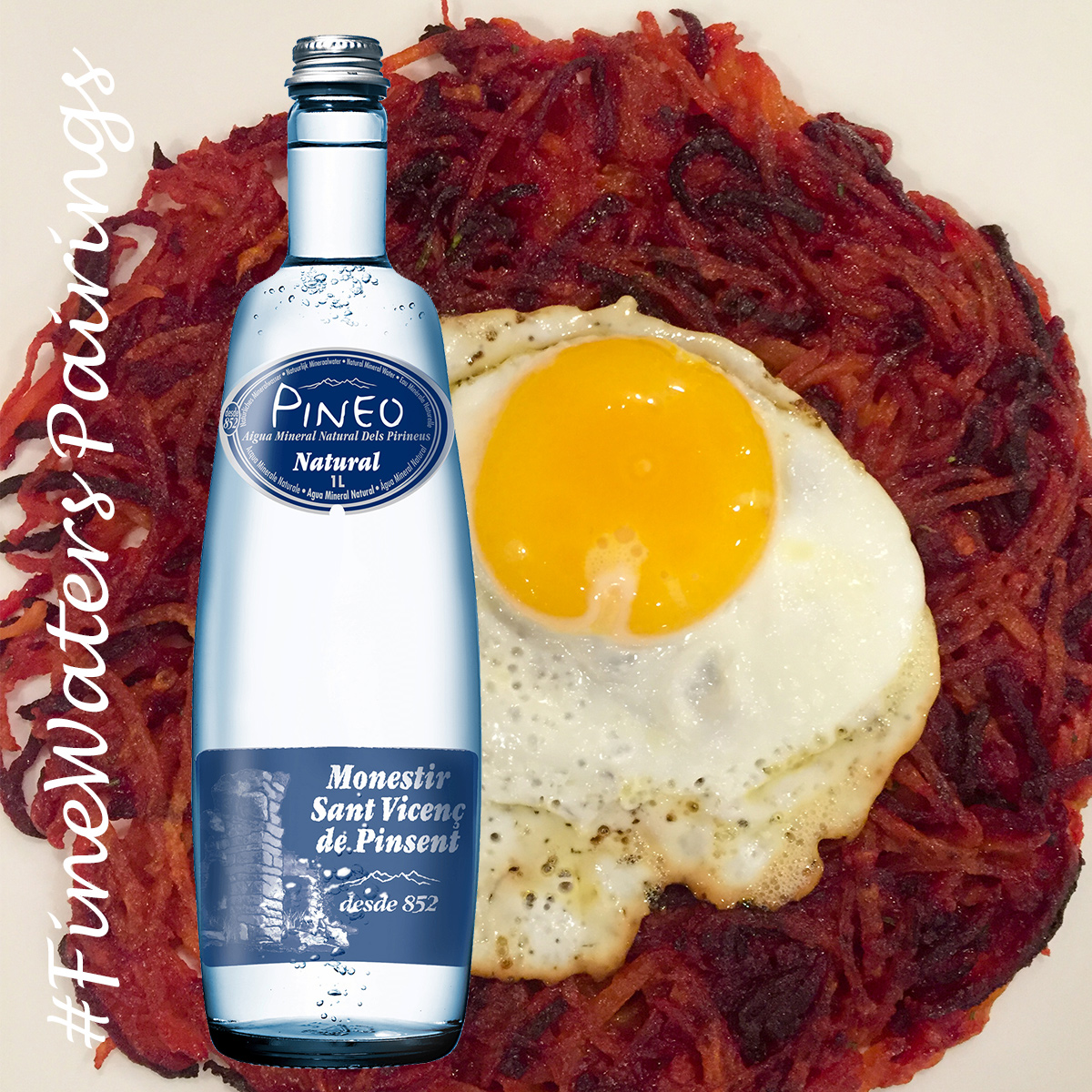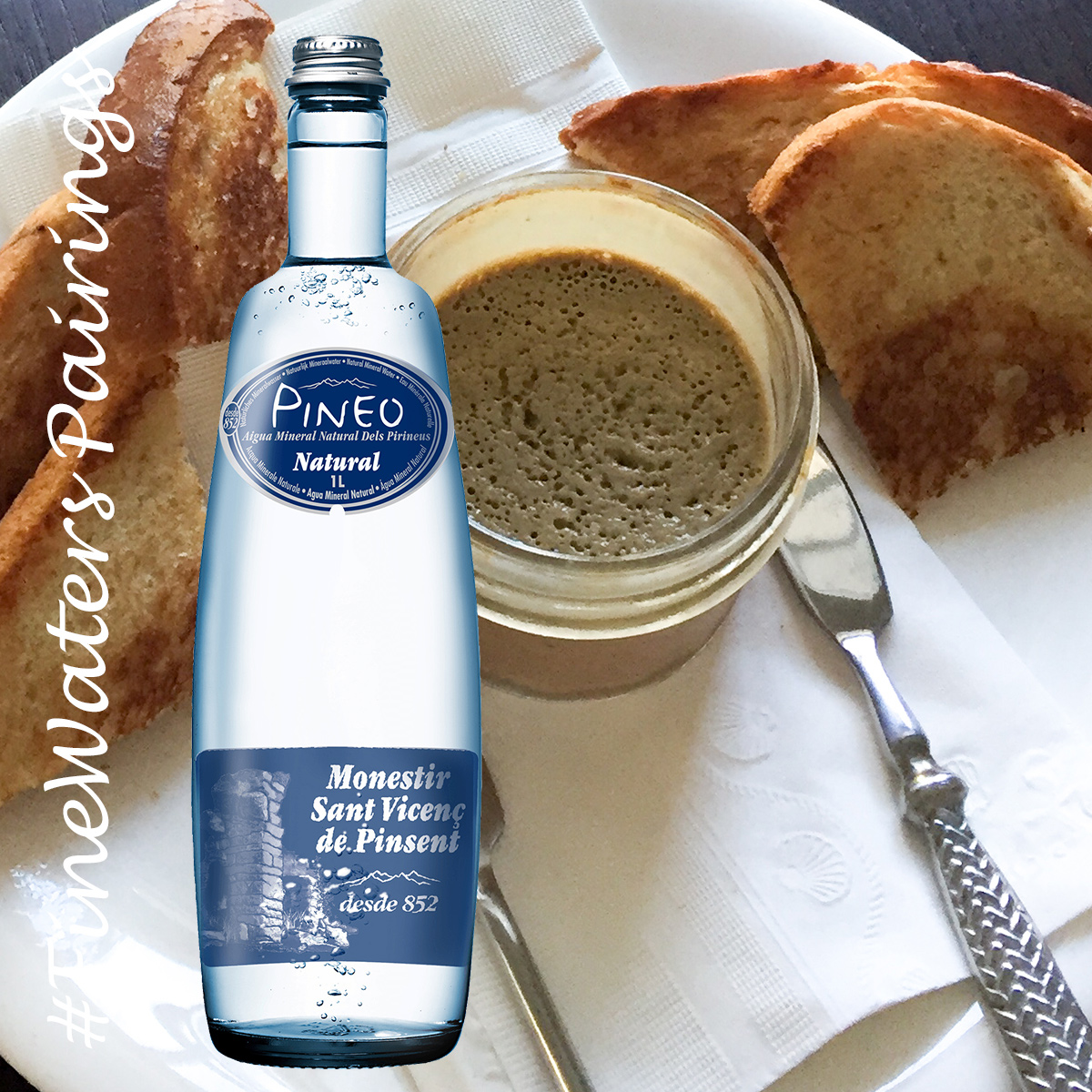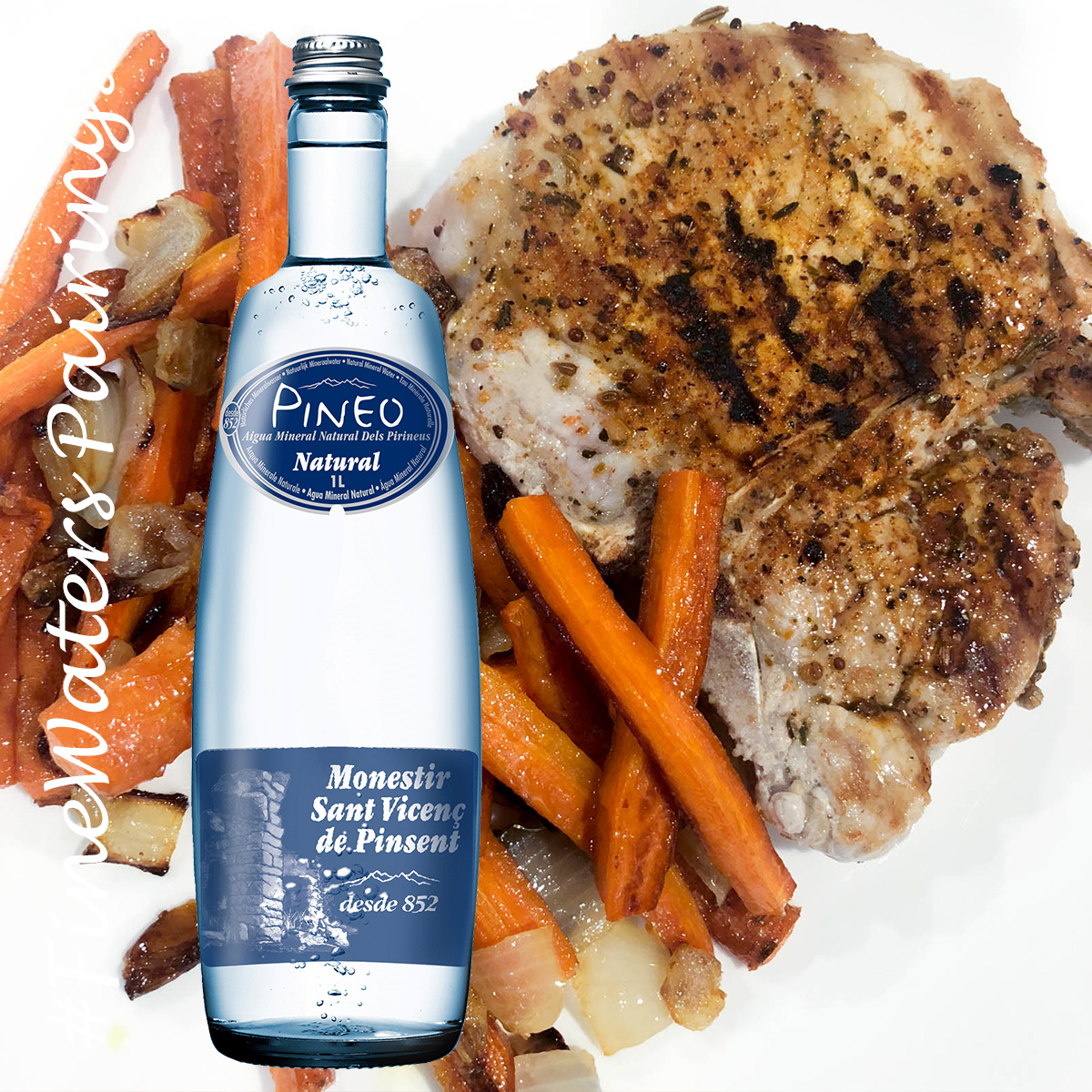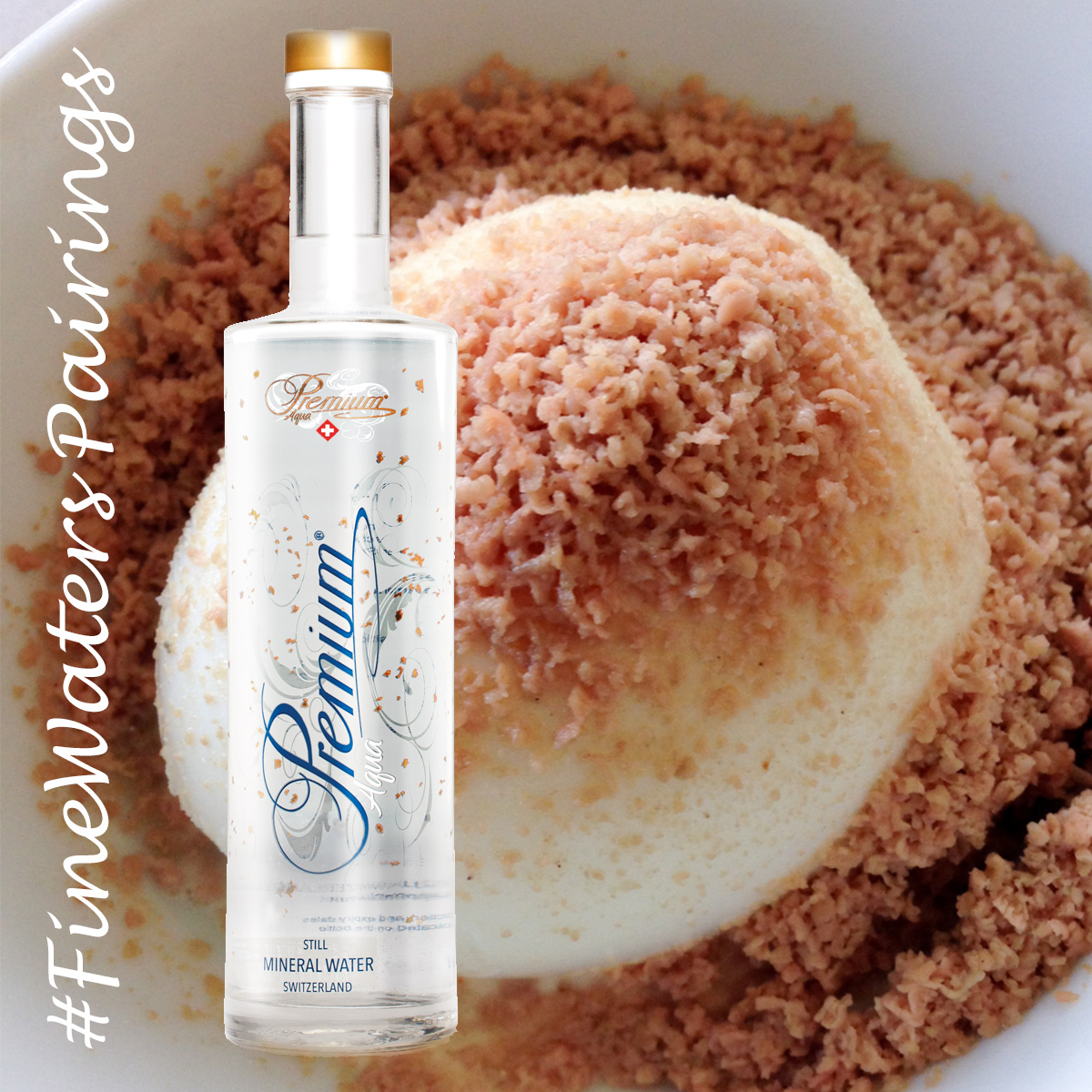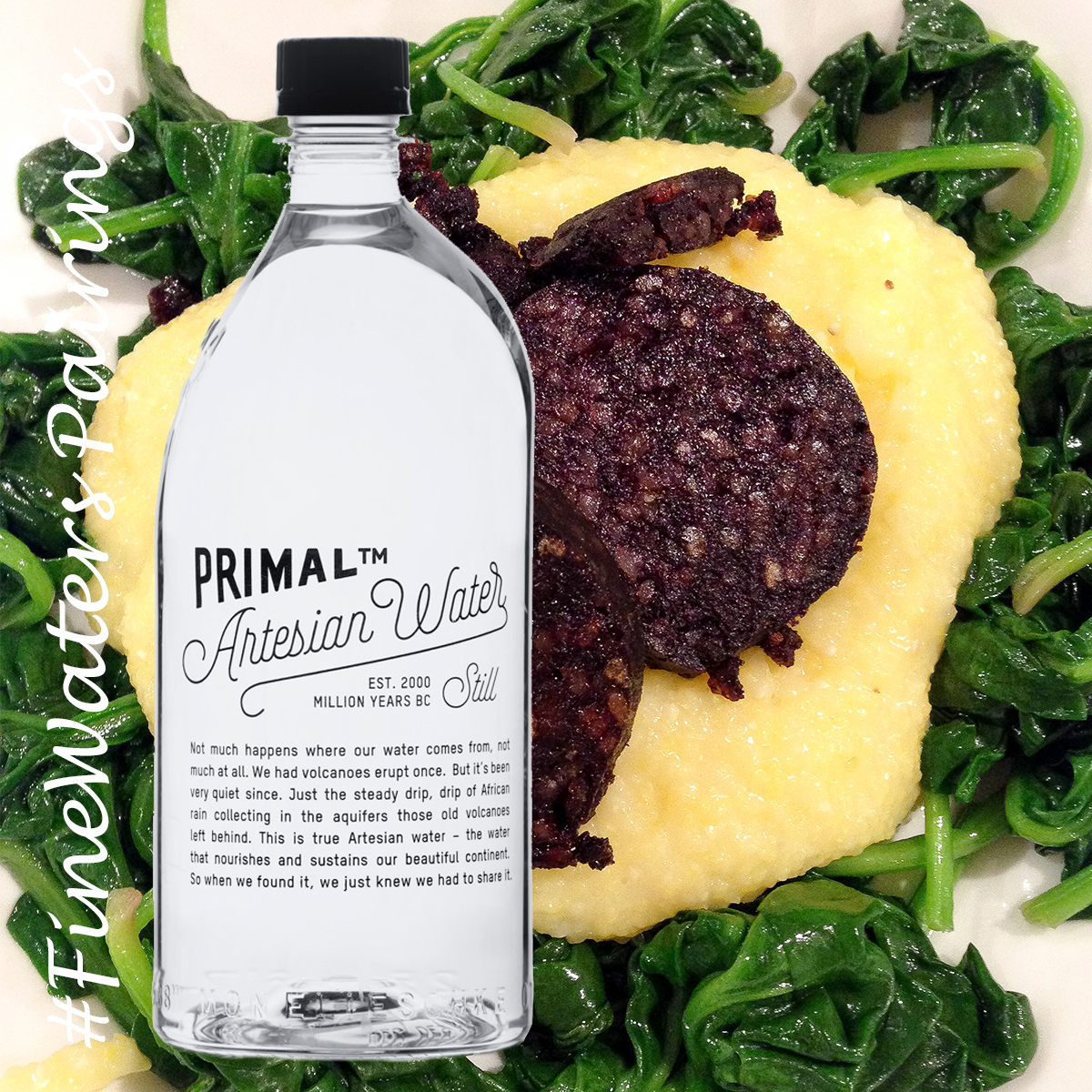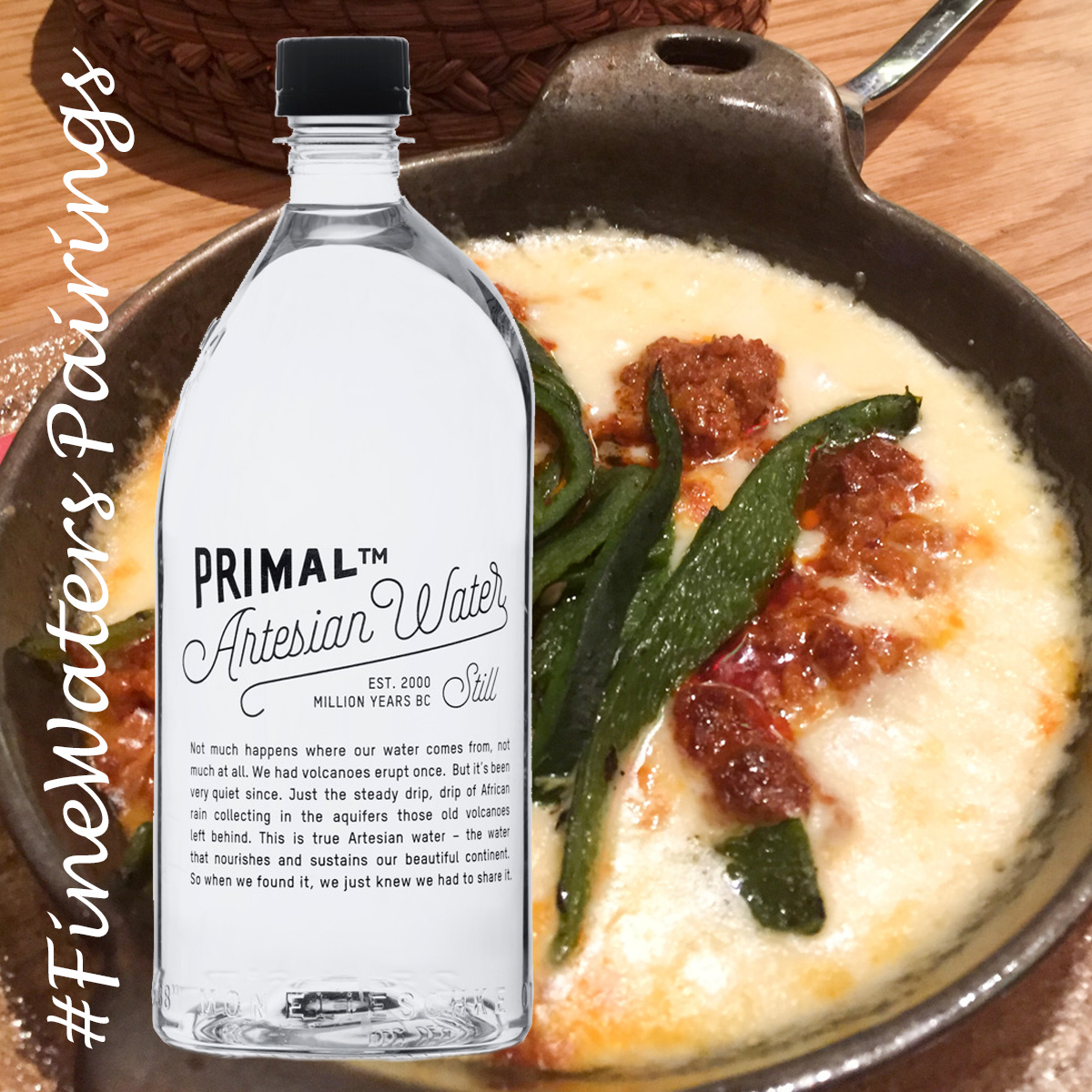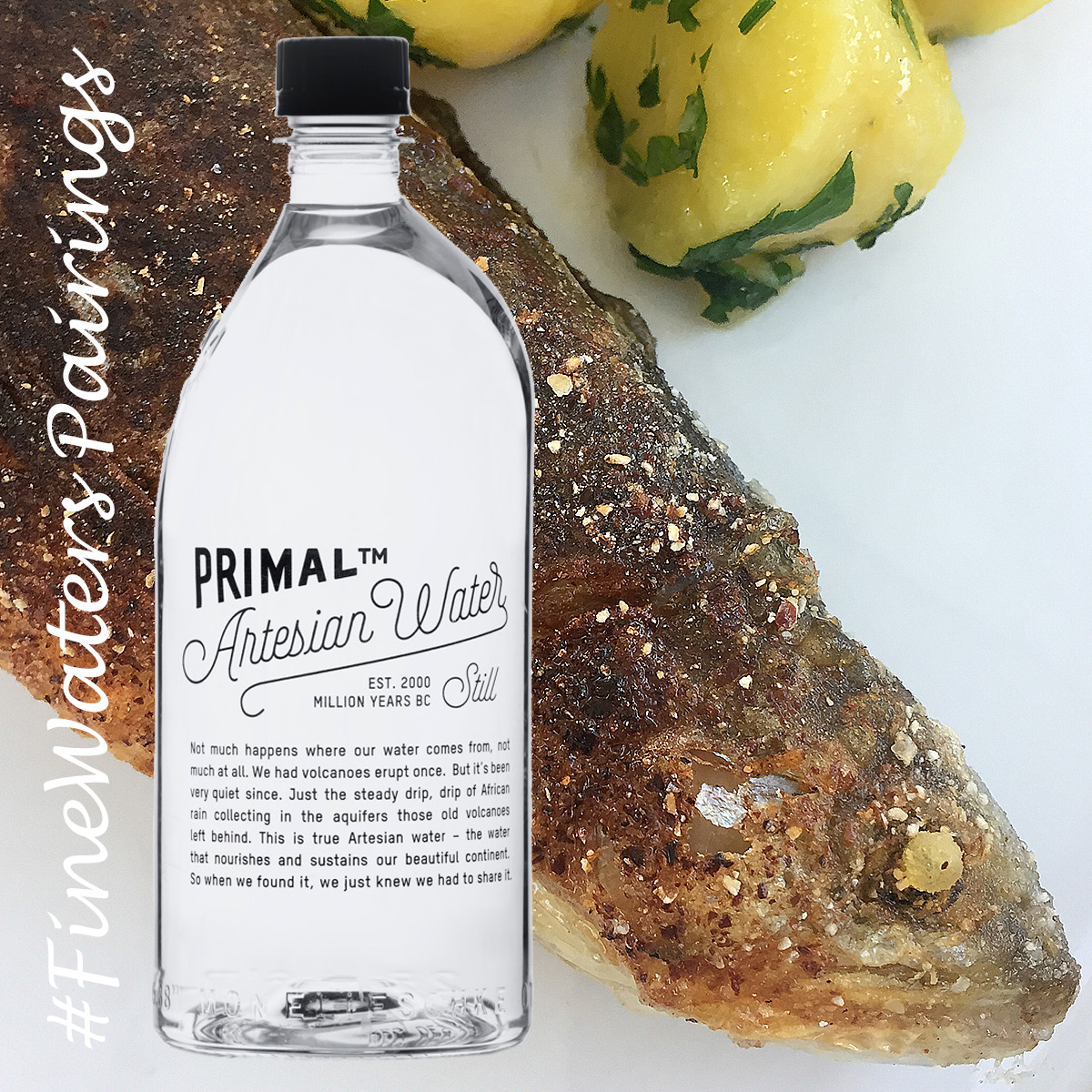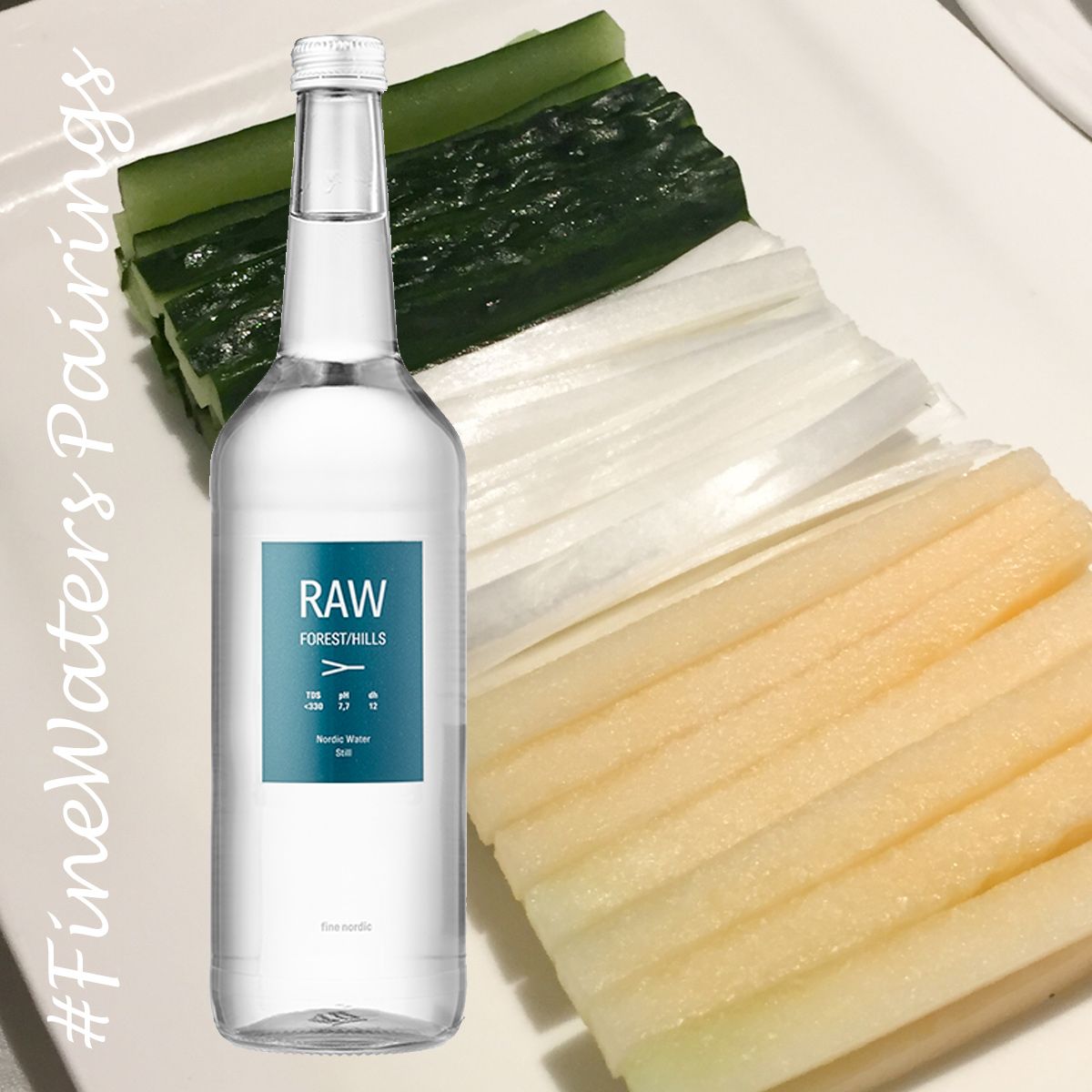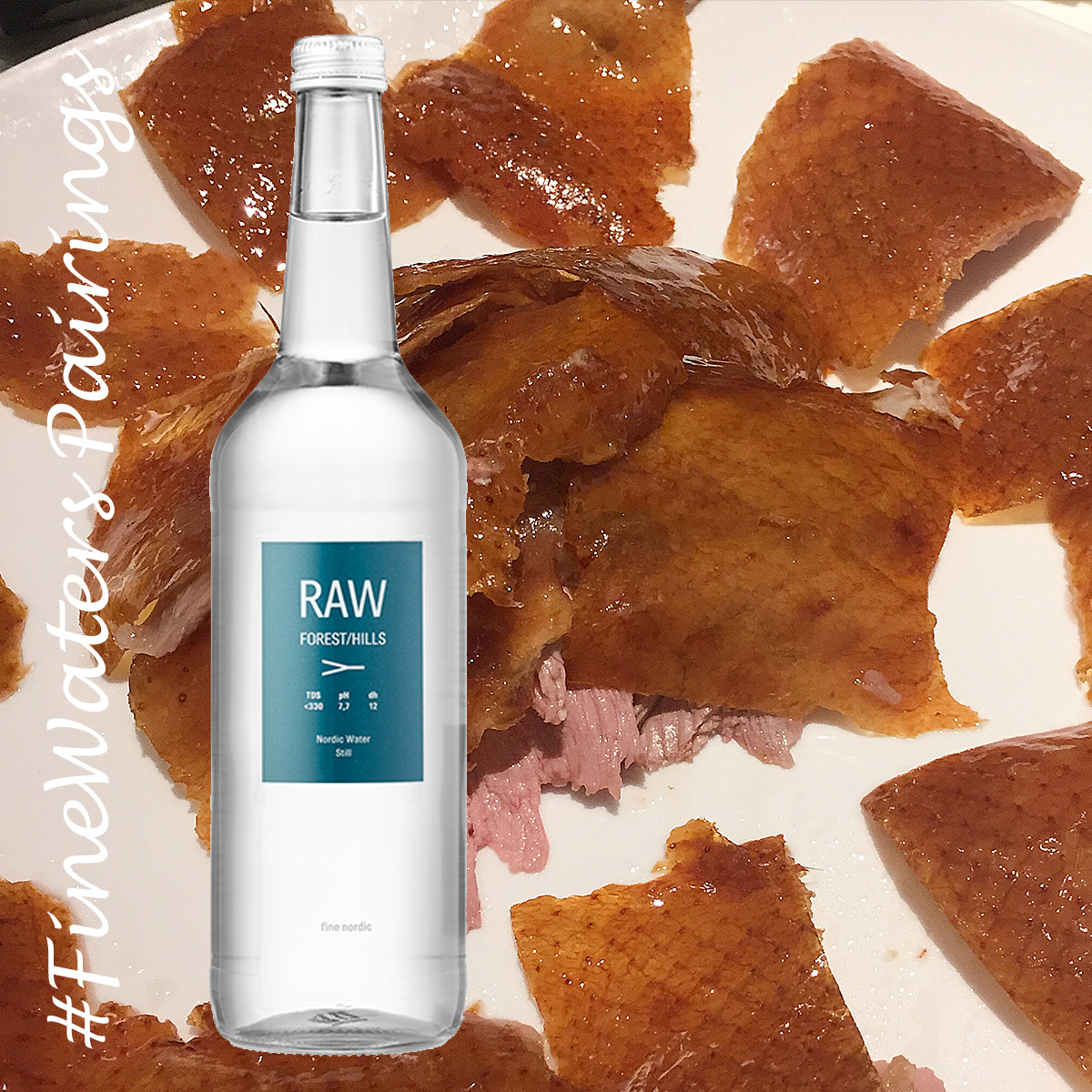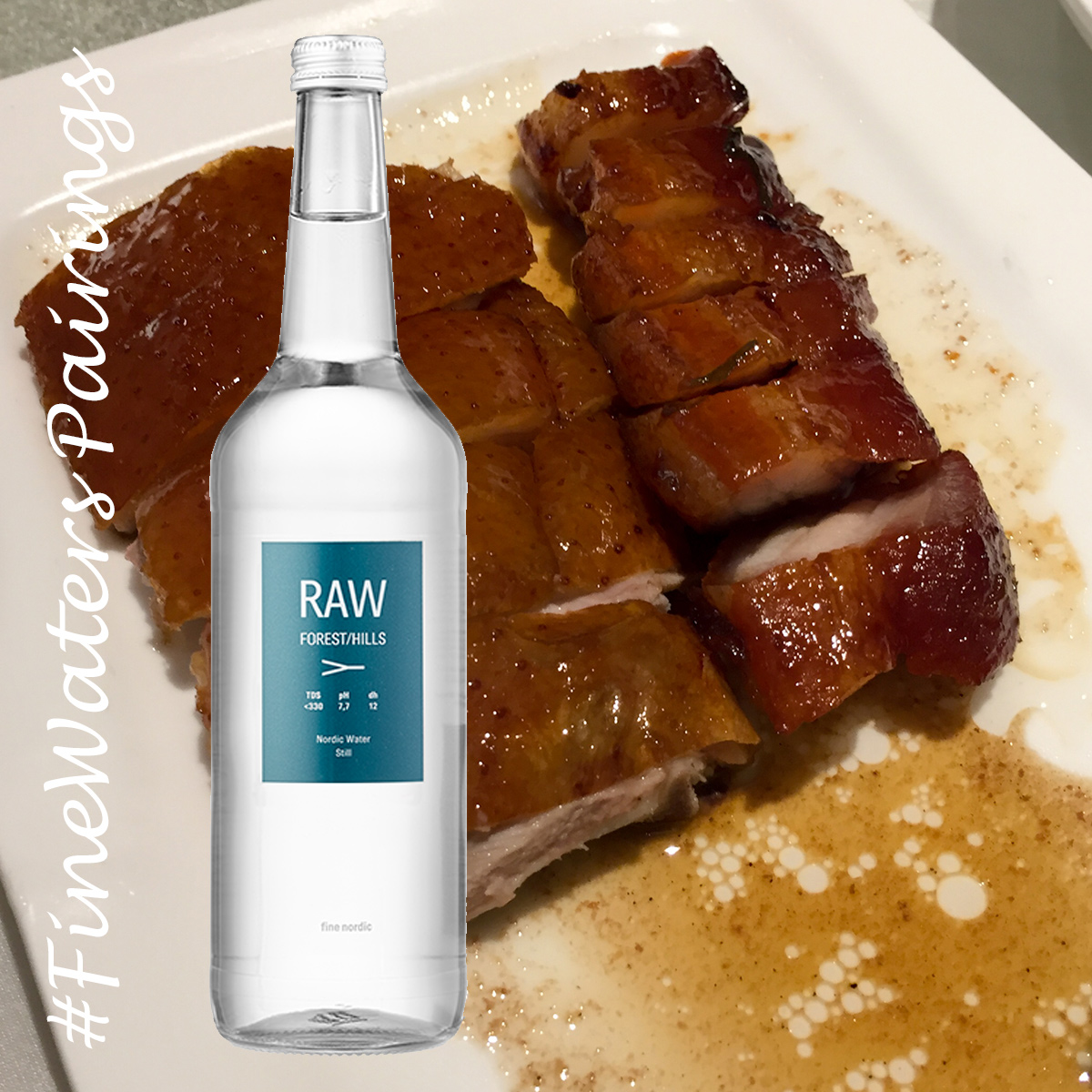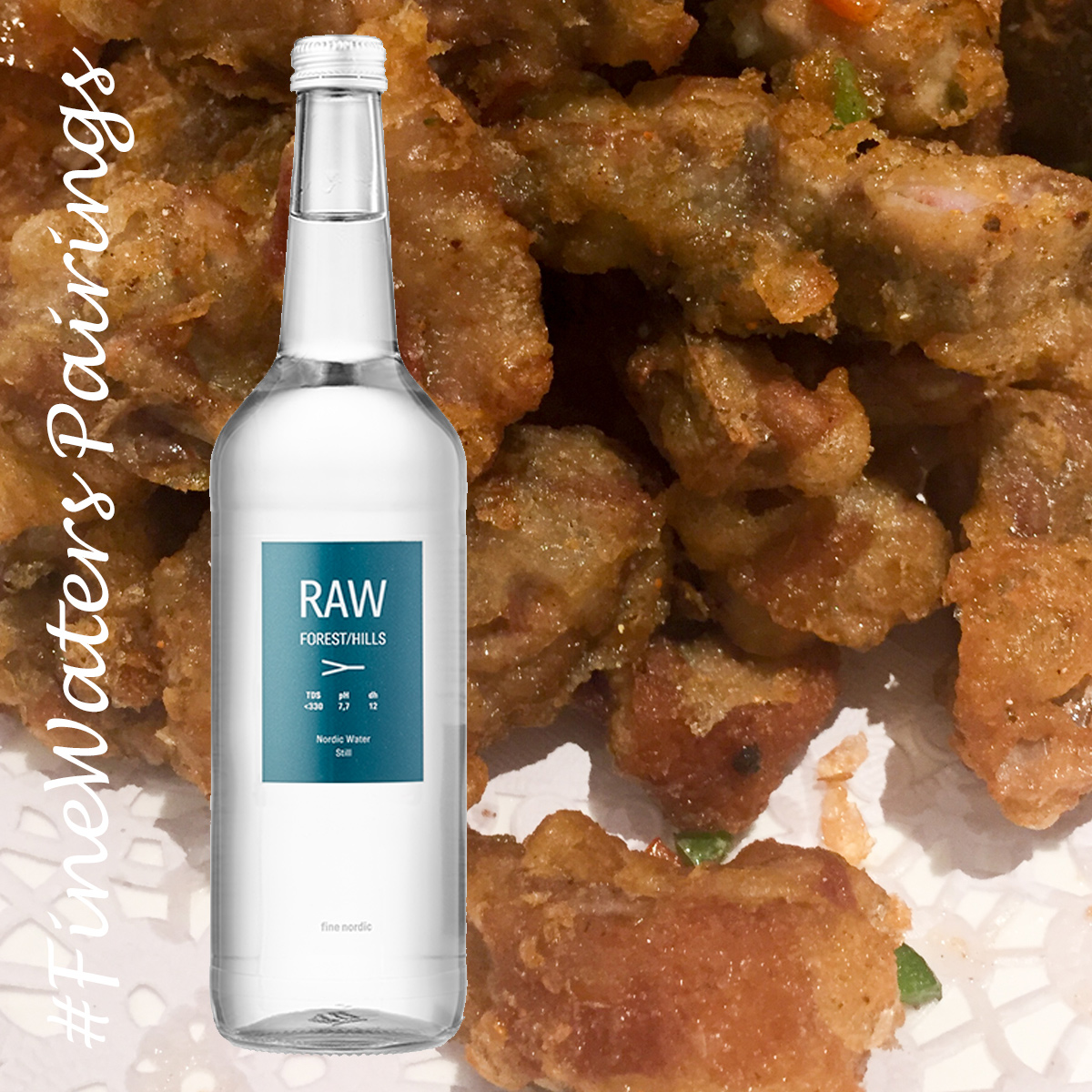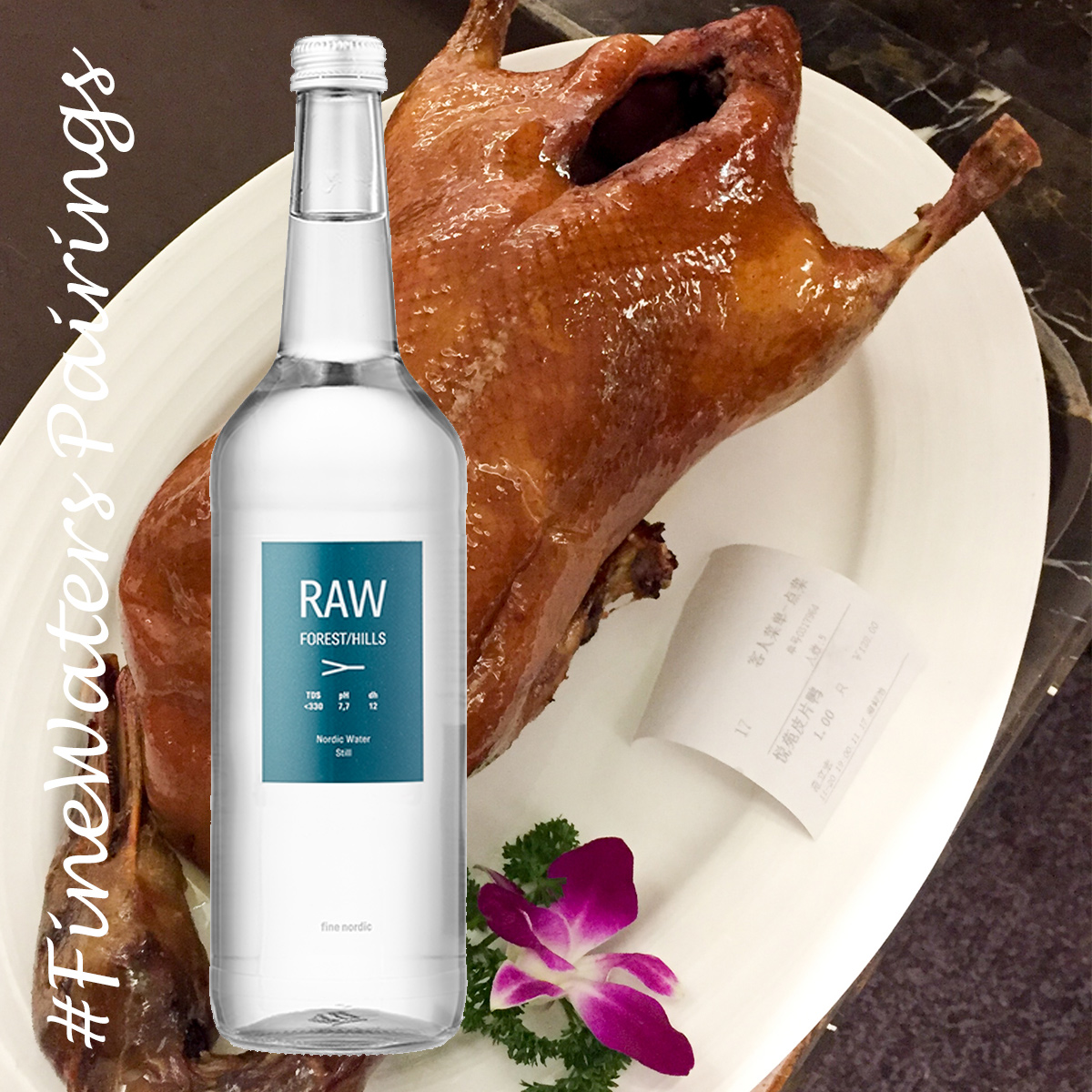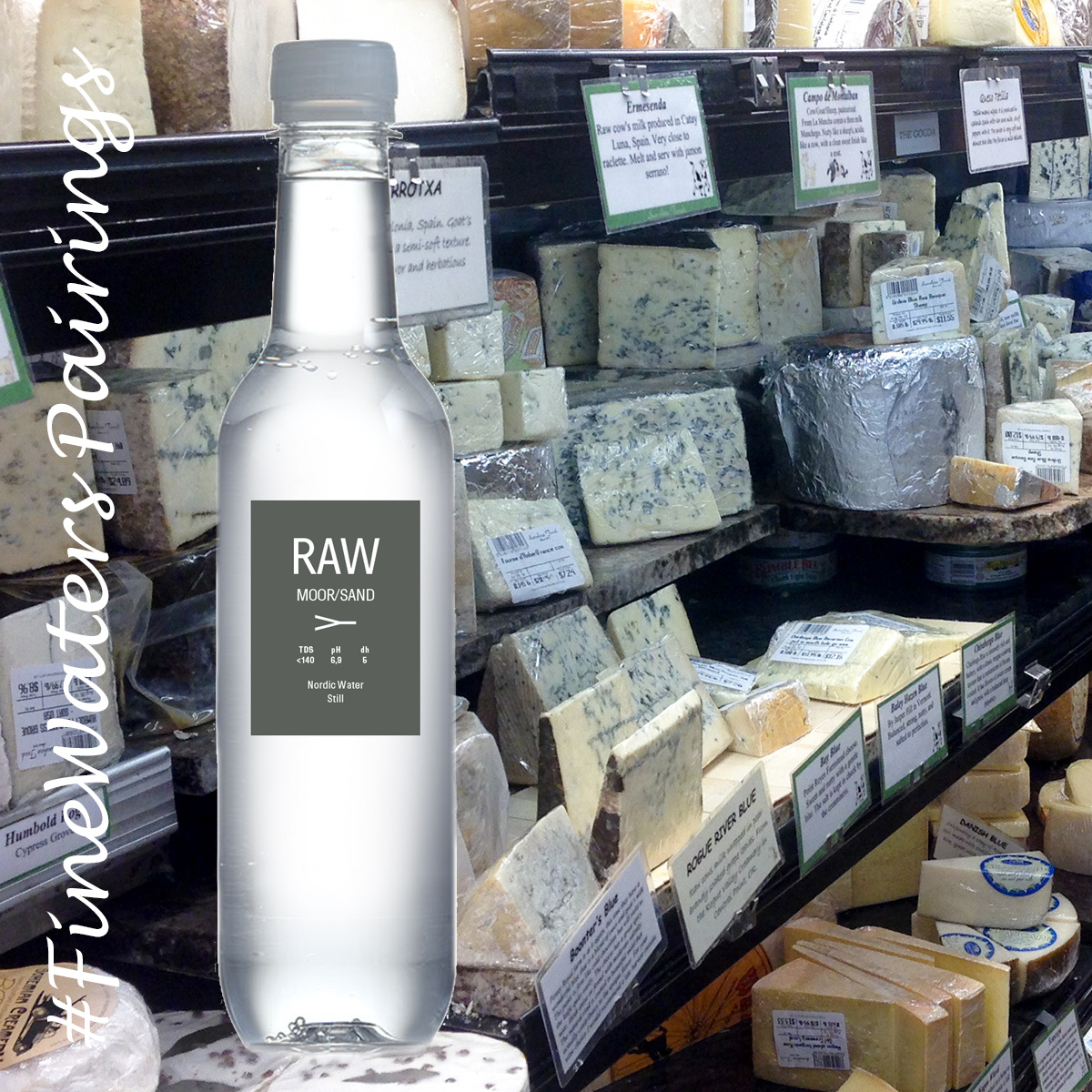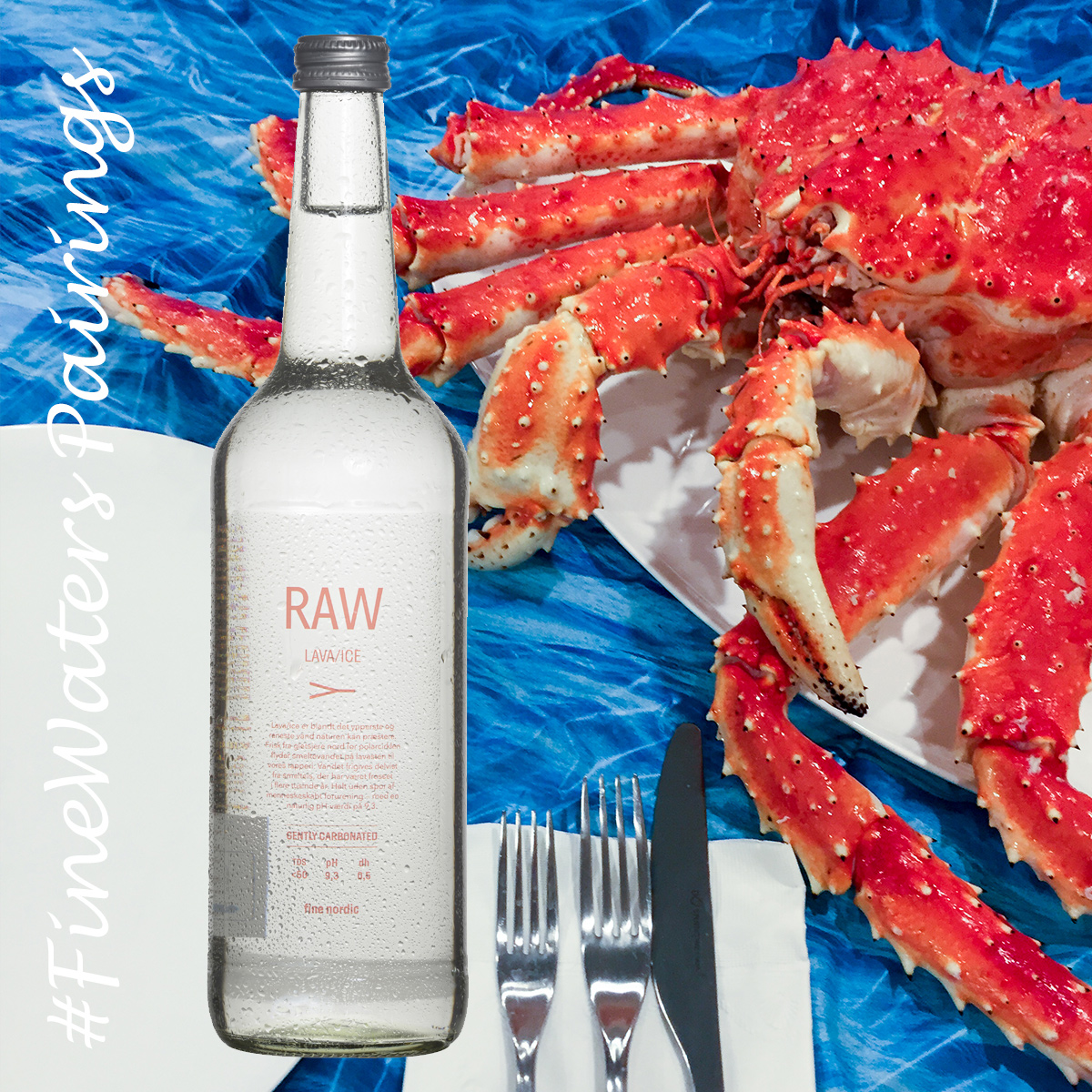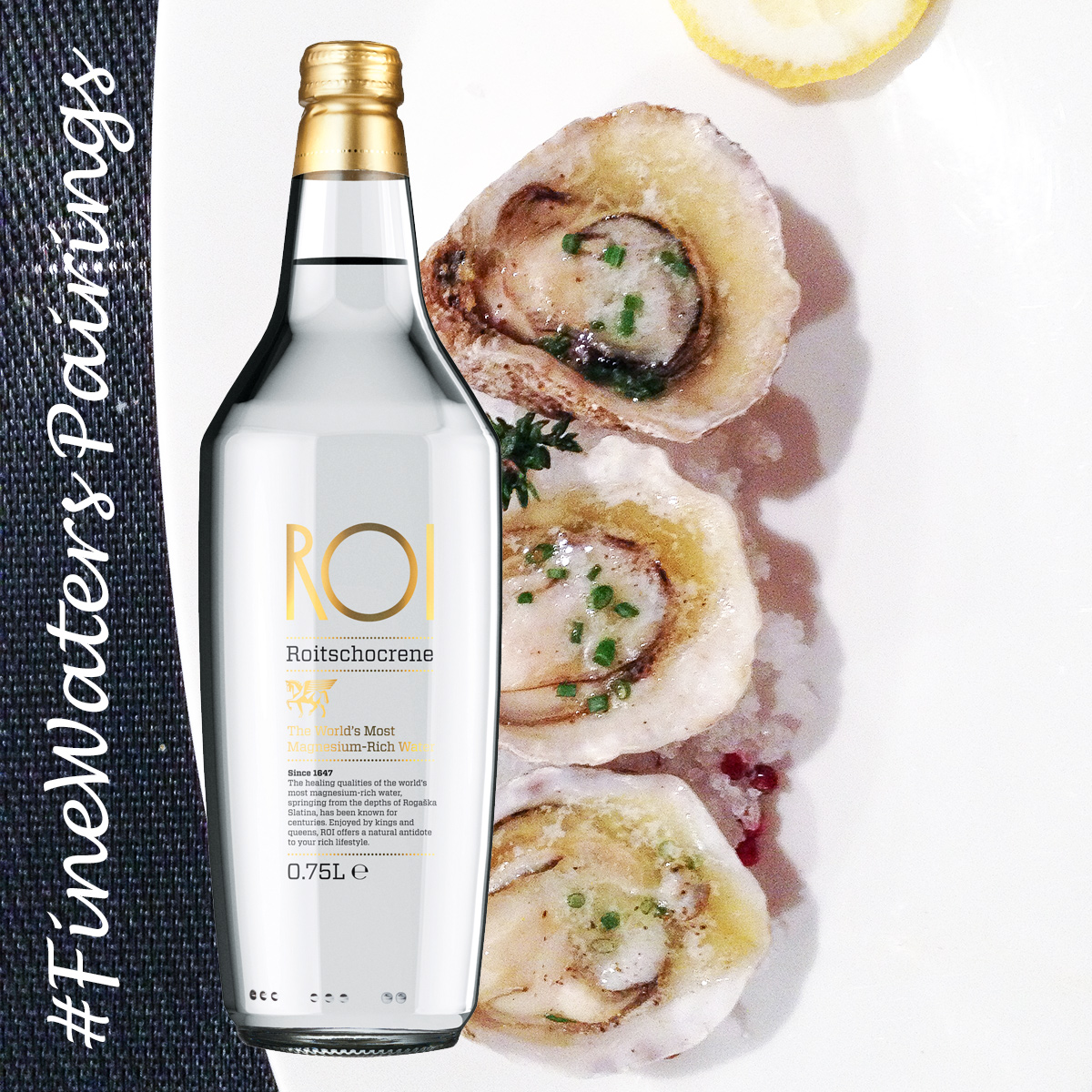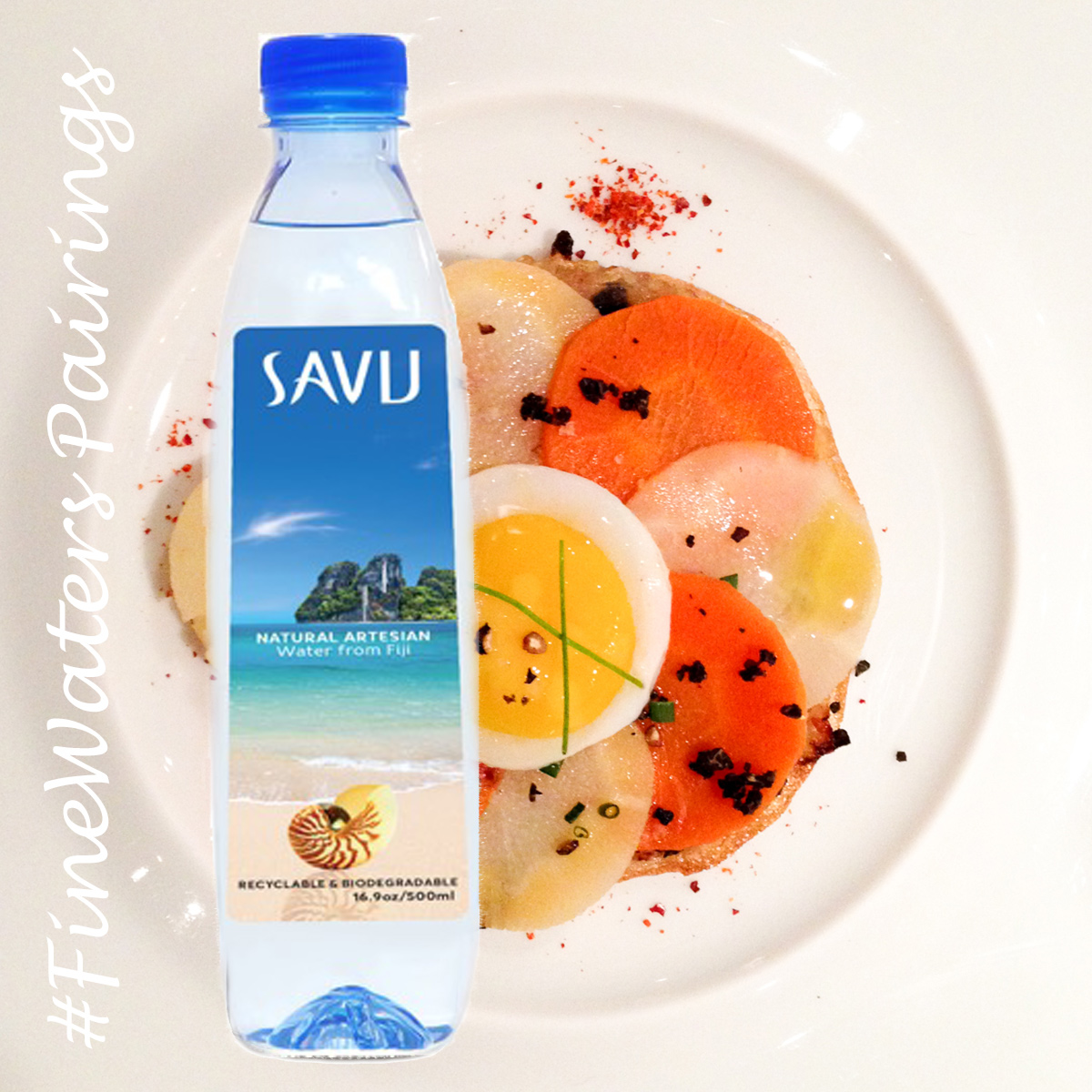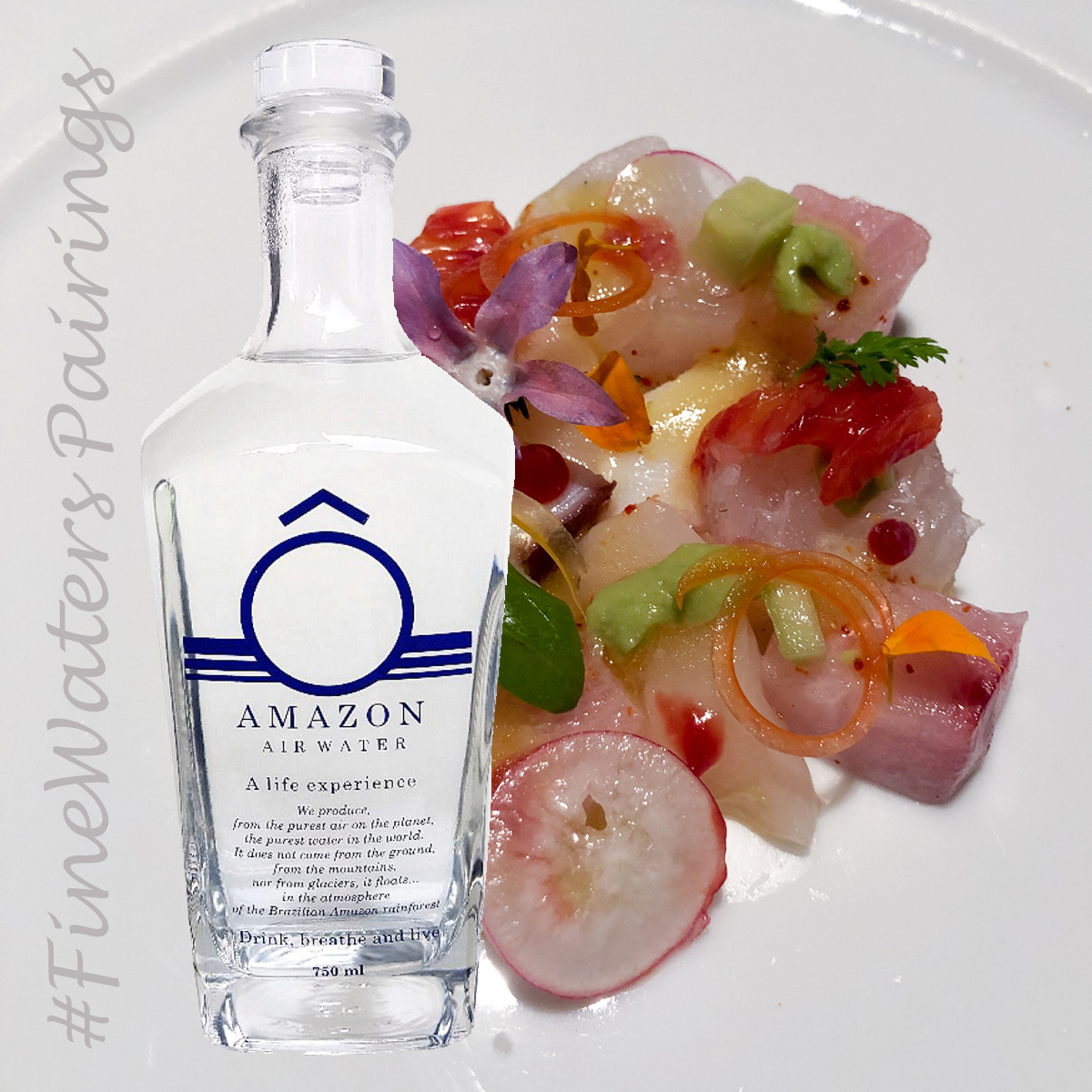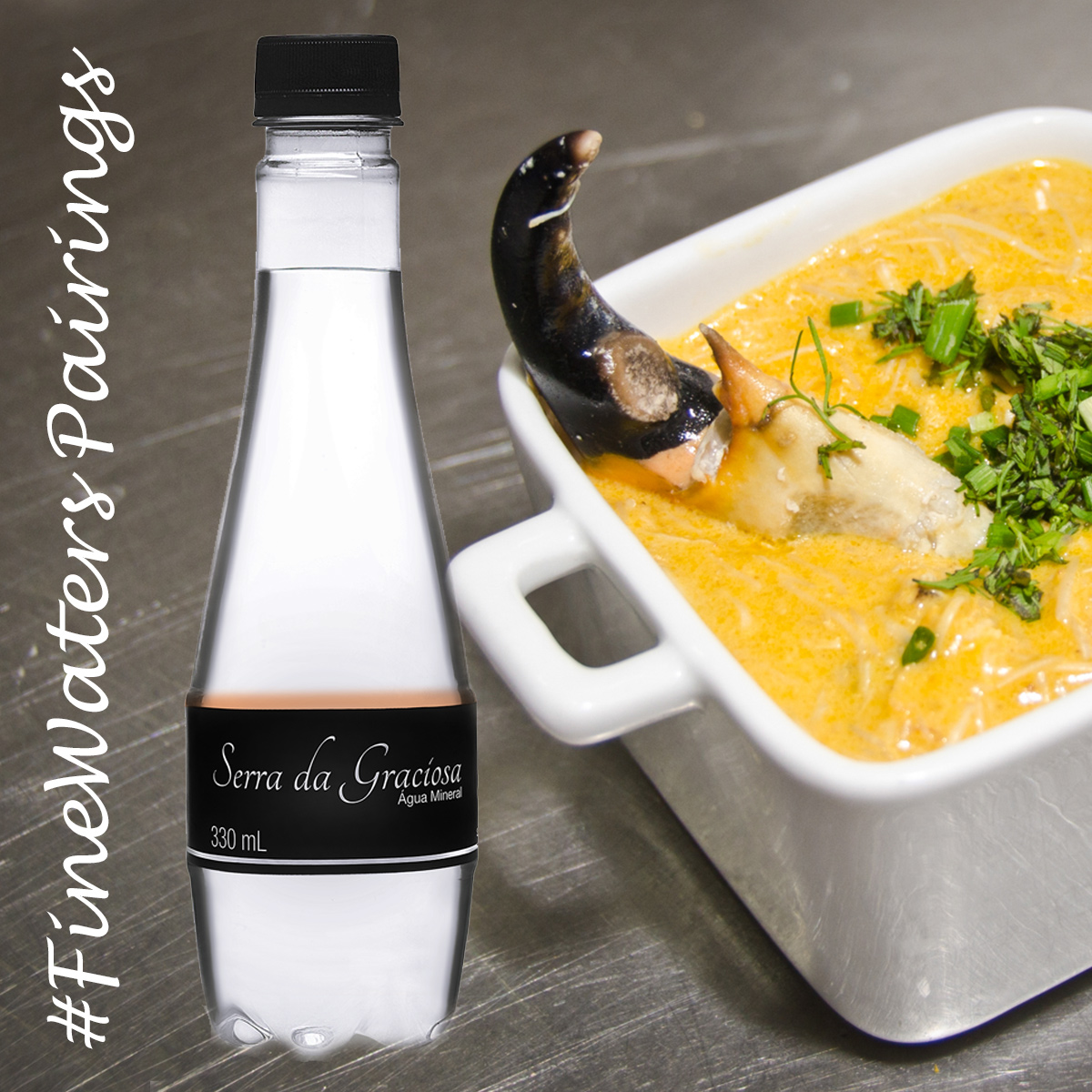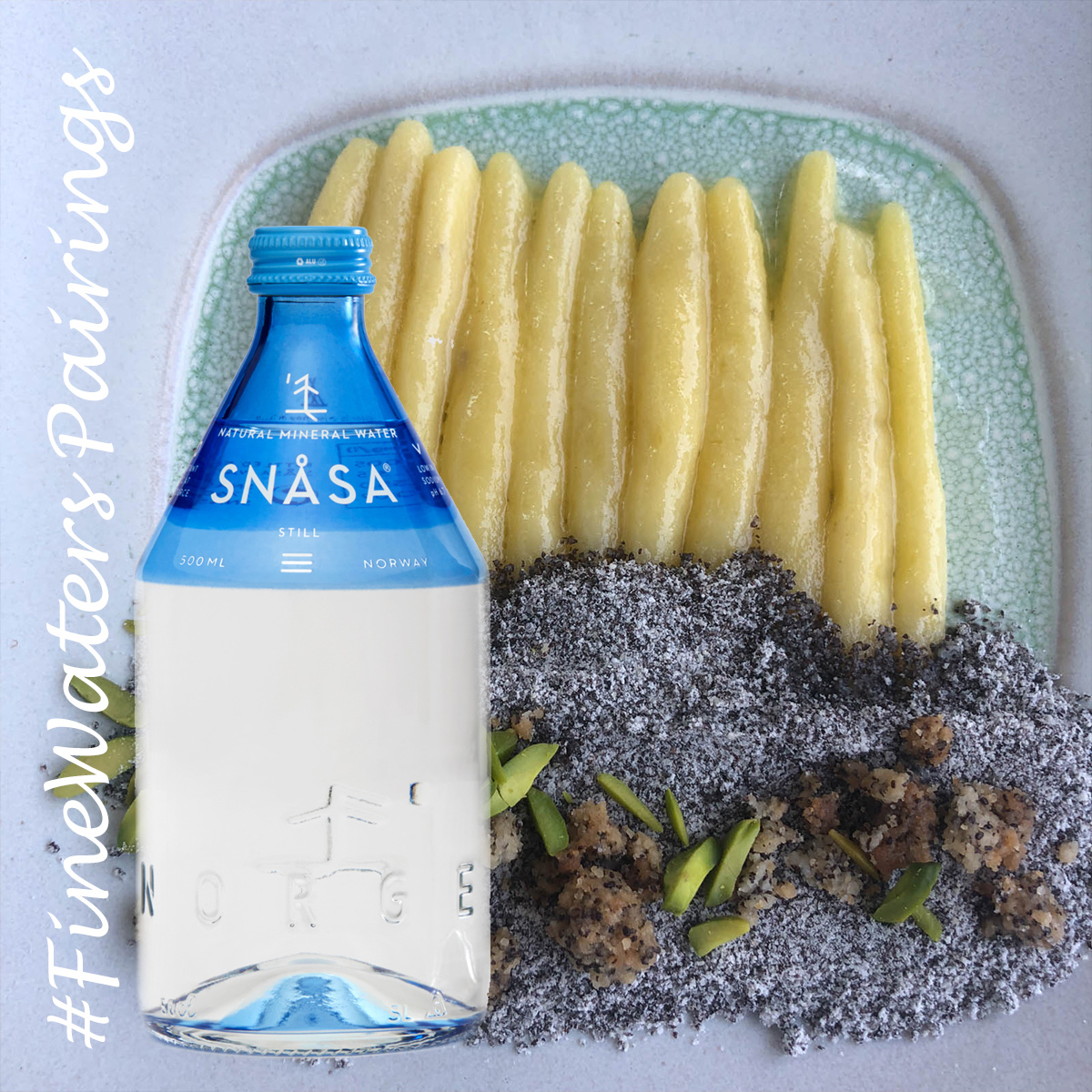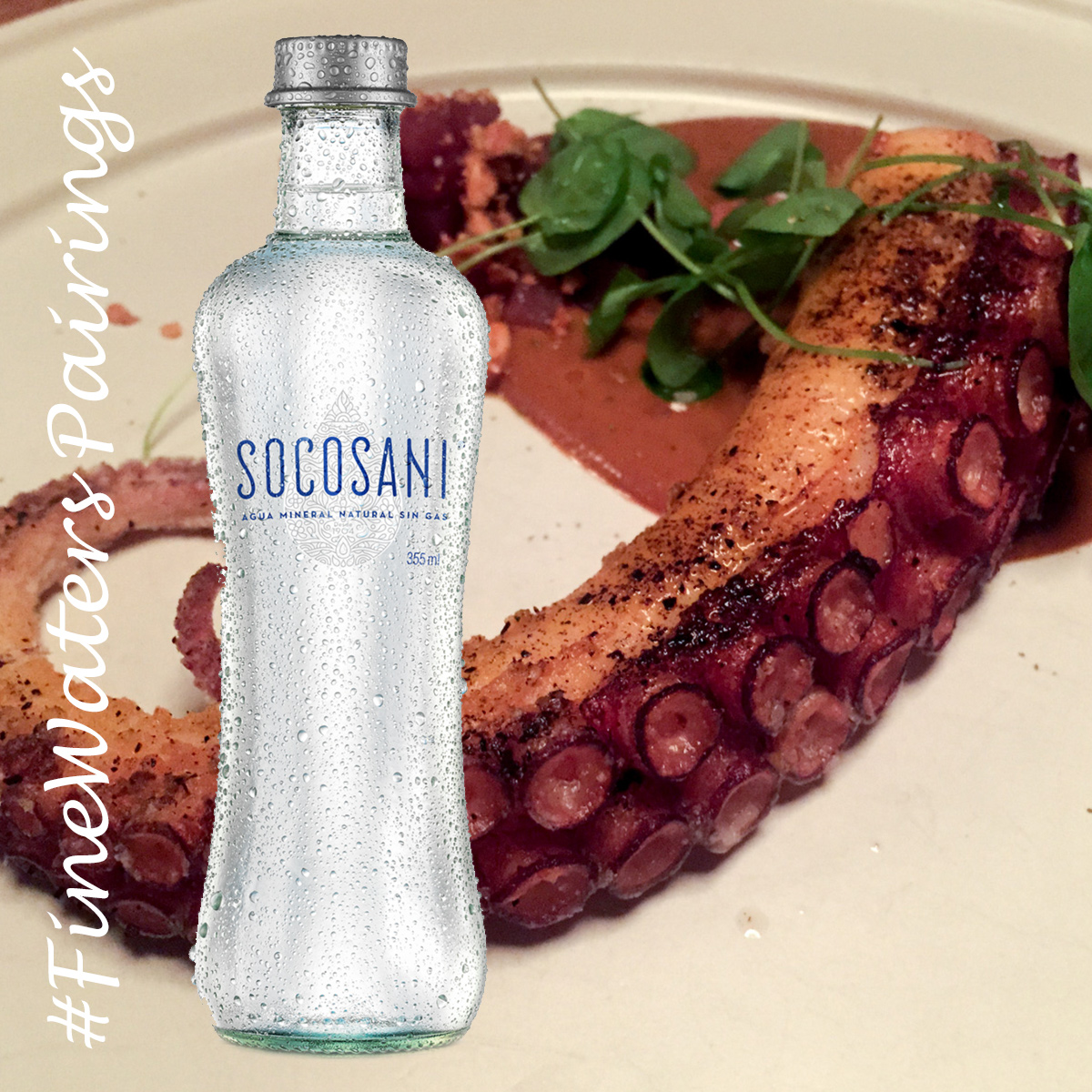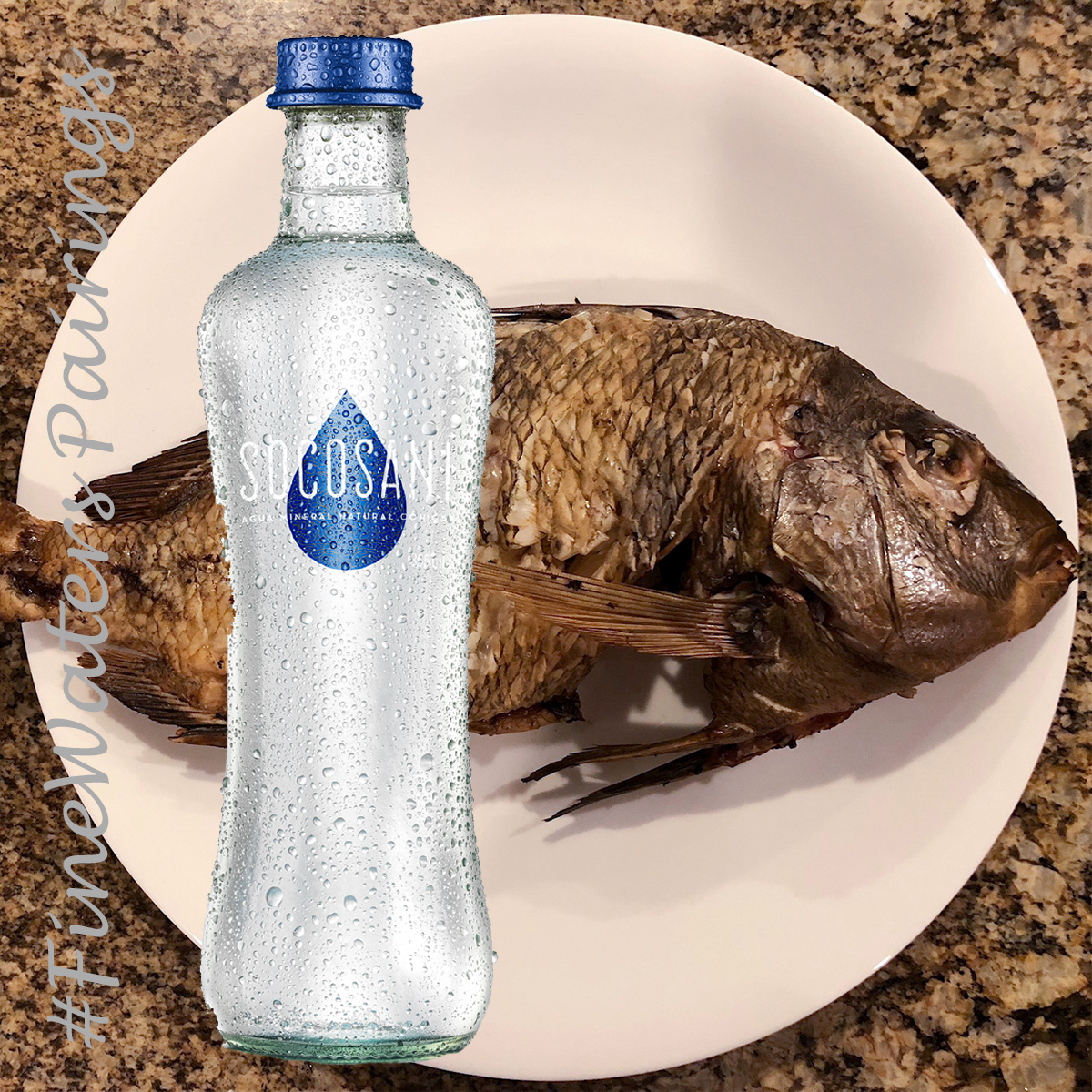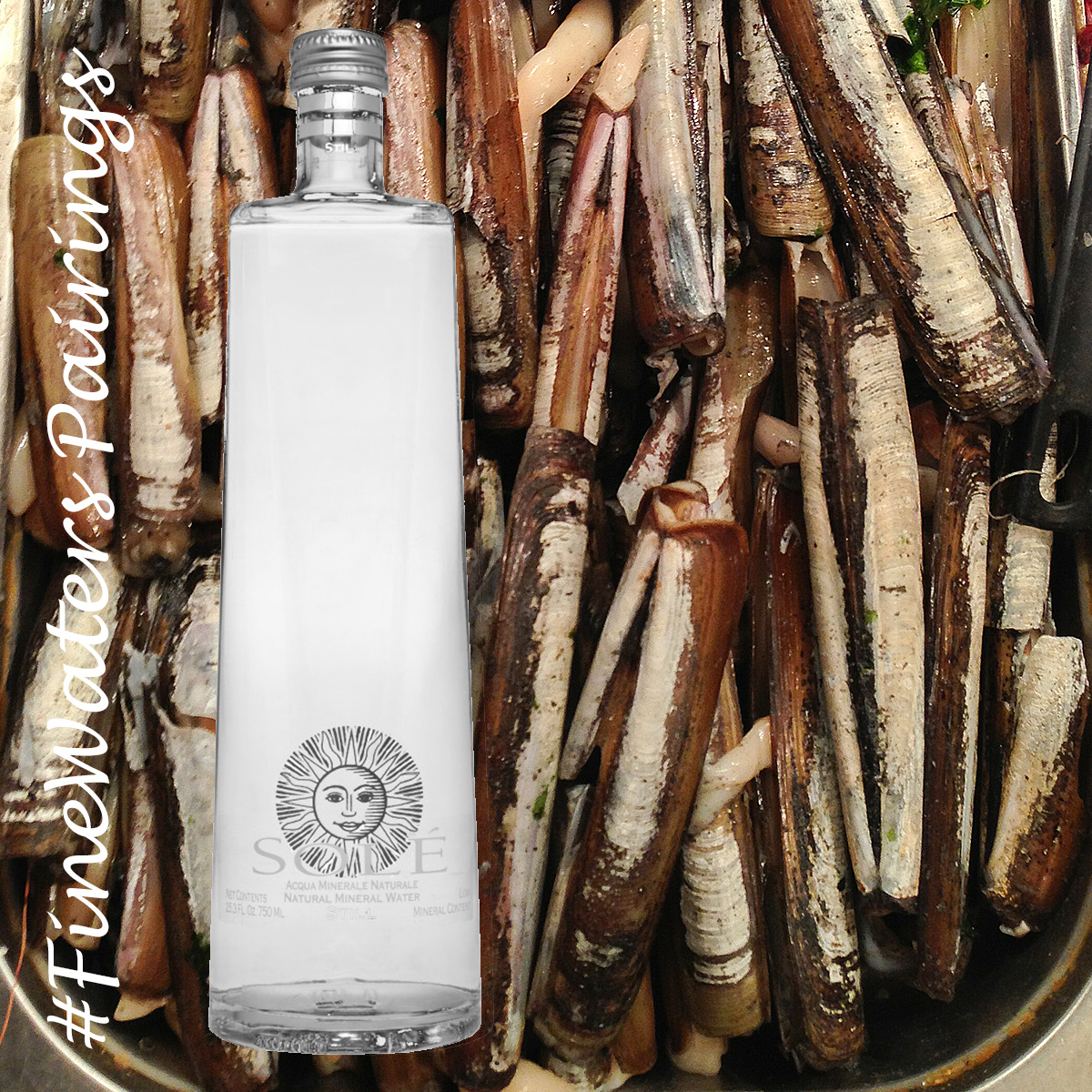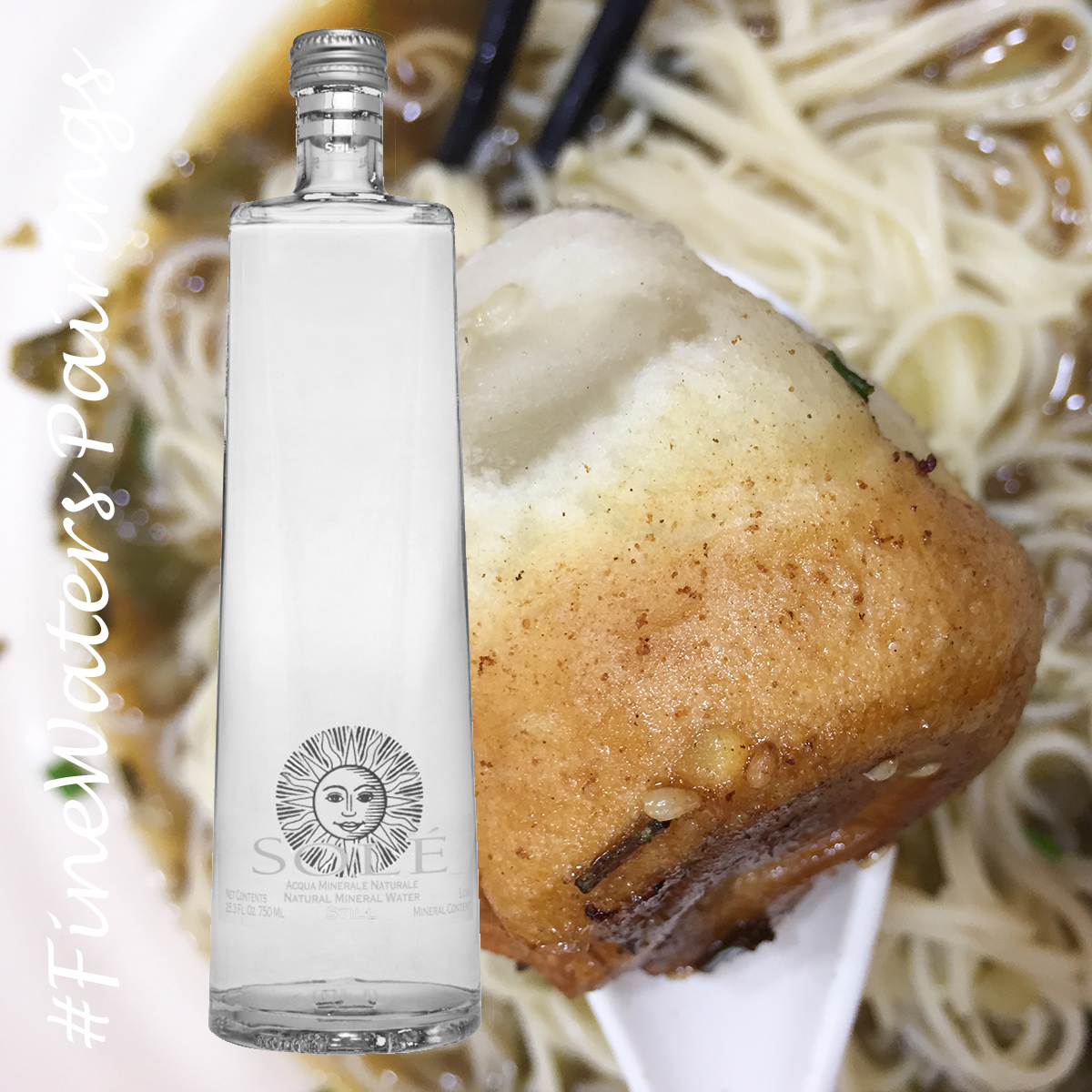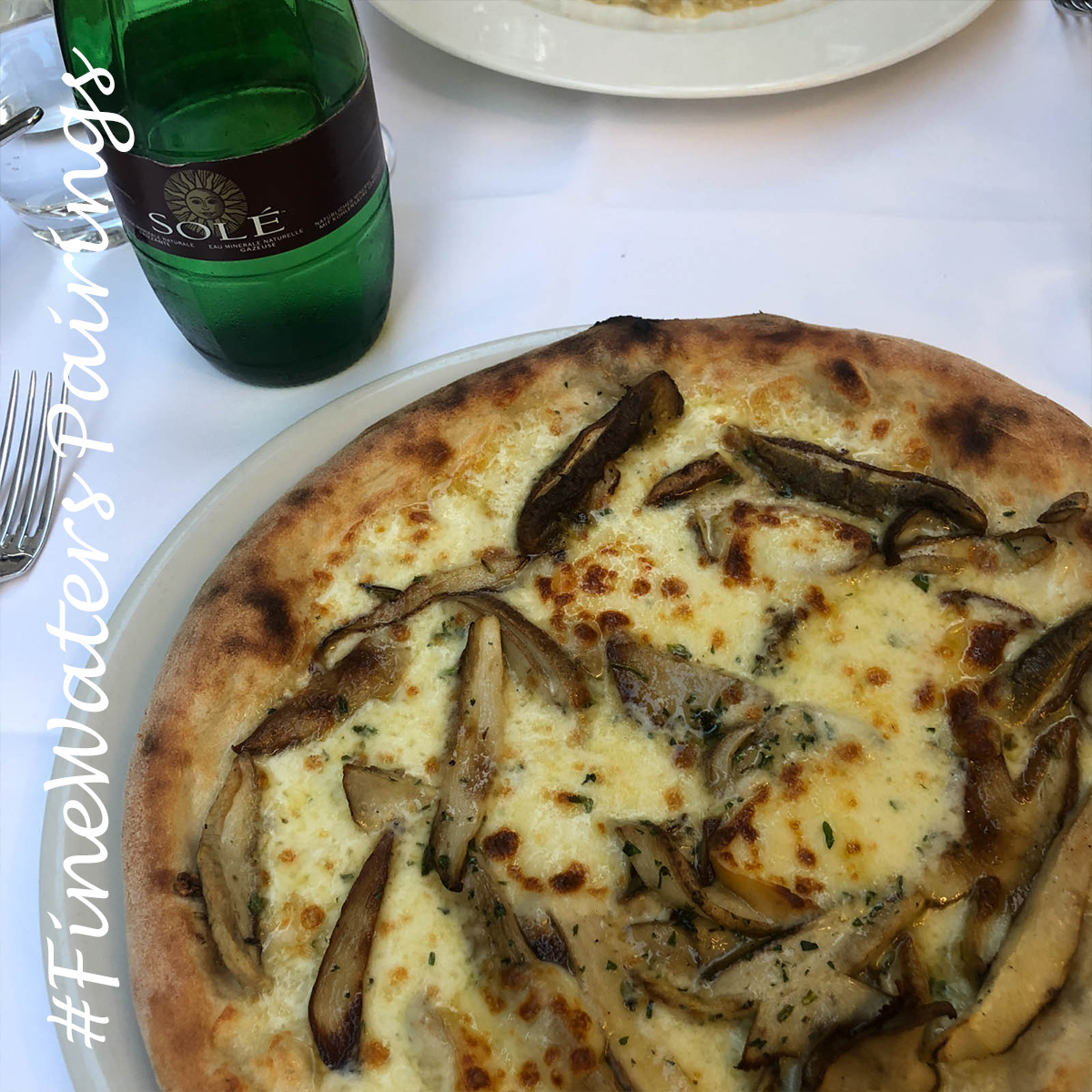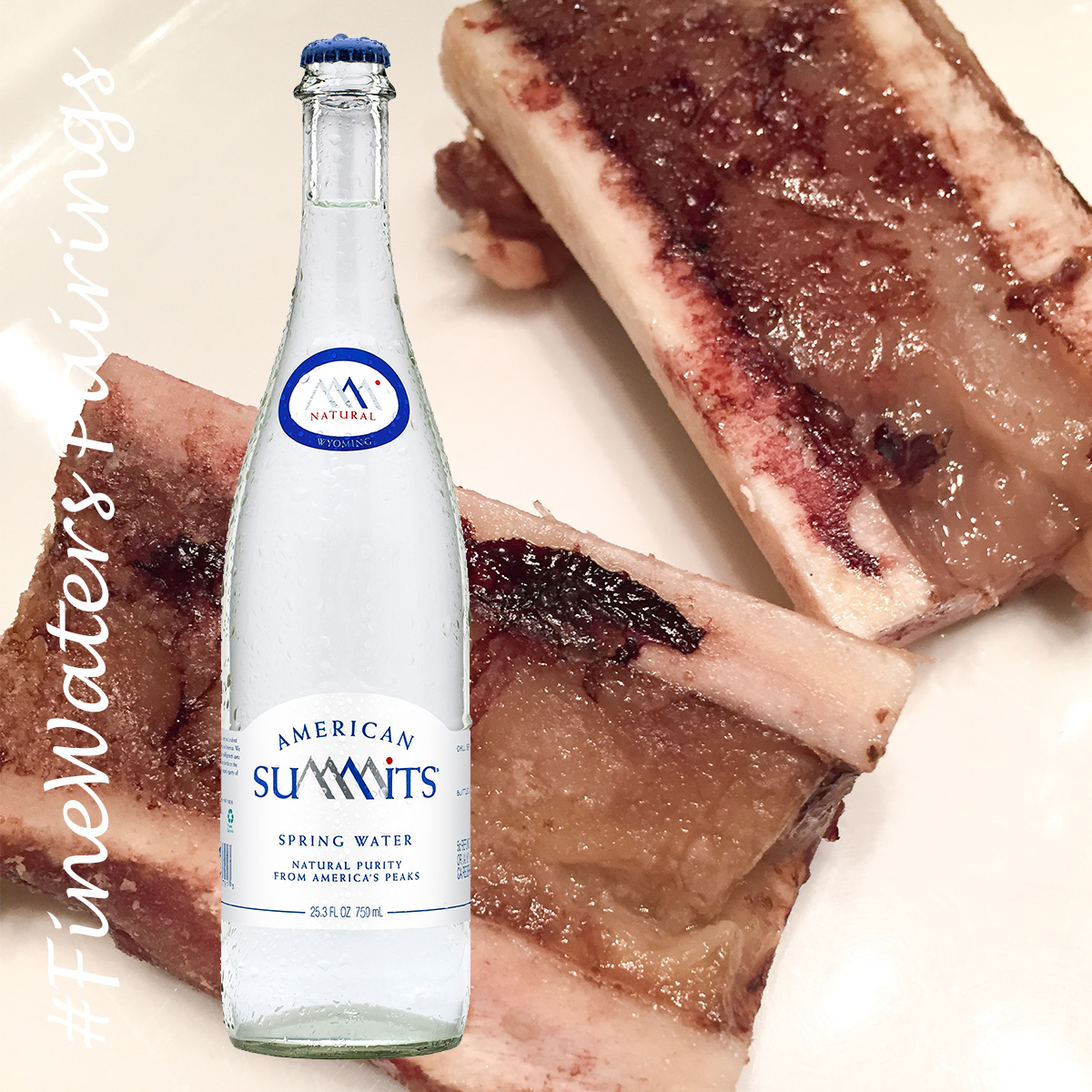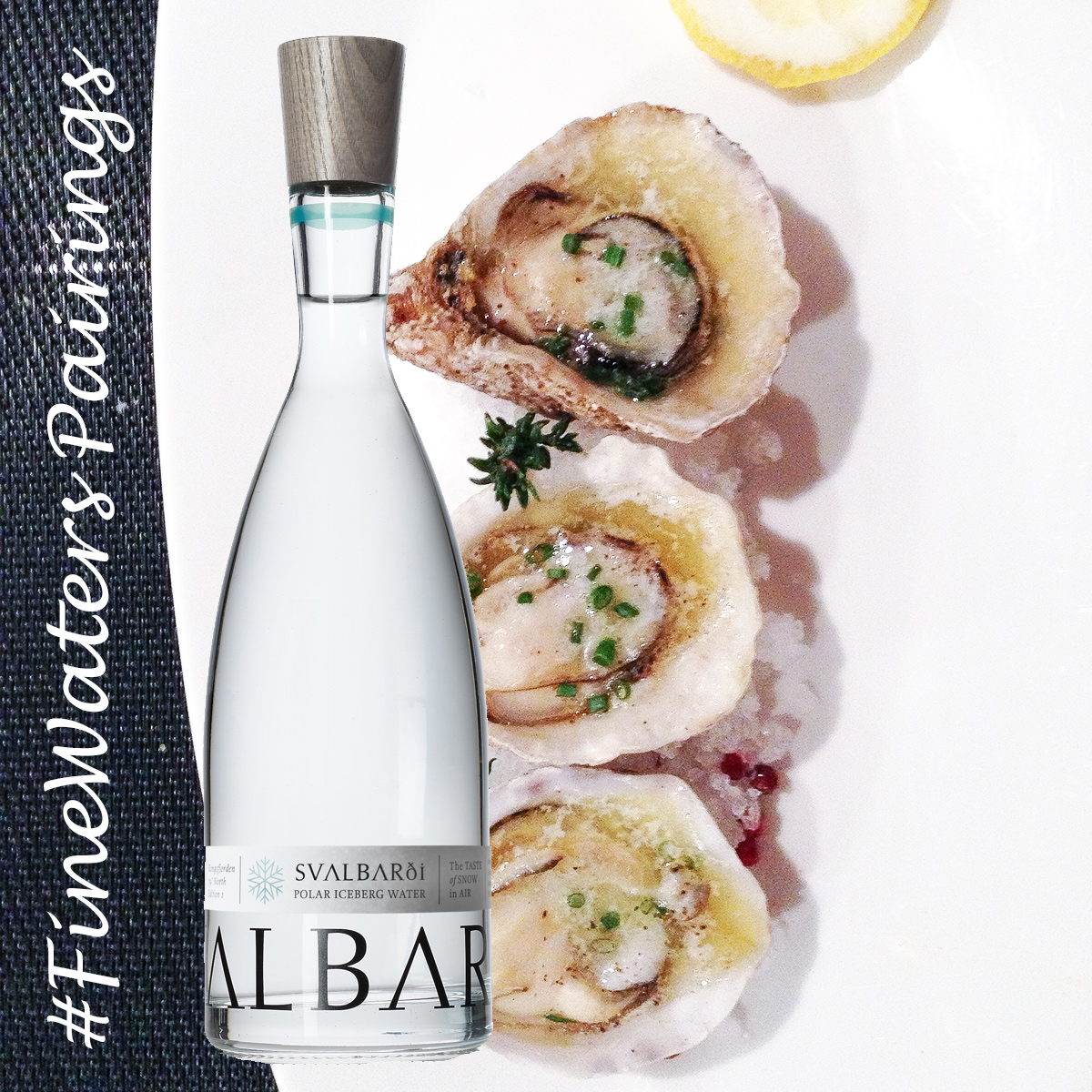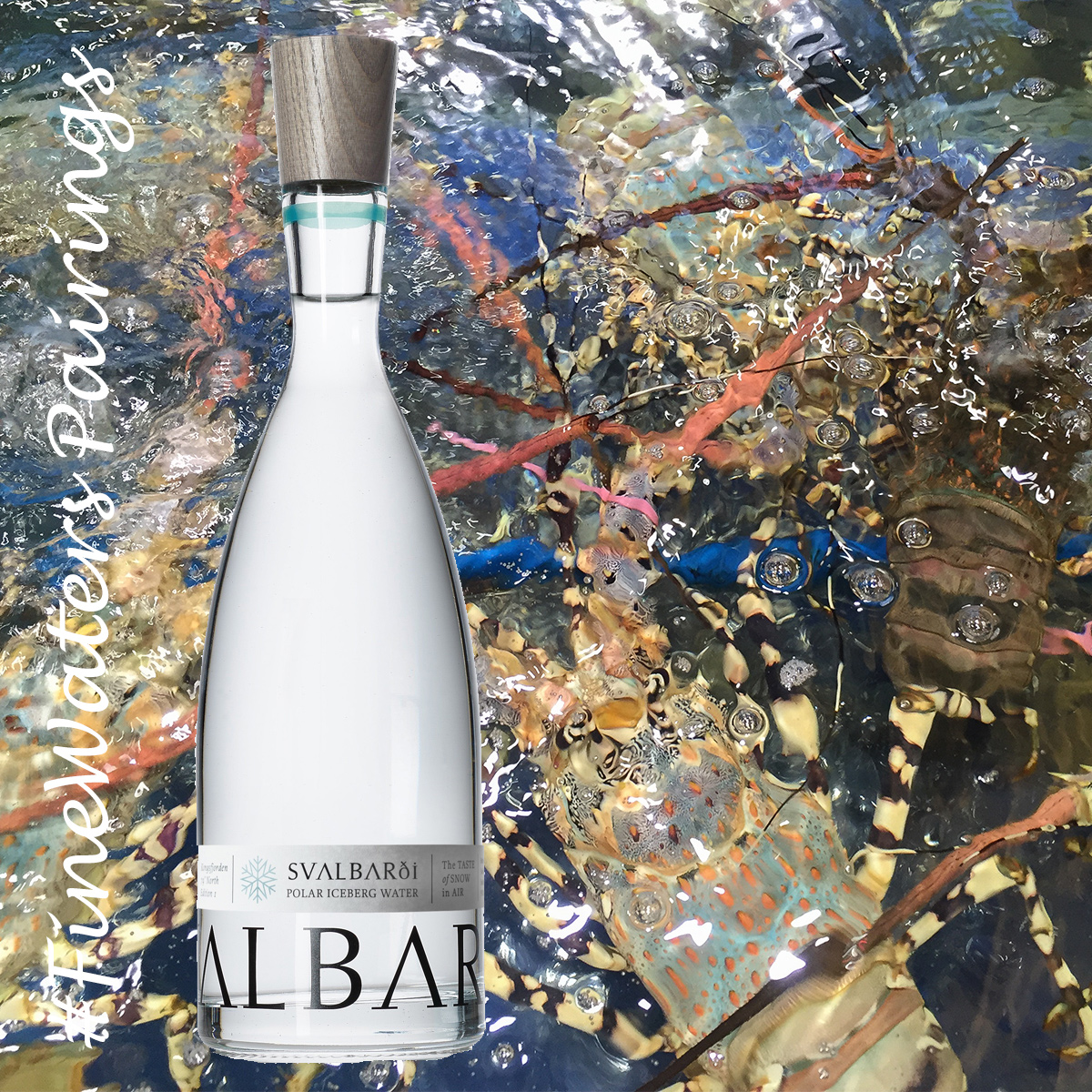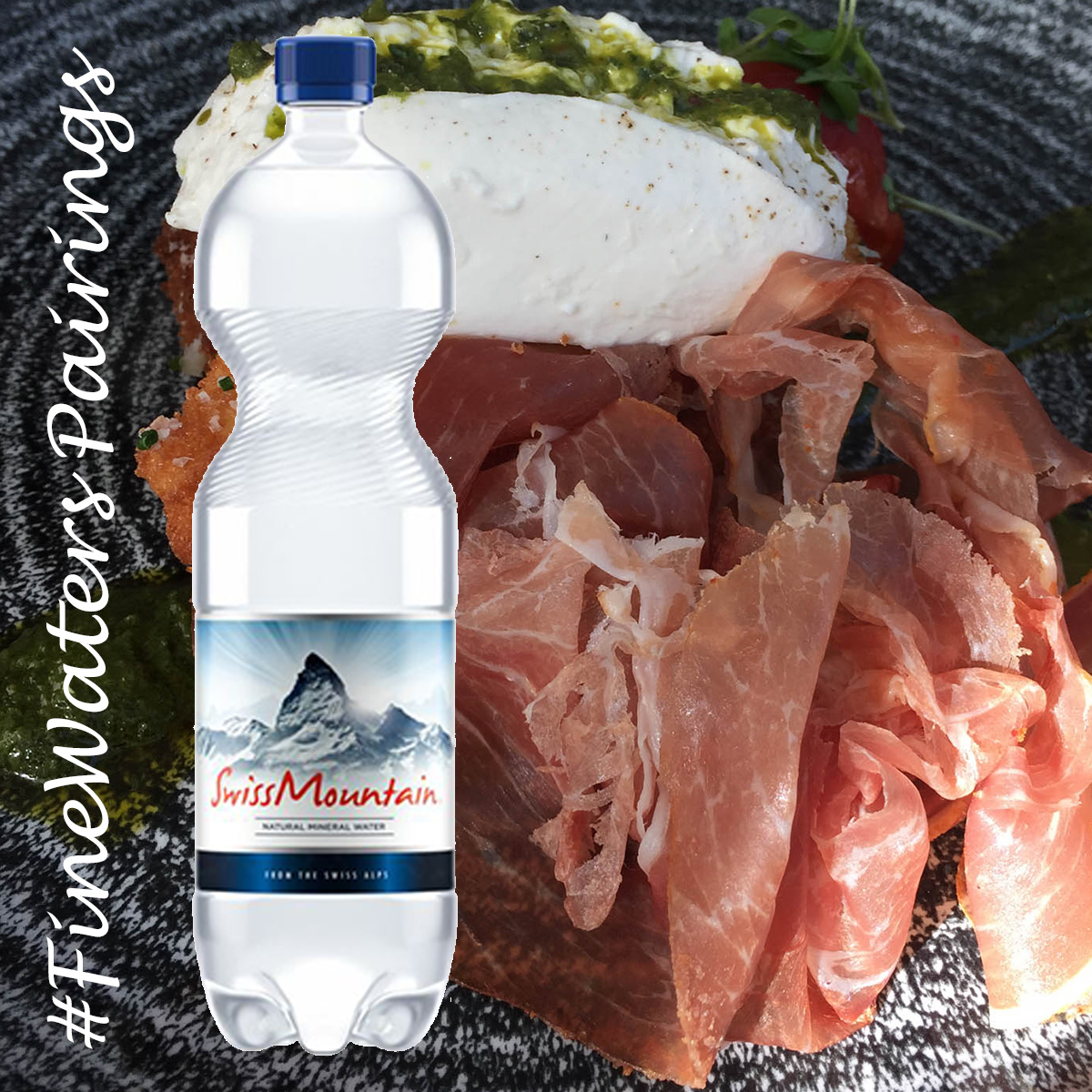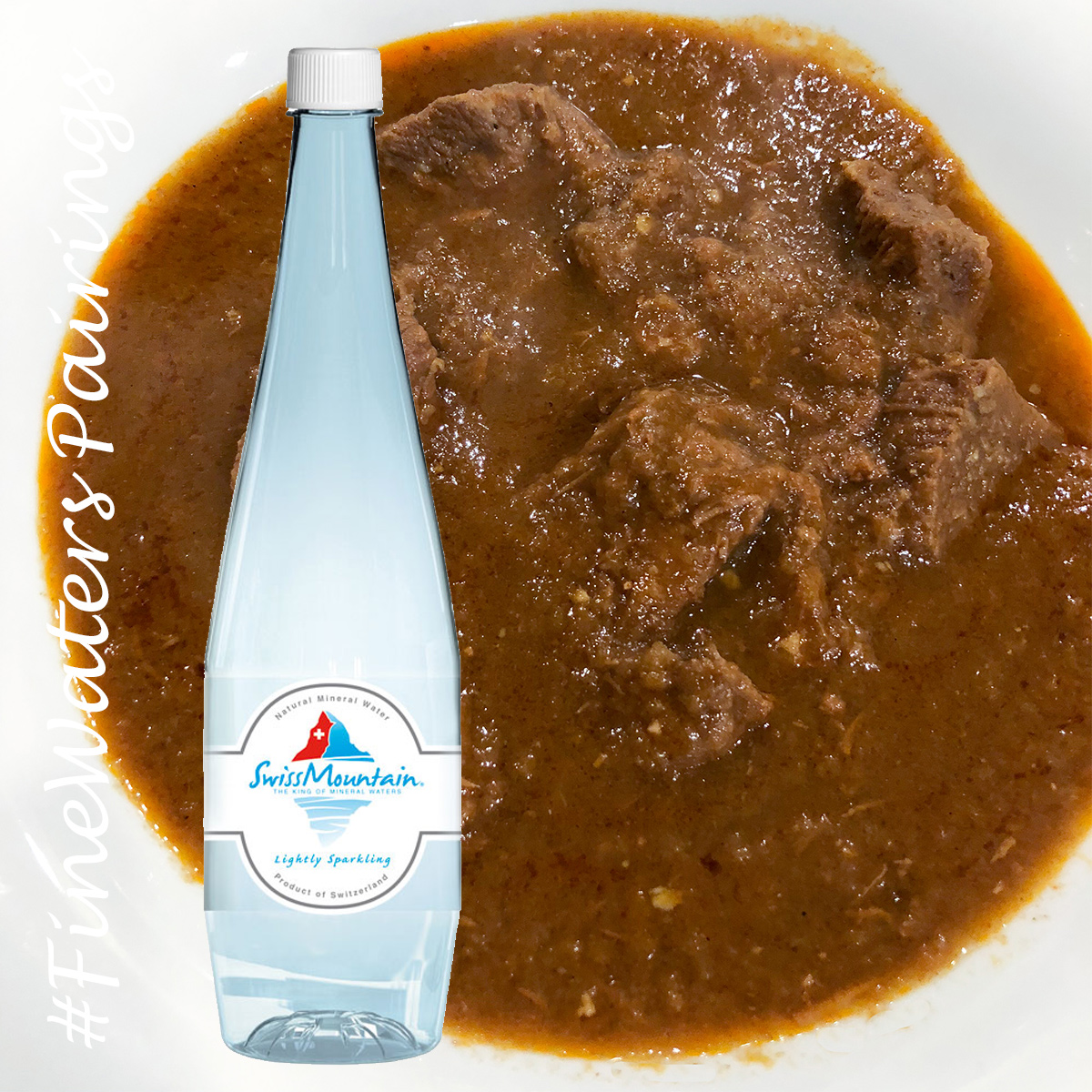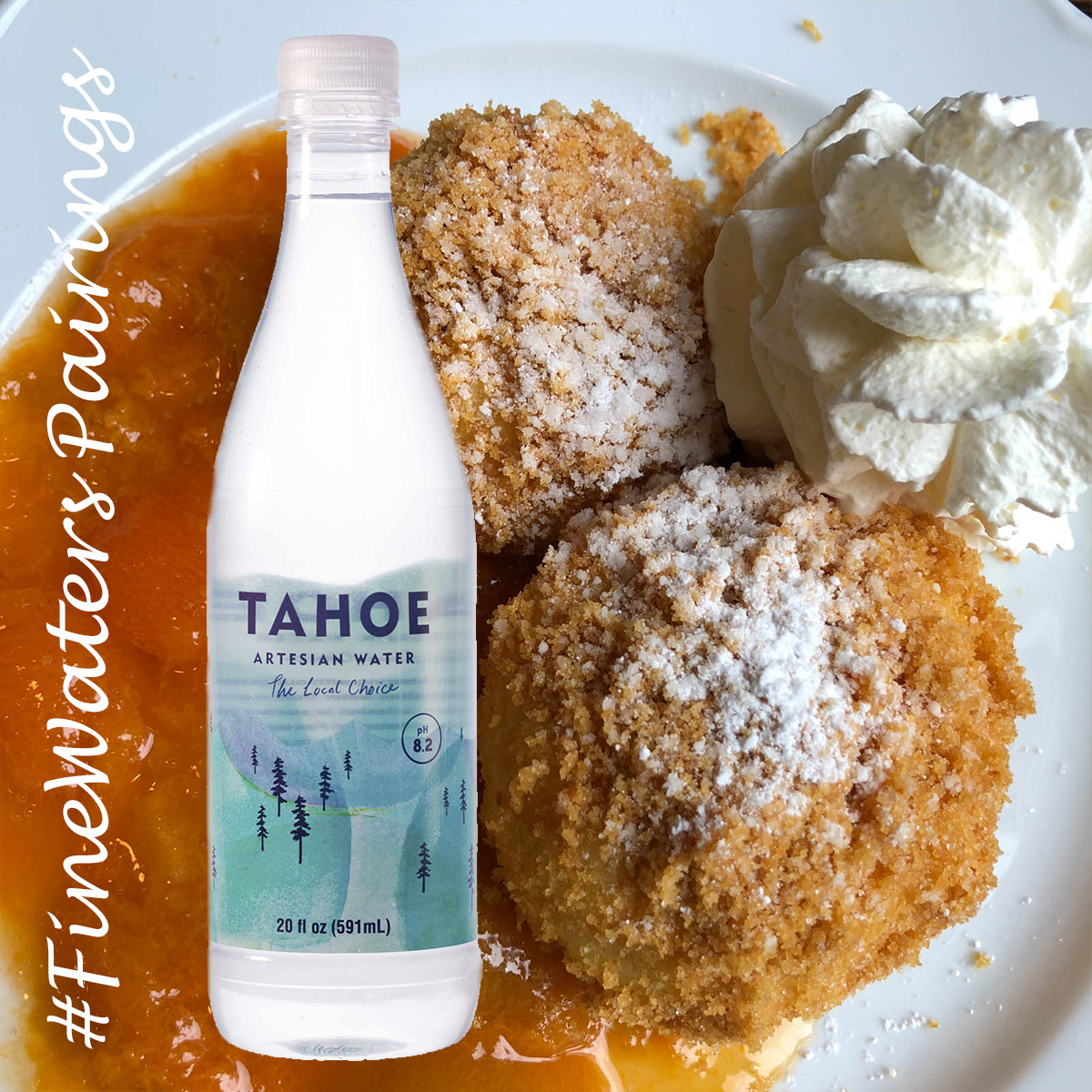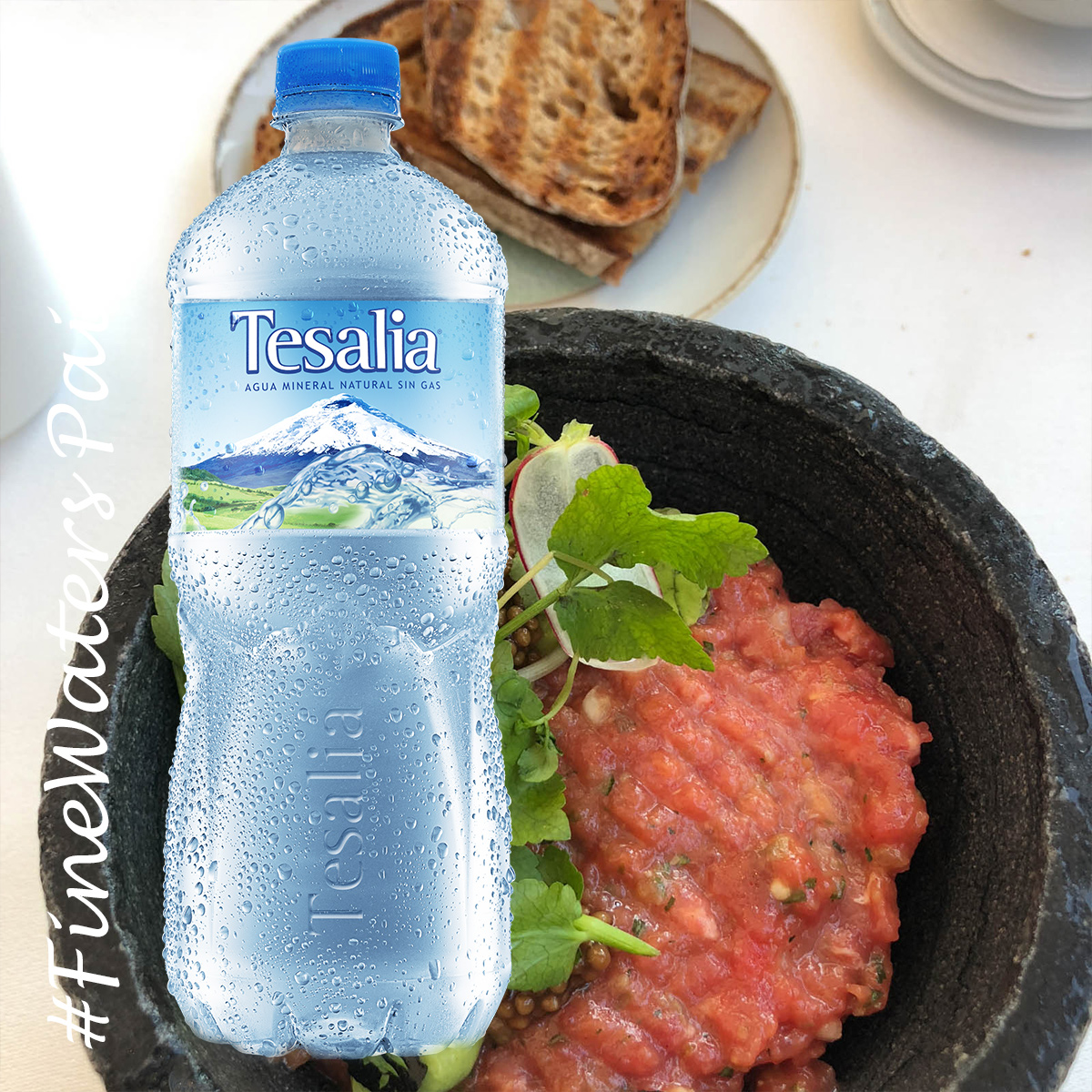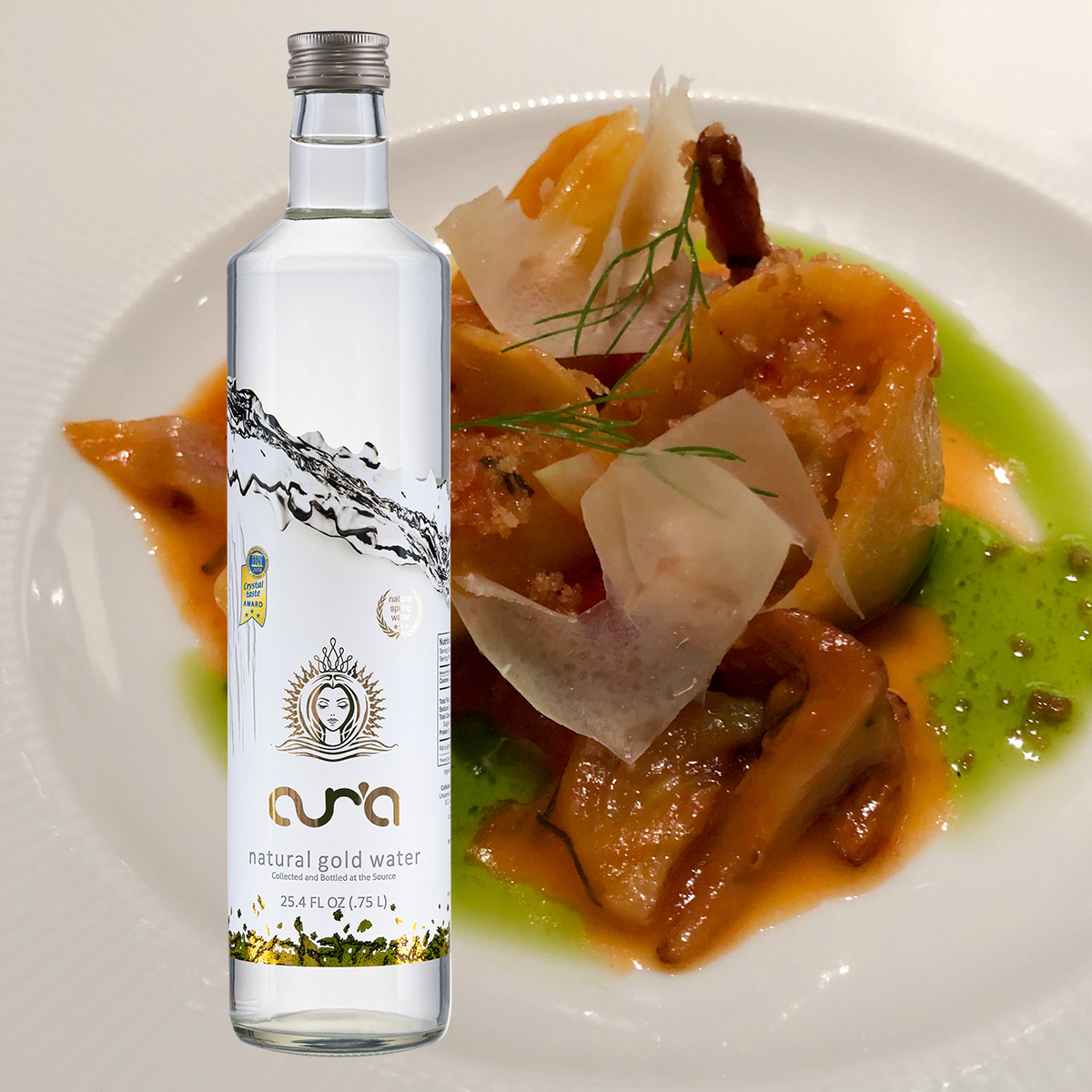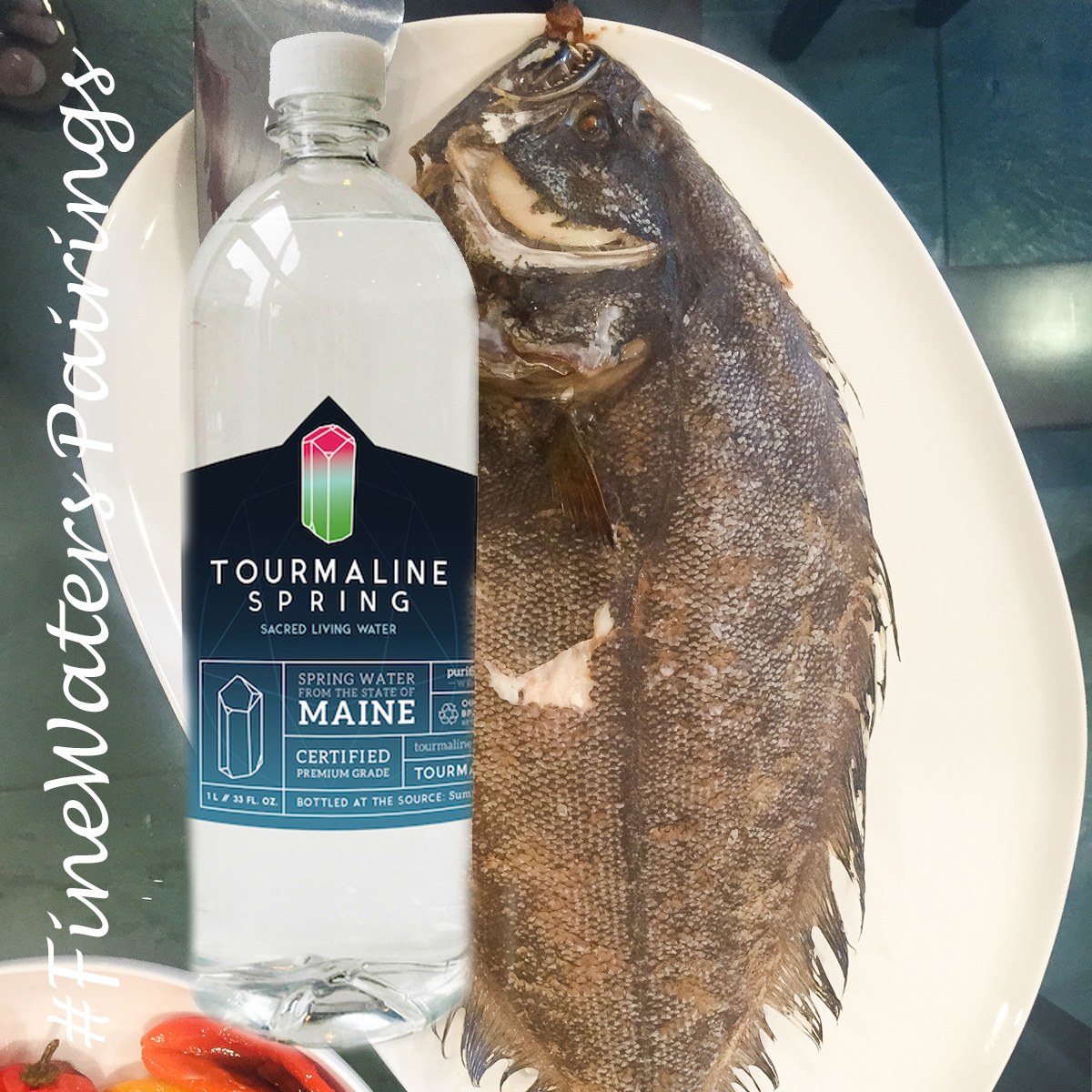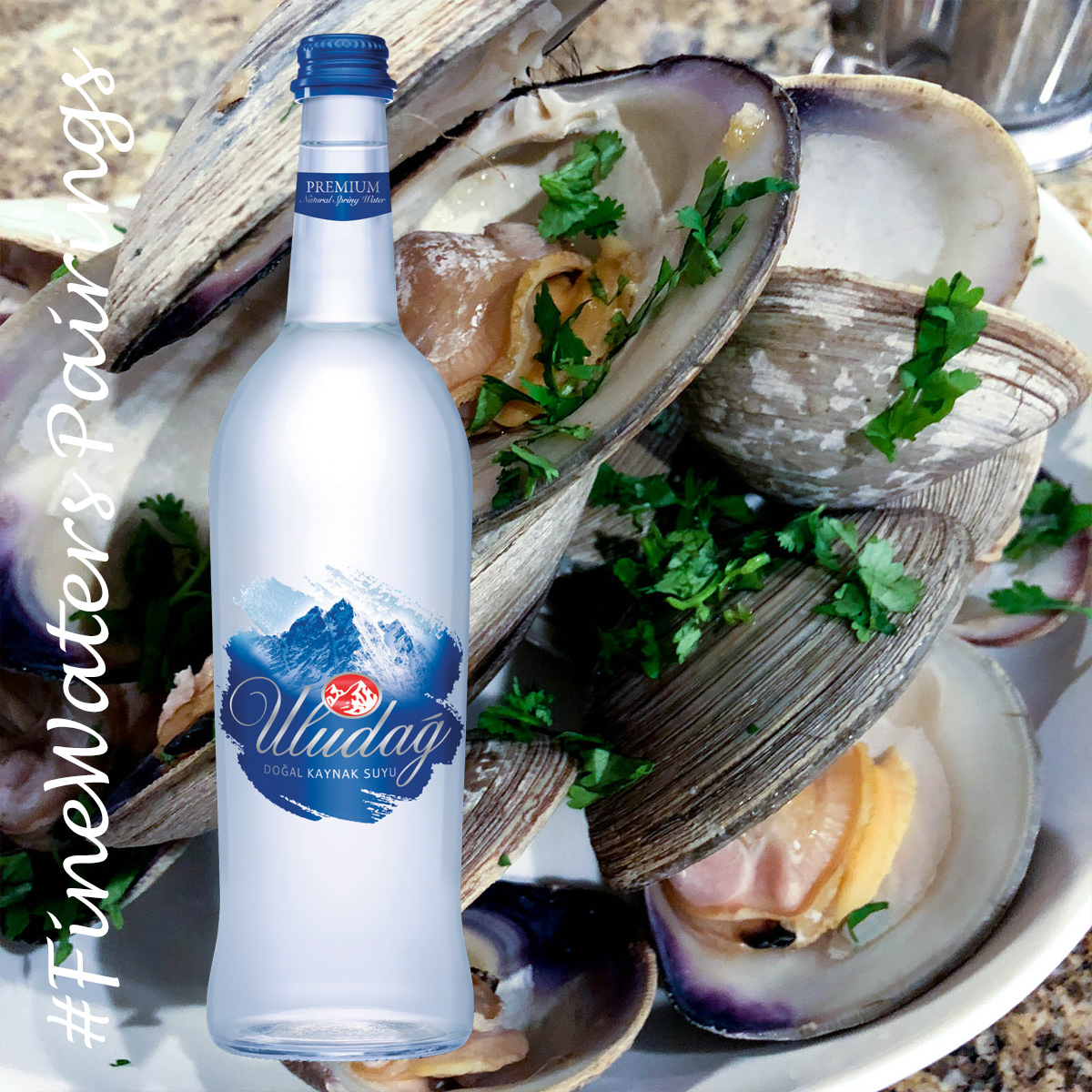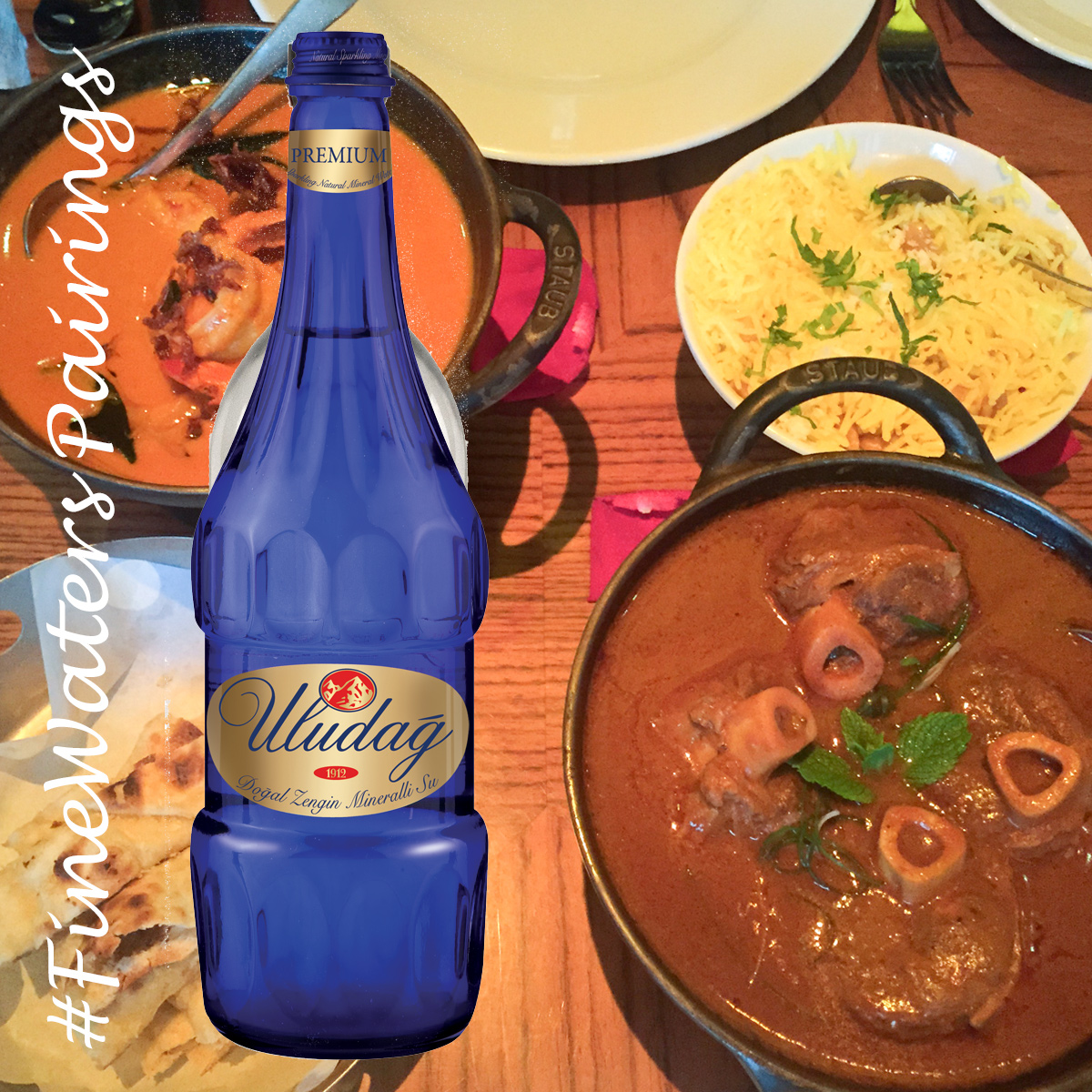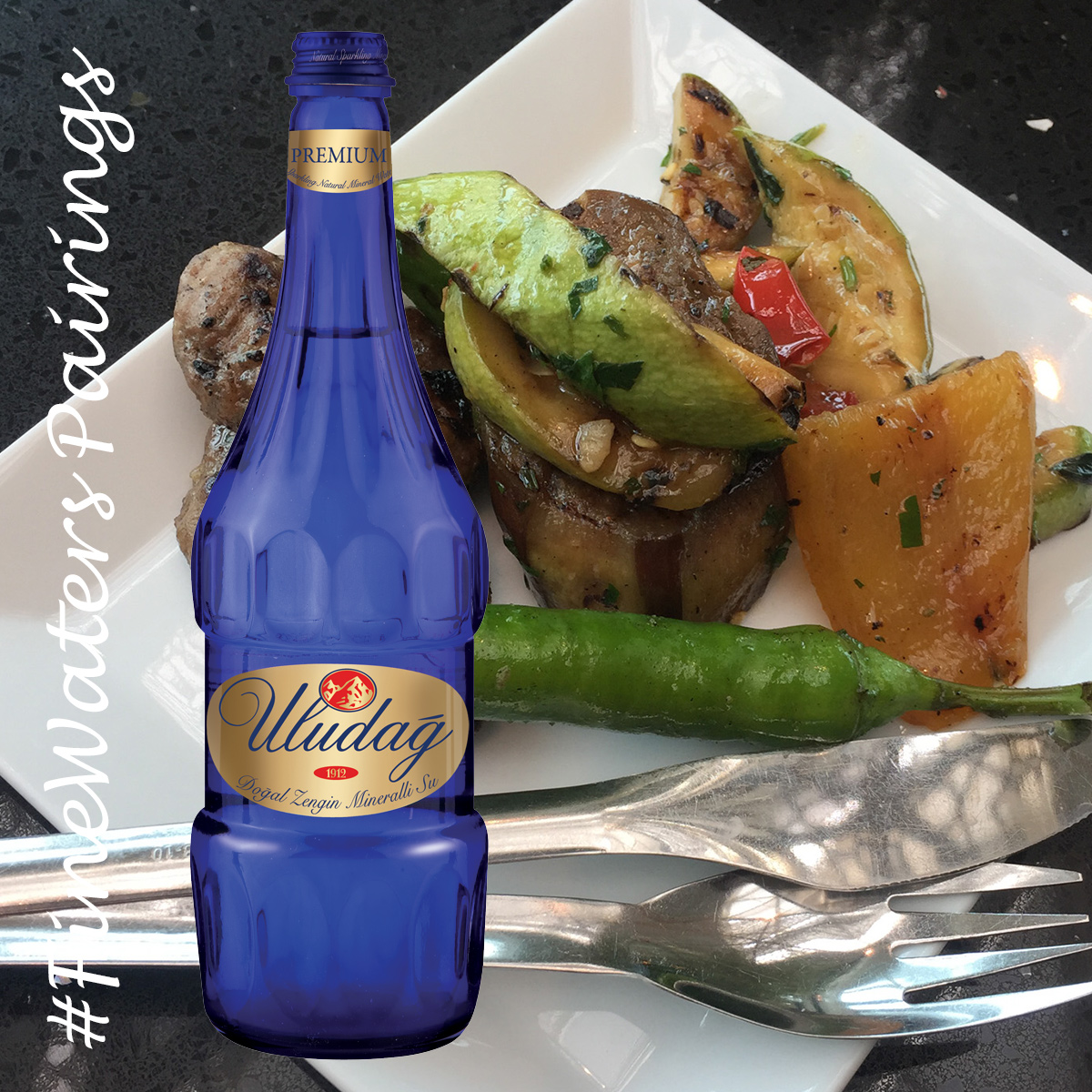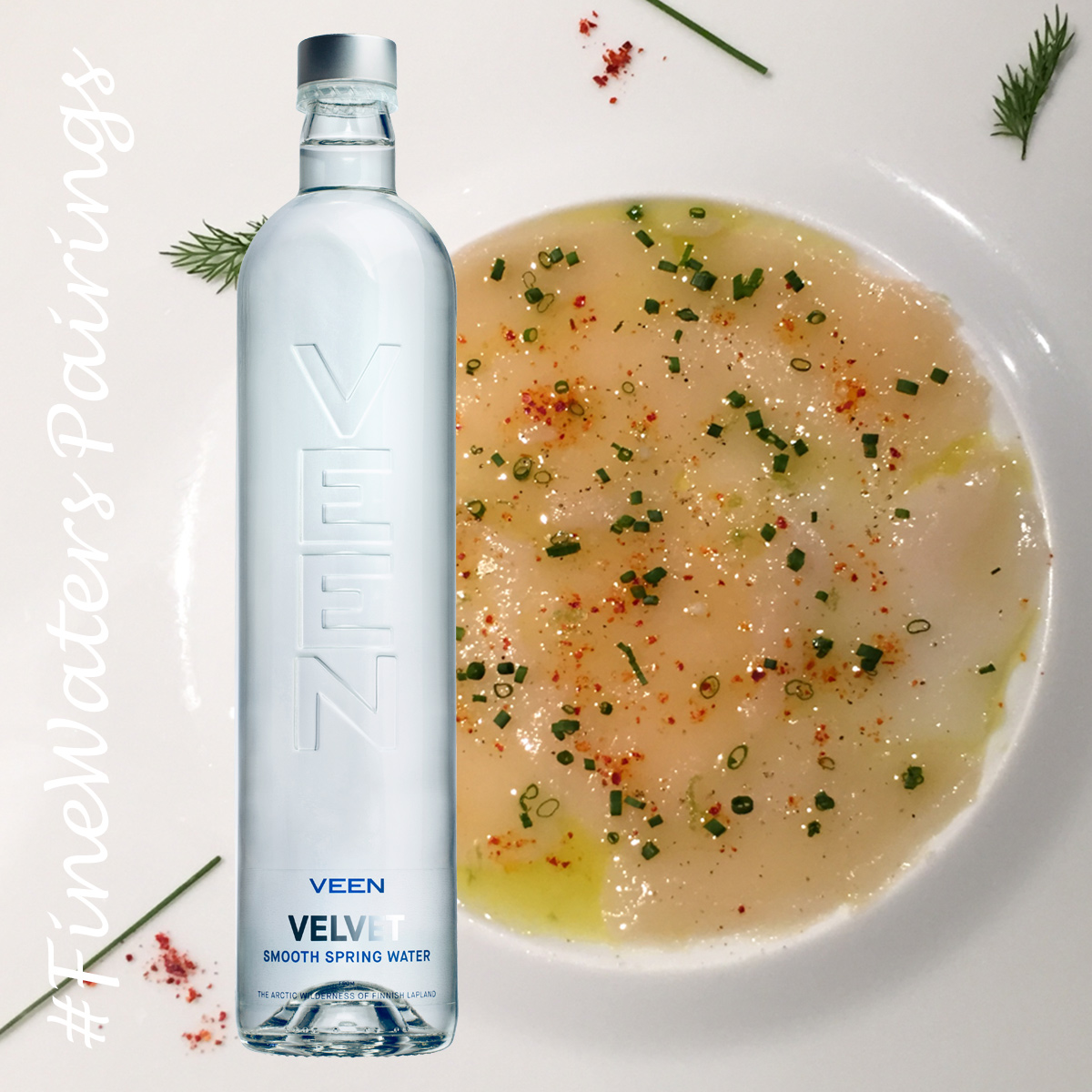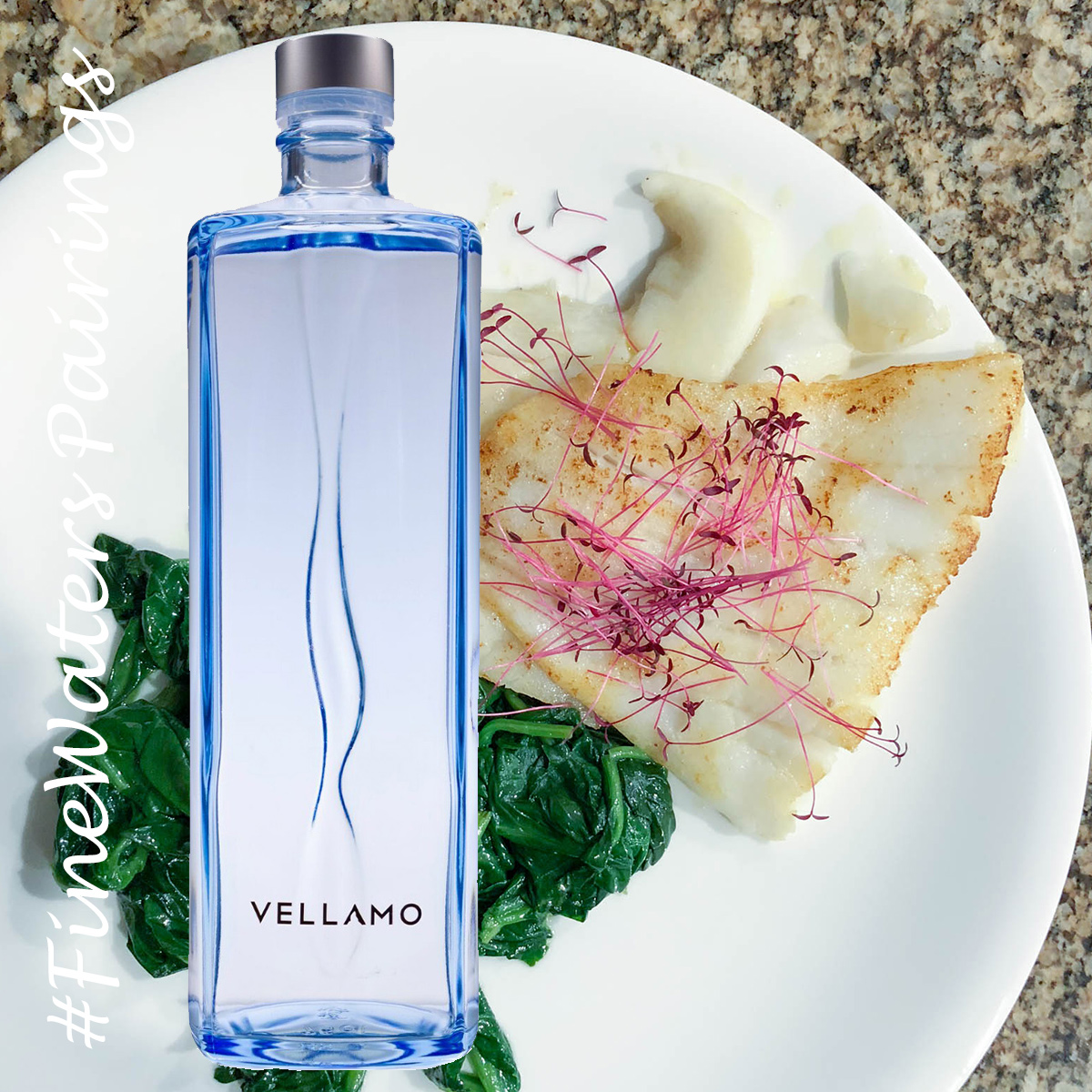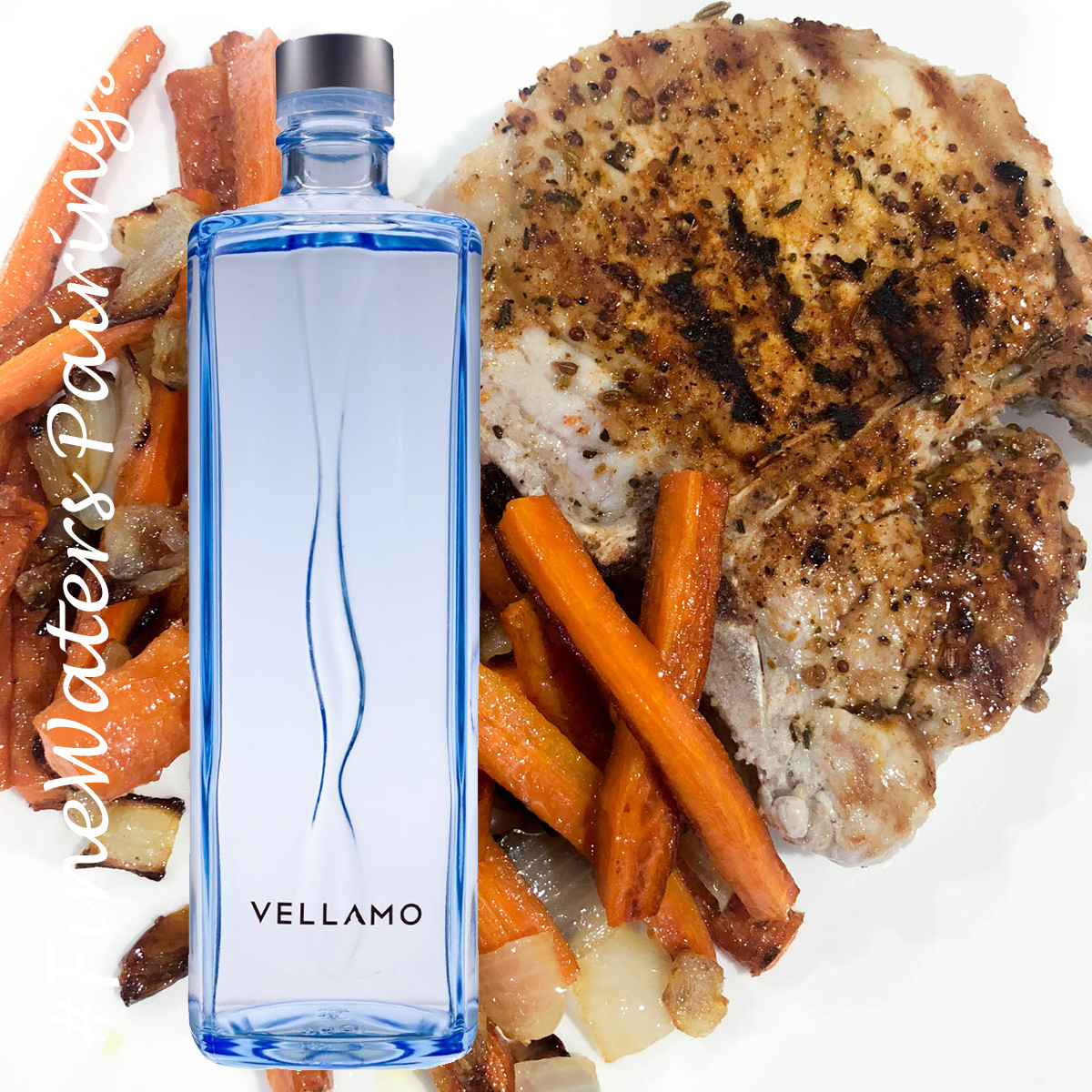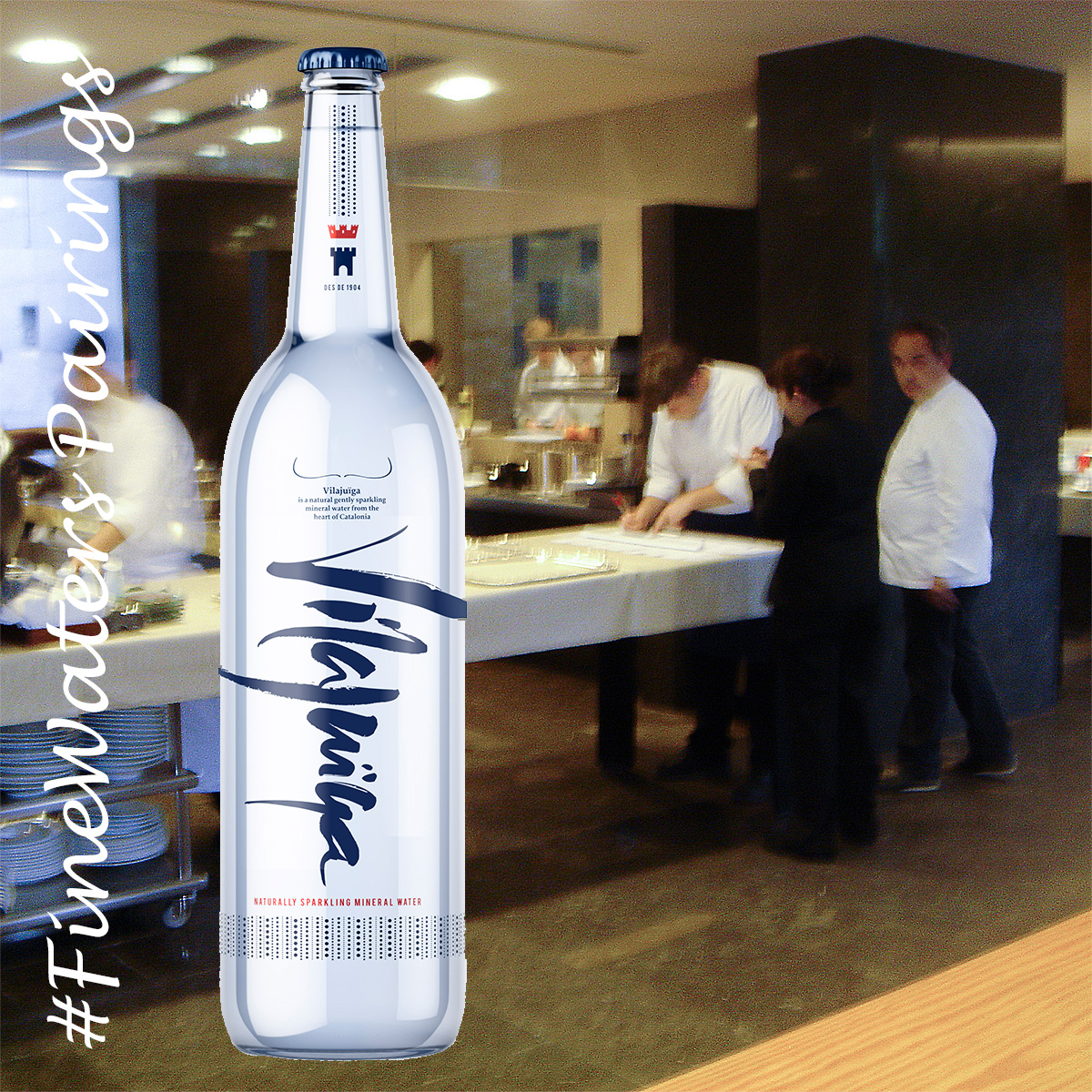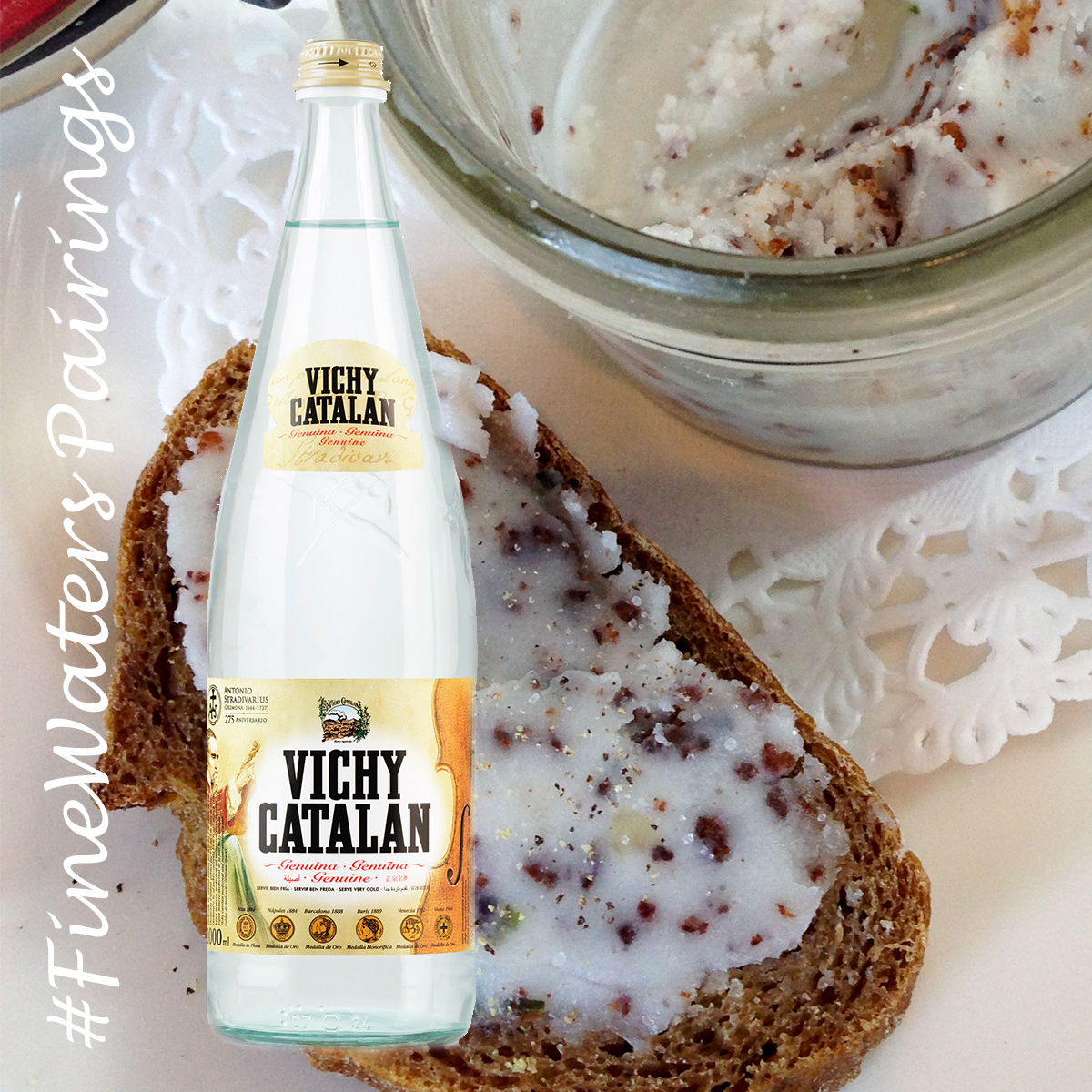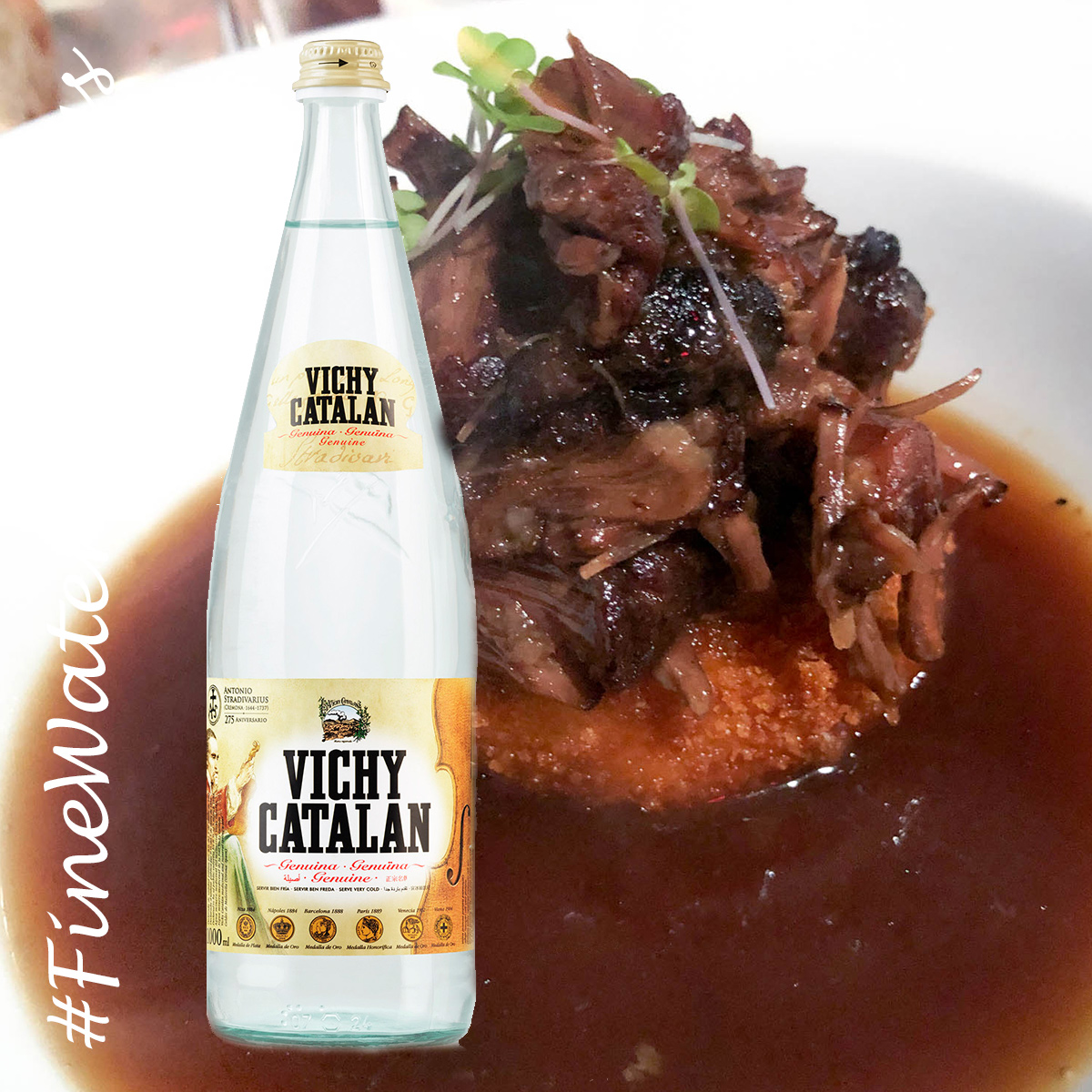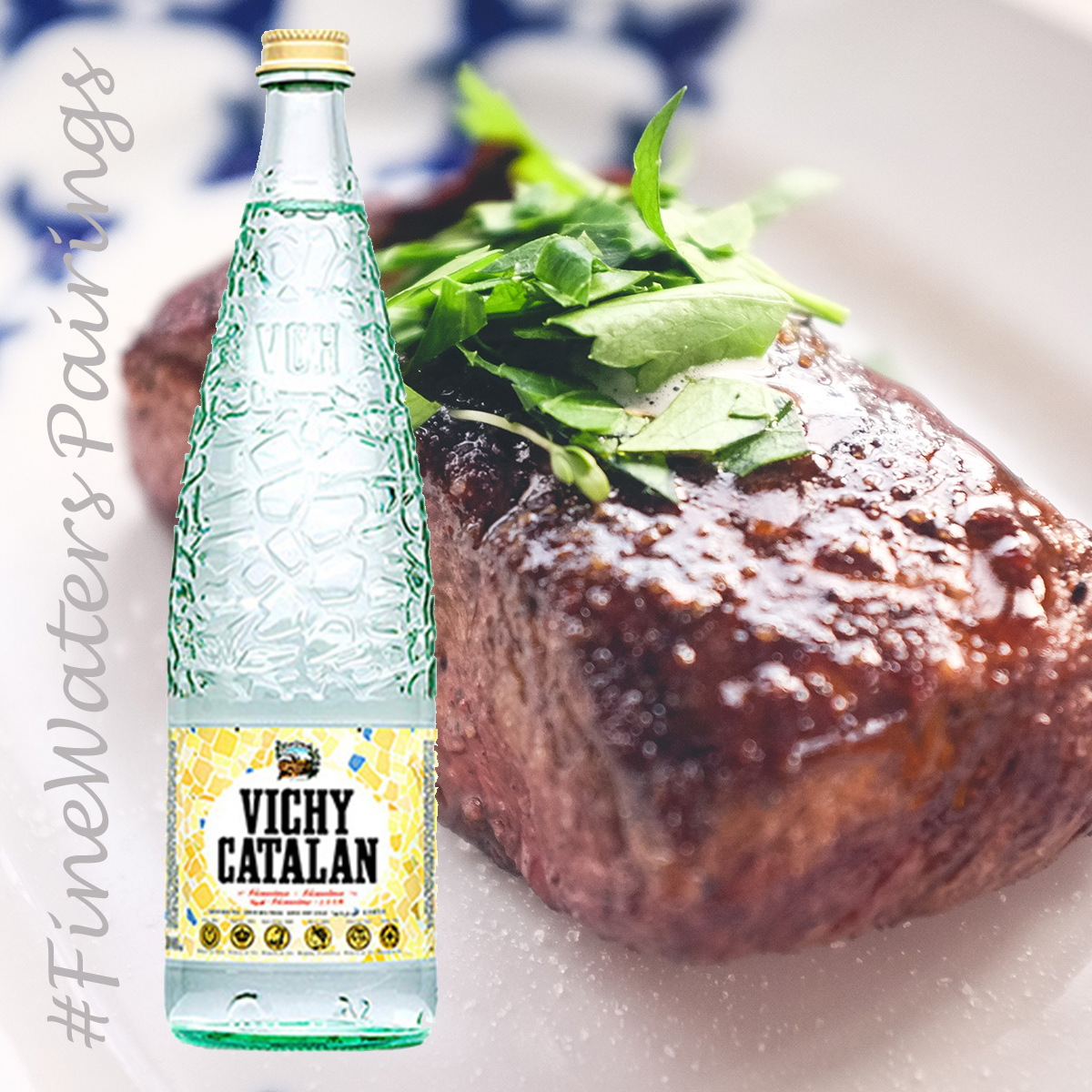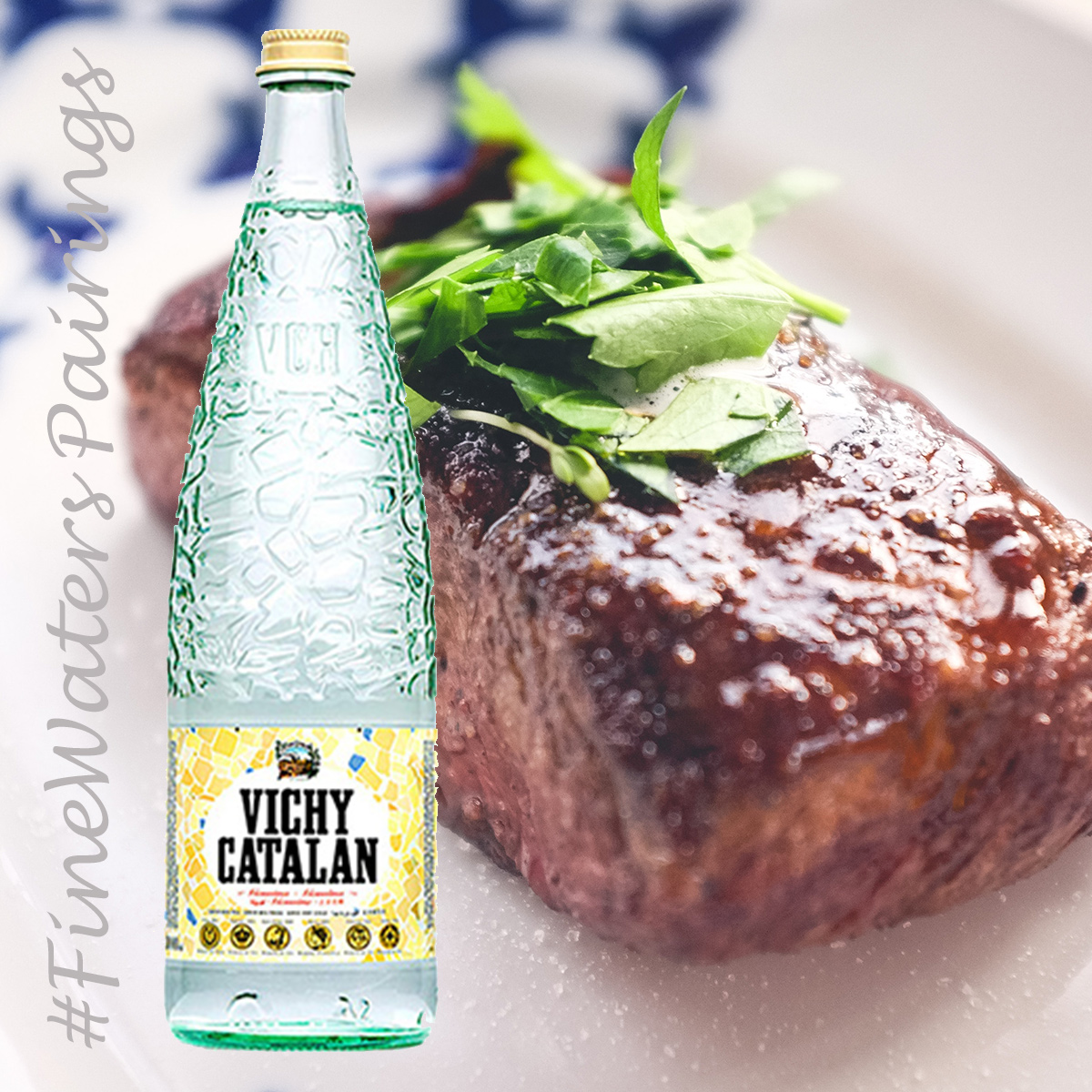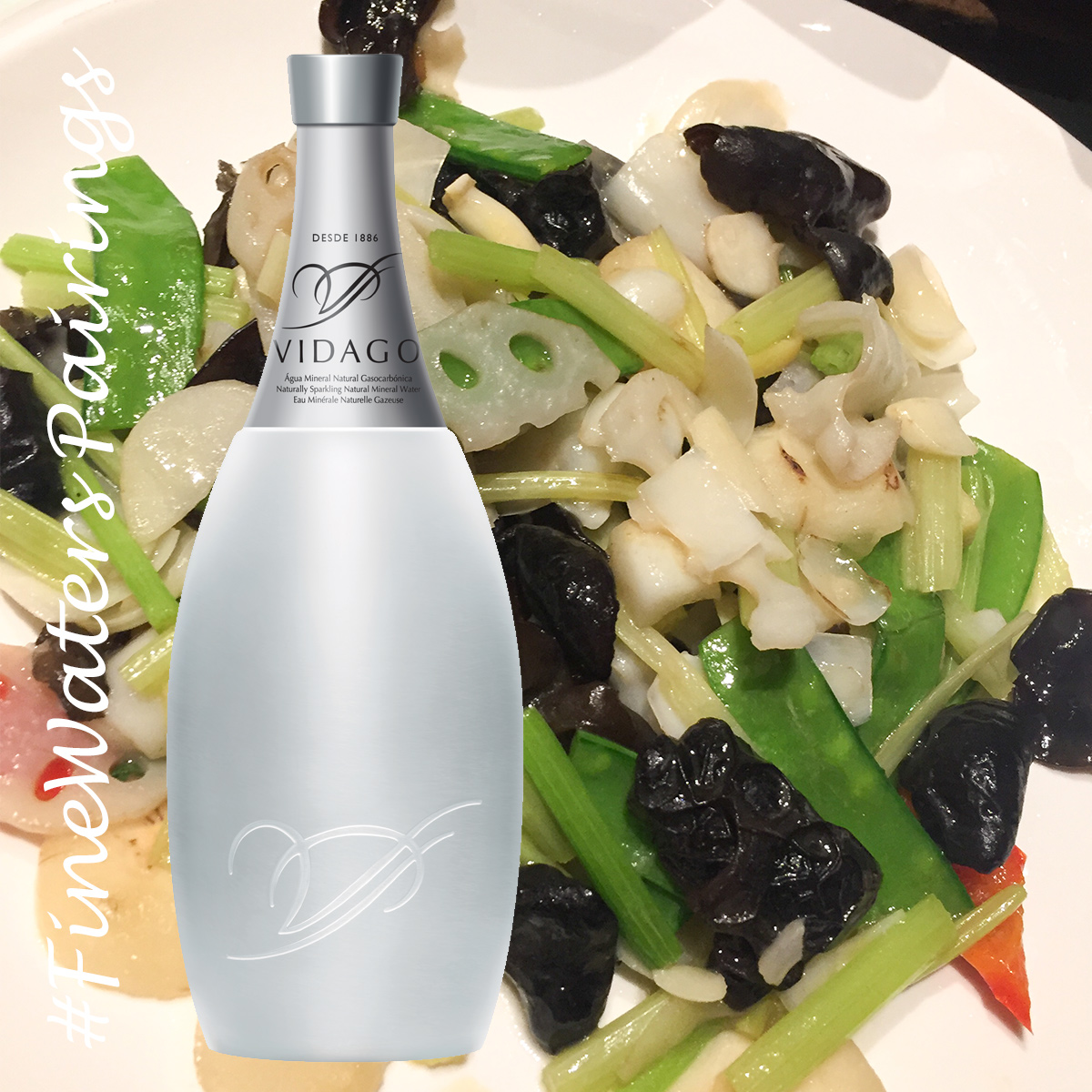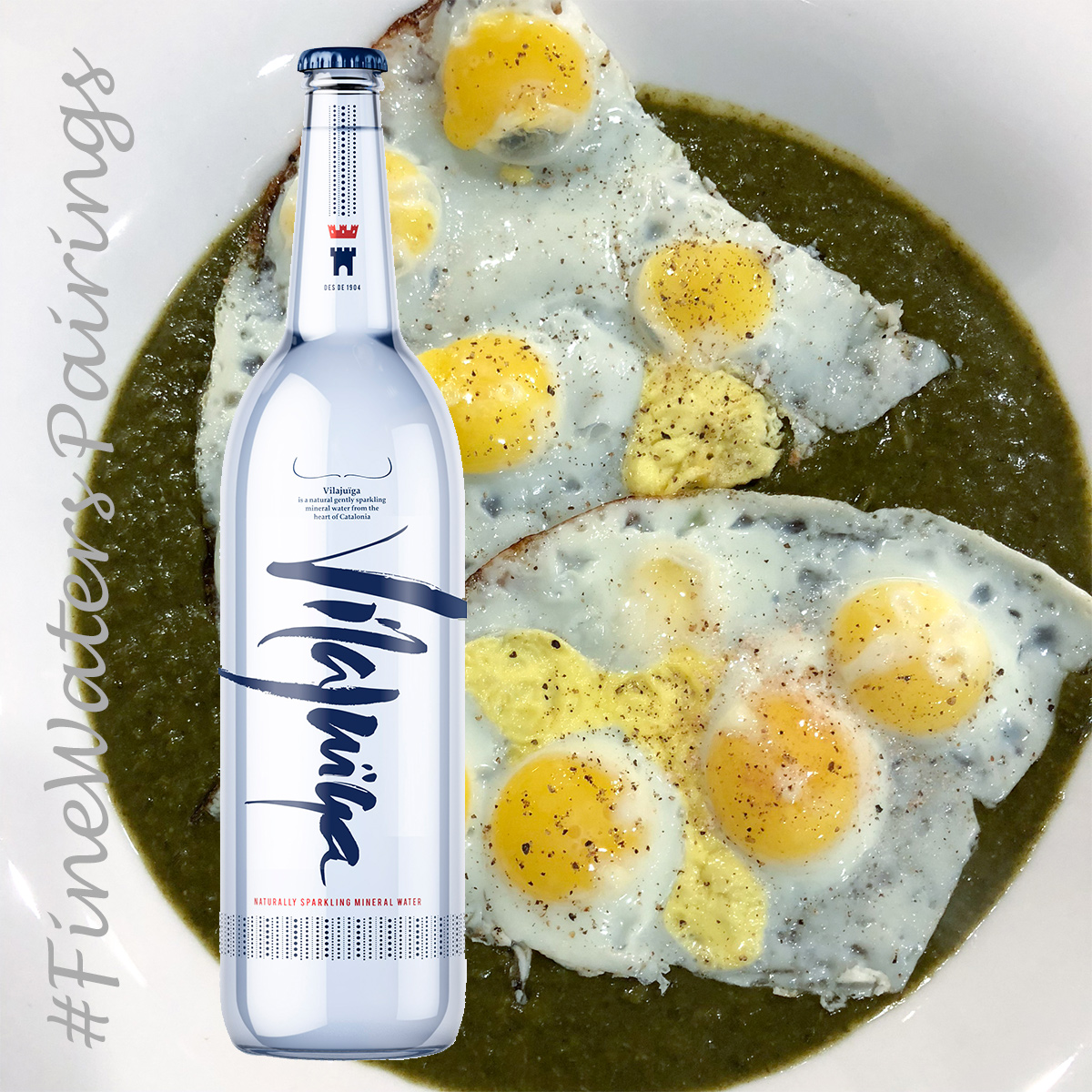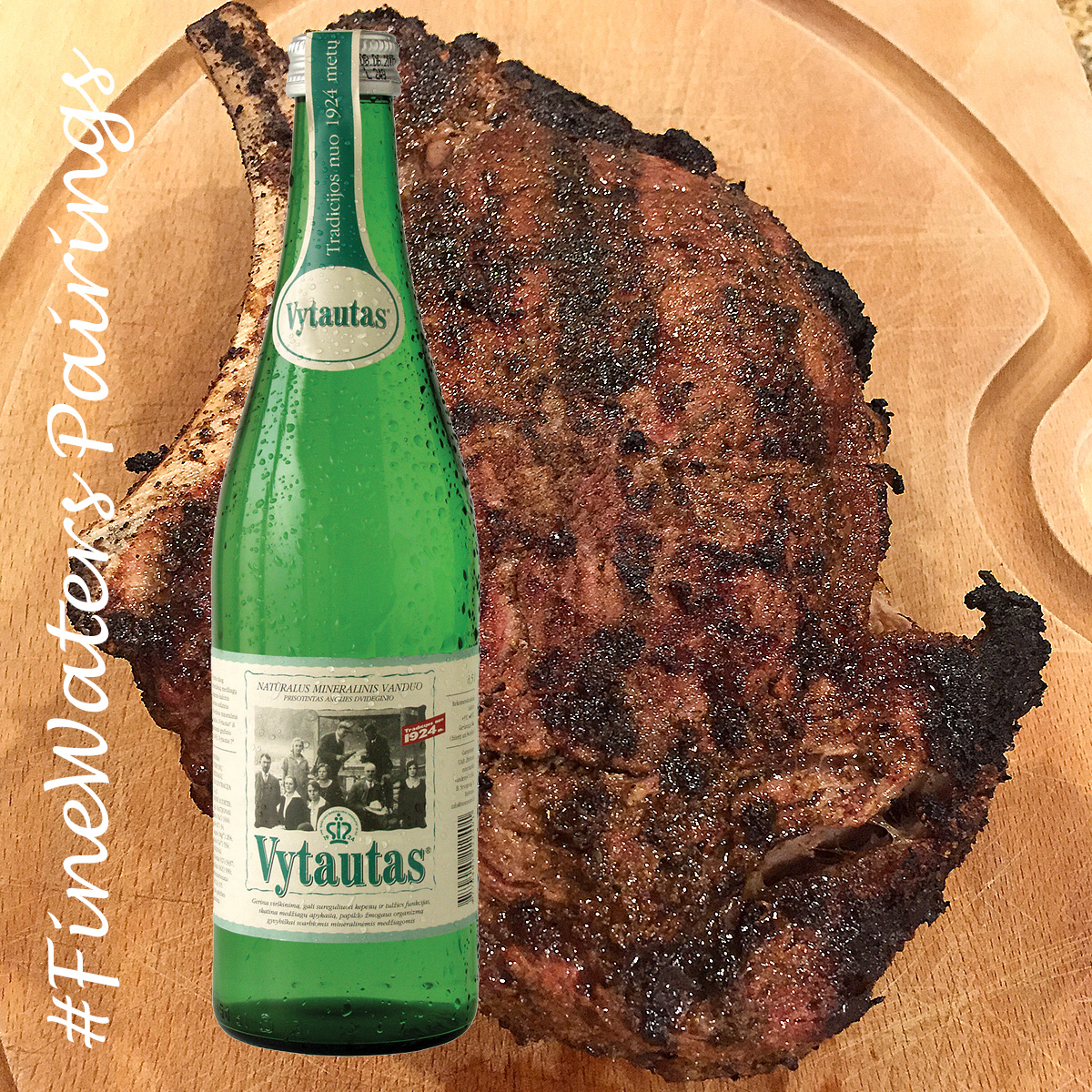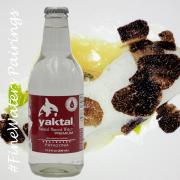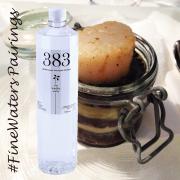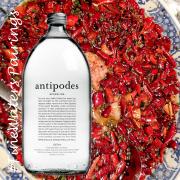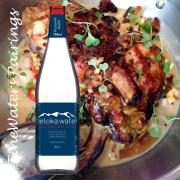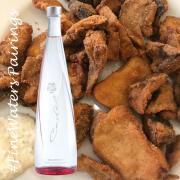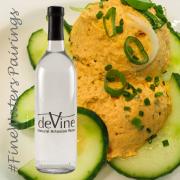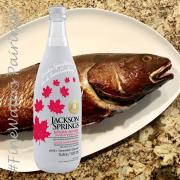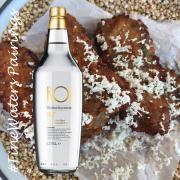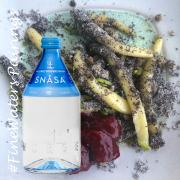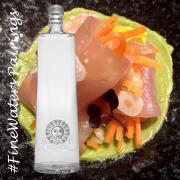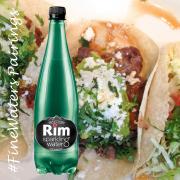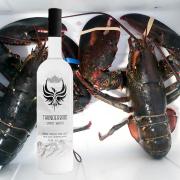There is no wrong or right as you can drink any water with your food, but as you'll see if you start pairing, some waters just work better than others. When we talk about pairing, we talk about two different things: matching and contrasting.
Matching water, or wine, for this matter, with food, means establishing harmony with the food. The principal is to harmonize the taste experience without setting a contrast or dissonance. A classic example would be raw oysters, which are very subtle — a light ocean taste and a soft, creamy texture. We would use a soft, neutral, and light super low Minerality water in a classic matching of water and food. Maybe an iceberg water to match the presentation as oysters are also a luxury item in many parts of the world and pairing them with luxury water also pairs its status. So, we match the subtle, light, and soft taste aspects and the luxury status of the oyster with similar characteristics in a still water. A proper pairing with oysters would be Svalbarði (icebergs), APSU (glaciers), and similar waters.
But there is another pairing that contrasts the raw oysters. Natural carbonated water with a classic carbonation level and a very high minerality is pretty much the opposite of the taste profile of the oyster and contrasts the flavors. It makes the oyster even softer, light, creamy by providing a canvas around it. Many naturally carbonated waters also have a high sodium level and often a metallic taste that offers further contrast. A water perfect for this experience is ROI with its luxury presentation and high TDS of 8,000mg/l.
I have tried this pairing many times, and it is incredible how different the same oysters taste when matched or contrasted with different waters. It is probably similar to pairing oysters with a Chablis or contrasting them with a Guinness and other stouts for a saltiness and bitterness disparity.
Let's look at another classic dish to understand the food and water pairings. This time, we imagine a dry-aged ribeye steak perfectly grilled to 136°F (57°C) over charcoal. The salt crystals from the finishing salt glister on the surface. It's not light or subtle. The flavor and smell are strong and bold, as is the texture. Here, we need a water that can stand up to the flavors and mouthfeel. We need a very high minerality water and, usually, this means naturally carbonated, with the big soft bubbles perfectly matching the texture of the meat. Classic pairings would be Pedras (TDS 2,800mg/l) or Vichy Catalan (TDS 2,900mg/l), and many of those waters also have significant sodium levels, which are terrific for this dish.
Many dishes that we eat fall between the two extremes mentioned, and we have a wide variety of waters that can add to the epicurean experience of what we eat.
The mouthfeel sensation of the whole dish should be matched with the carbonation level of the water. The mouthfeel generated by the bubbles should be matched with the mouthfeel of the plate. Loud, big, bold bubbles overpower subtle dishes while still water might be too great a contrast with crispy food. Bigger bubbles would stand up better to the mouthfeel of such a dish. An alternative epicurean pleasure can be achieved by carefully contrasting the mouthfeel of a dish with a water's carbonation. Sushi with an effervescent or even light carbonated water is a terrific example. The dominant food items of the dish should be matched with the mineral content of the water. Low TDS waters have a light, sometimes crisp, perception, while higher TDS levels give the water some weight and substance. High levels of sodium (salt), bicarbonate, and silica (or their absence) can also impact the perception of the water. Use sodium-free water with caviar or water with a high bicarbonate level for cheese. Softer waters — low in calcium and magnesium — with higher silica levels can display an excellent sweet softness that works well with some desserts.
Fine-tune the drinking experience with the water's acidity or alkalinity. A neutral pH works well with anything. Sometimes, a sweet perception is possible in waters with slight alkalinity while waters with a very high pH may demonstrate a silky texture and a very subtle bitterness. Try matching acidic water with fatty food or seafood. The pH factor's contribution to food and water matching is overrated — only on the outer ranges of the spectrum — less than 6 or more than 8 — does it play a more significant role.
The hardness of the water also plays a significant role in pairing. Soft water is exactly that — soft — and usually lingers on the aftertaste. Hard water feels shorter and more focused.
Another simple rule for matching water with food is to consider what wine you would drink with the dish. Super low and low TDS waters are akin to white wines, from crisp green to more substantial whites. Medium to high minerality waters start to mirror light to medium reds, and the very high minerality waters feel like big, bold red wines. All the food and water pairings discussed above are for water and food only. No wine. As soon as you consume food, wine, and water, different rules apply.



